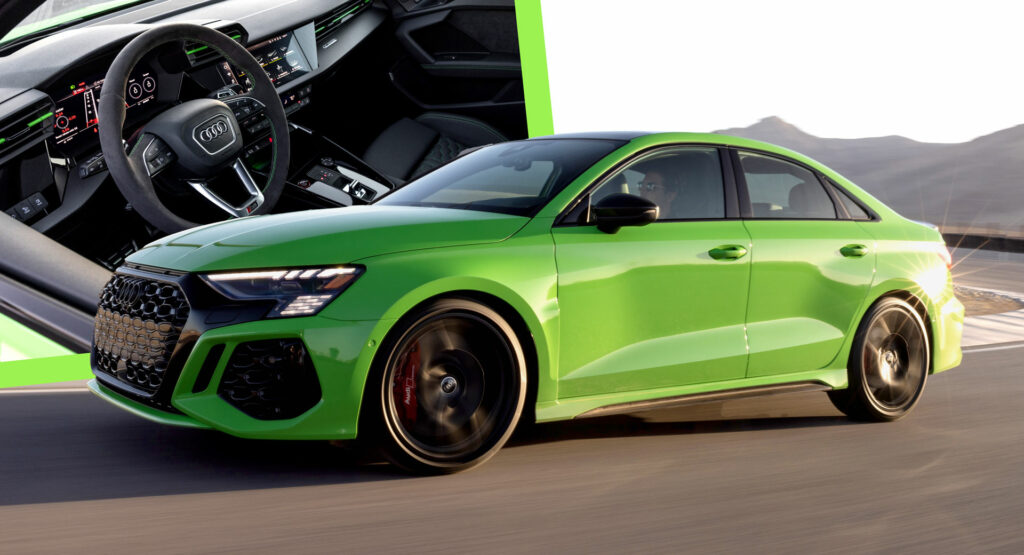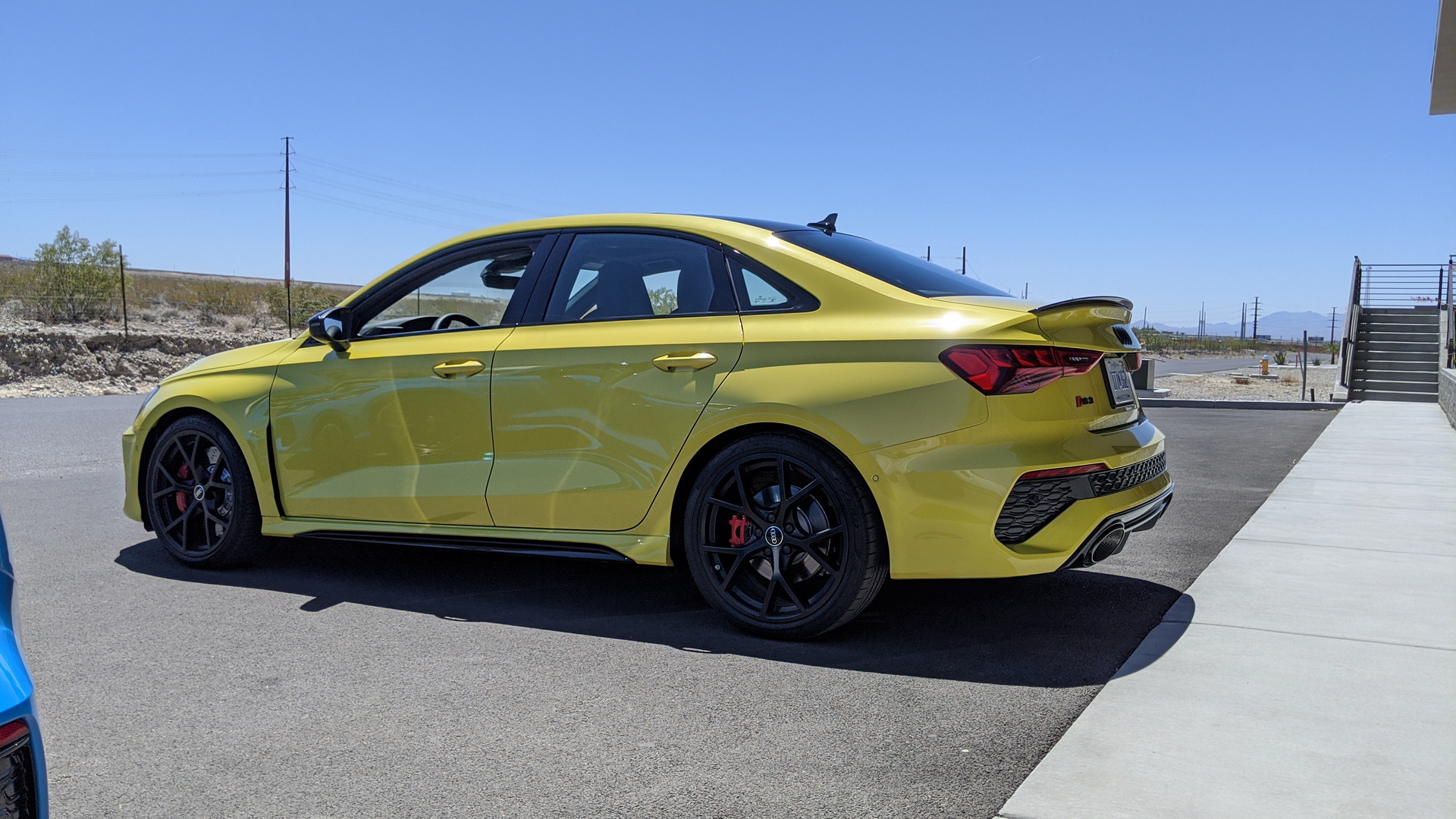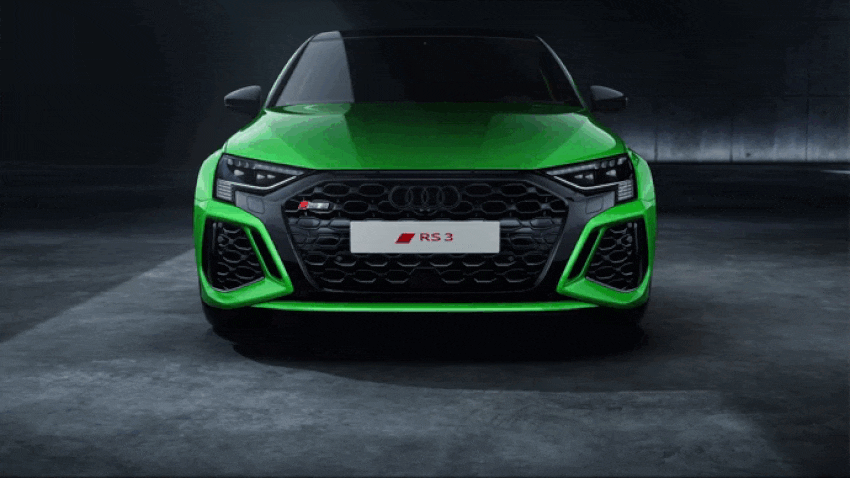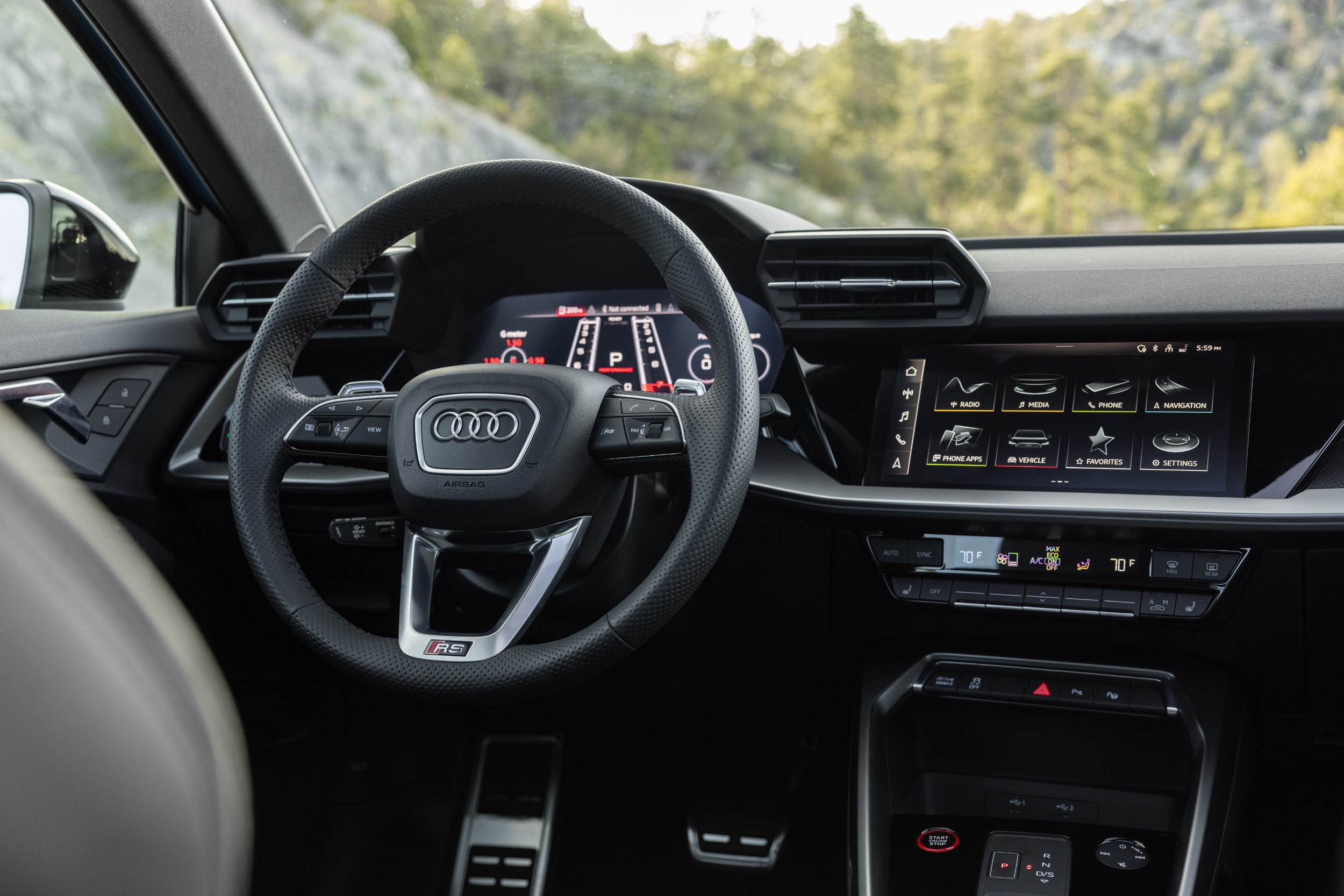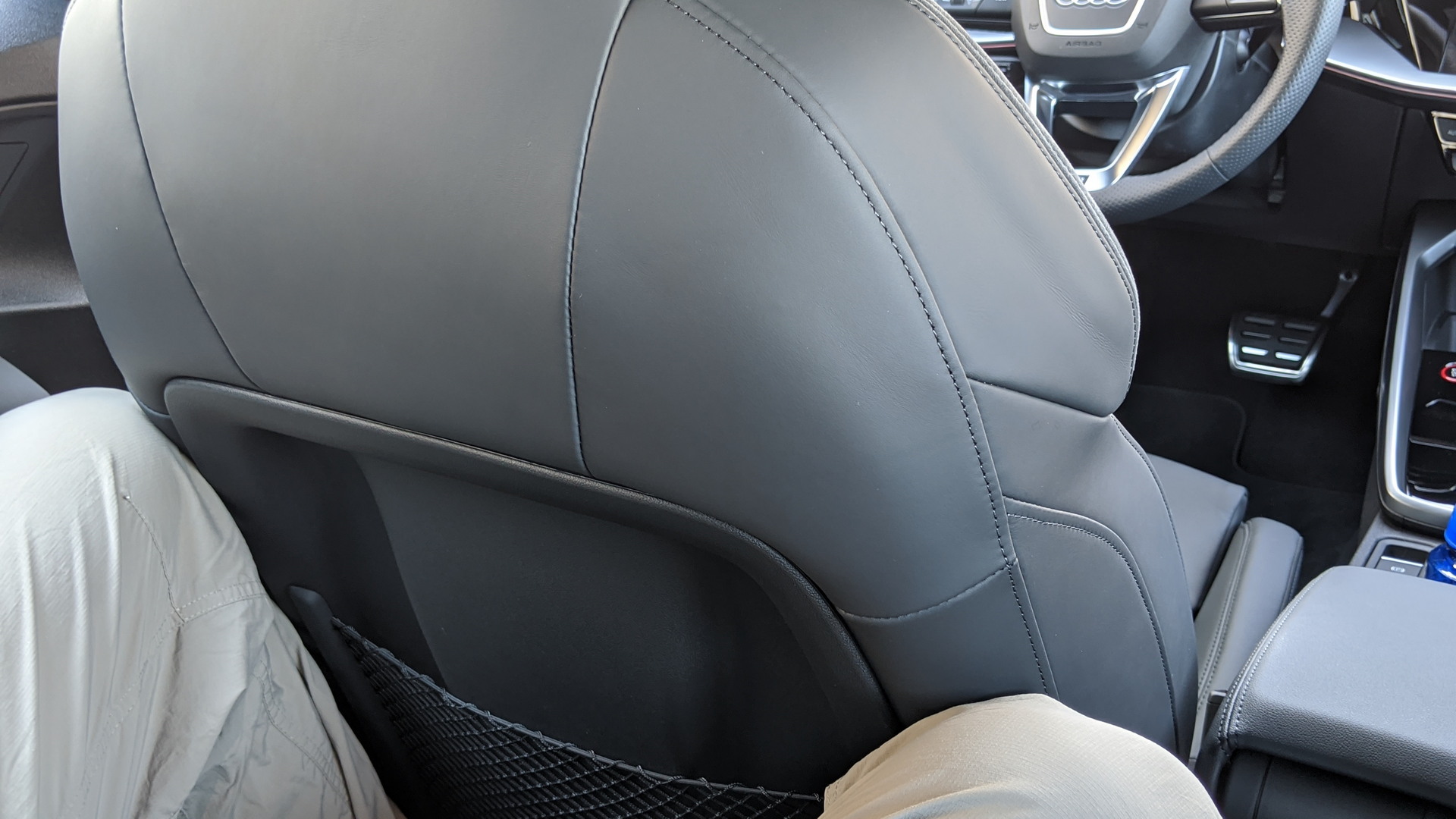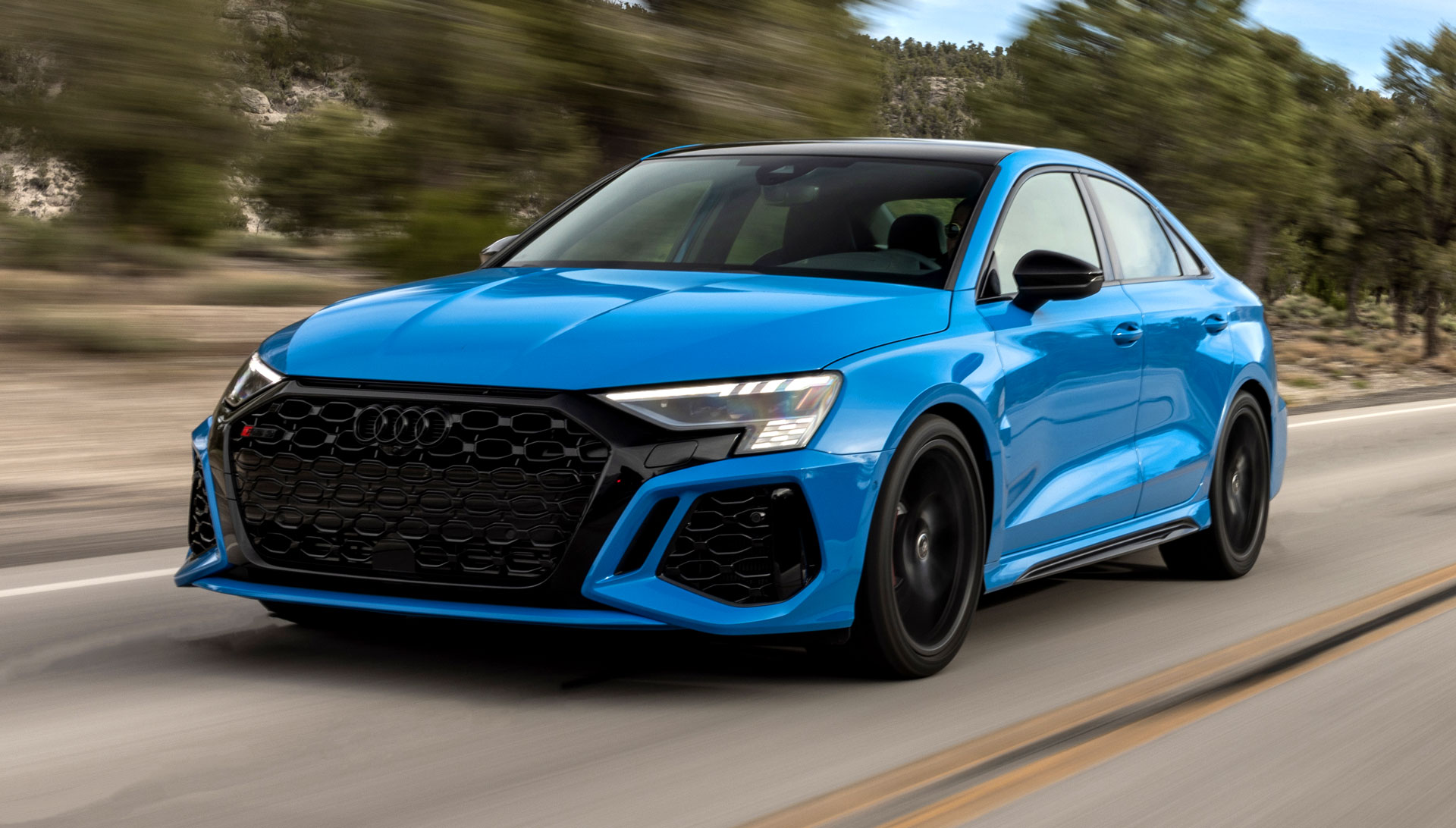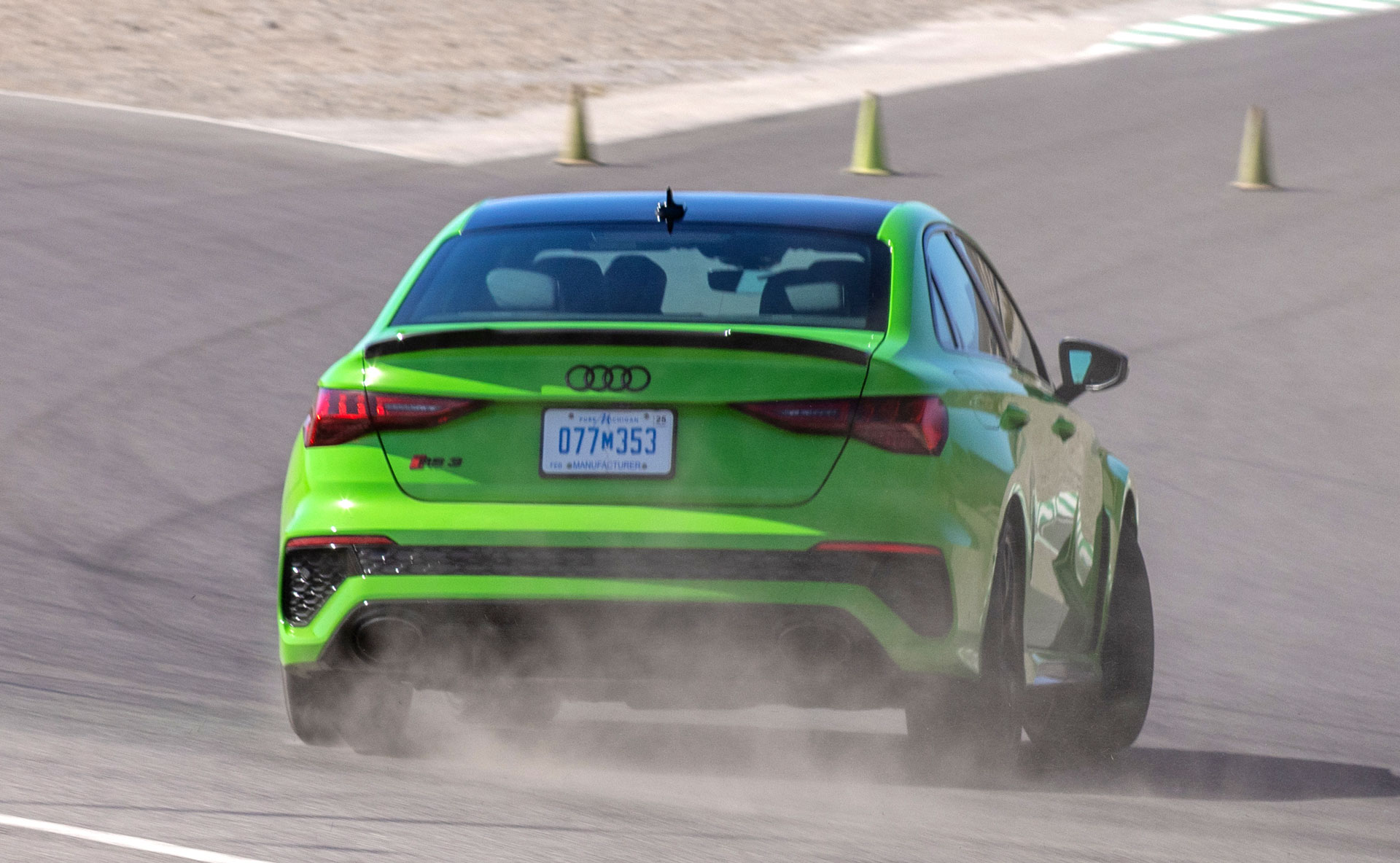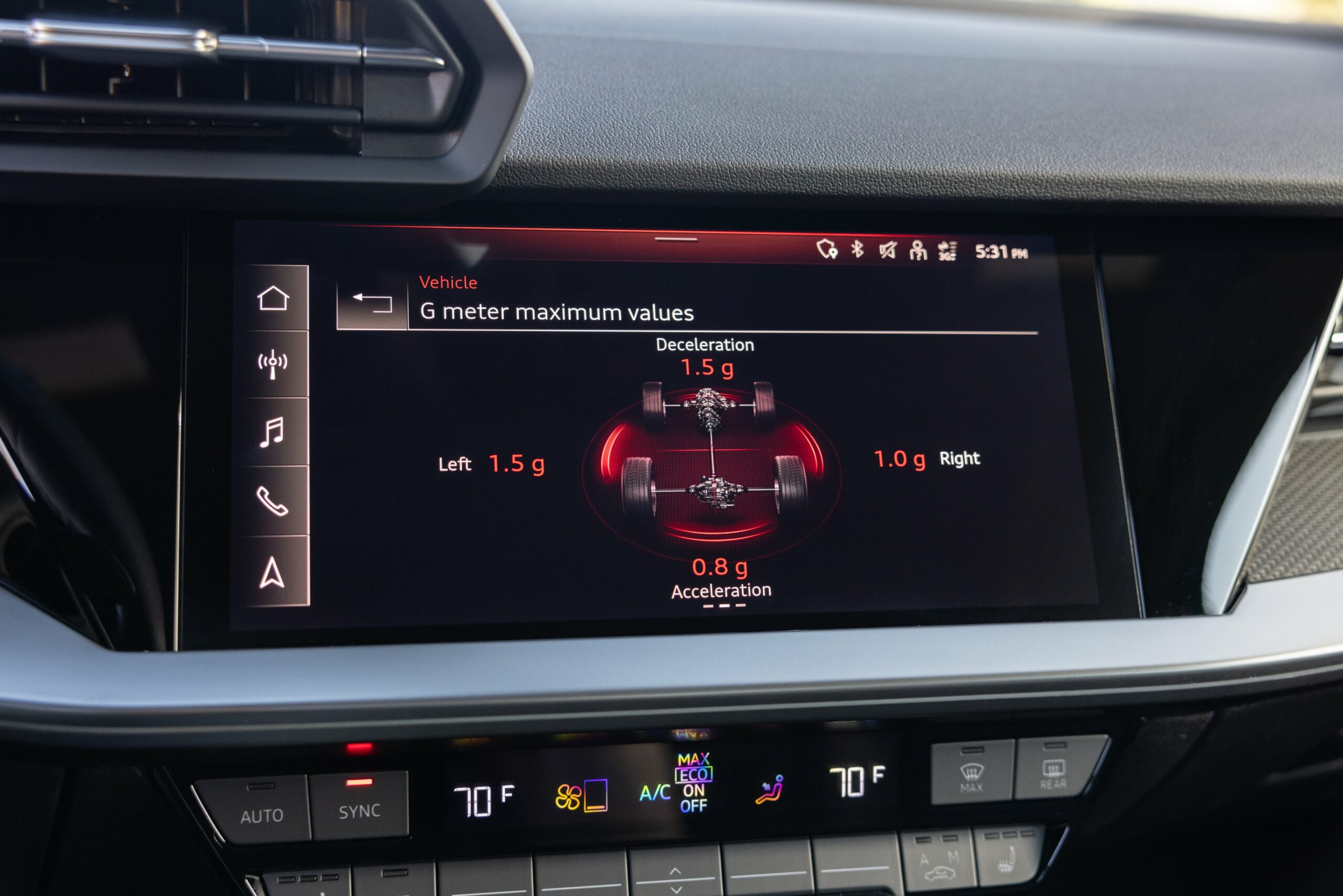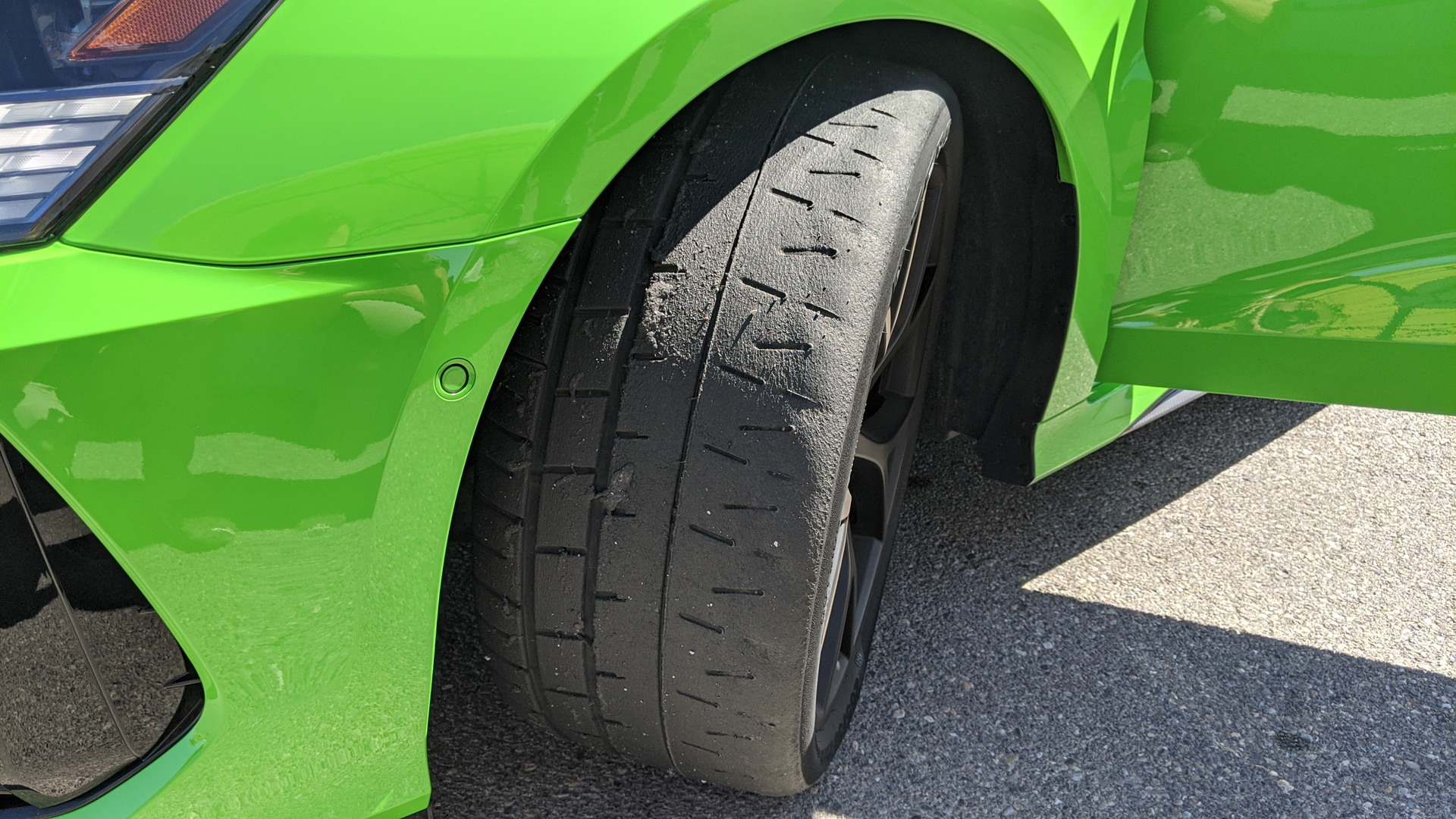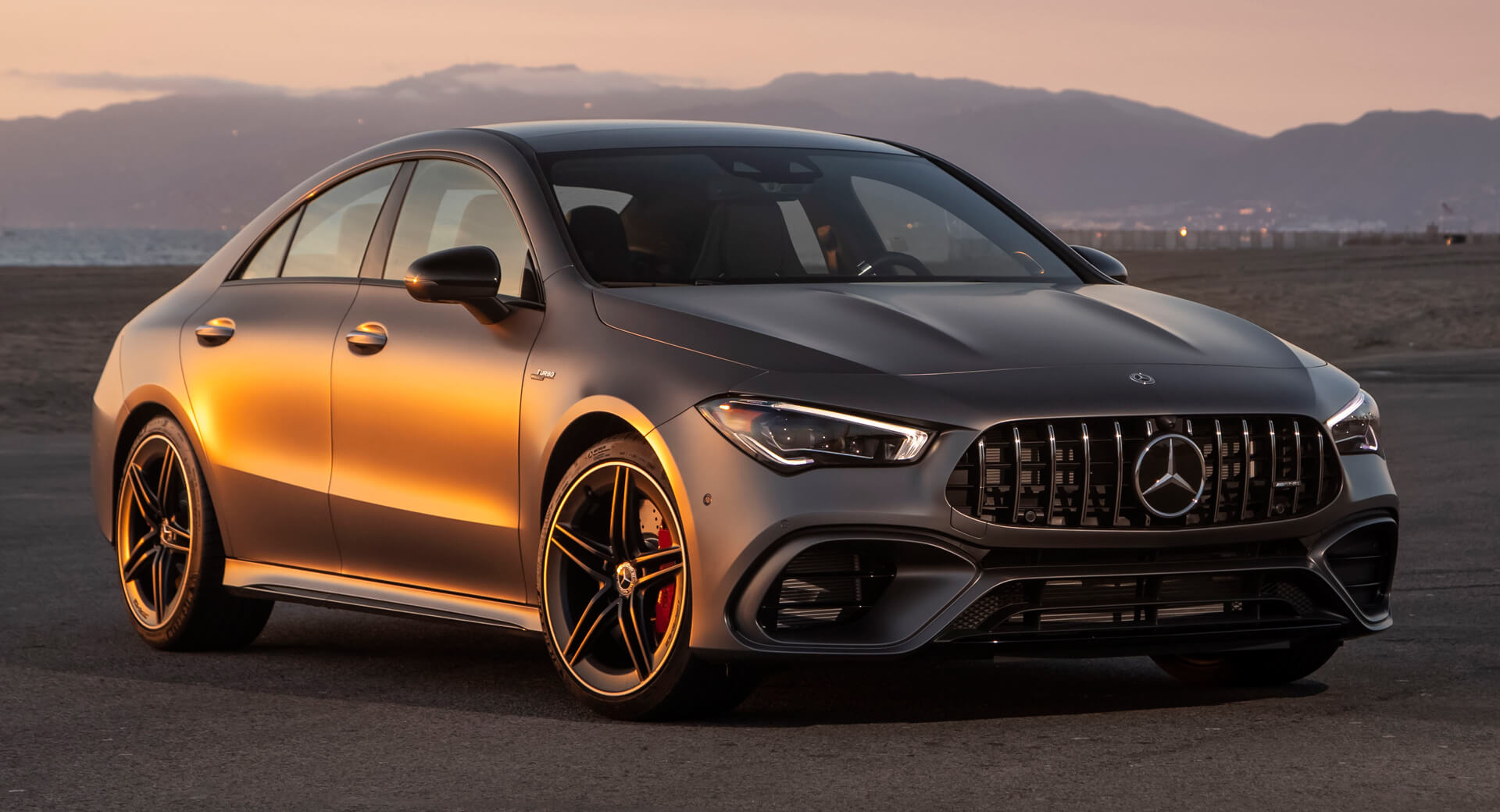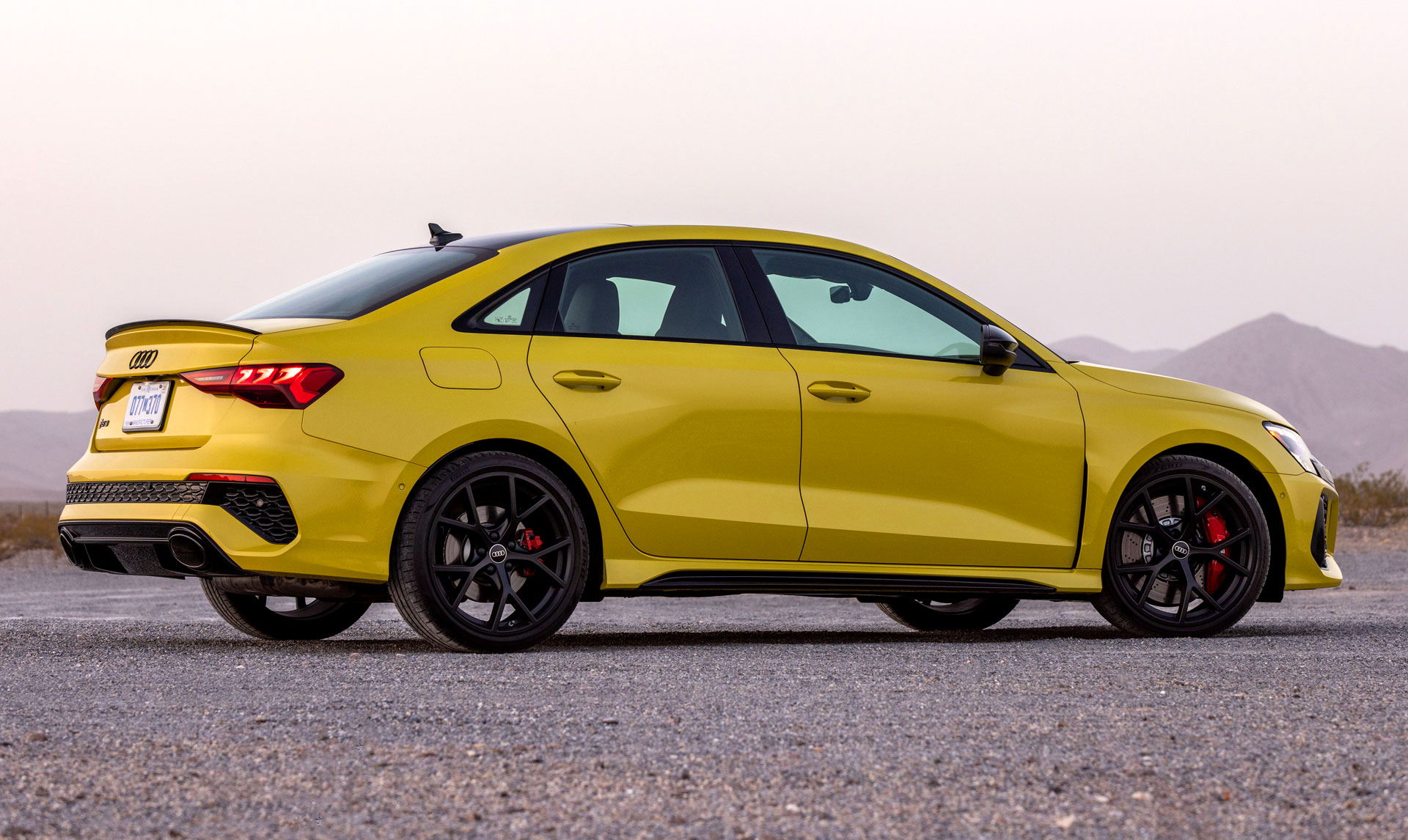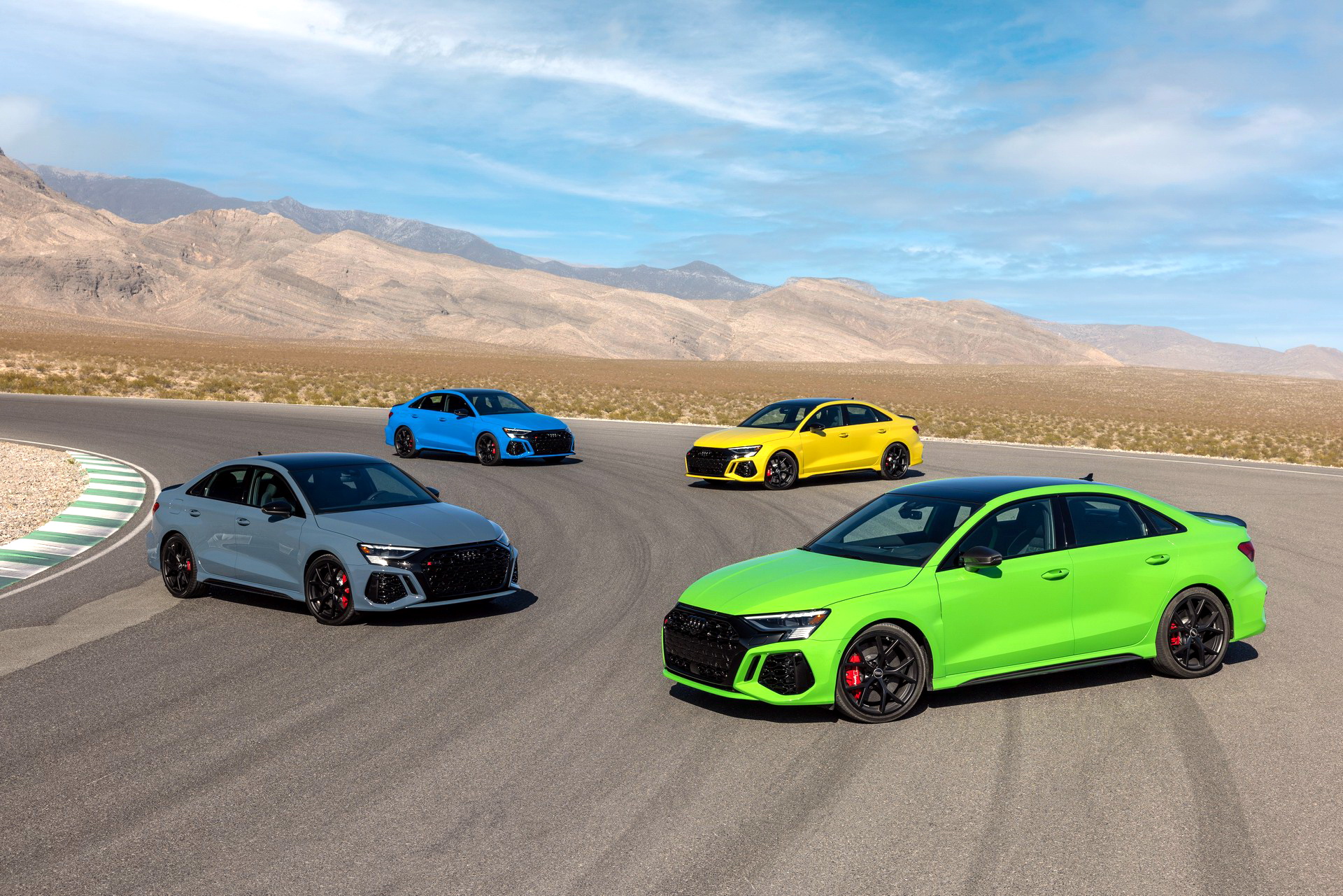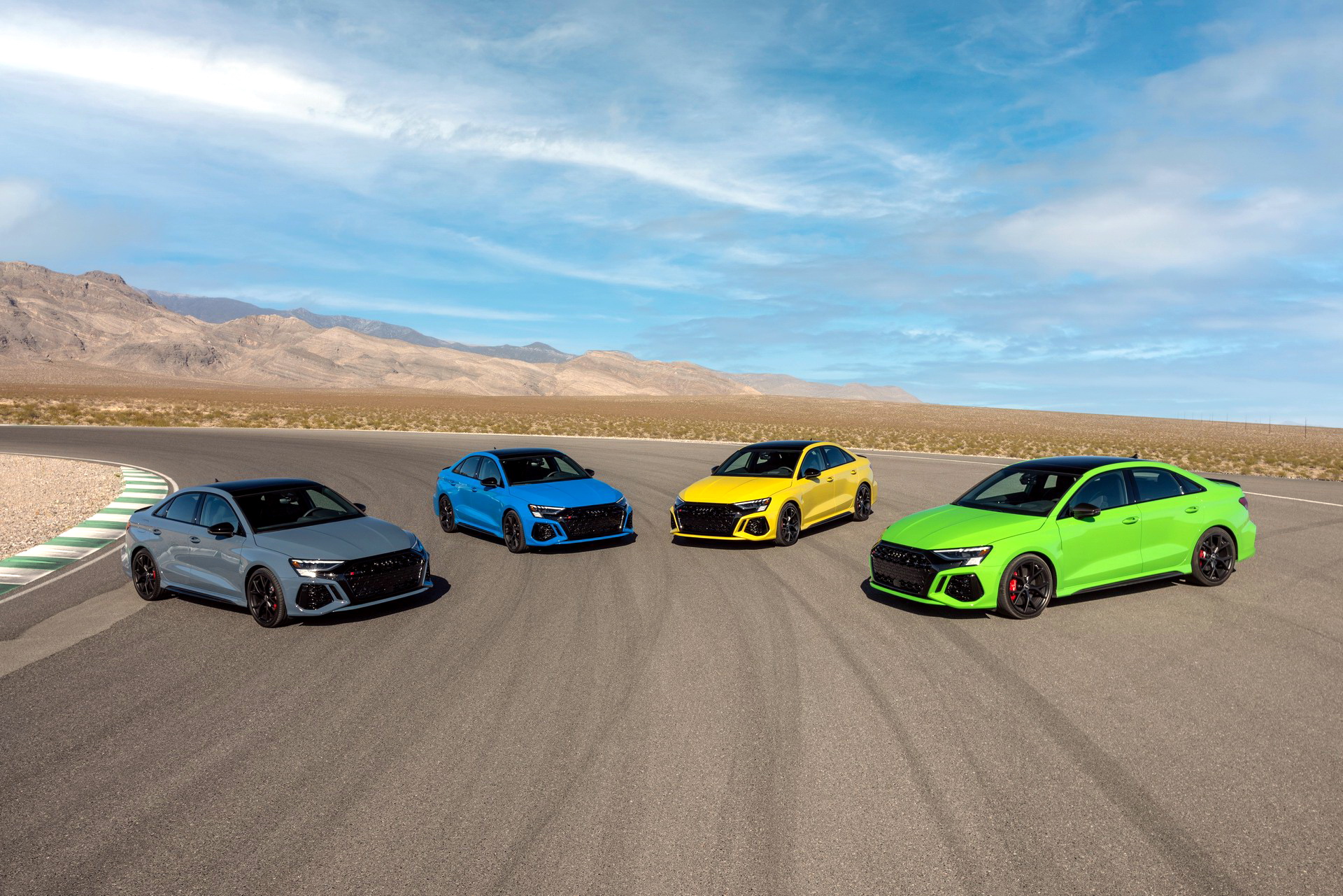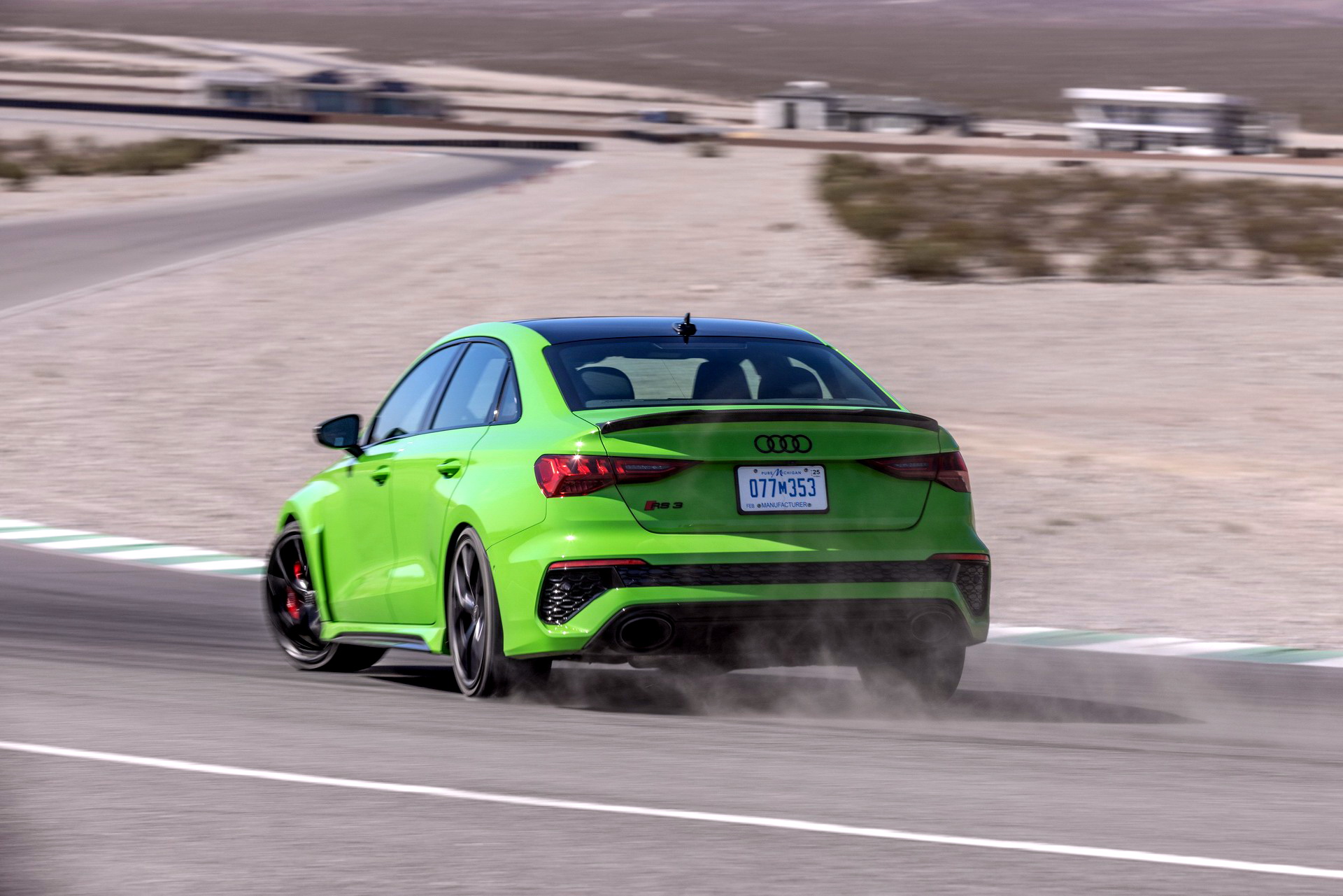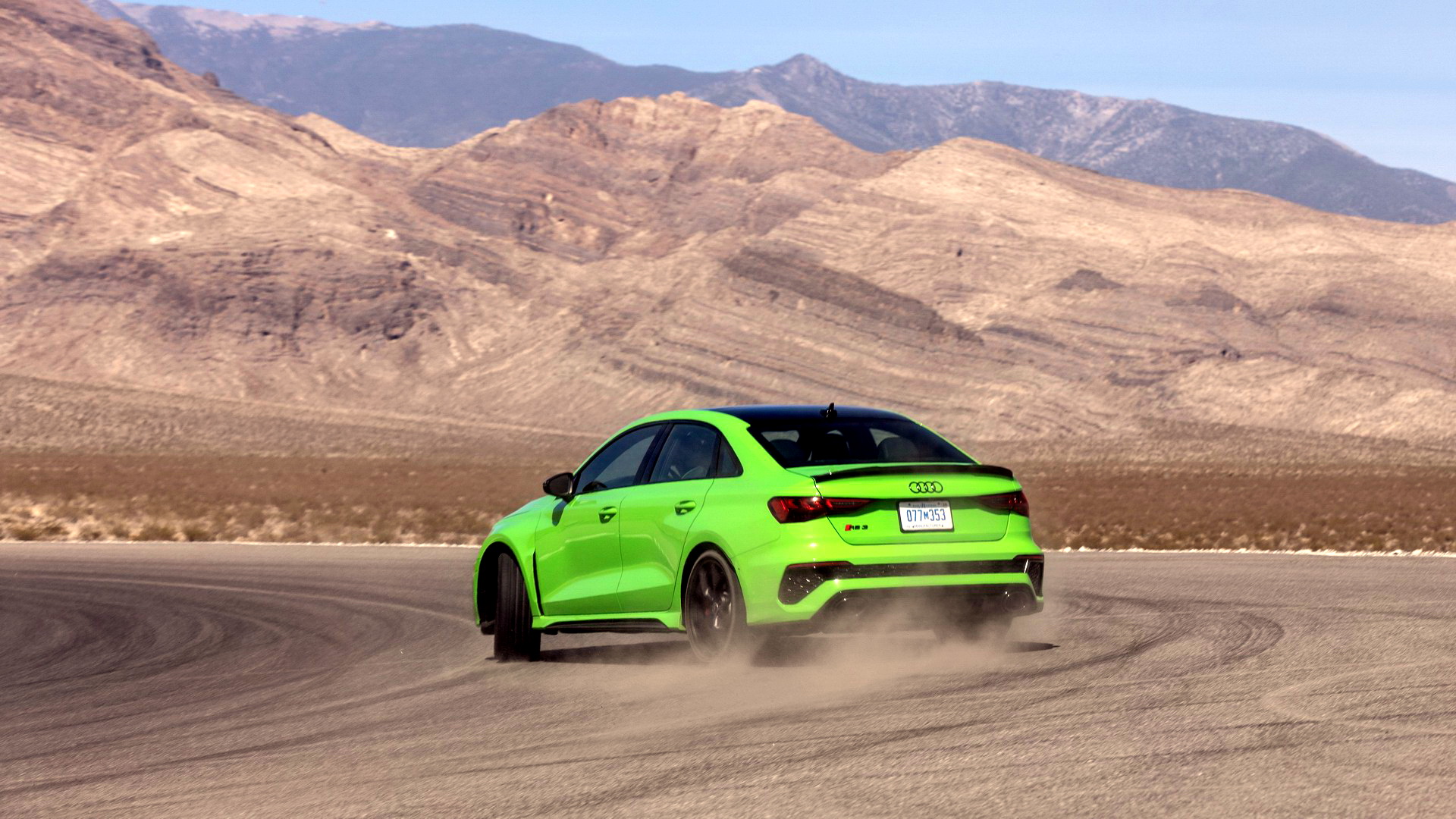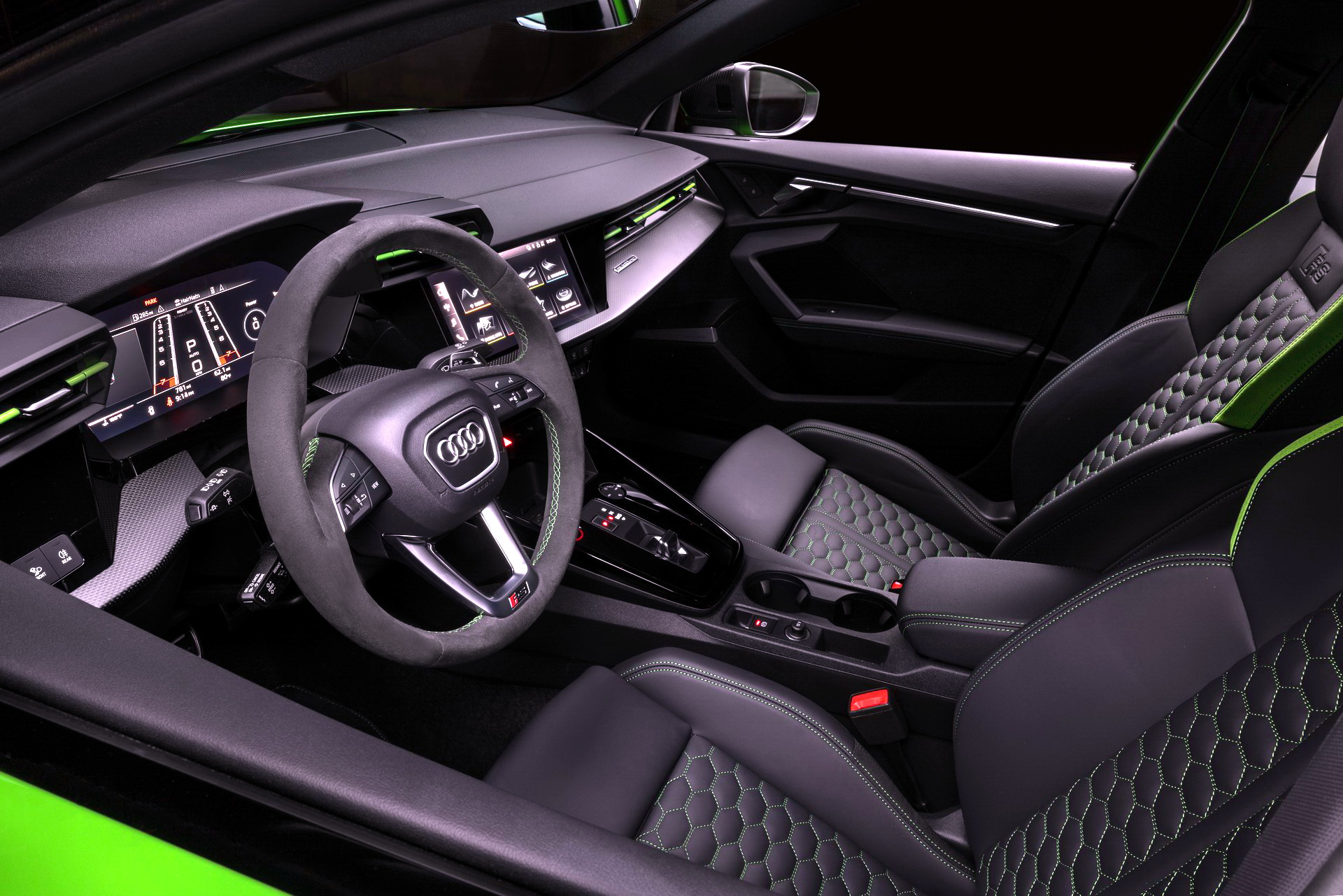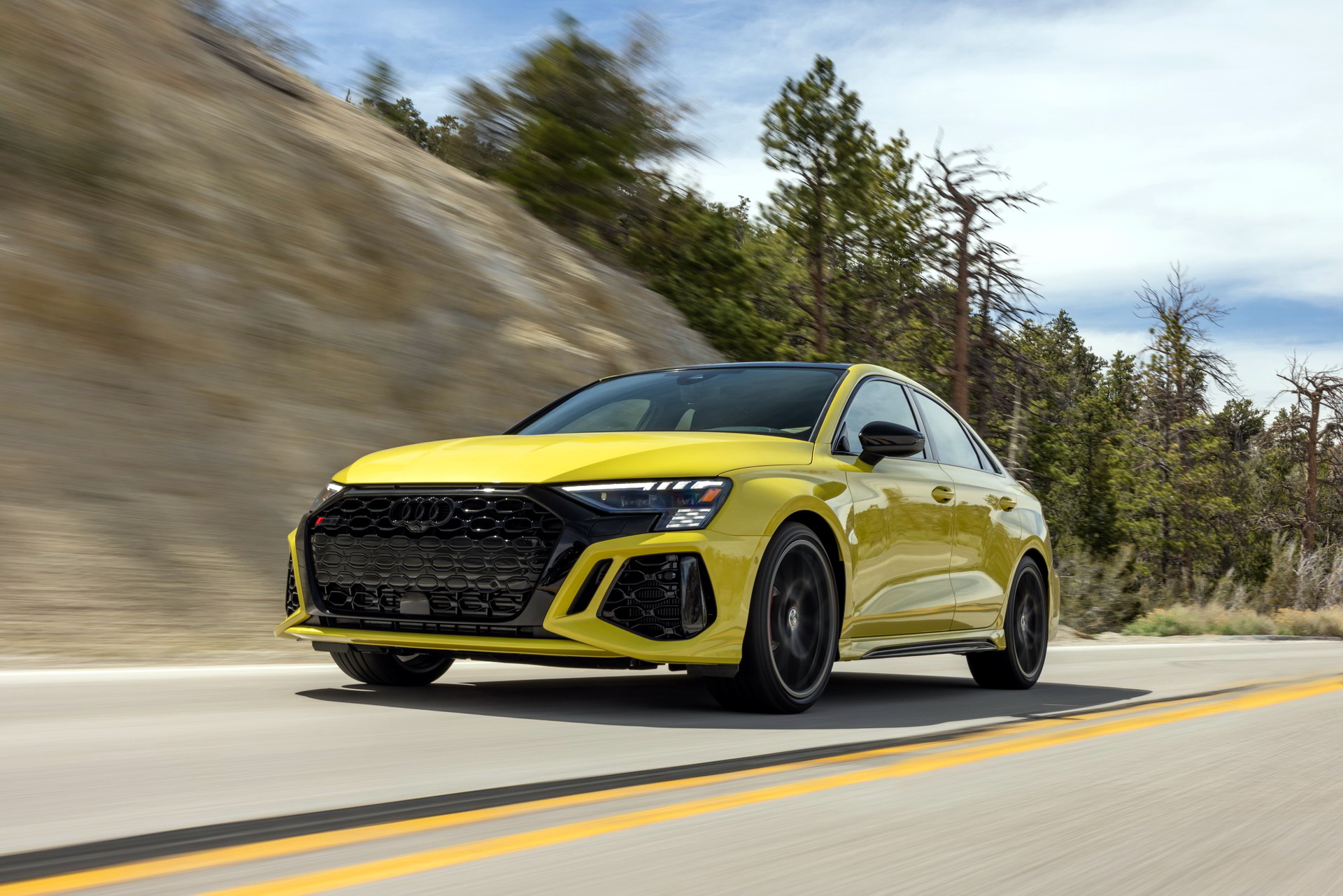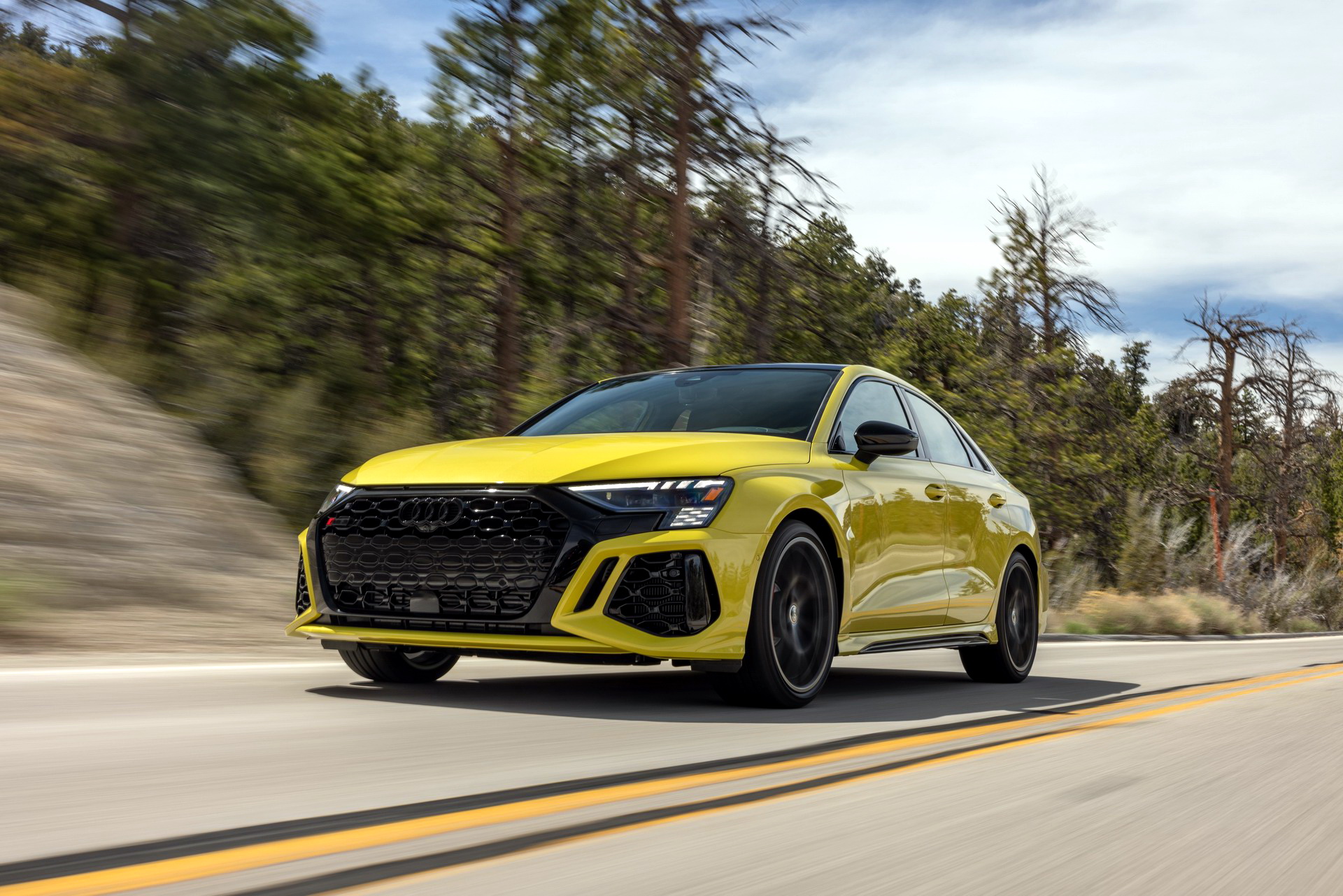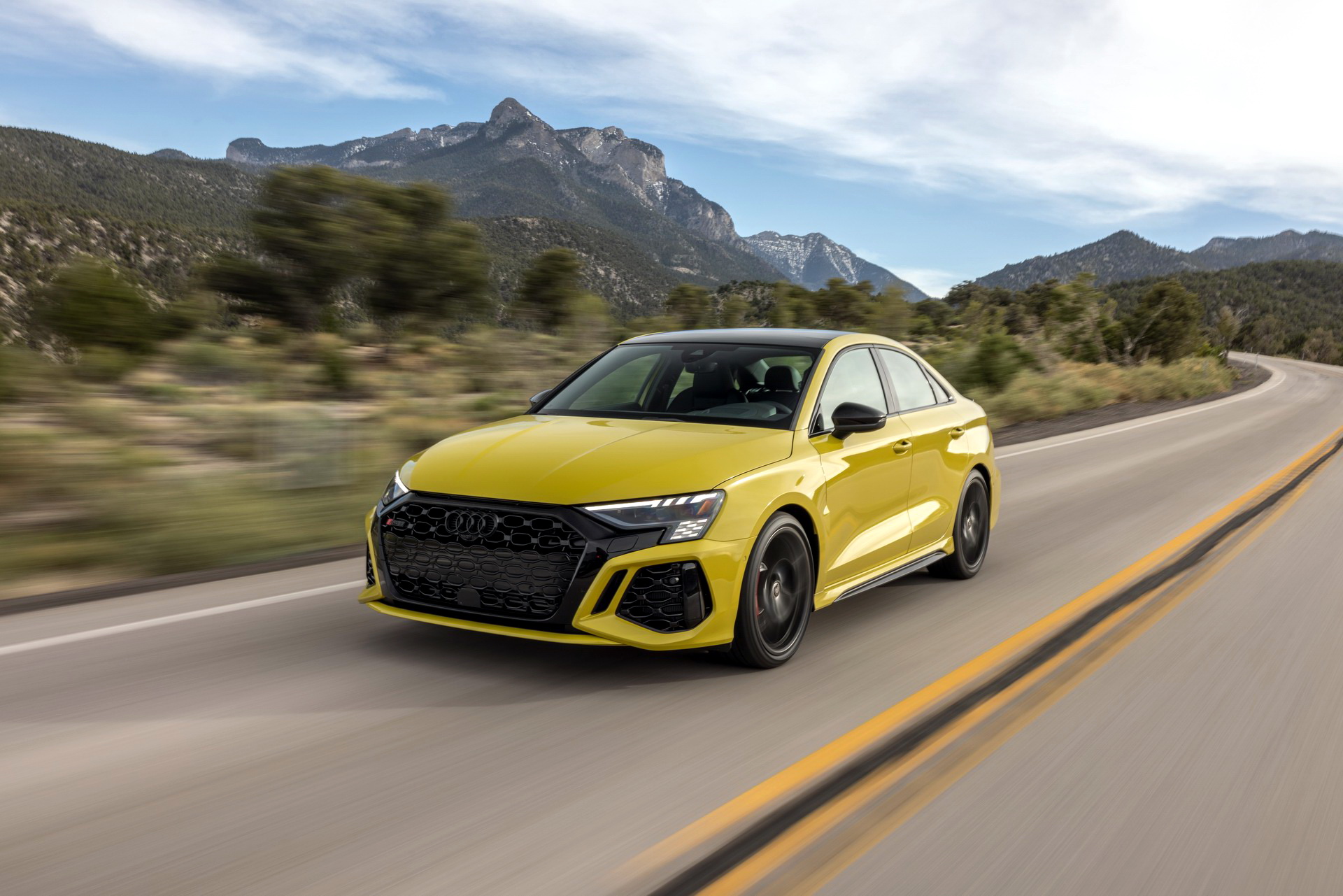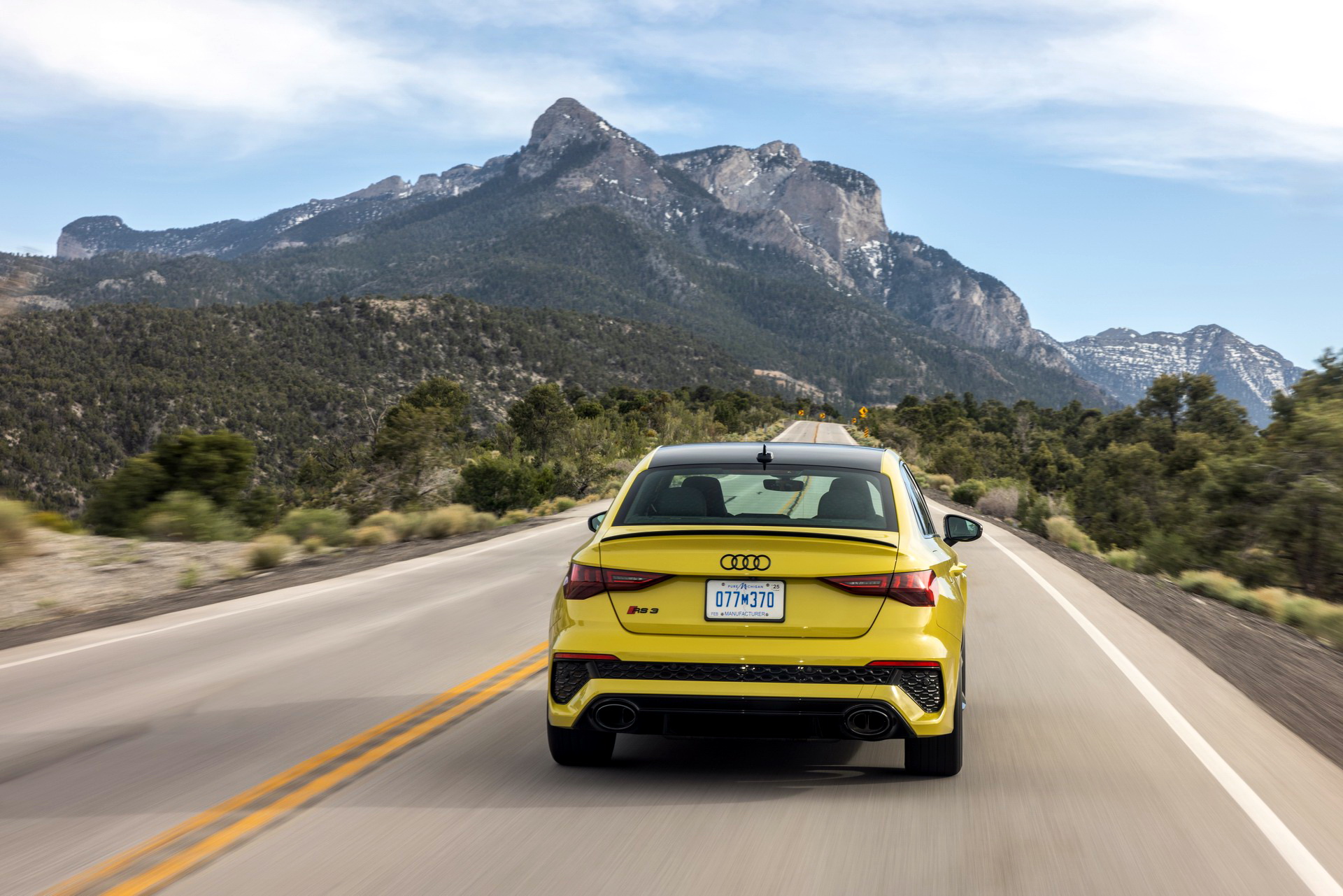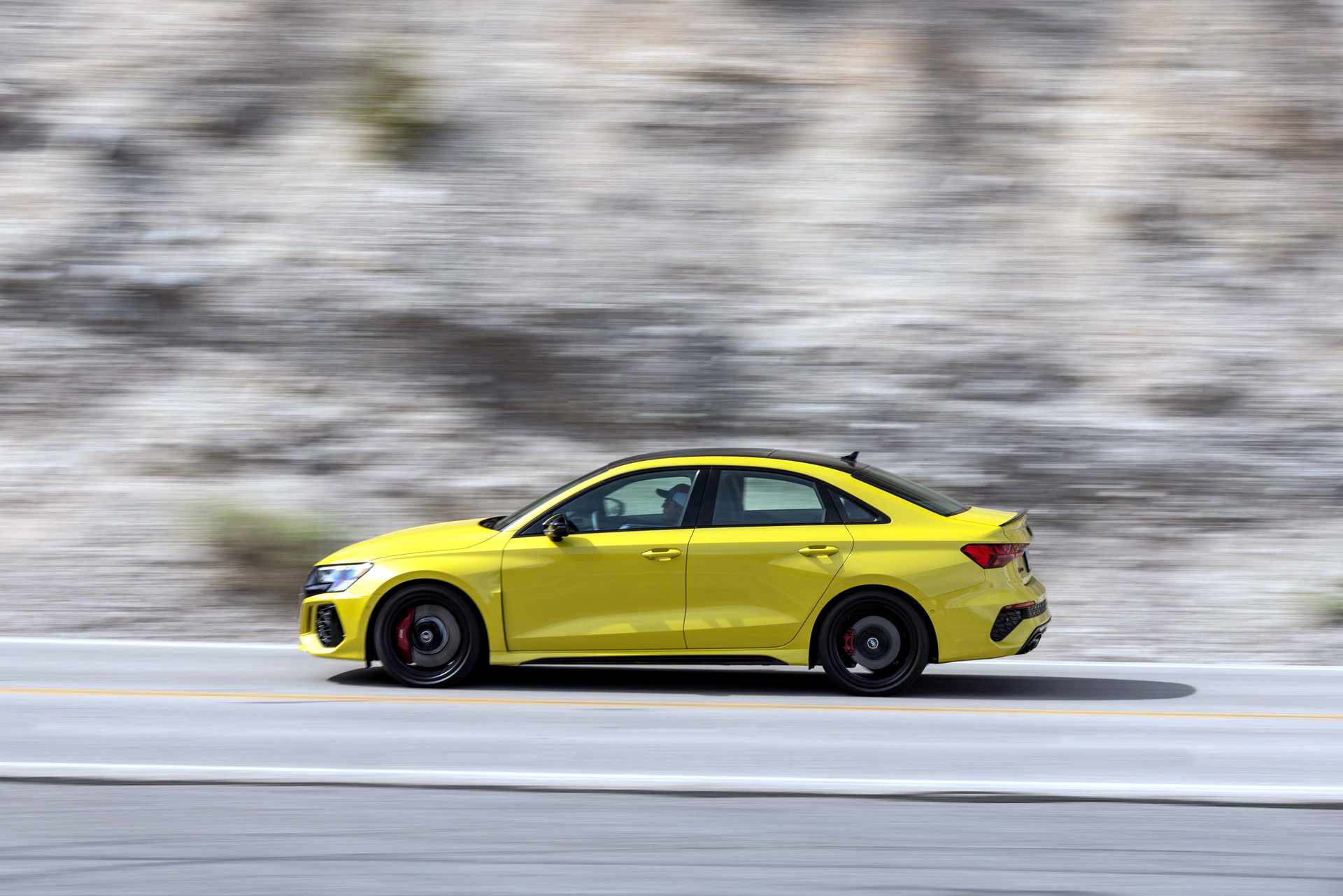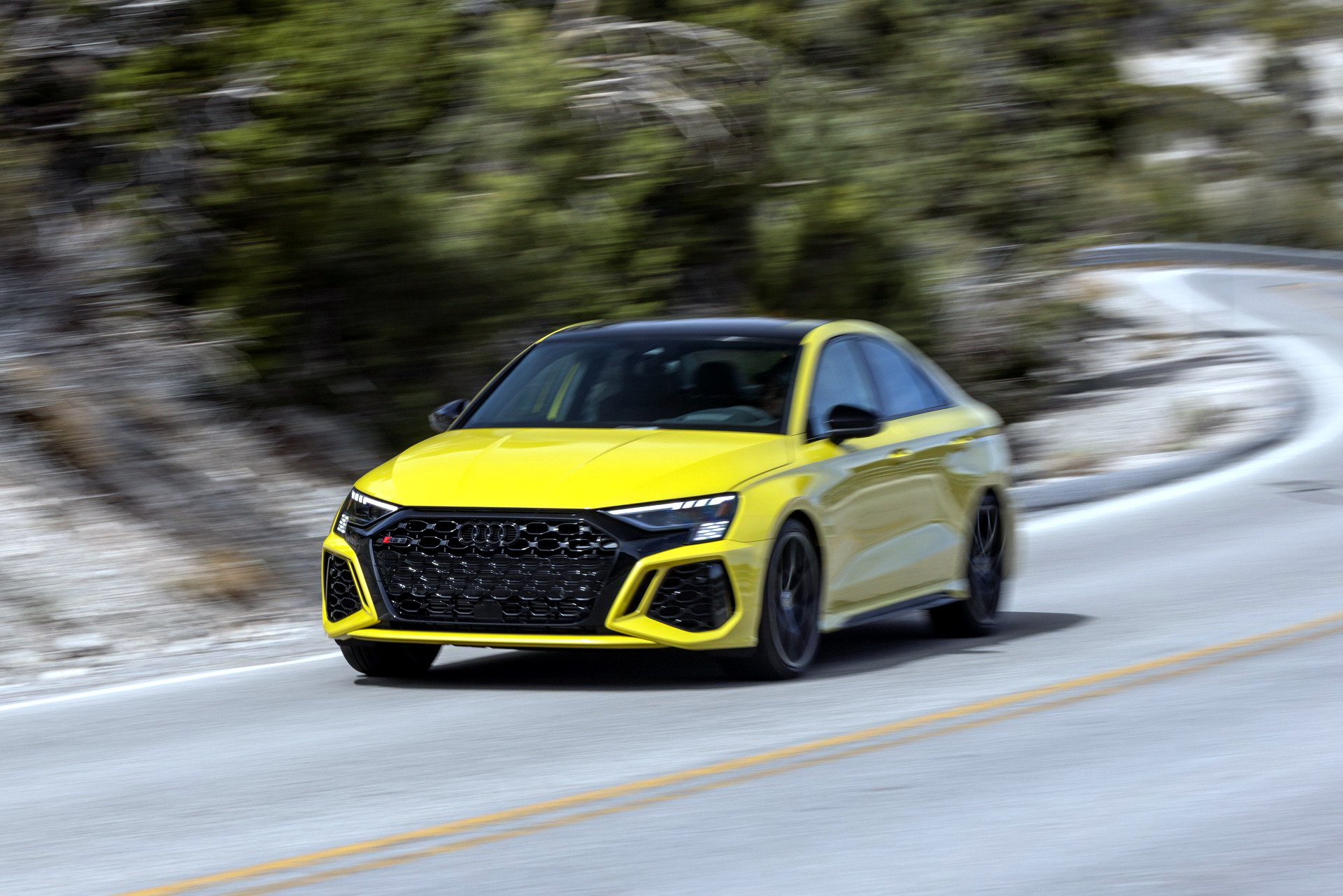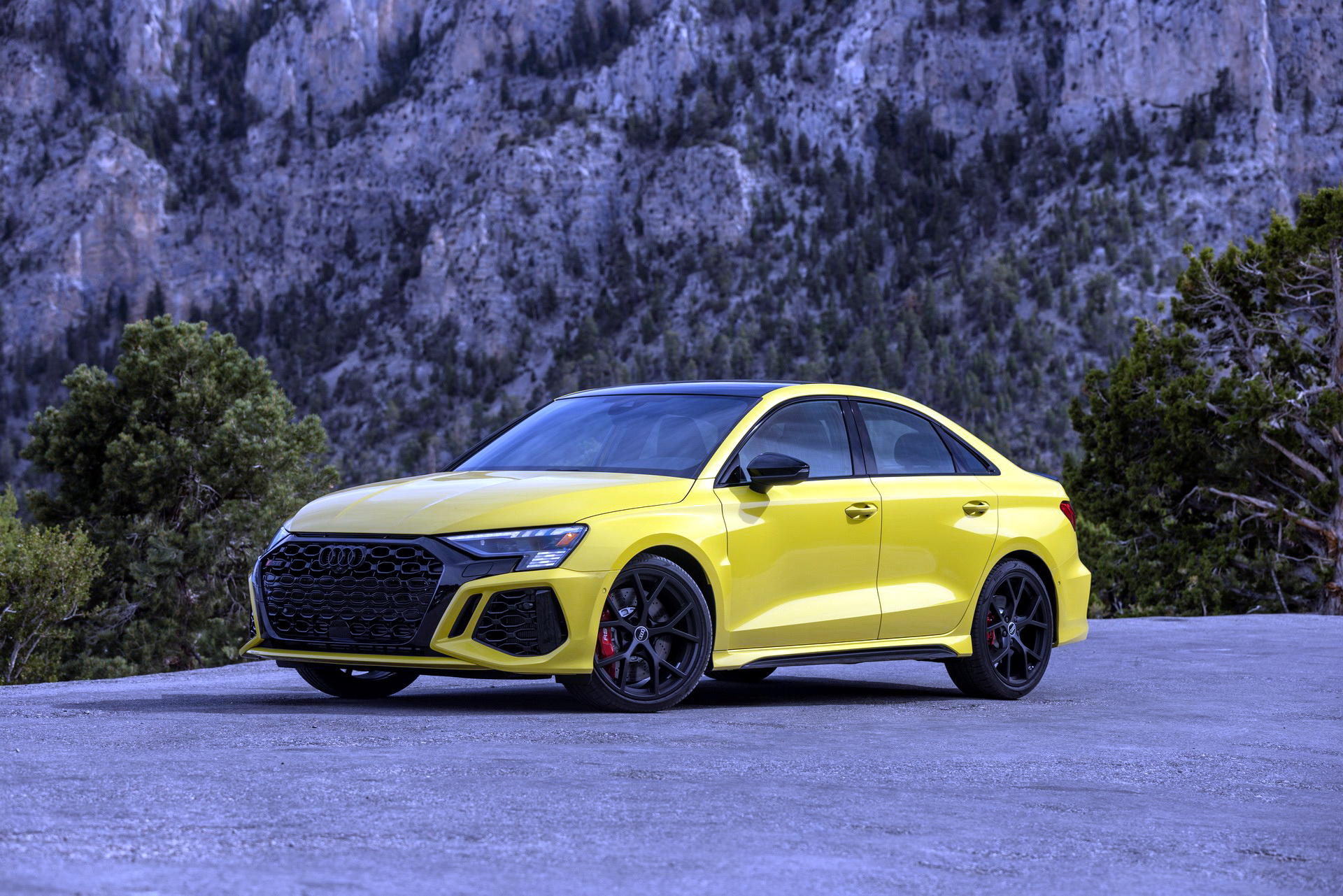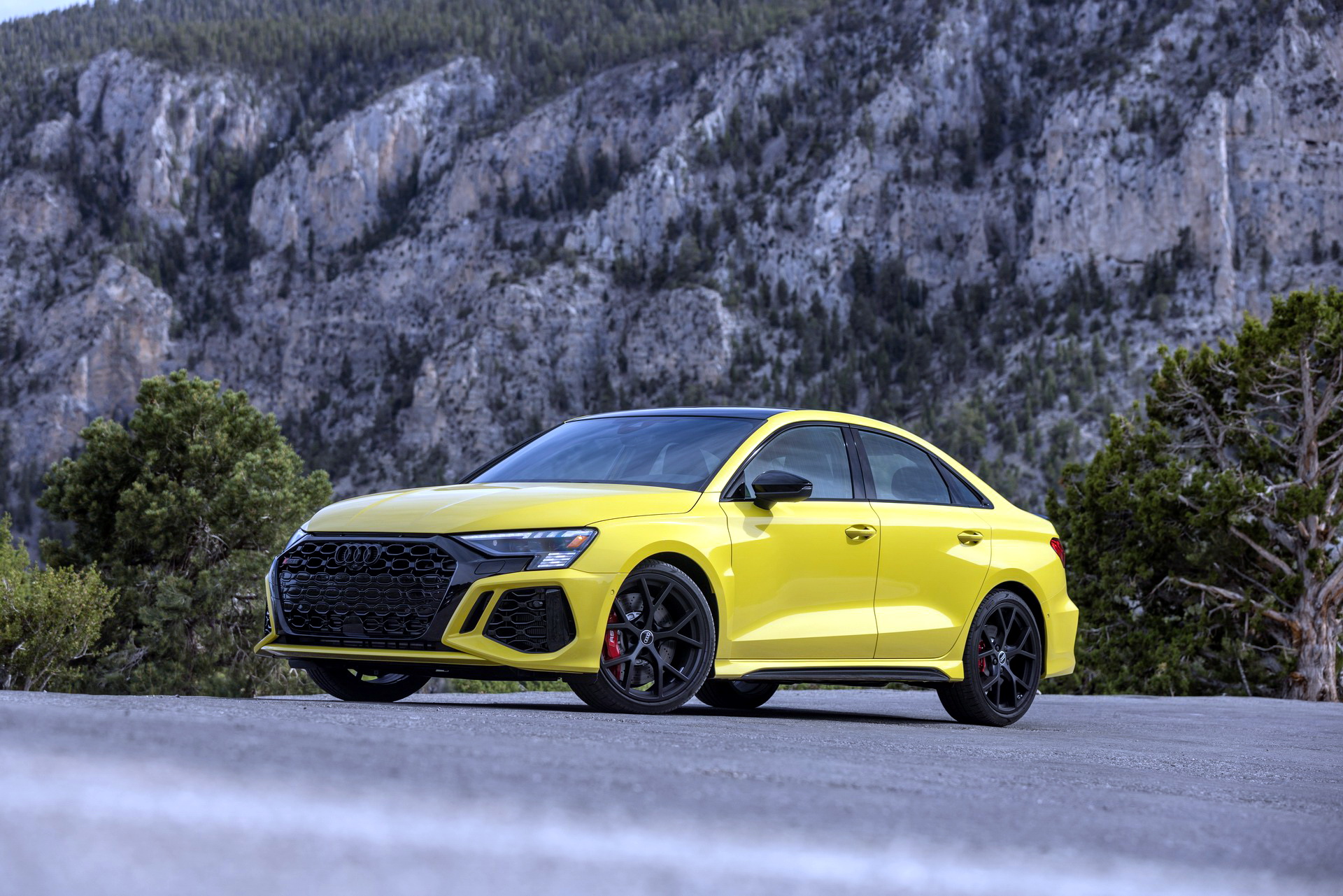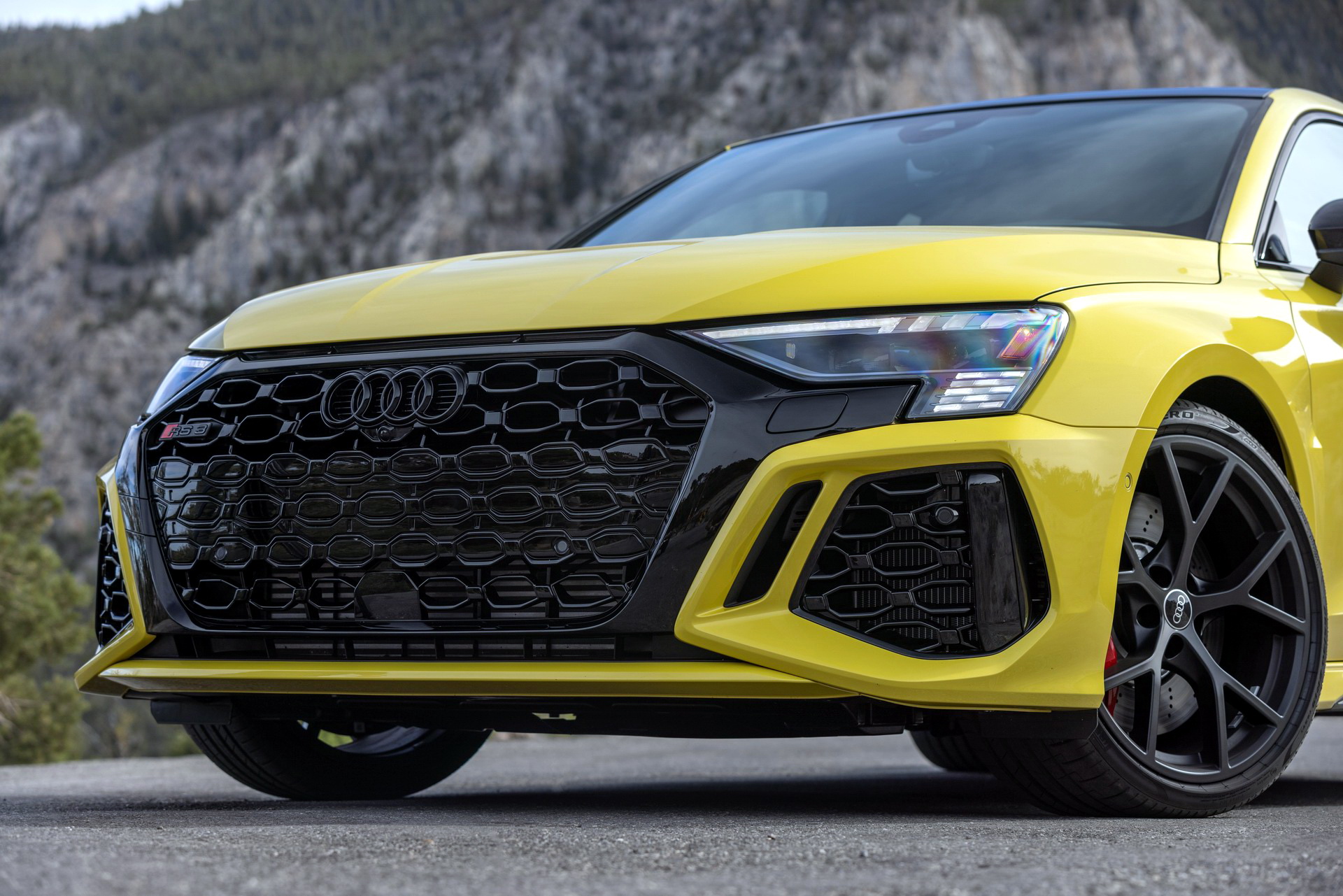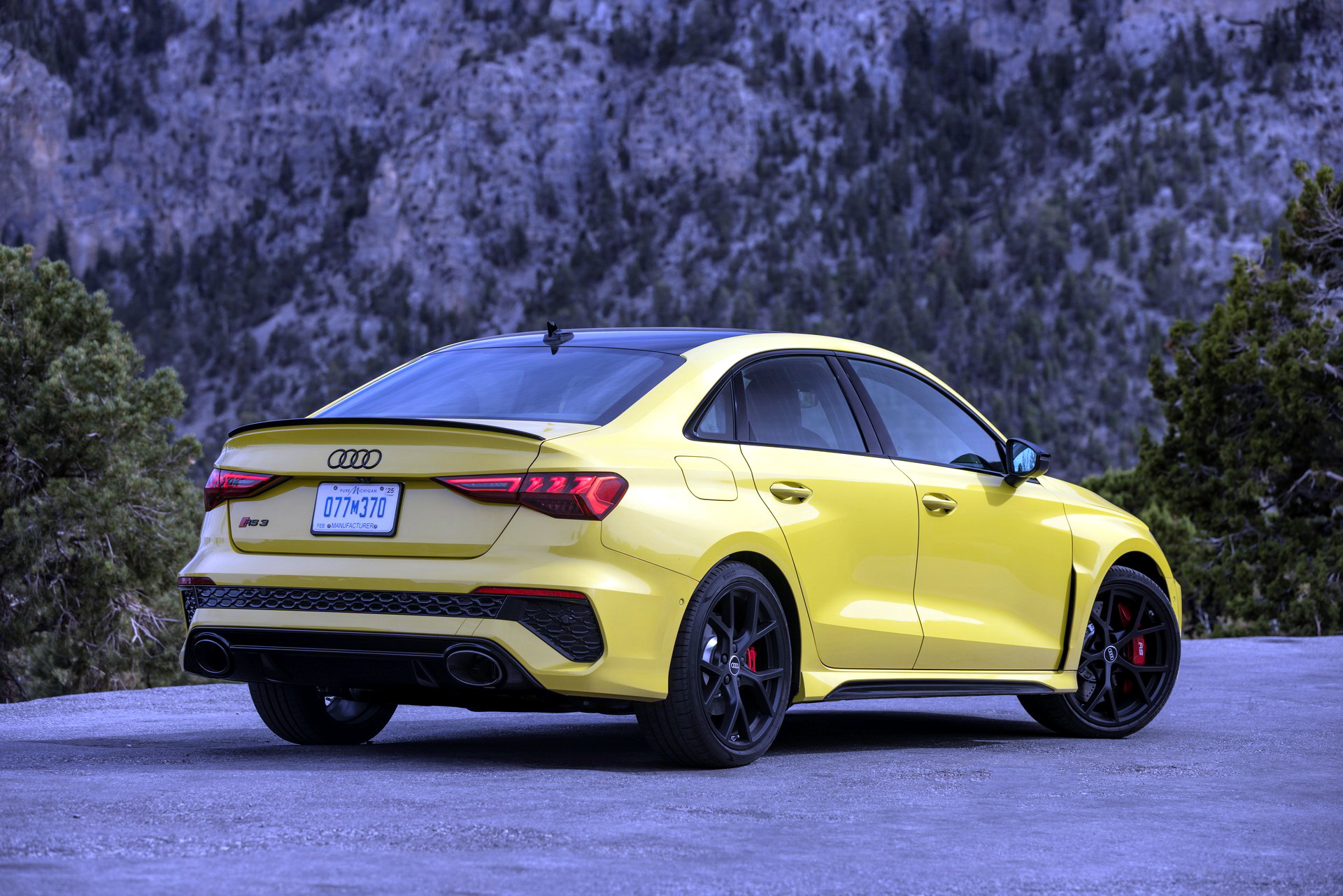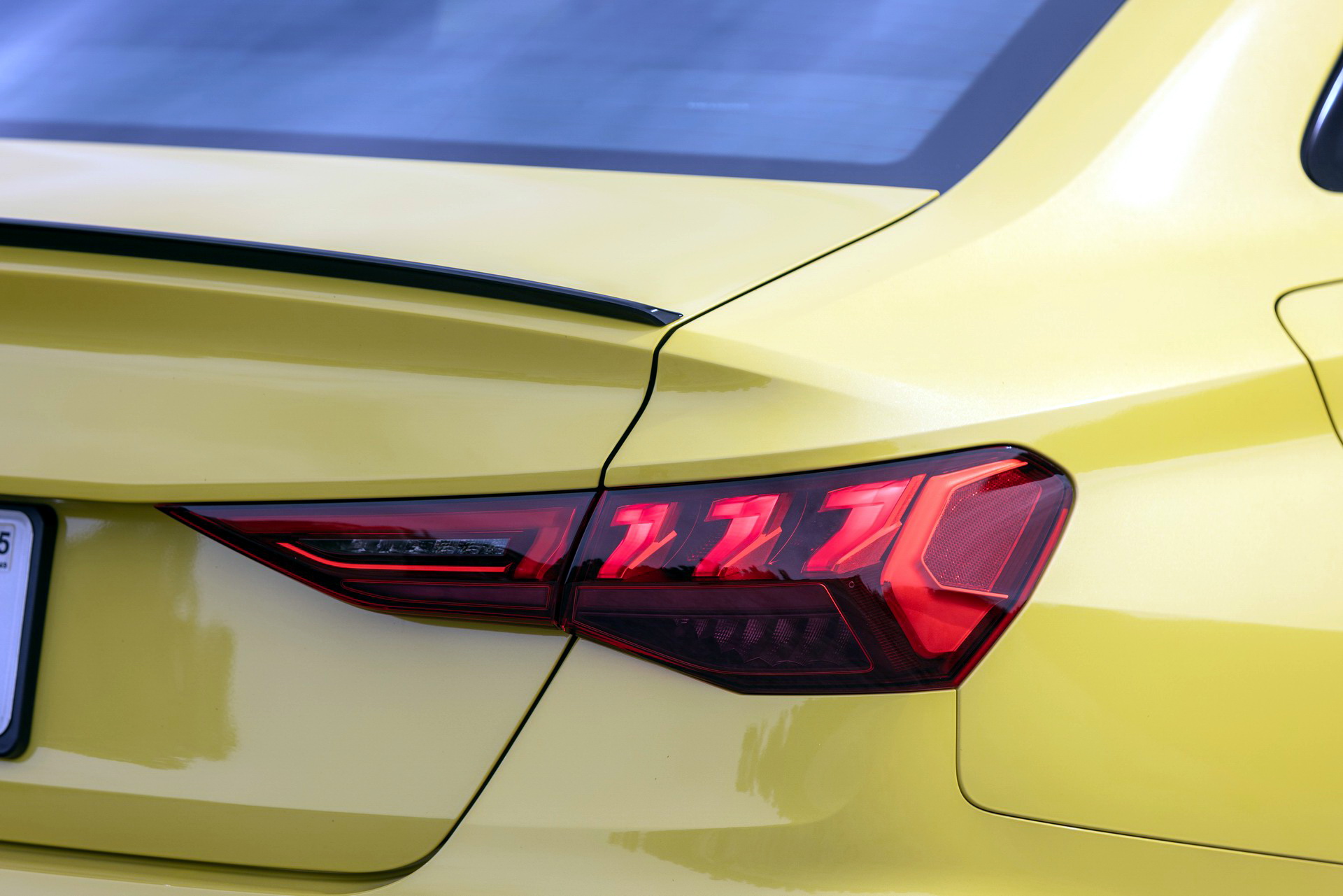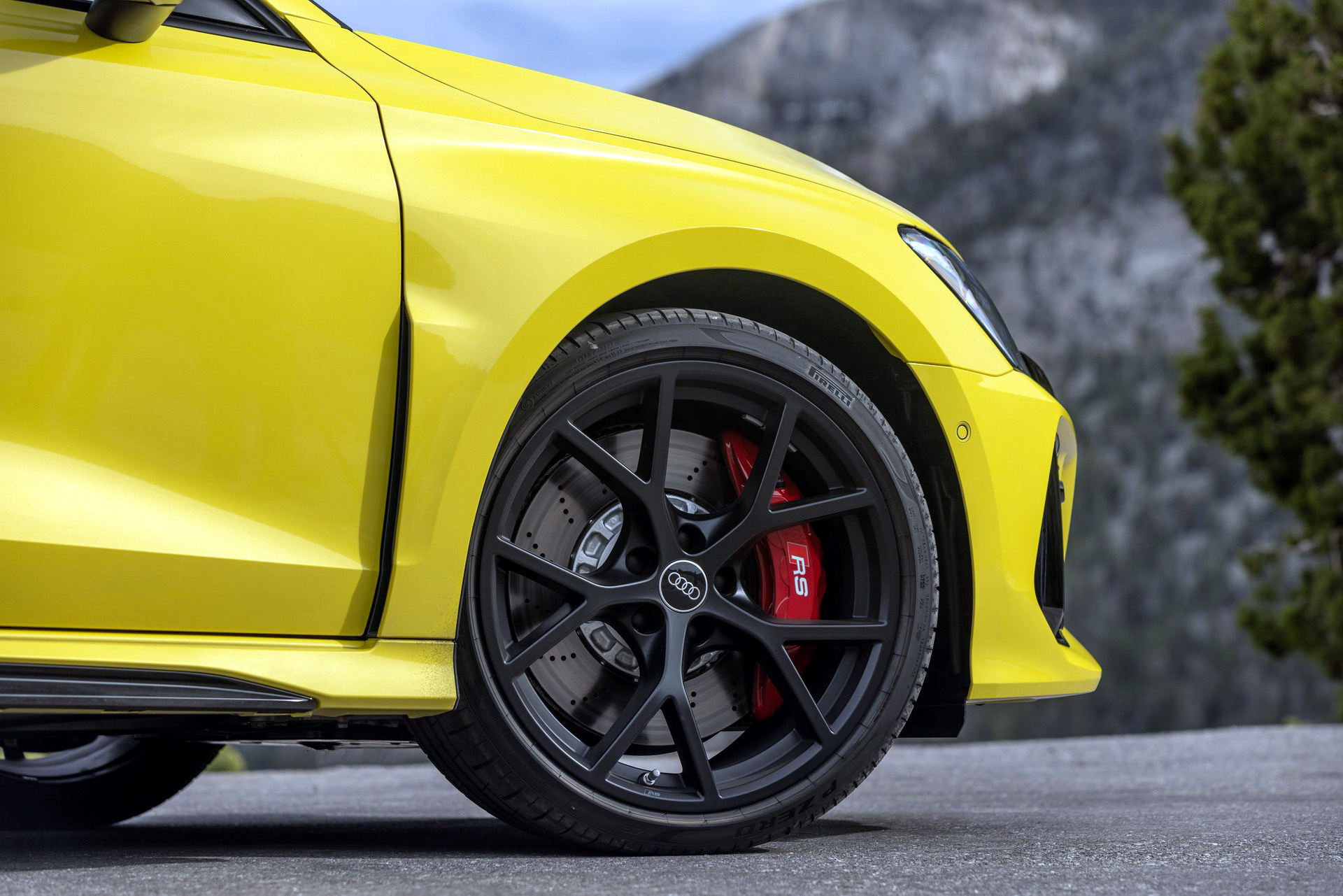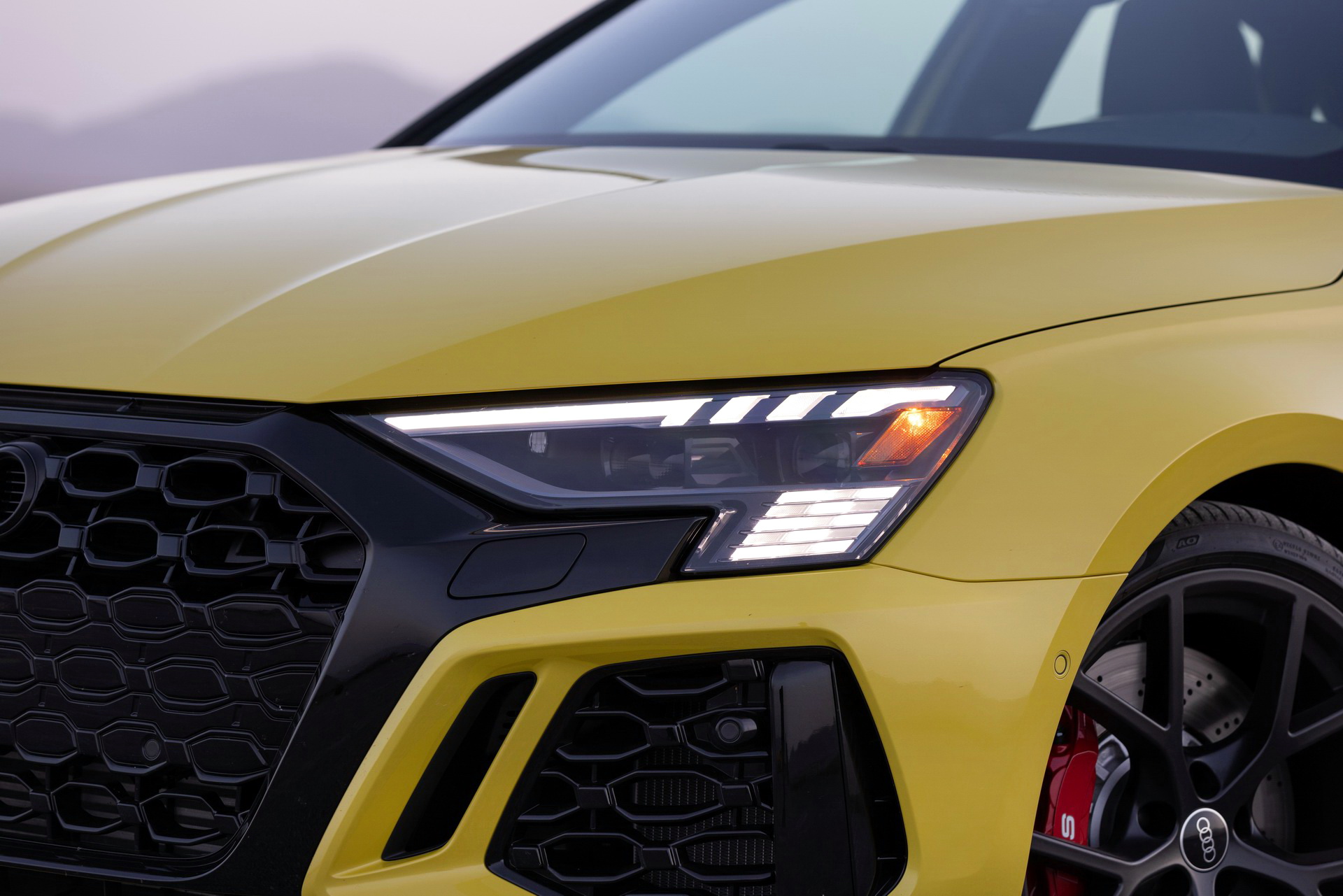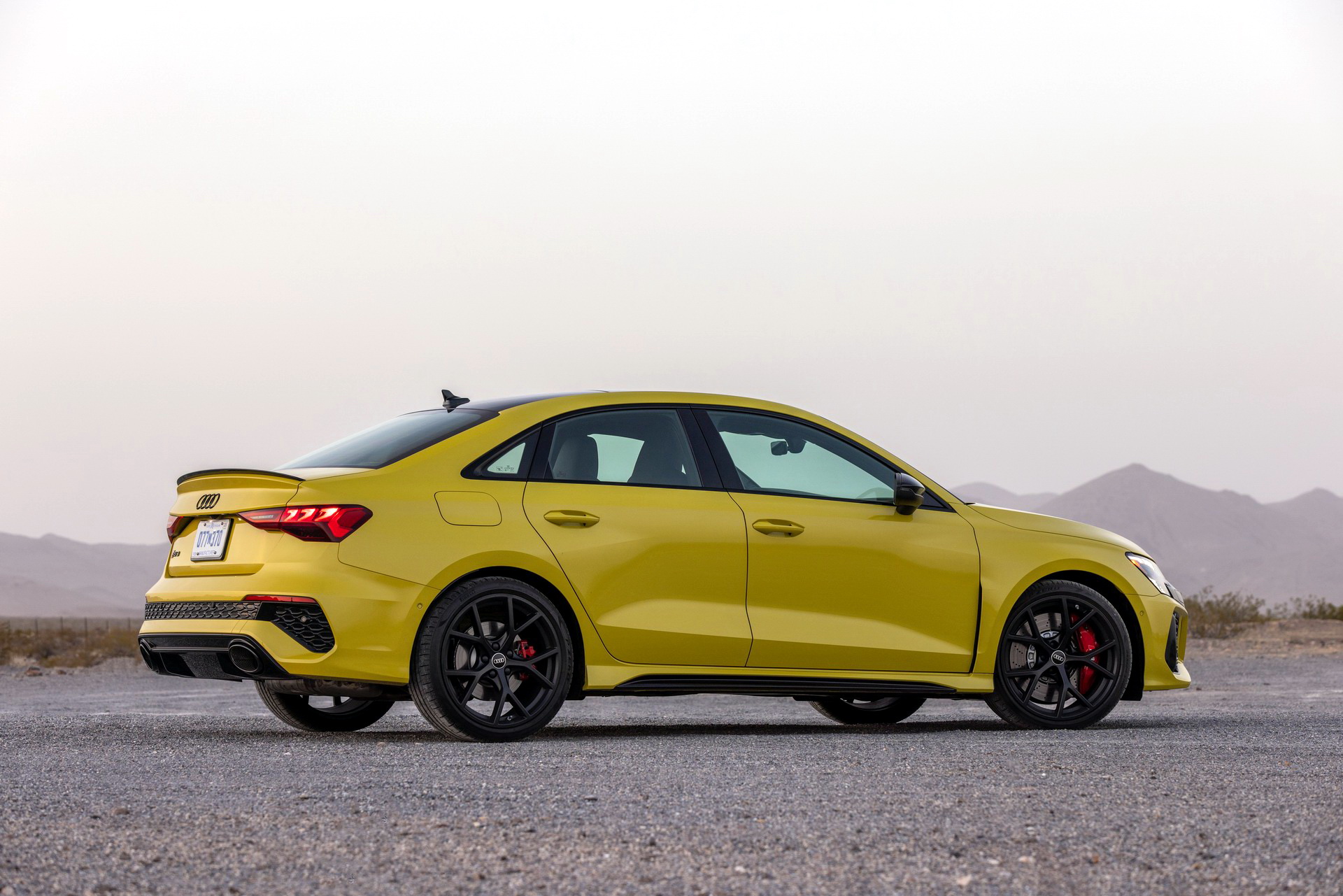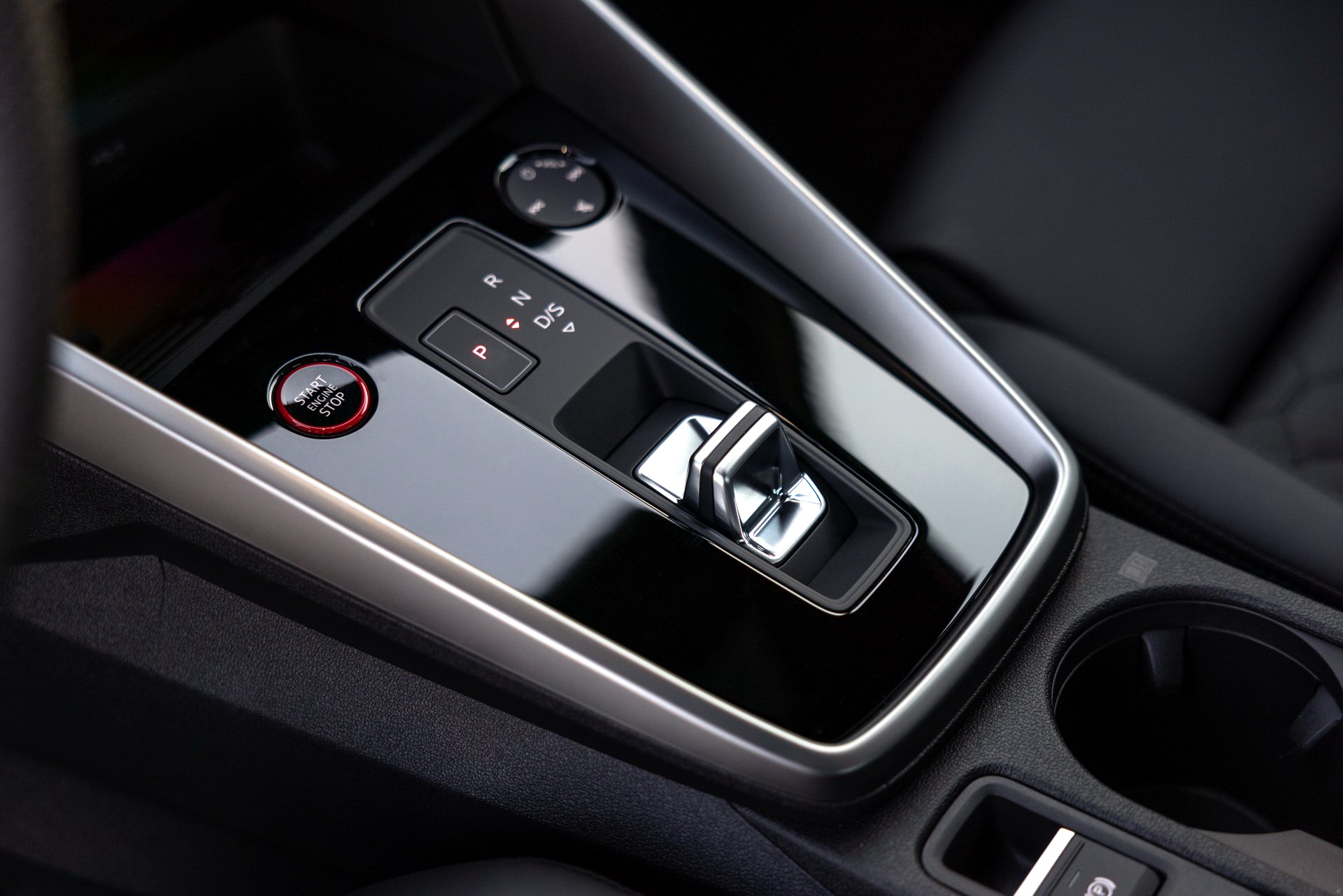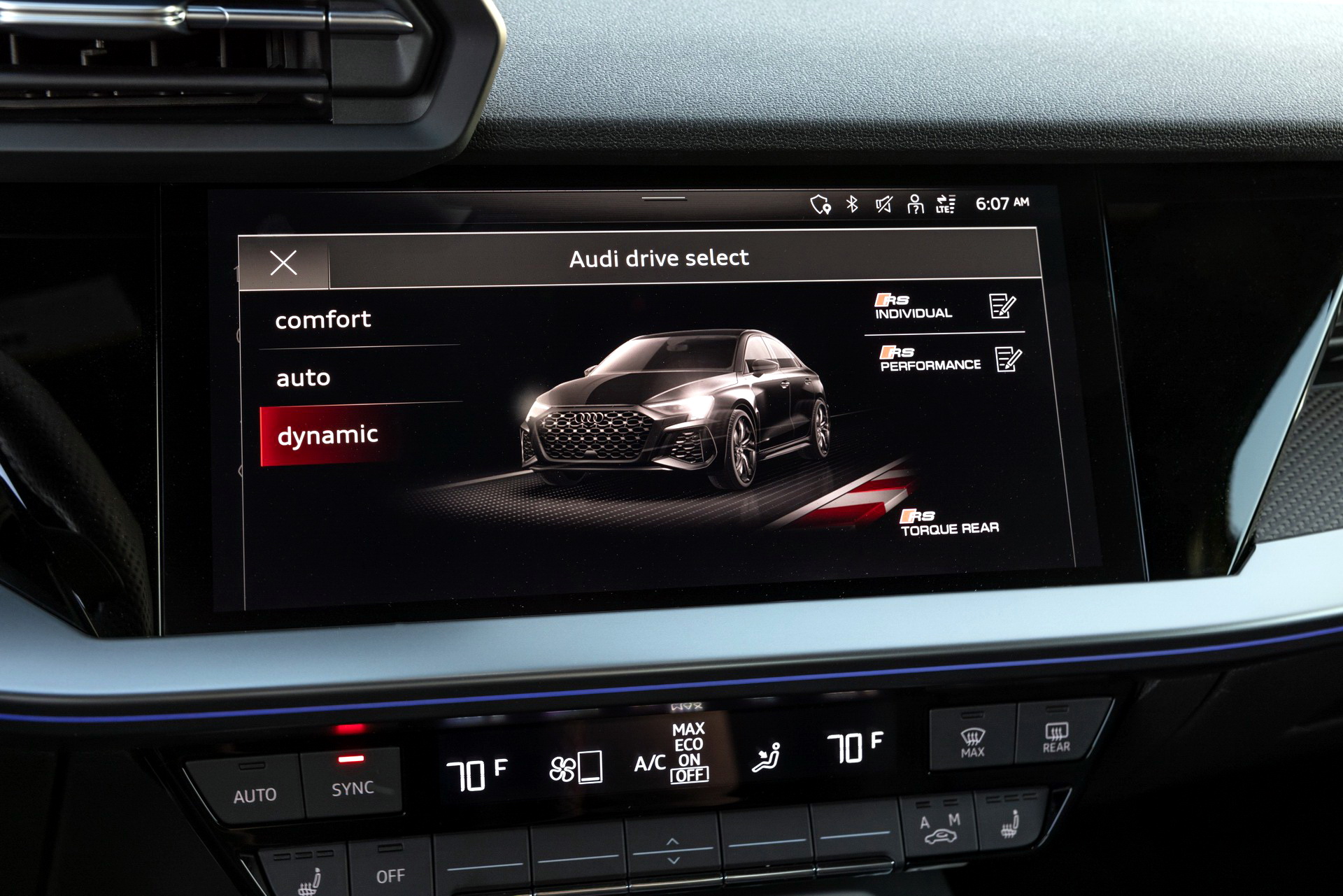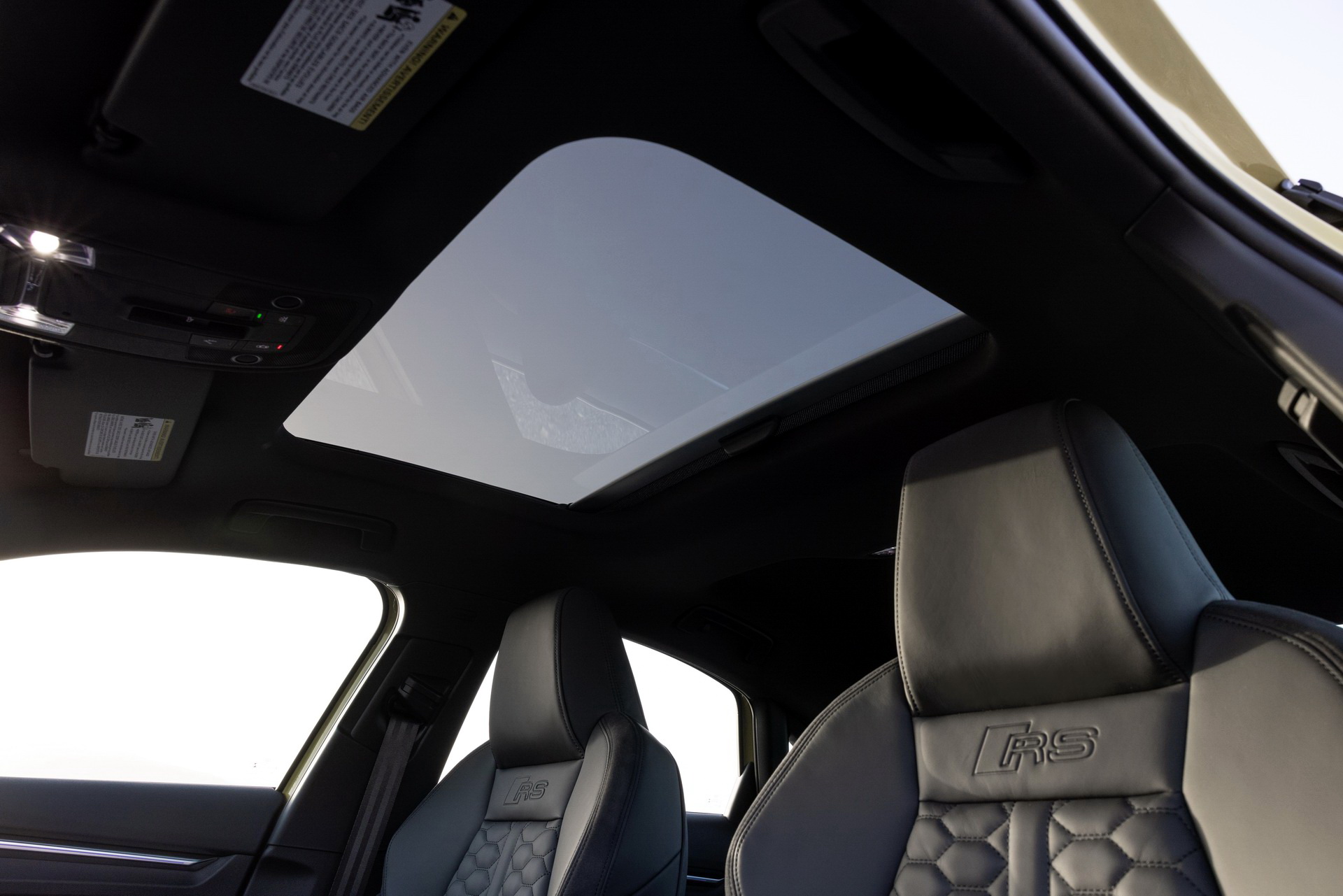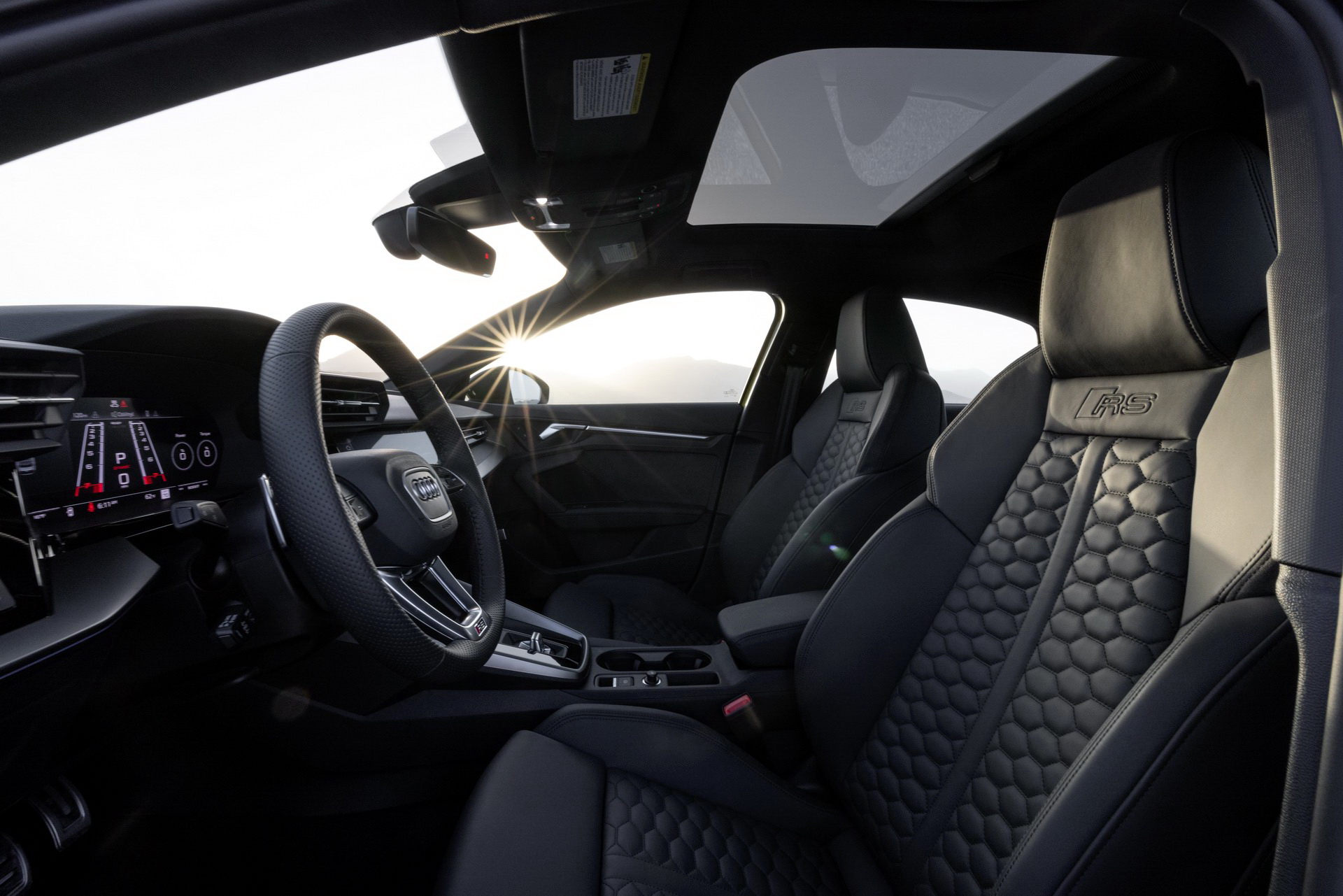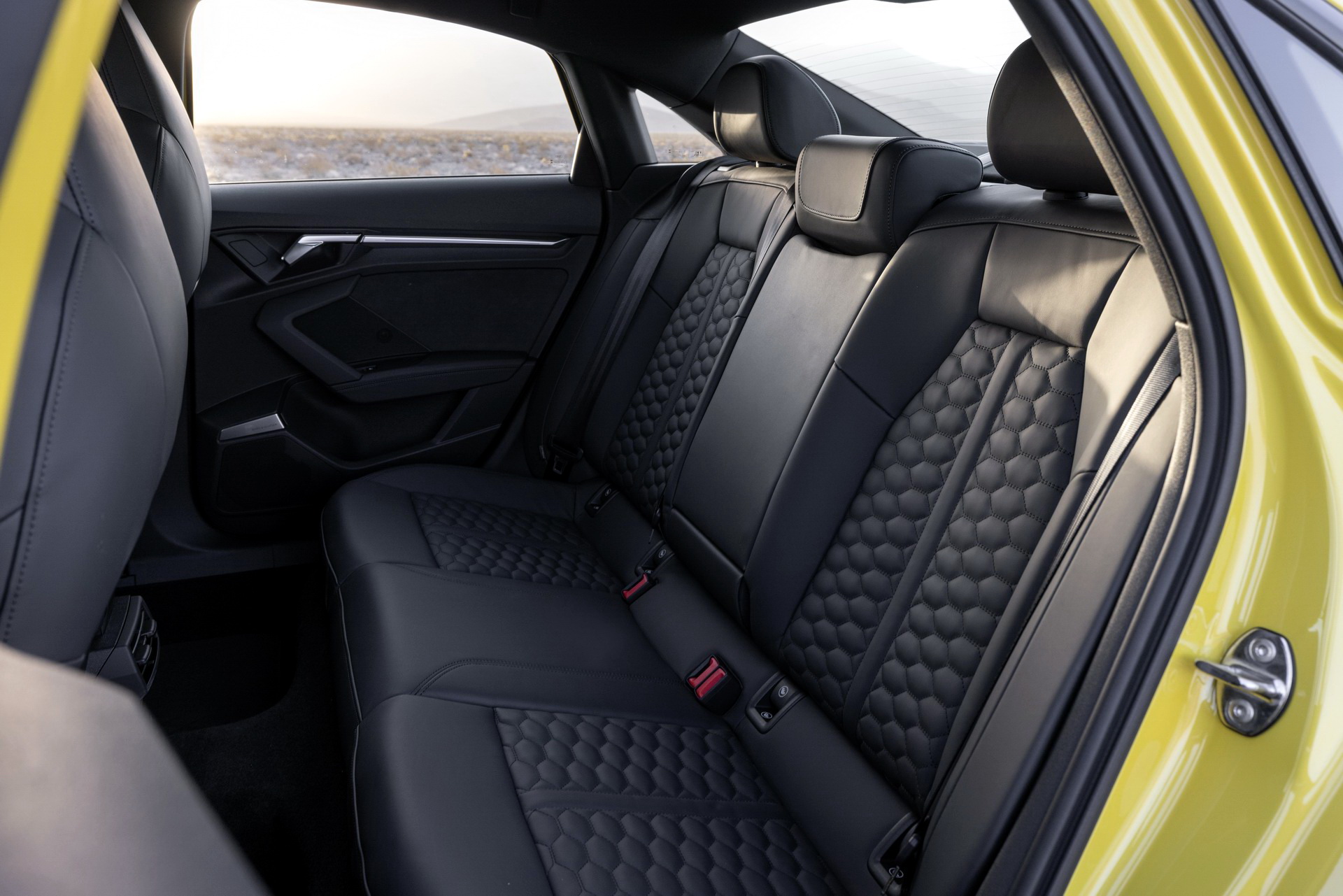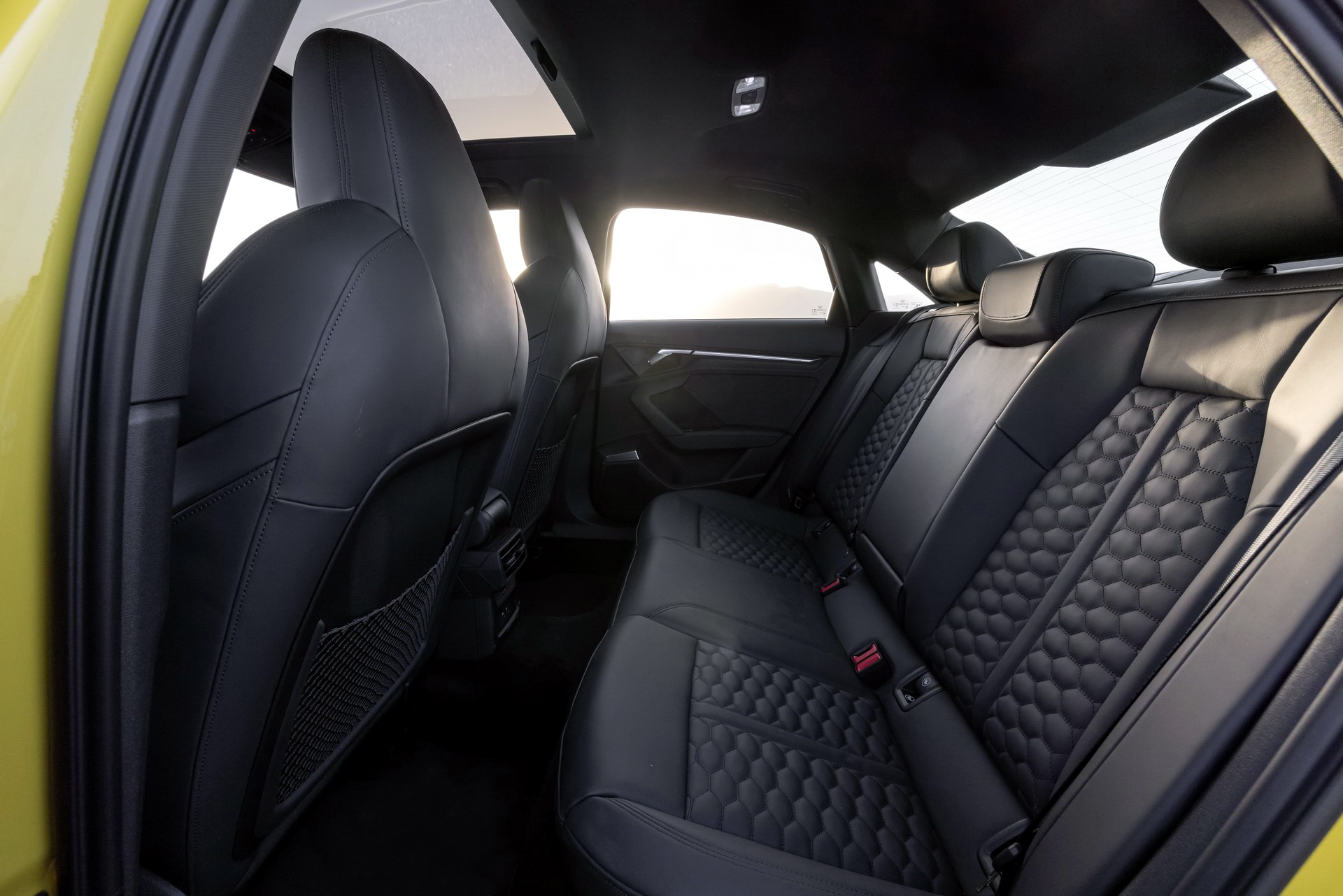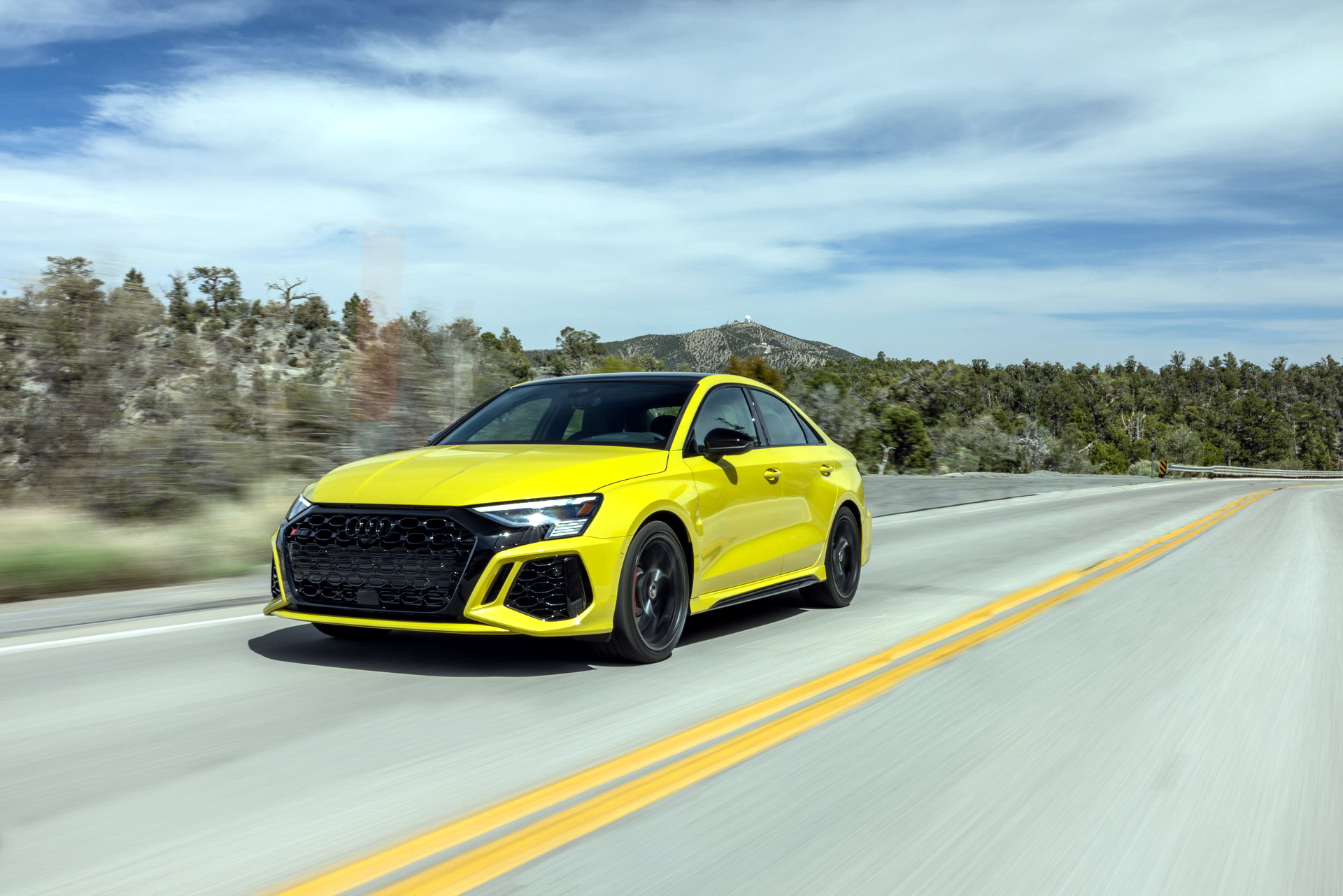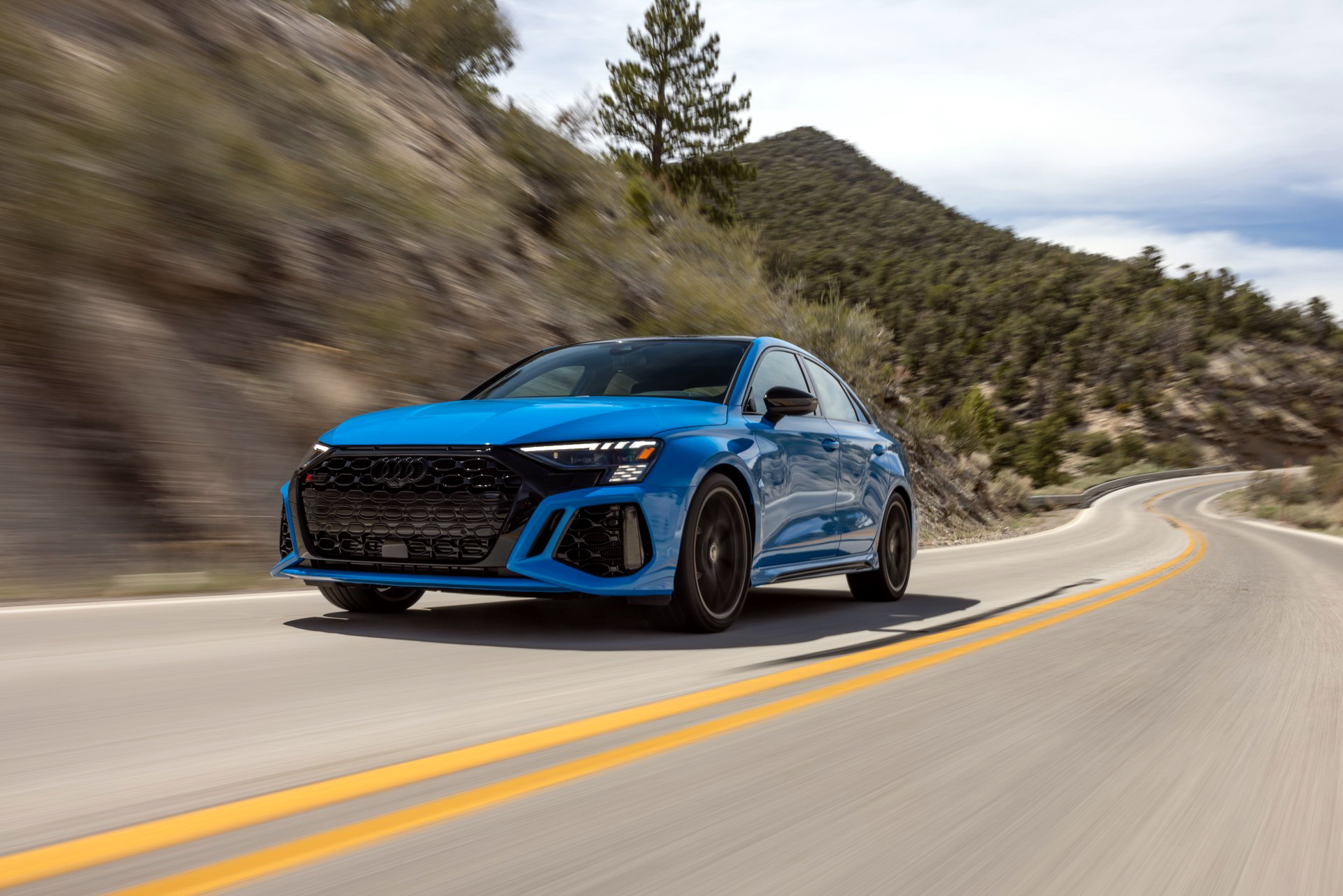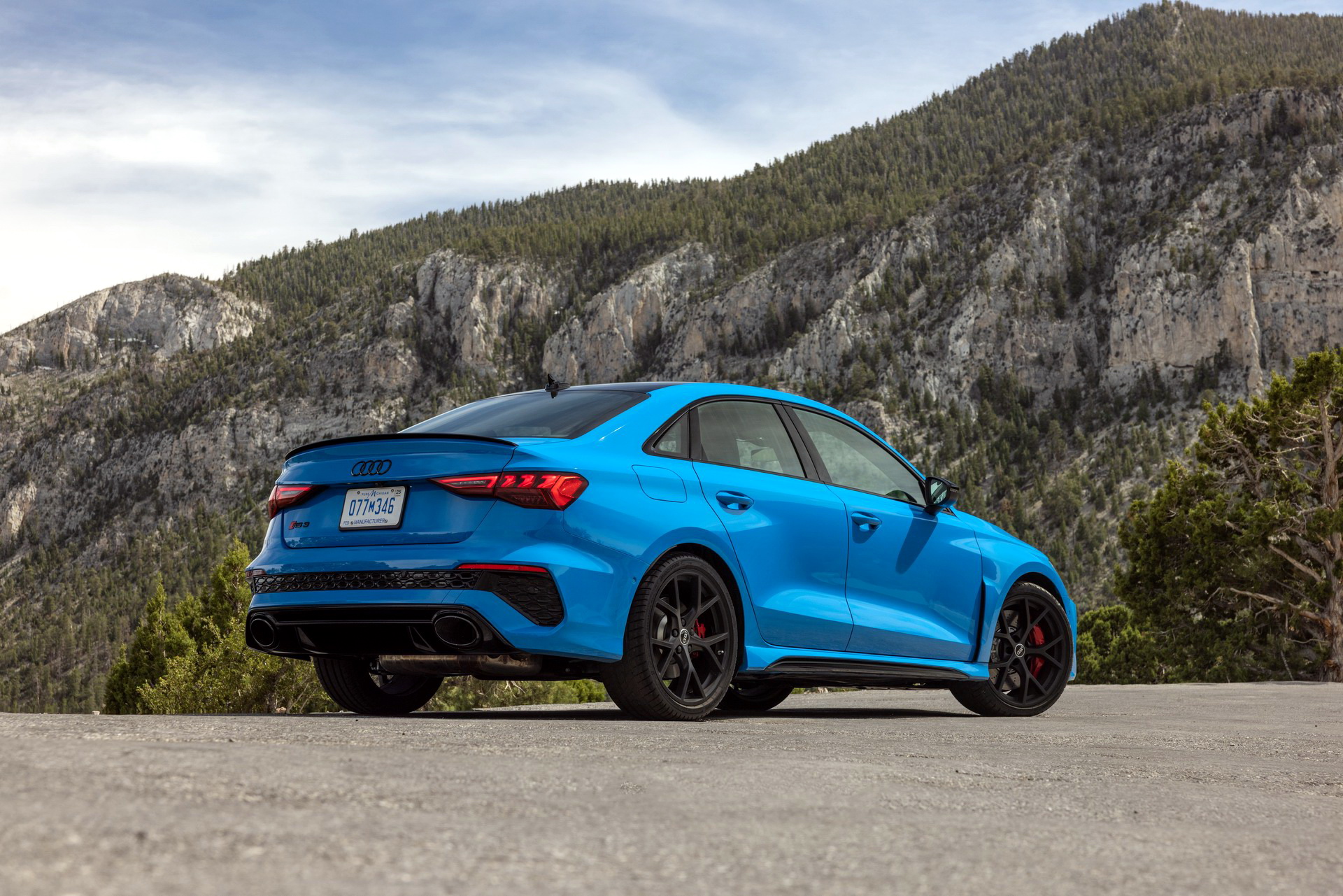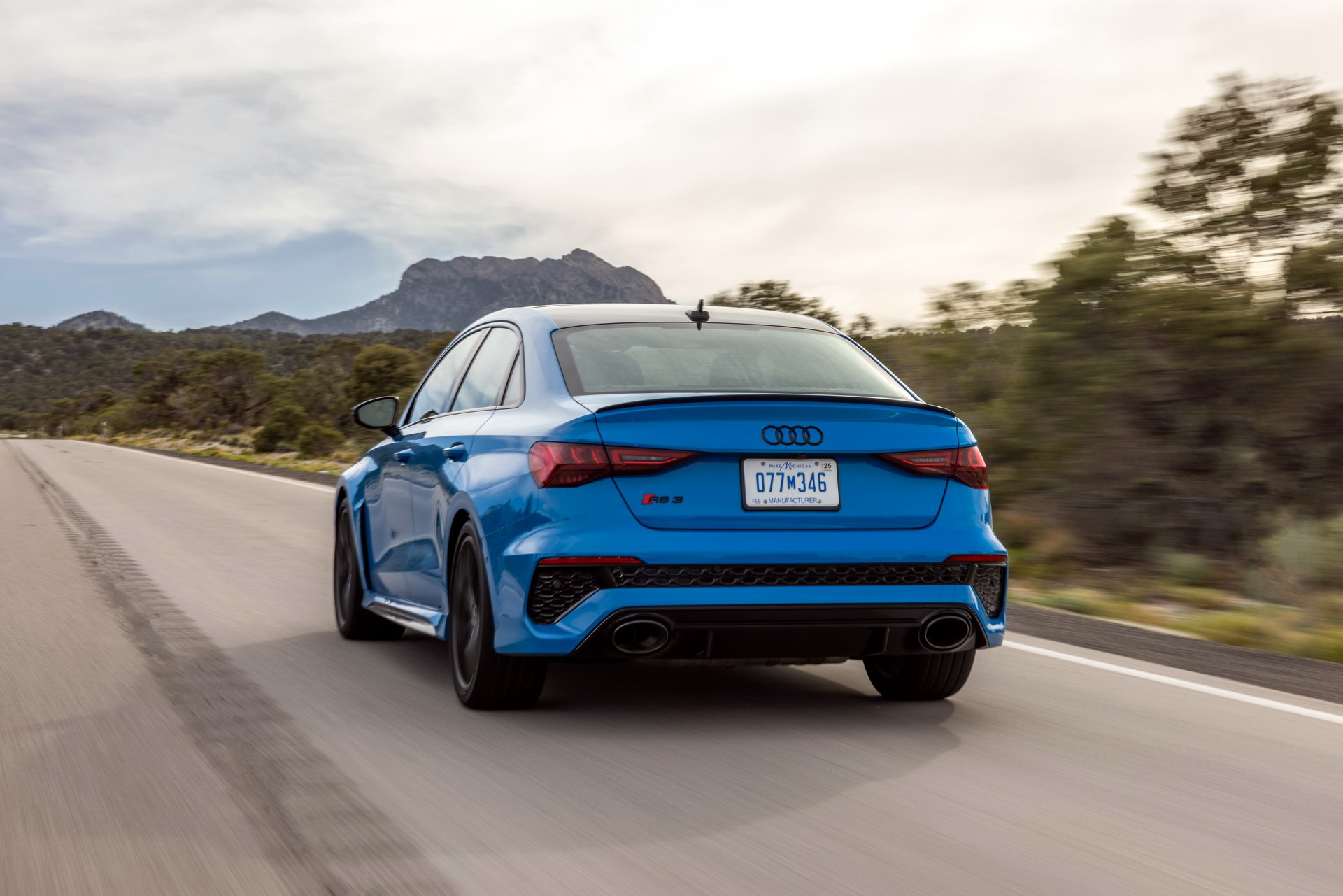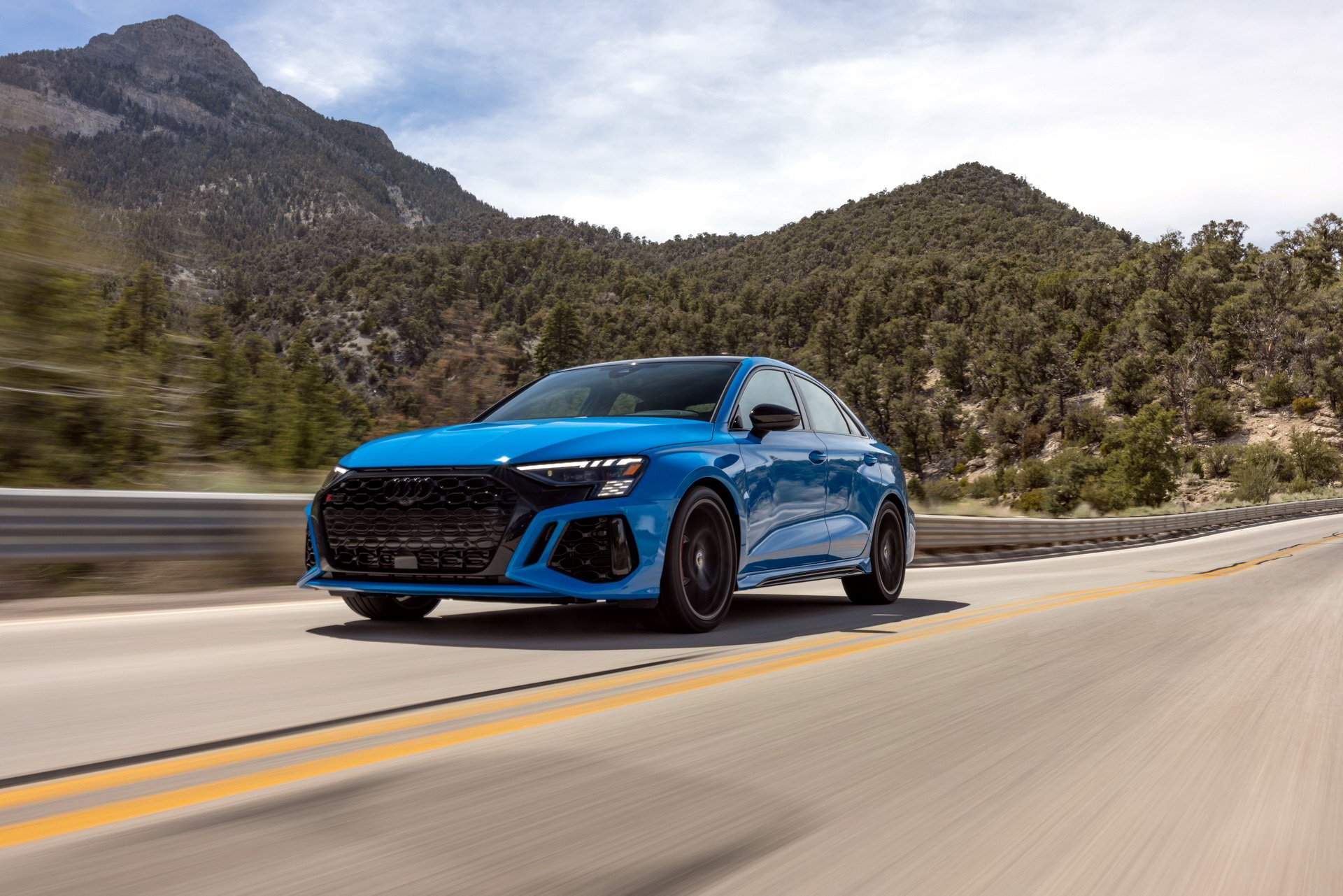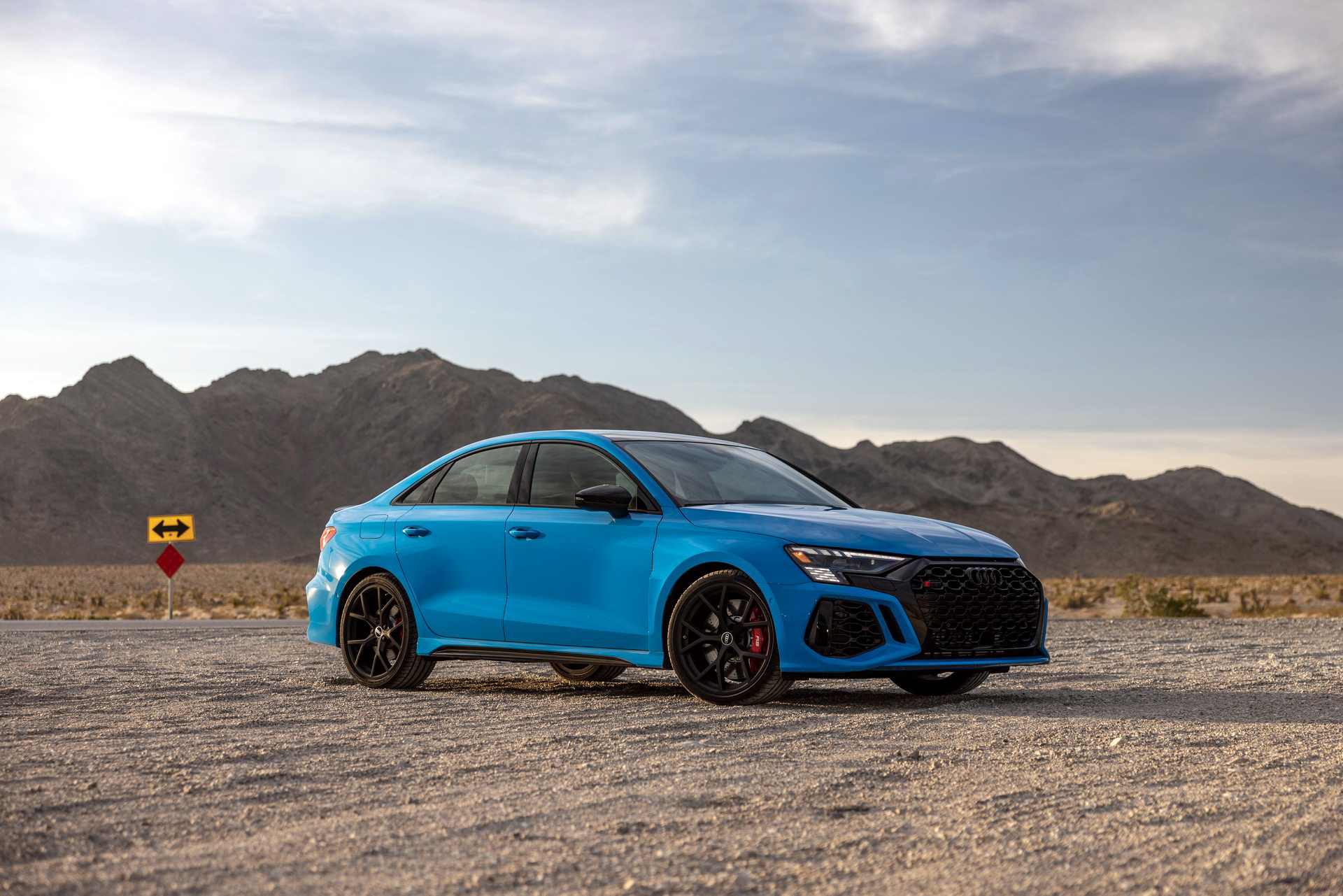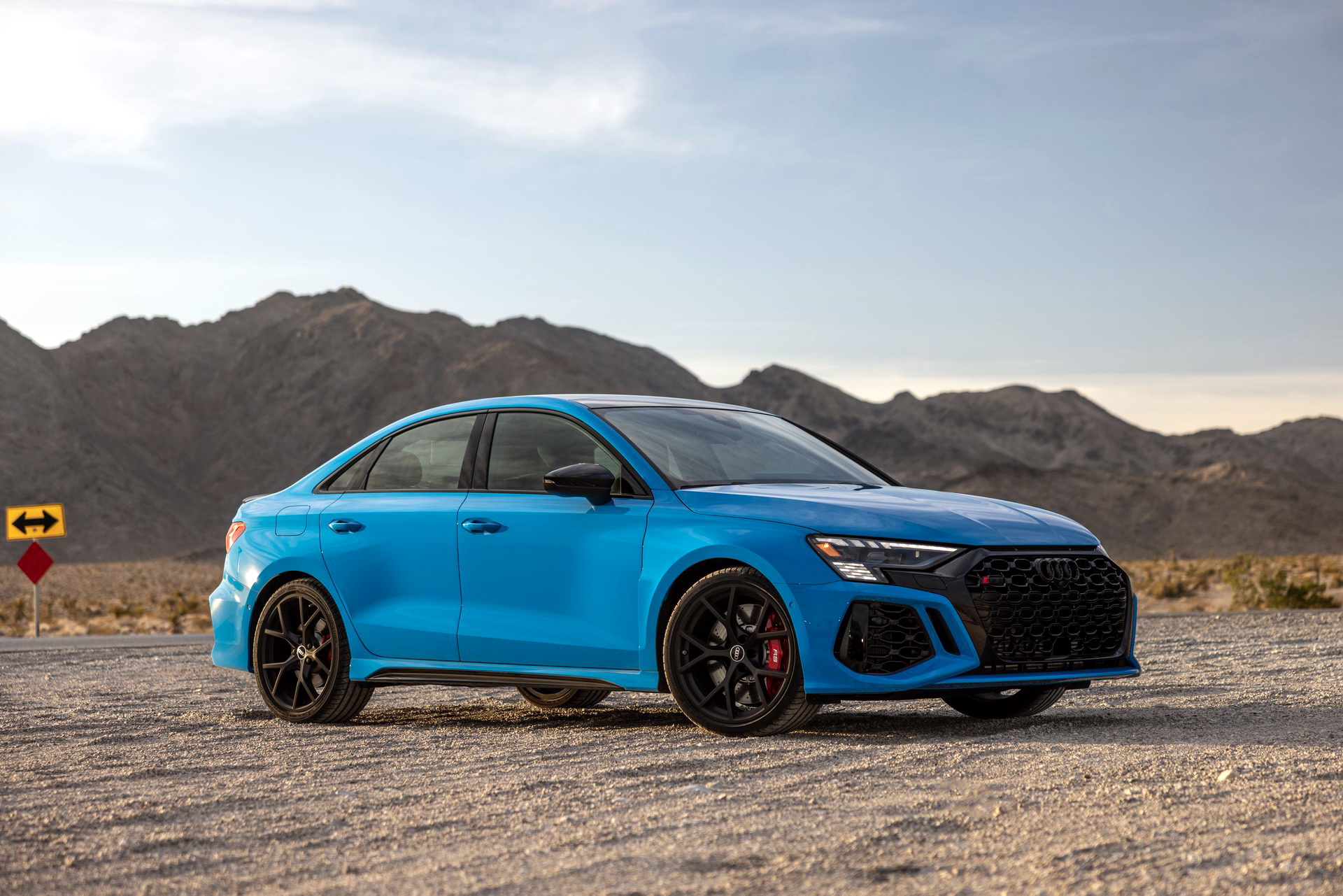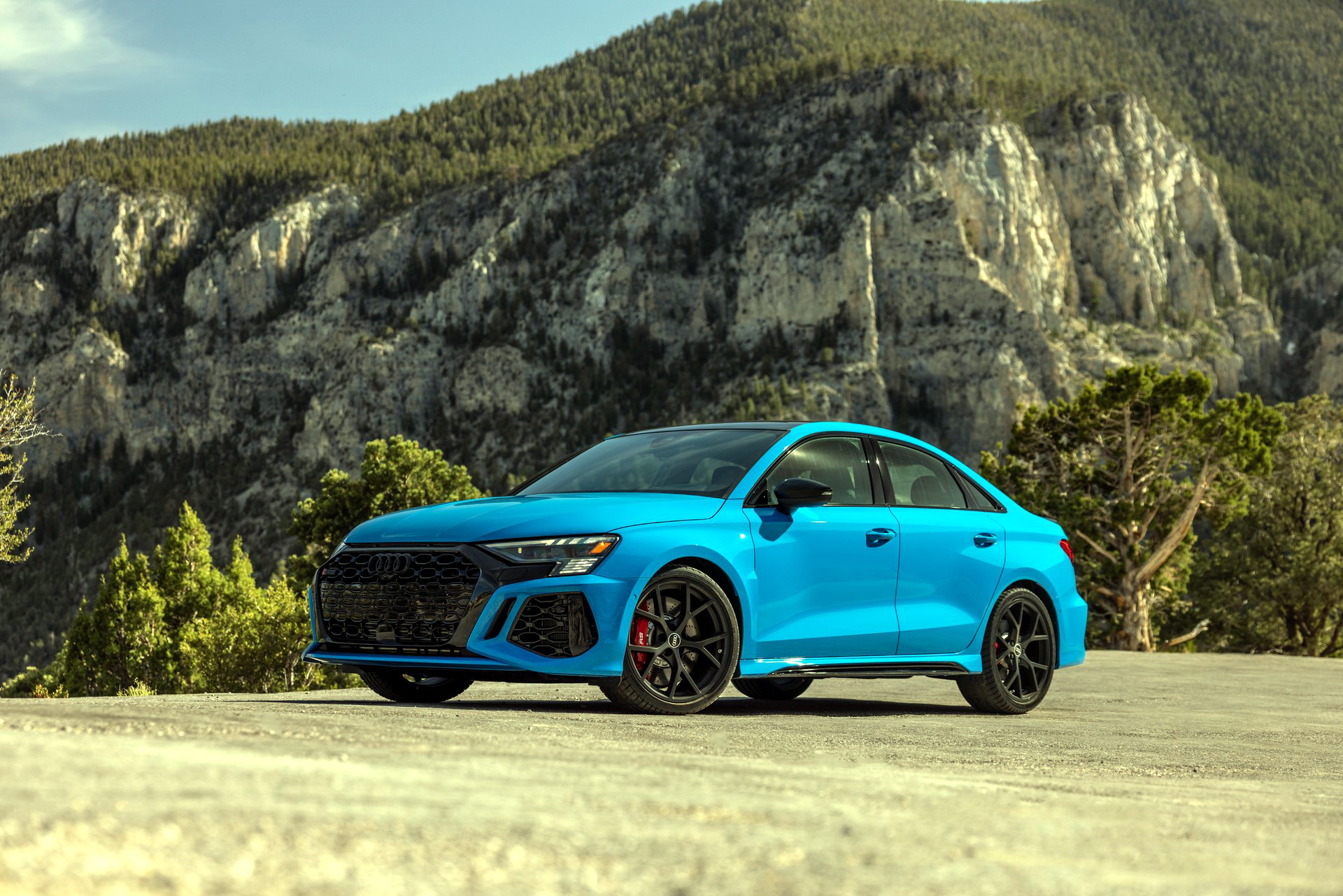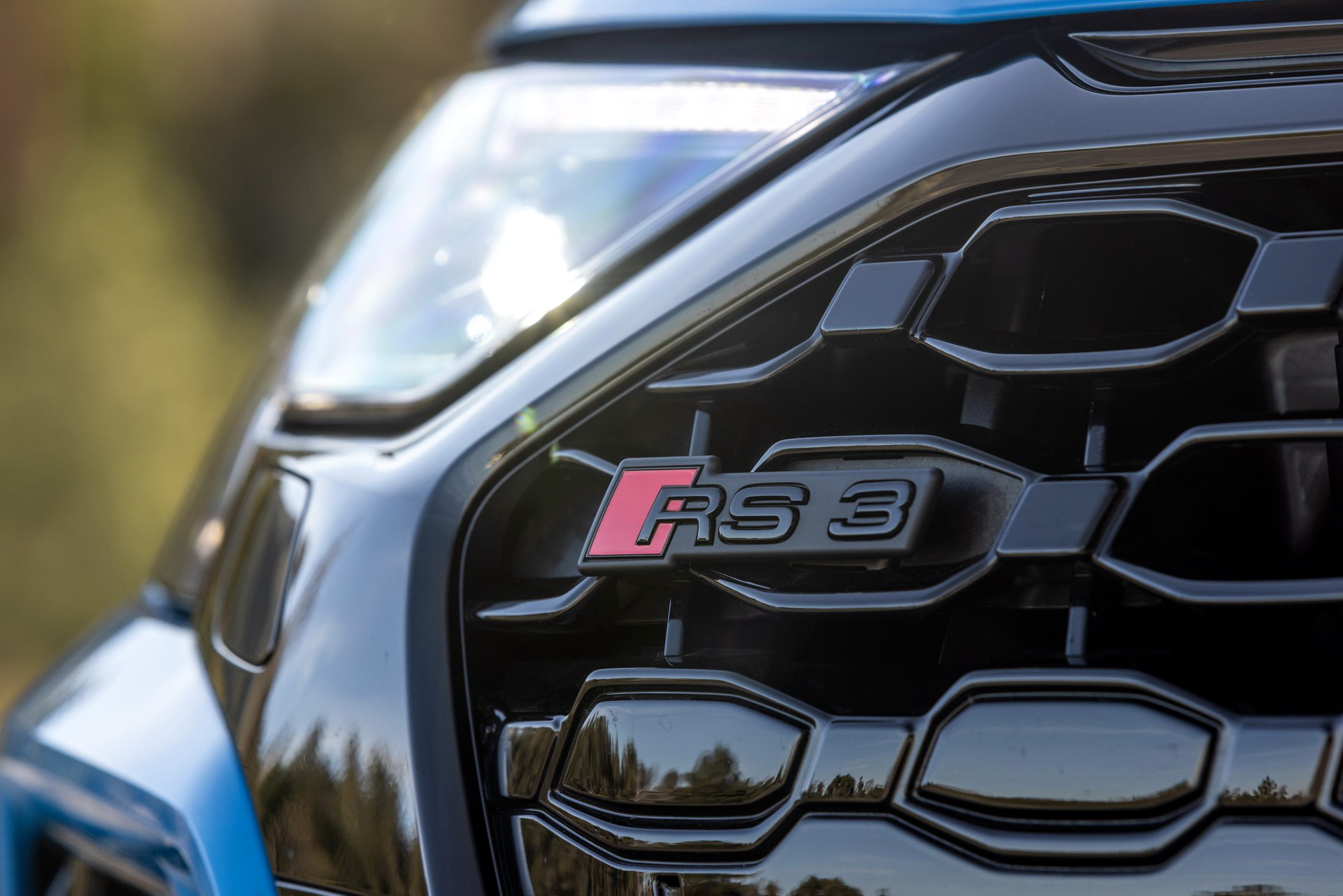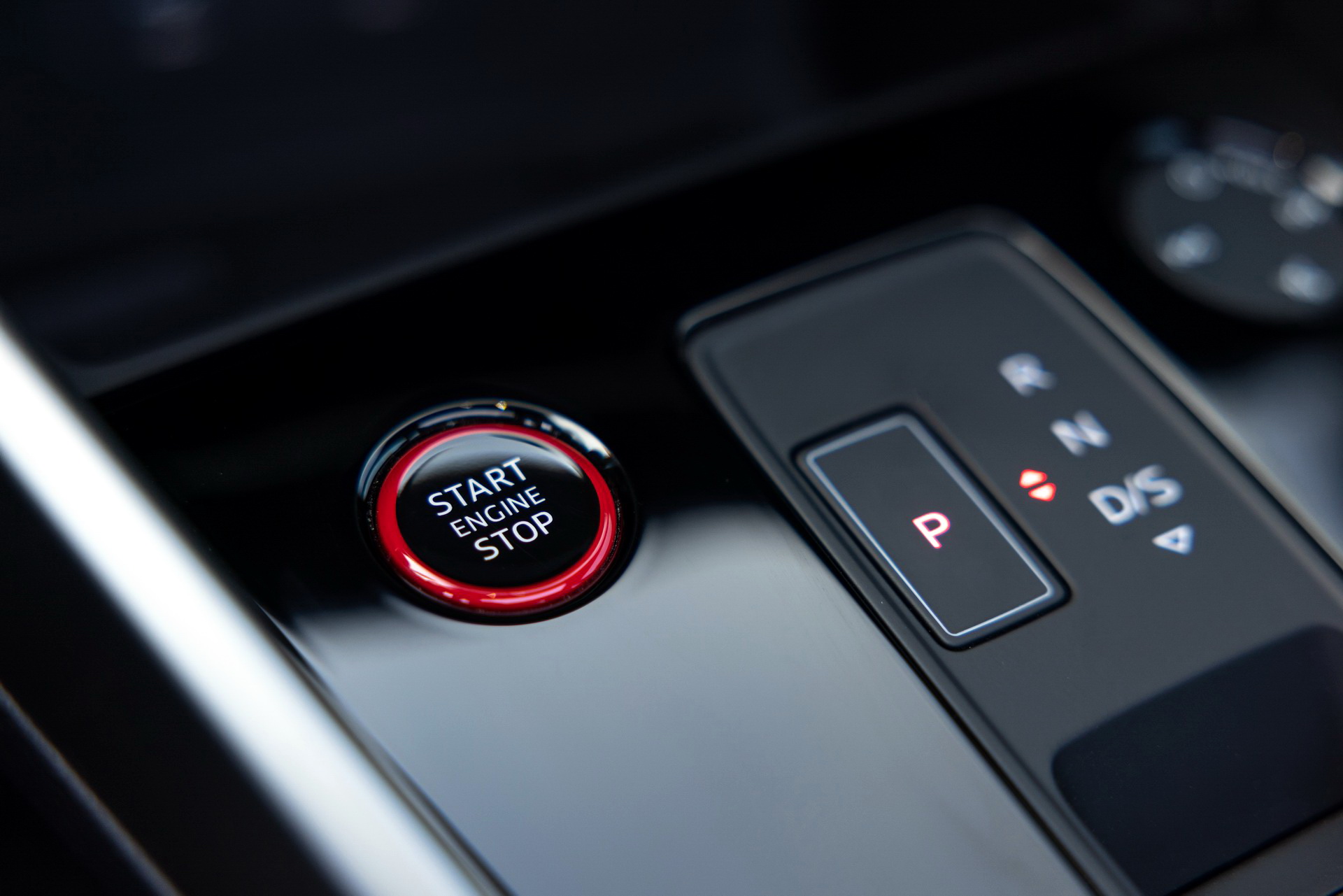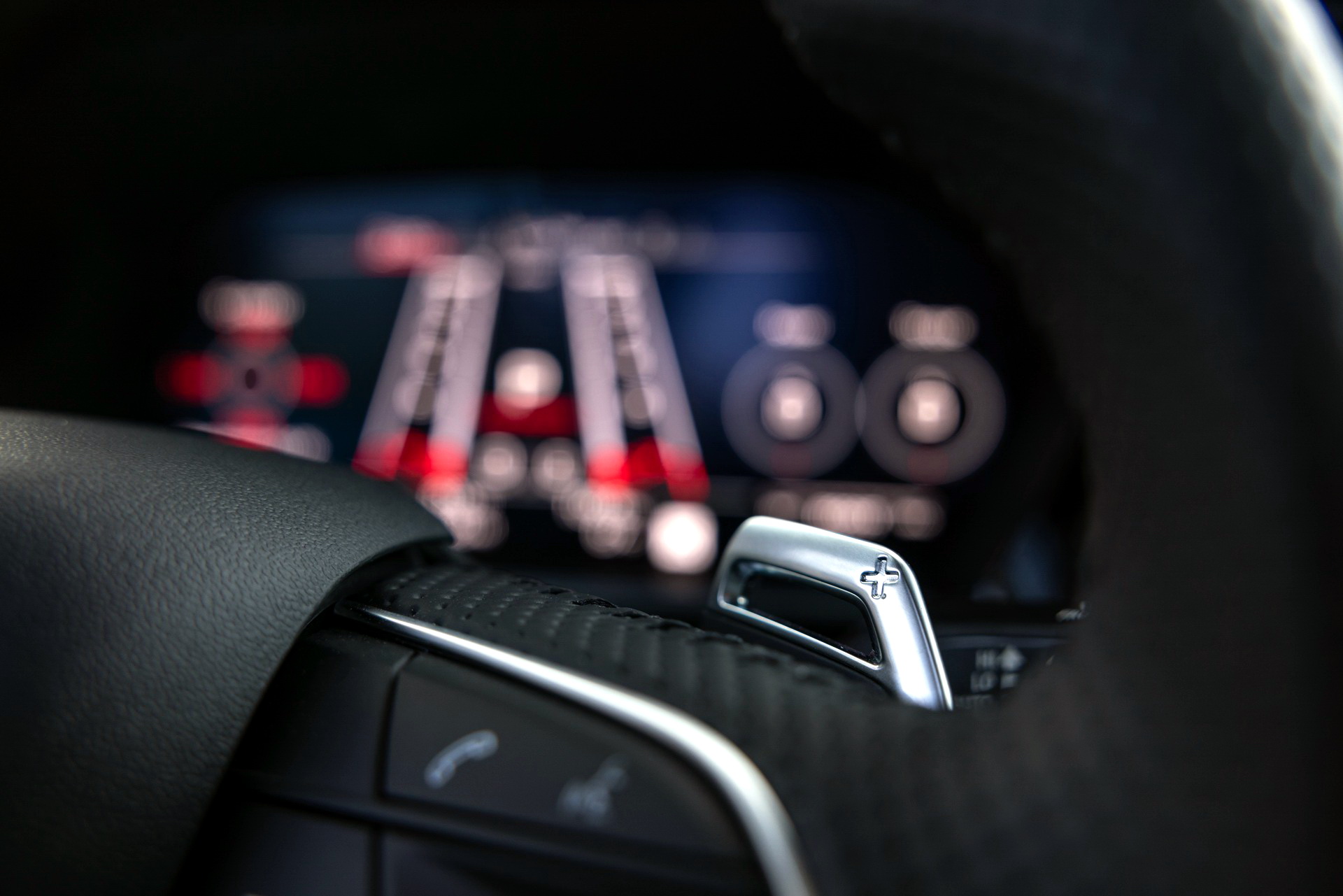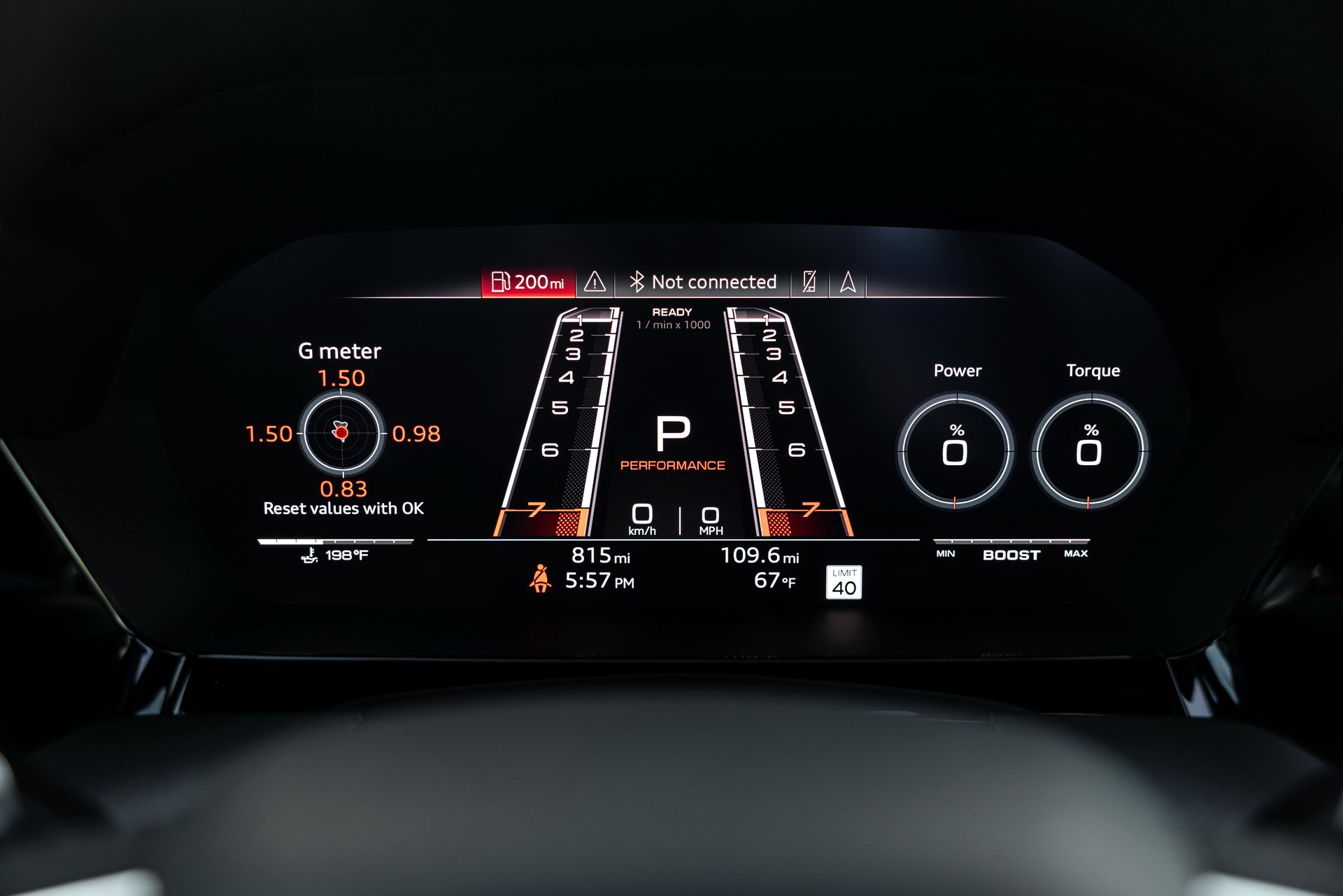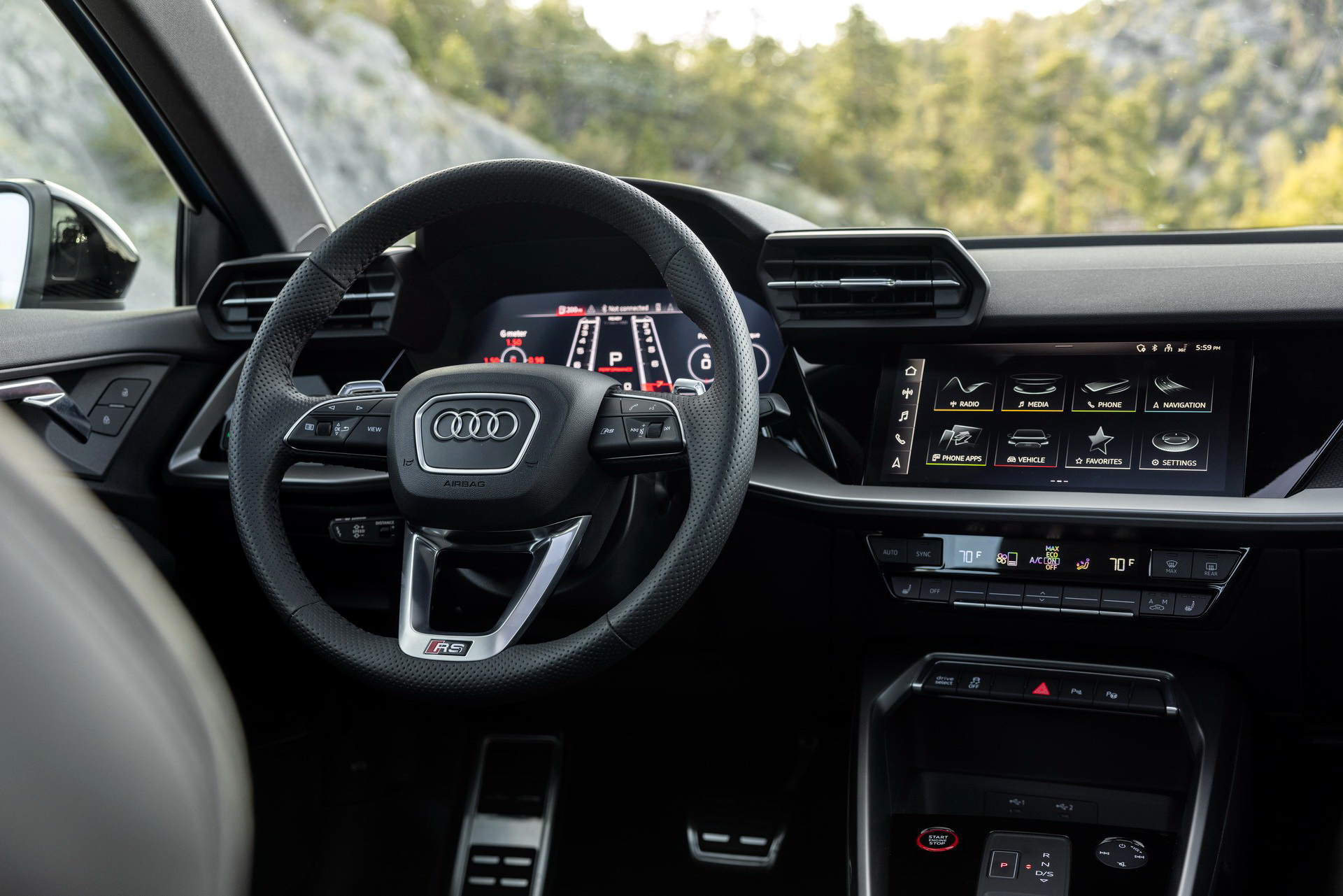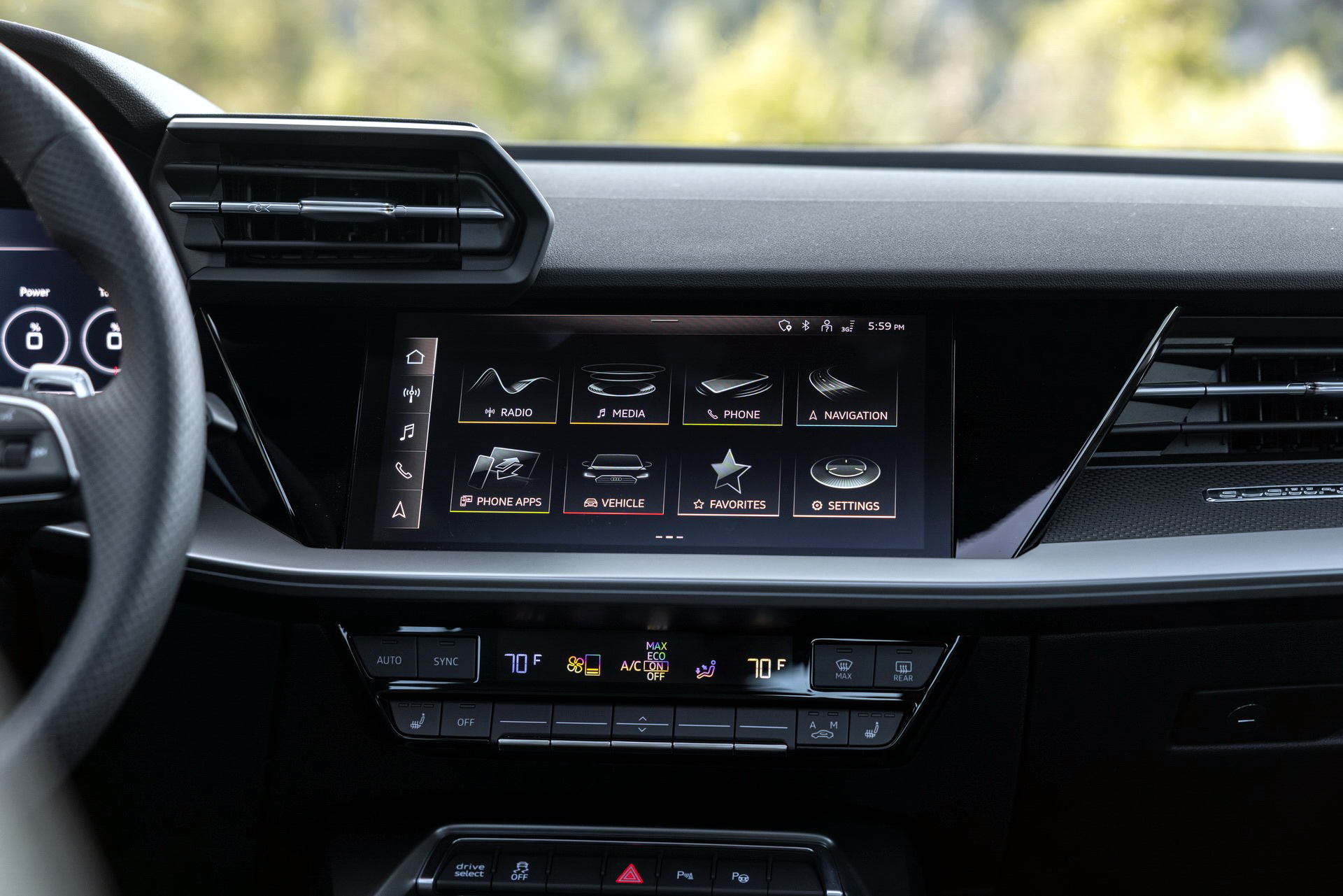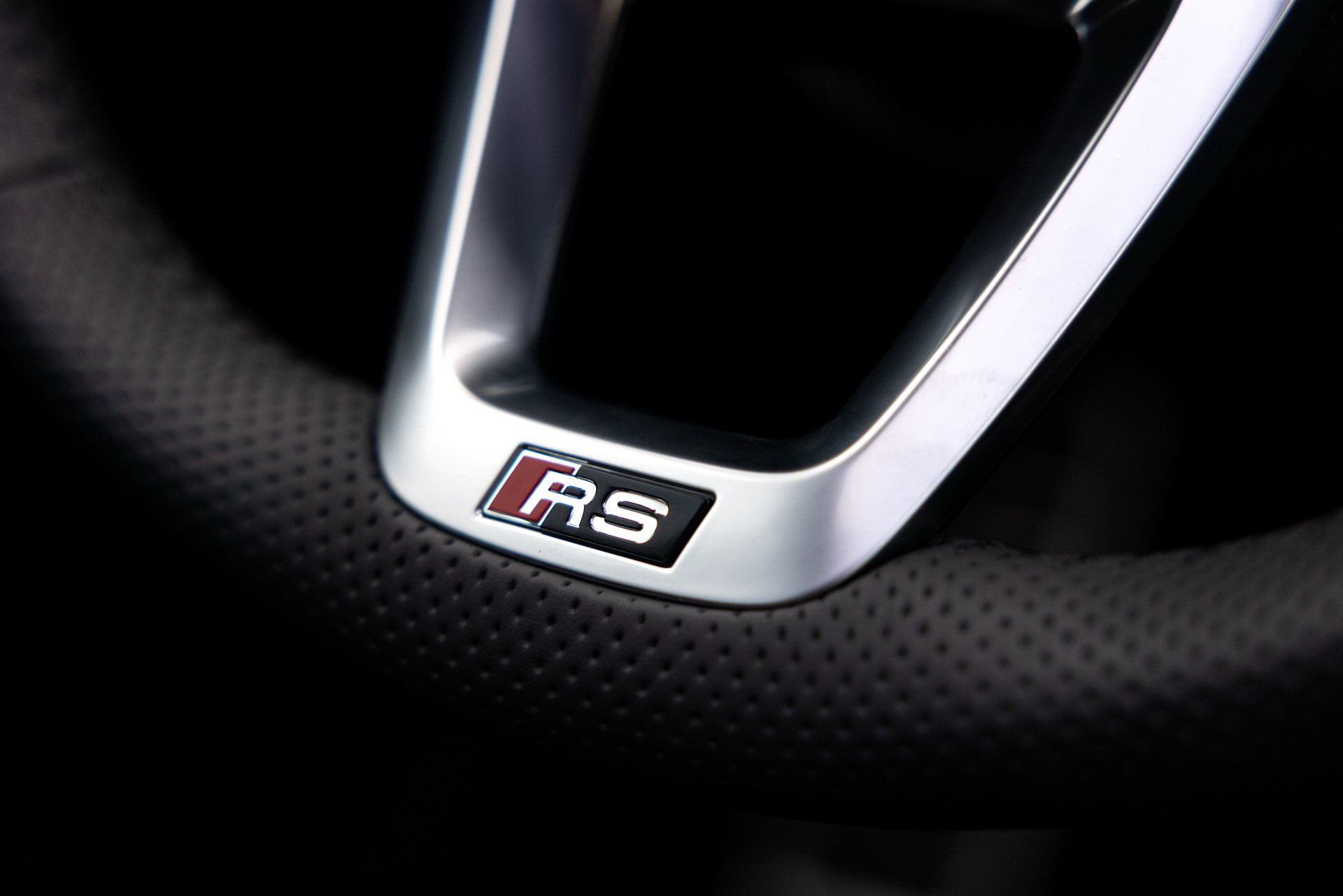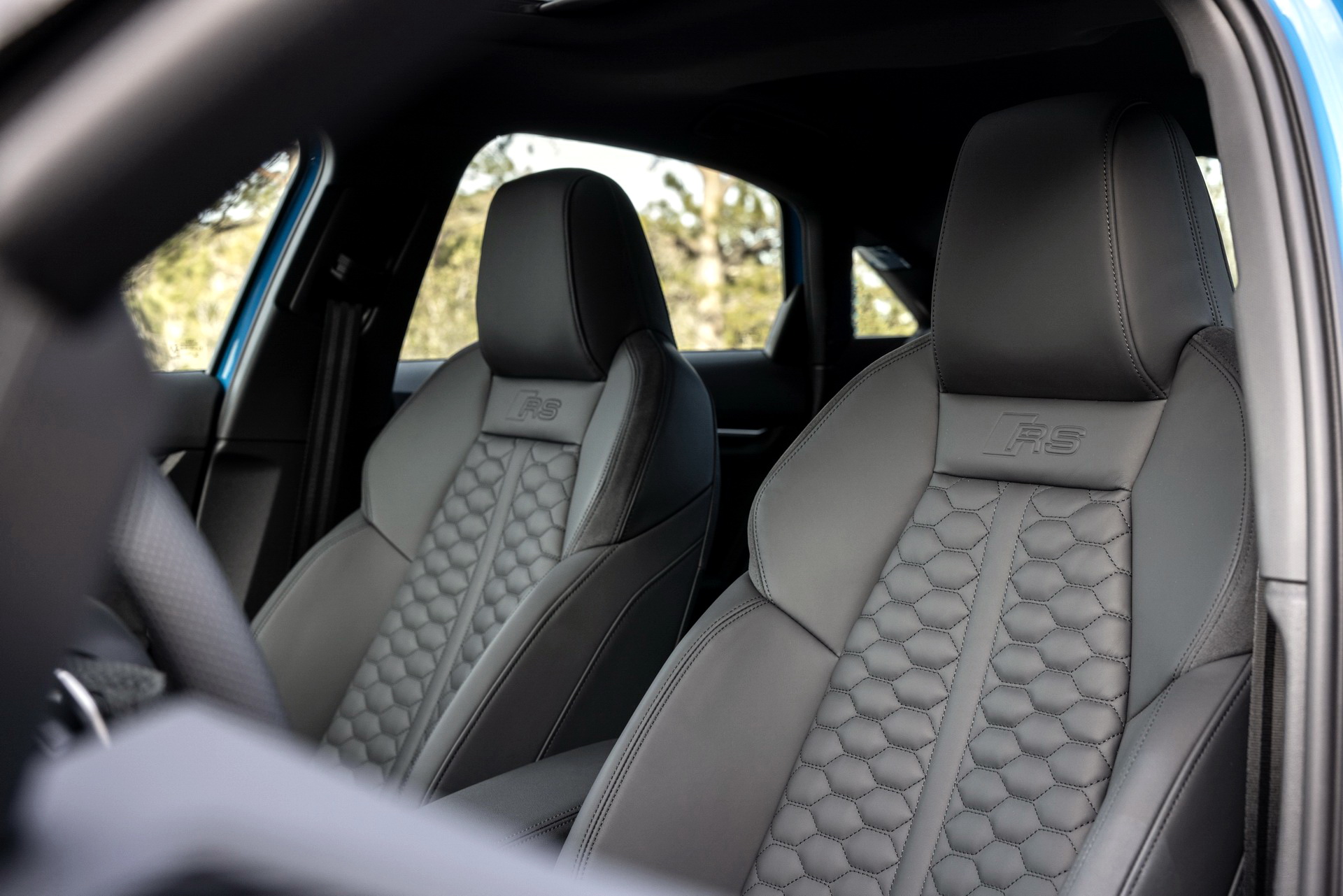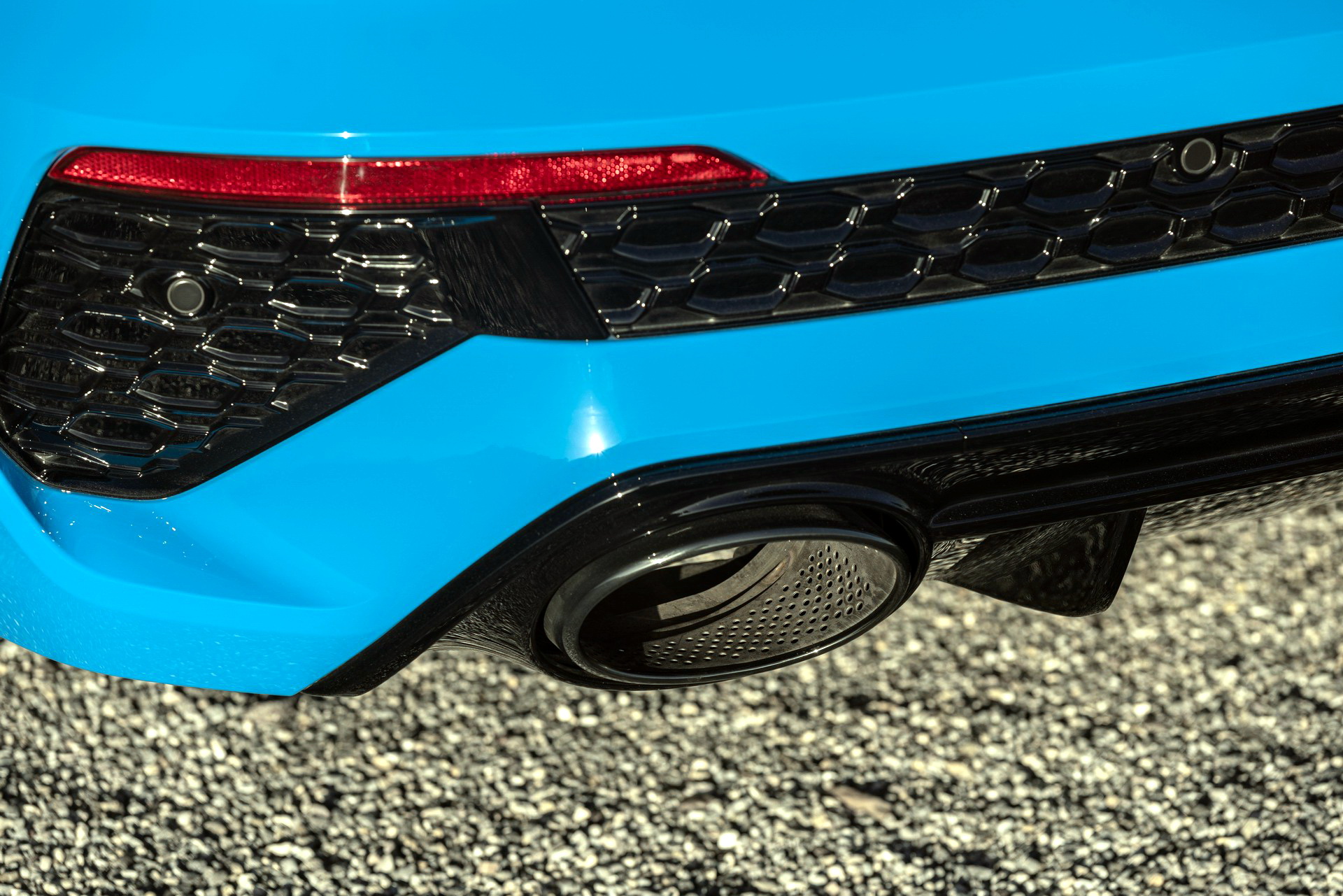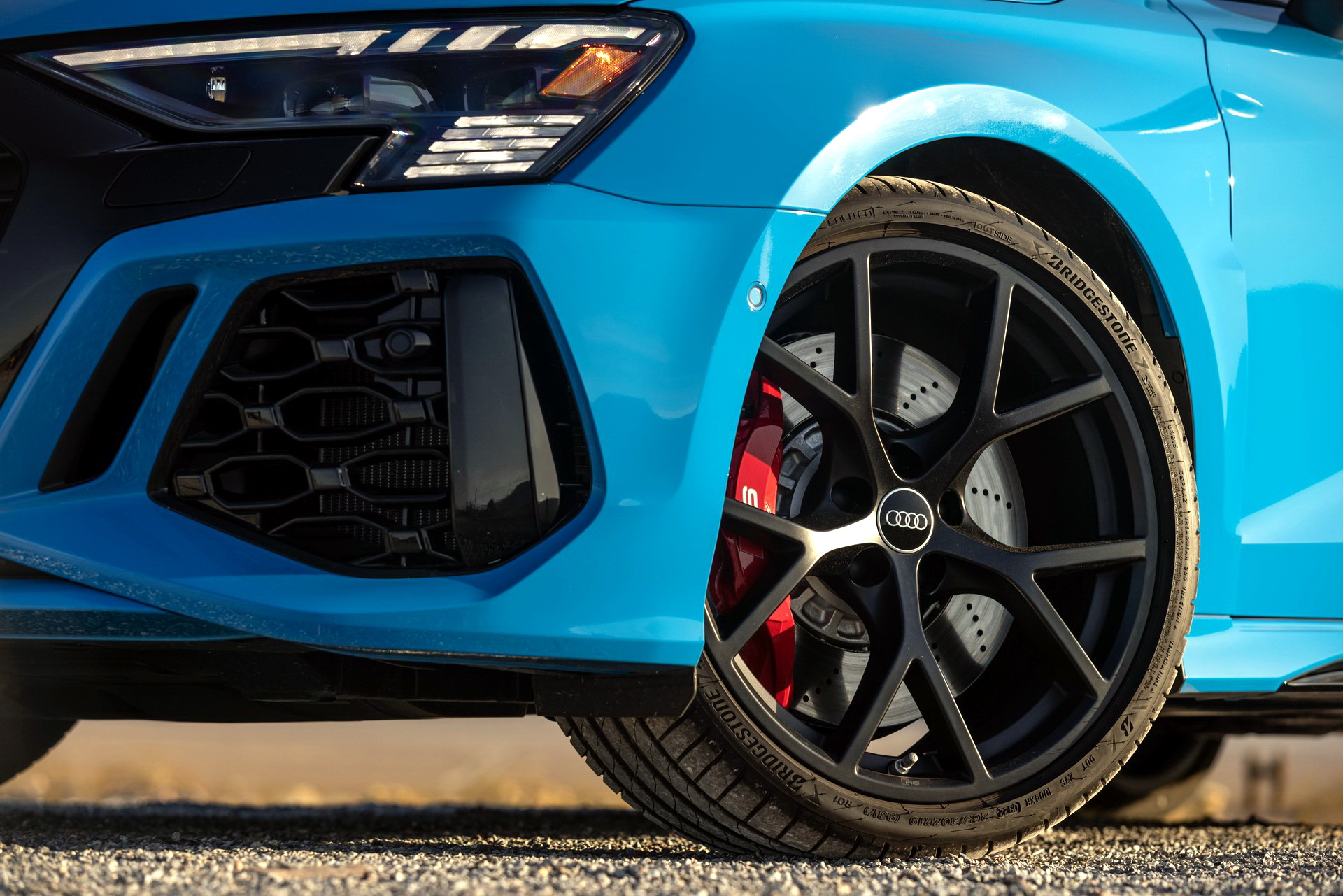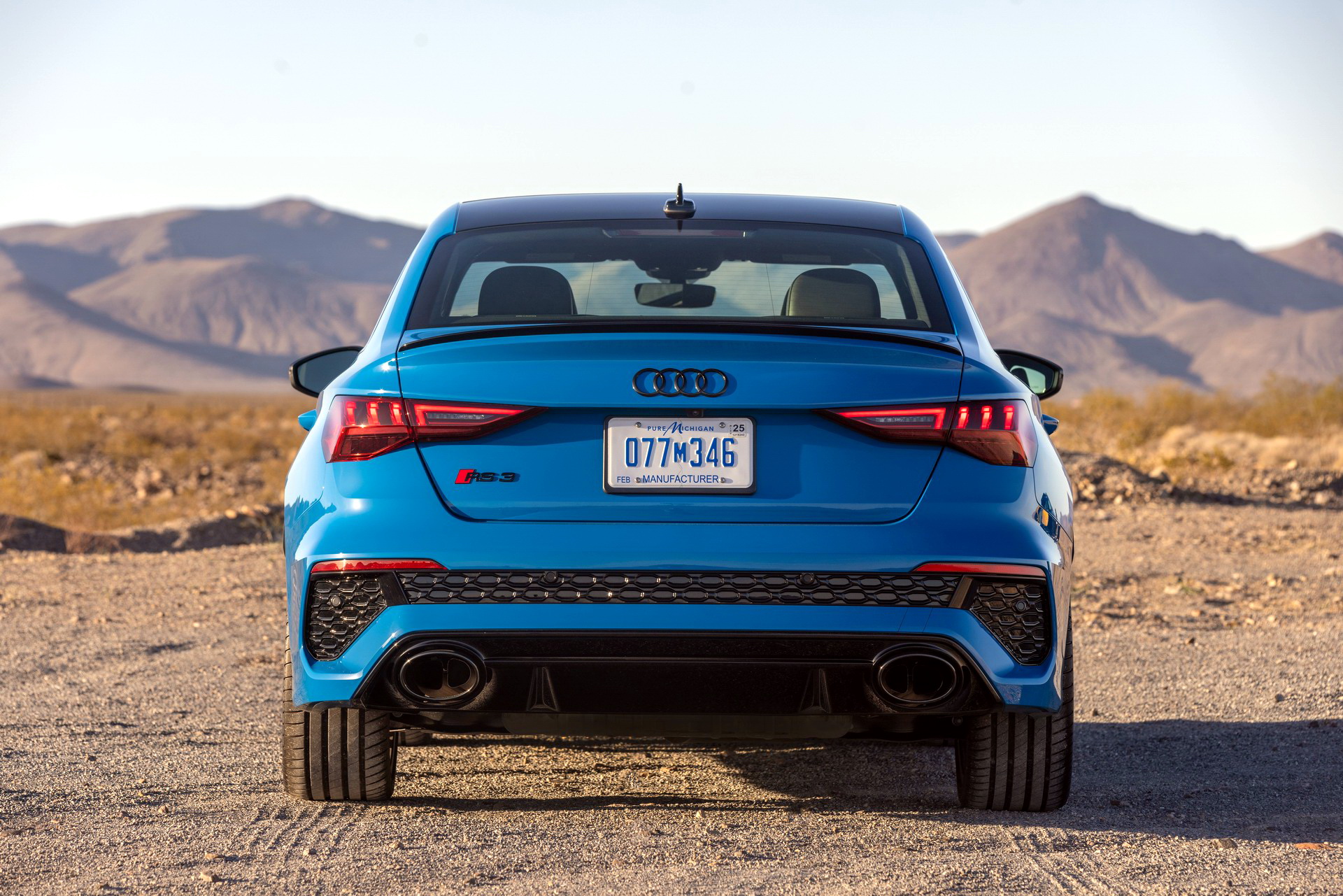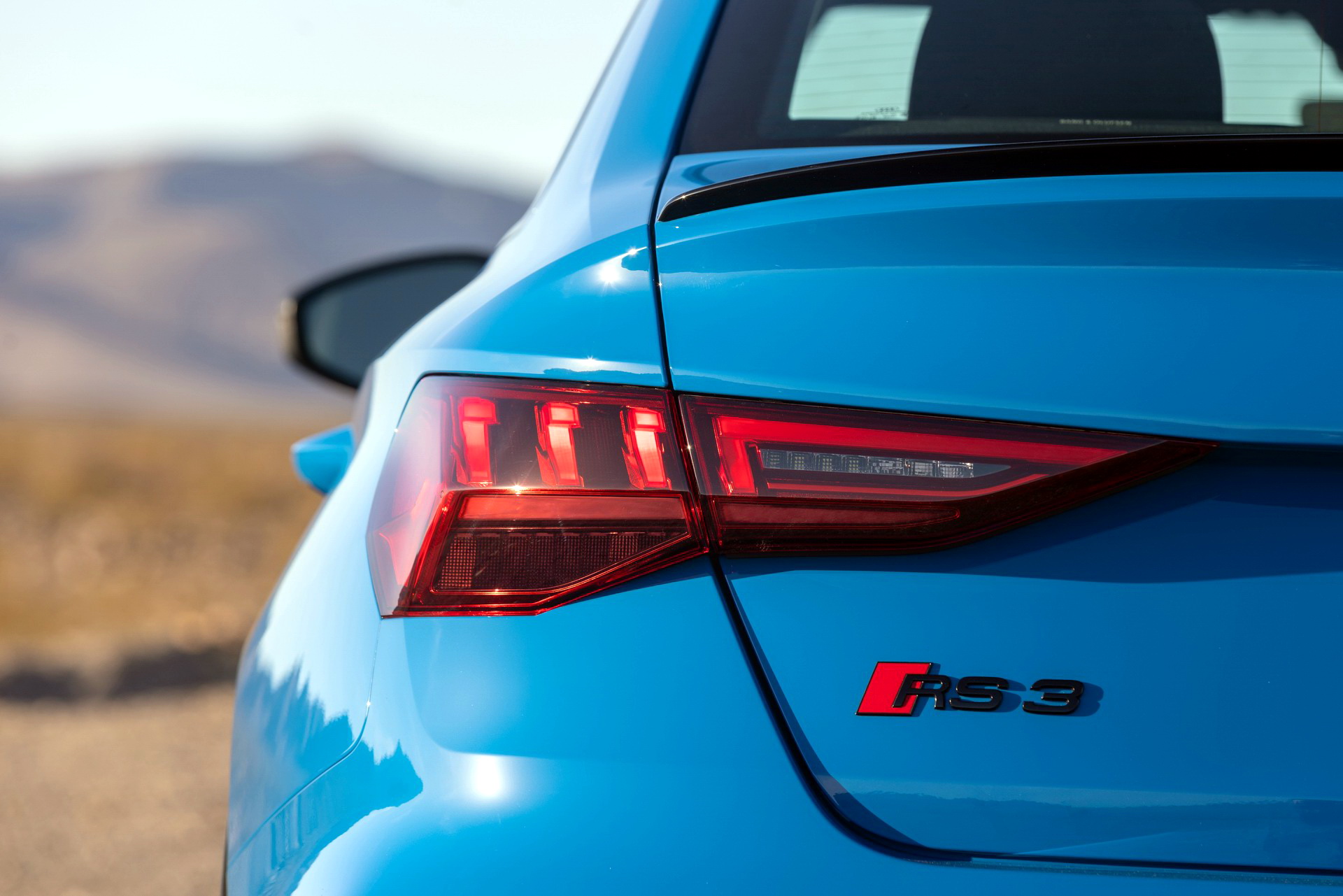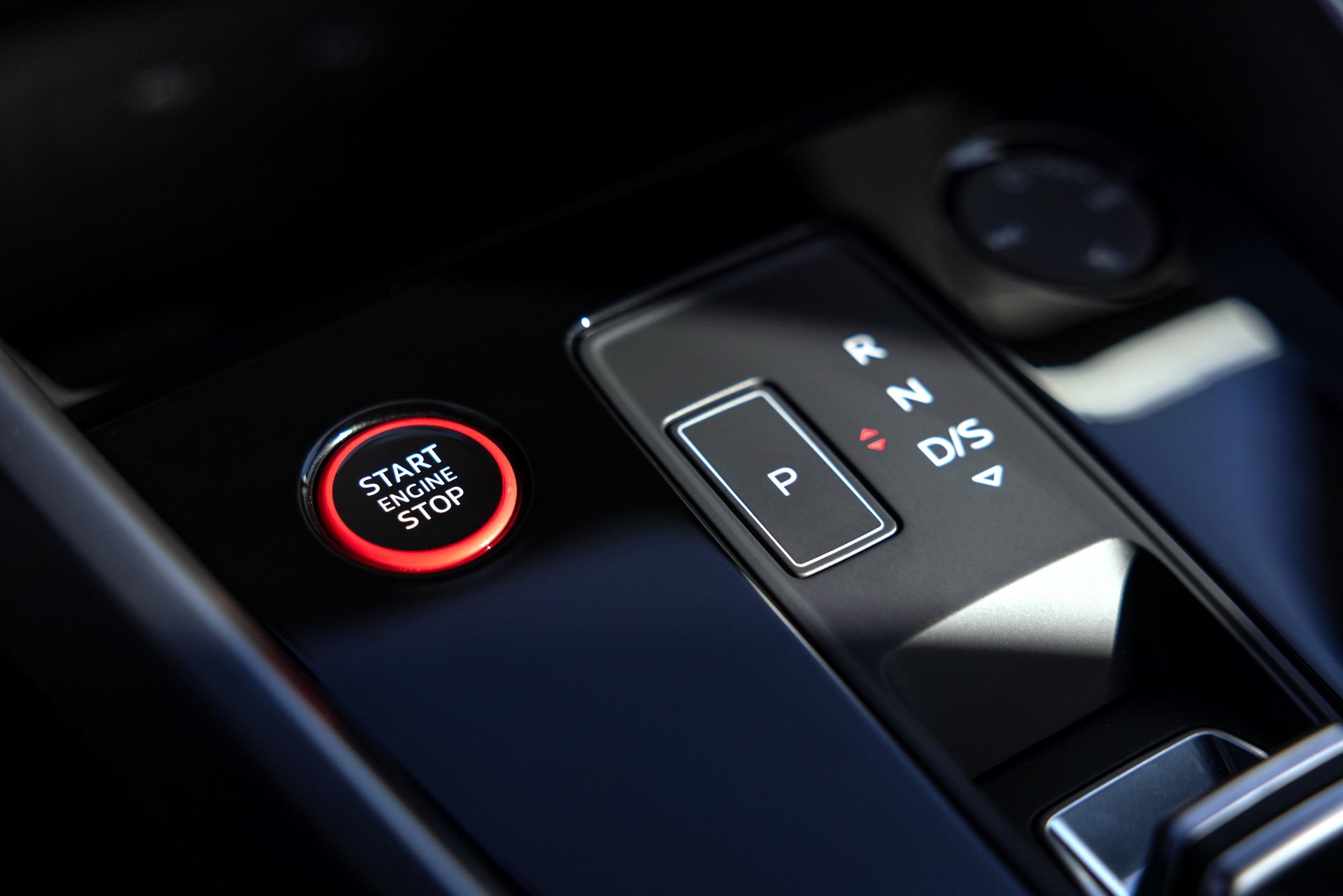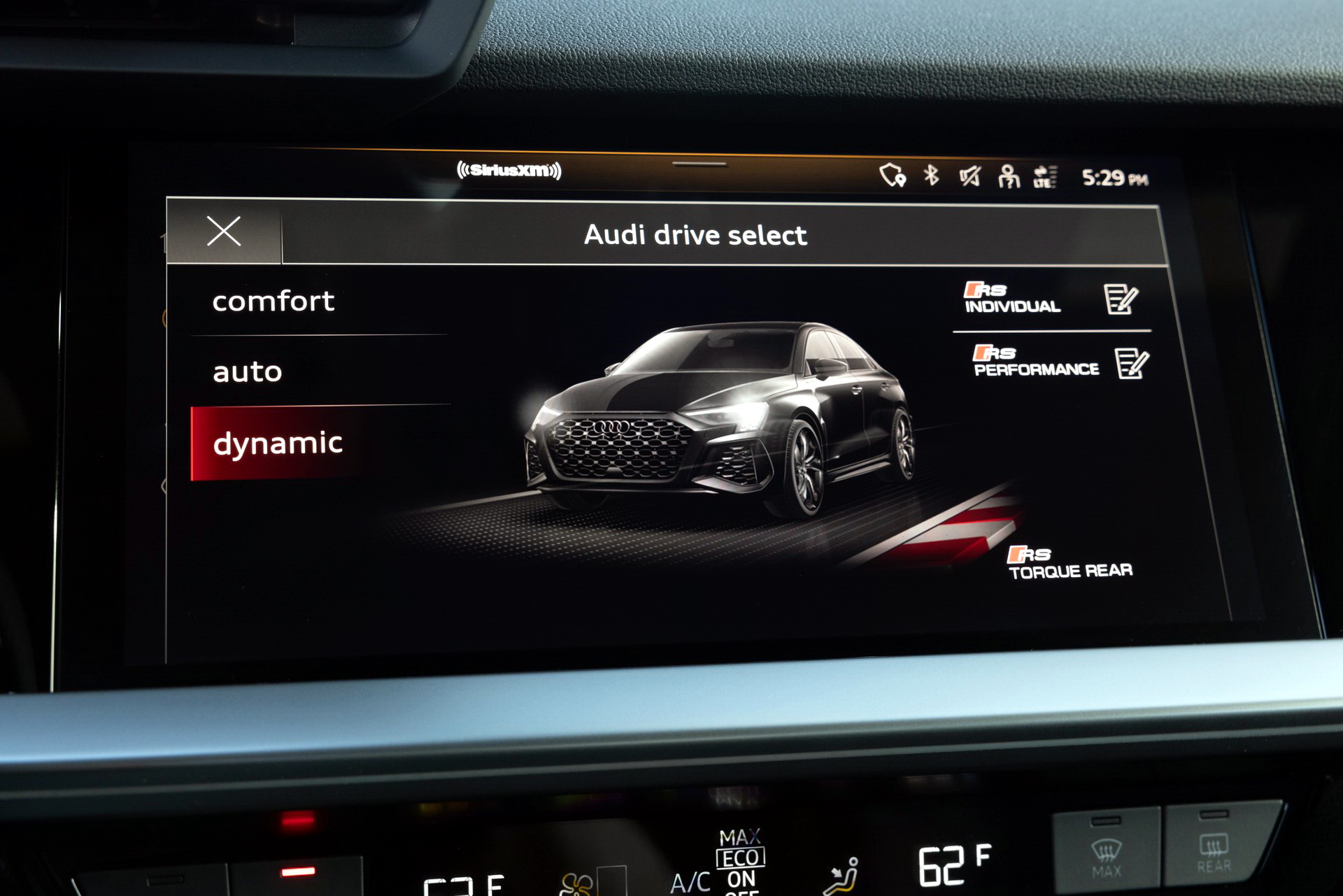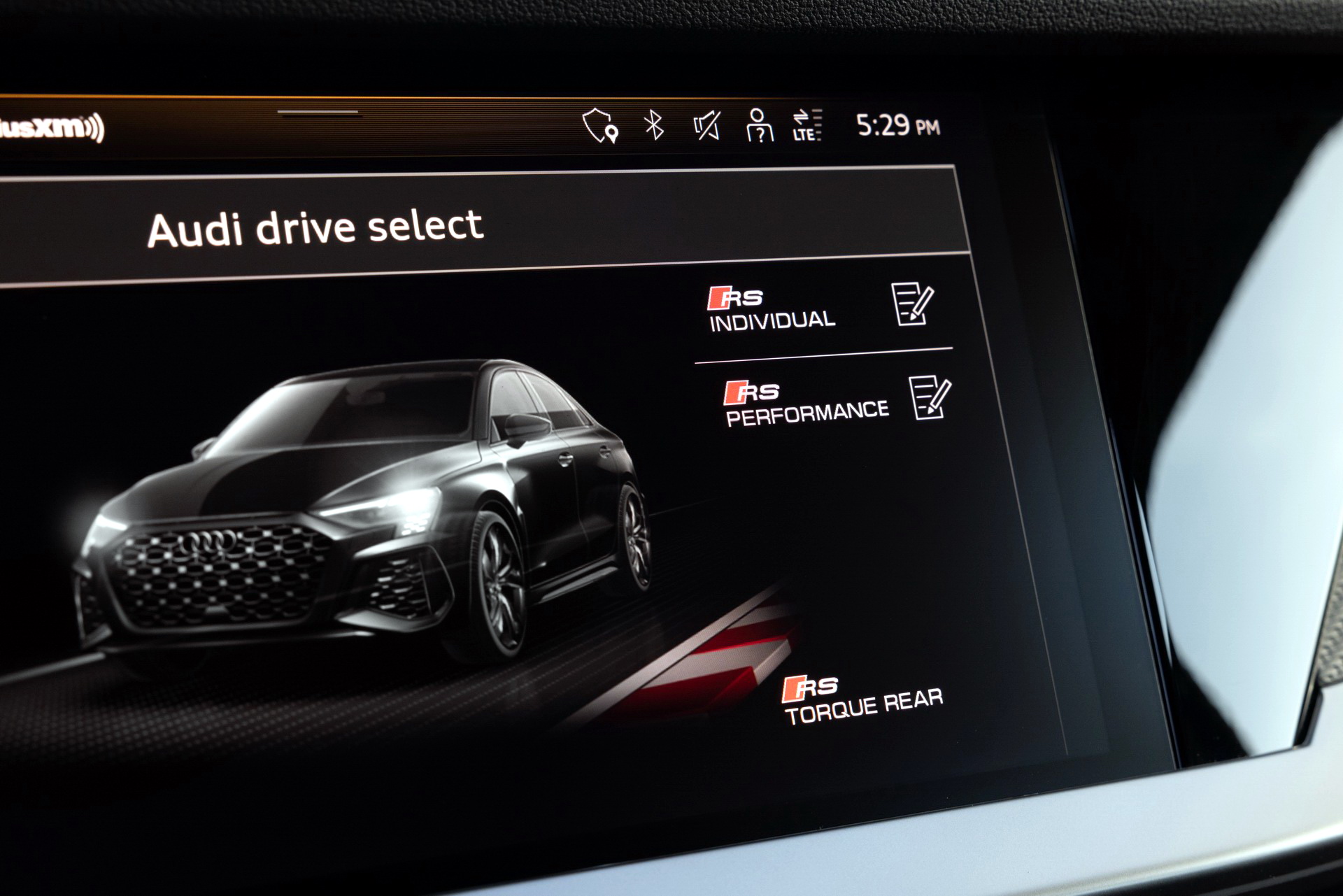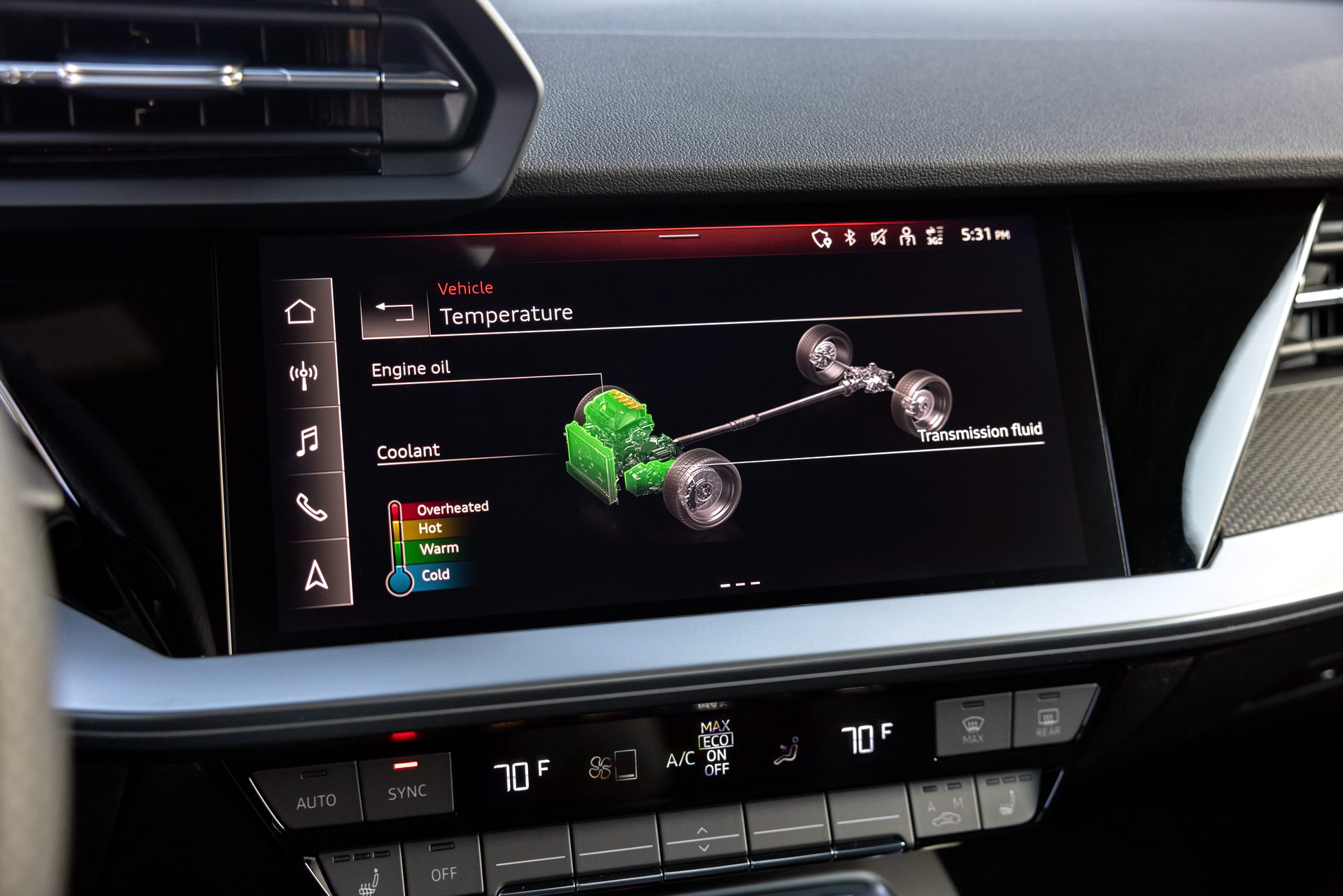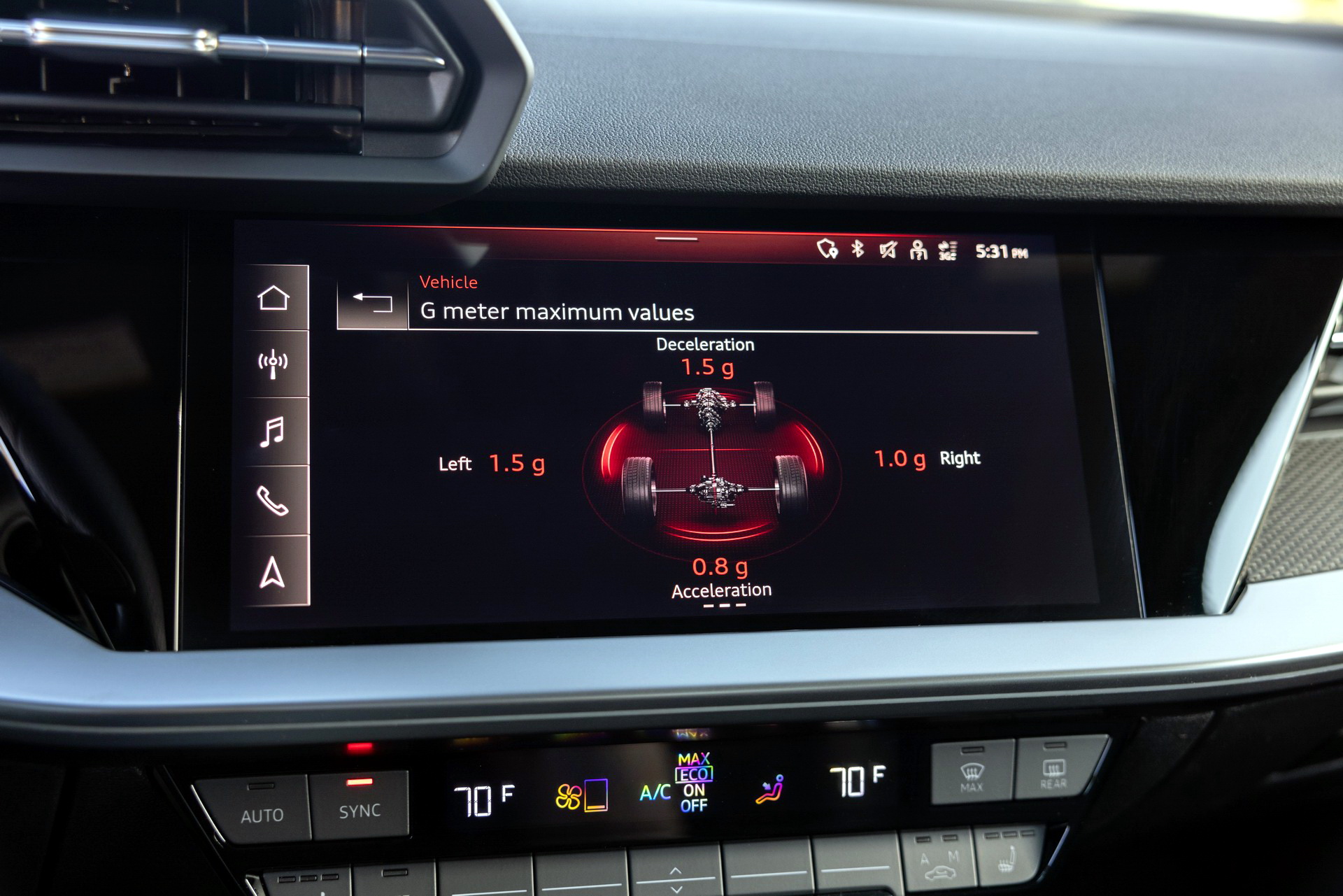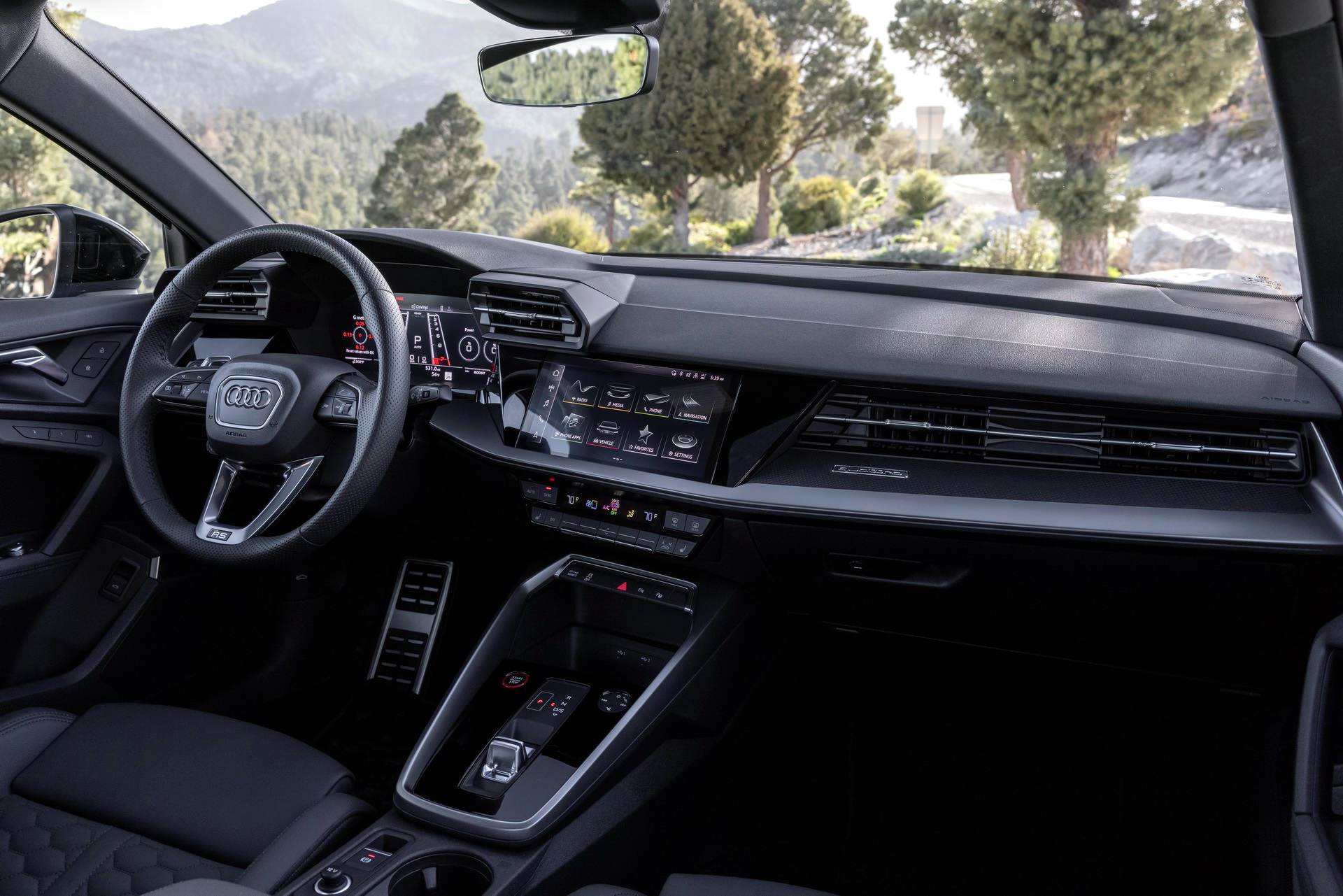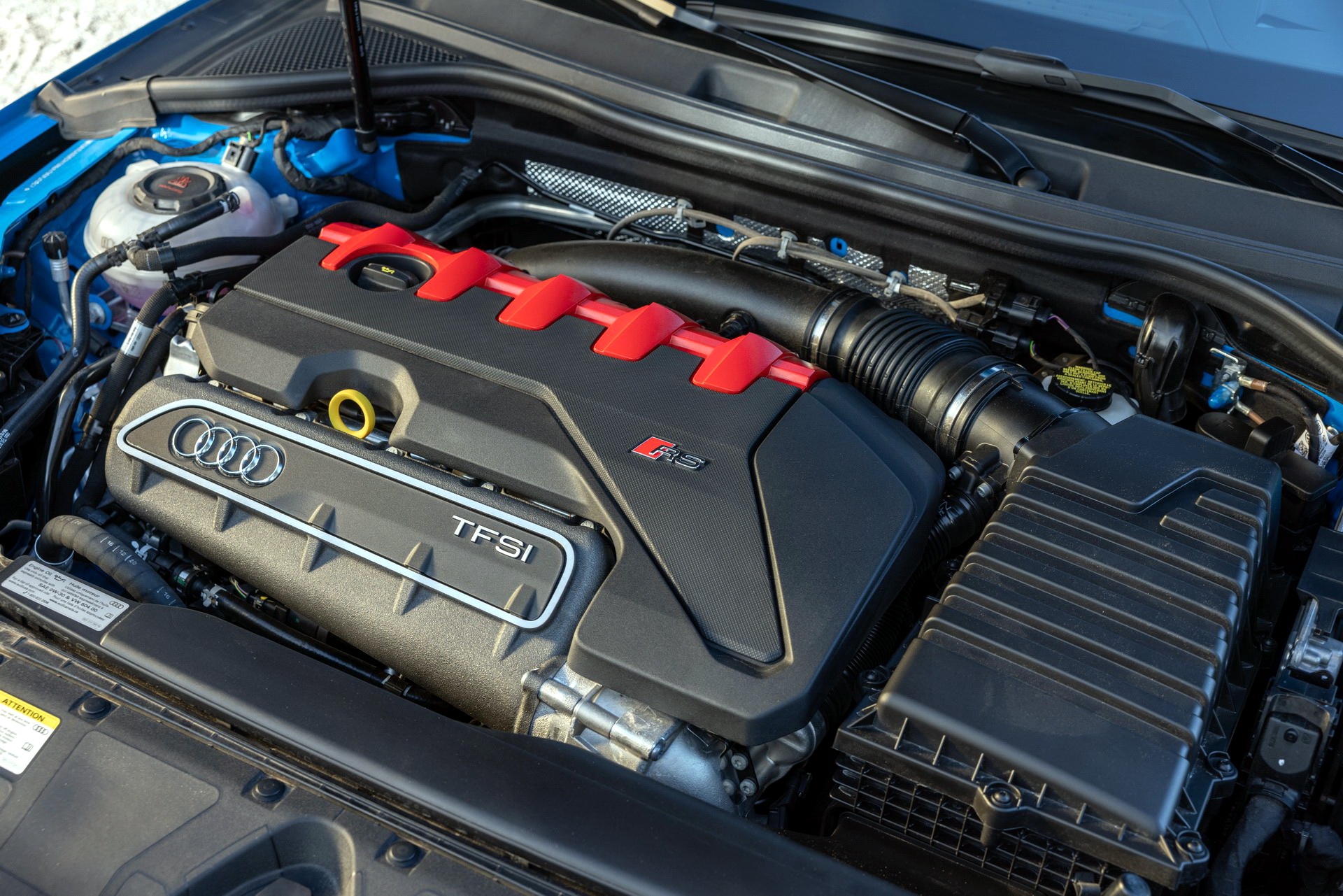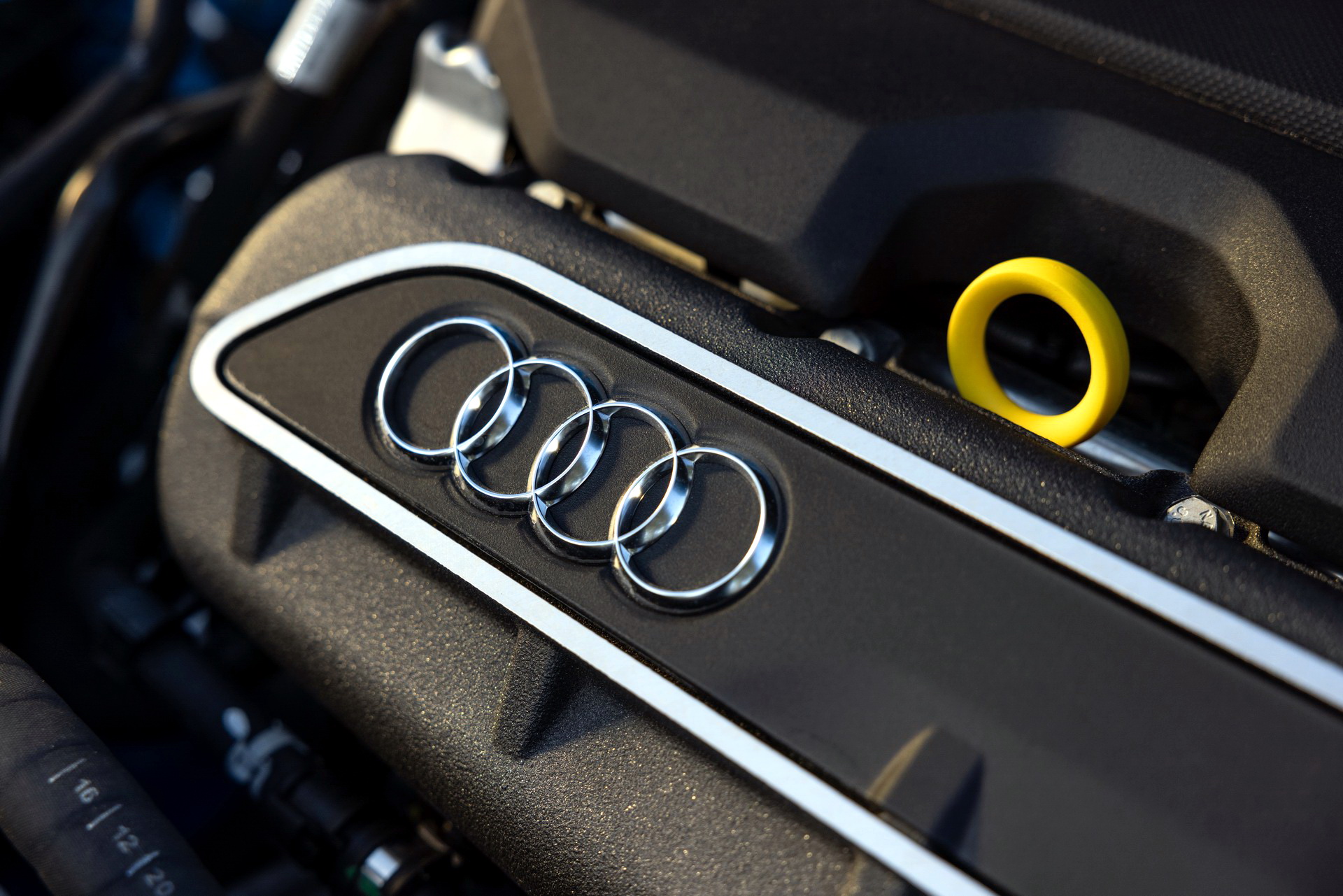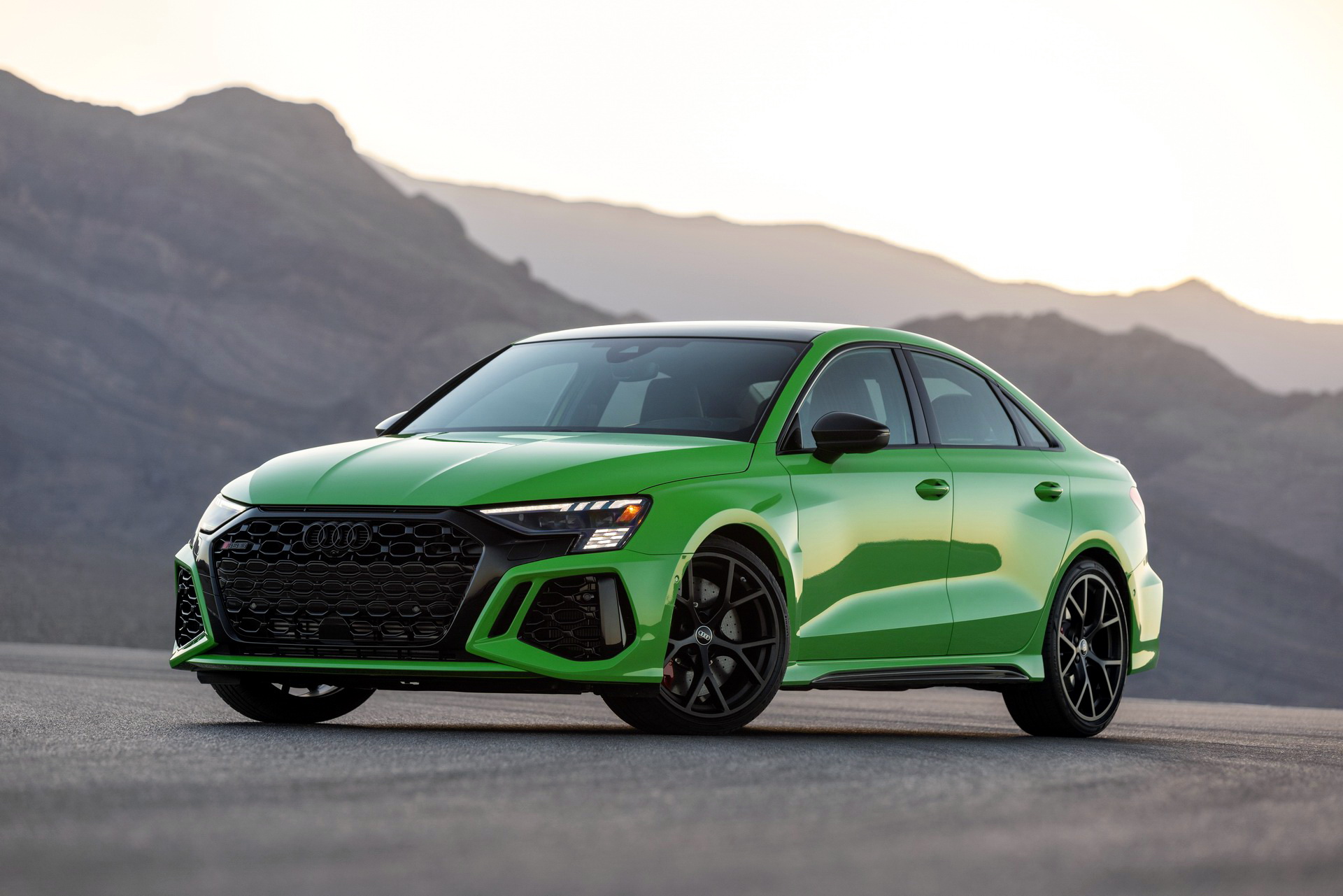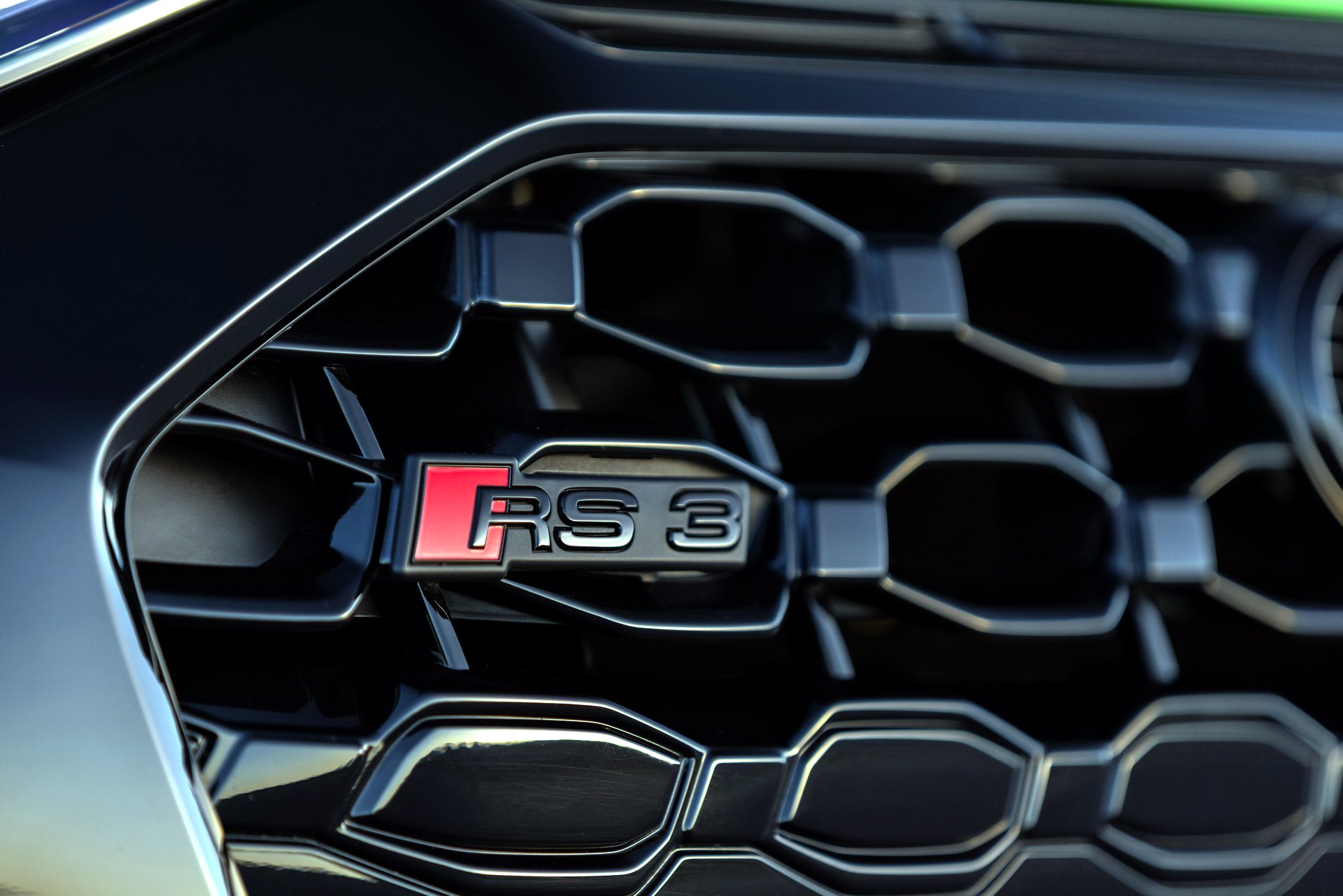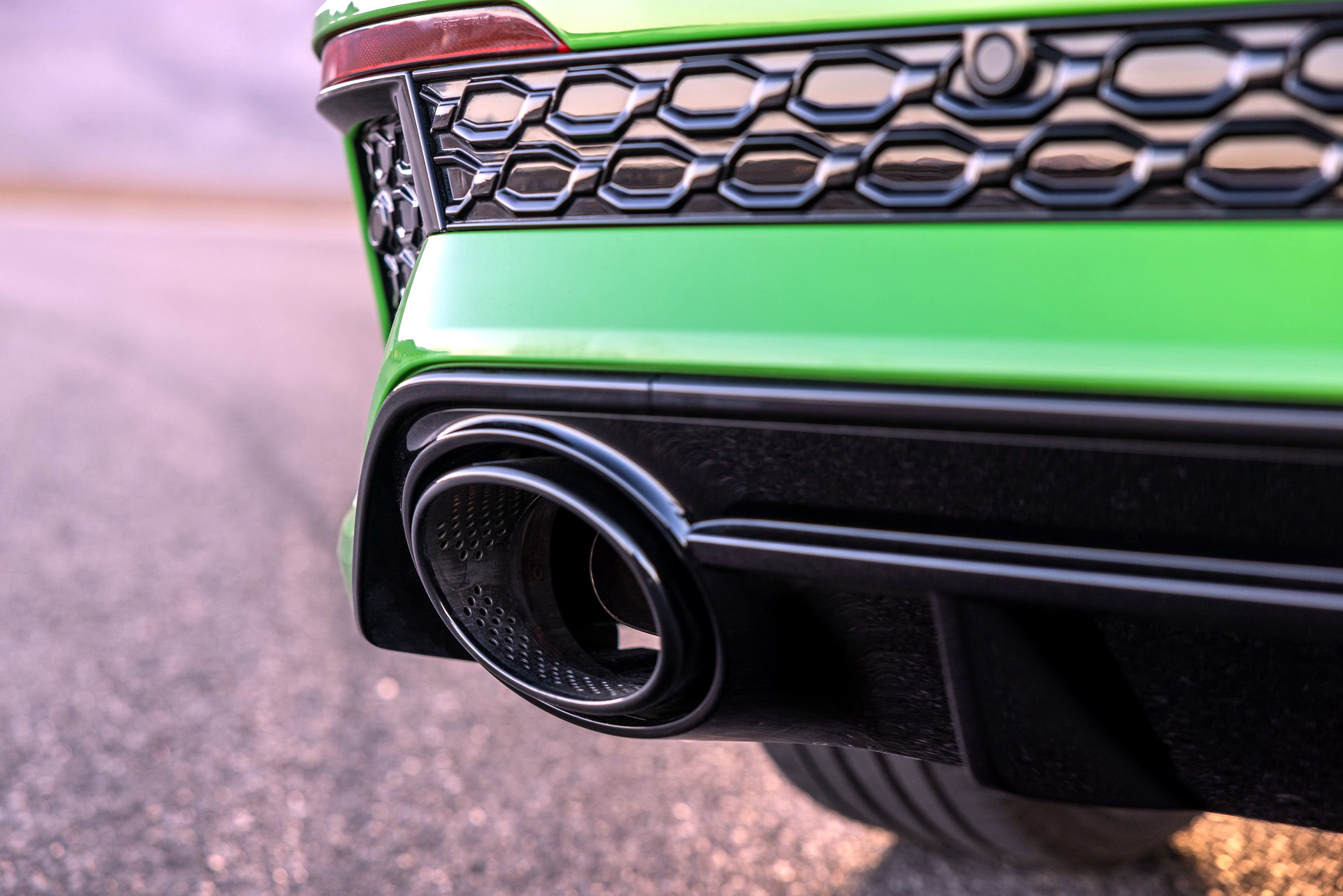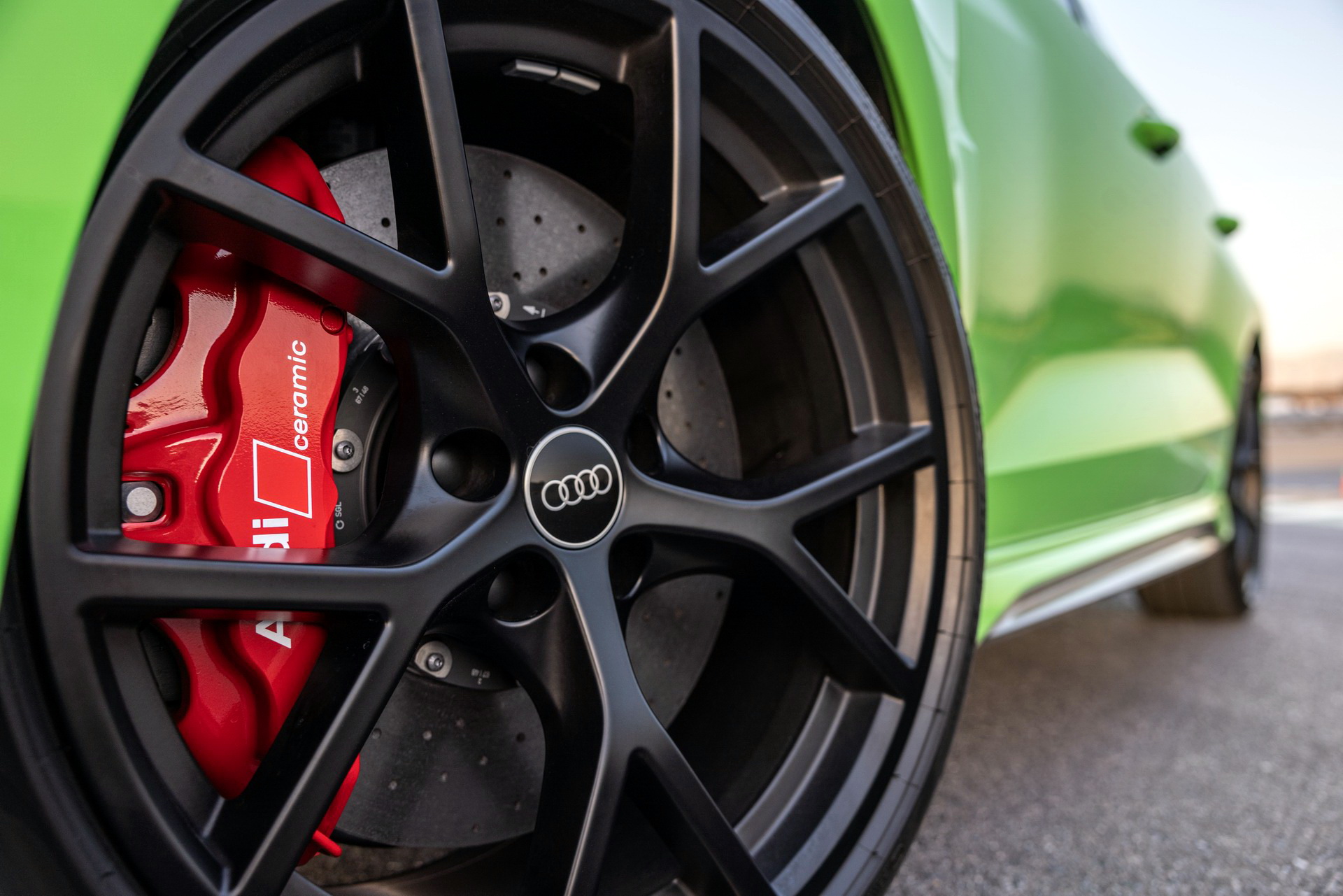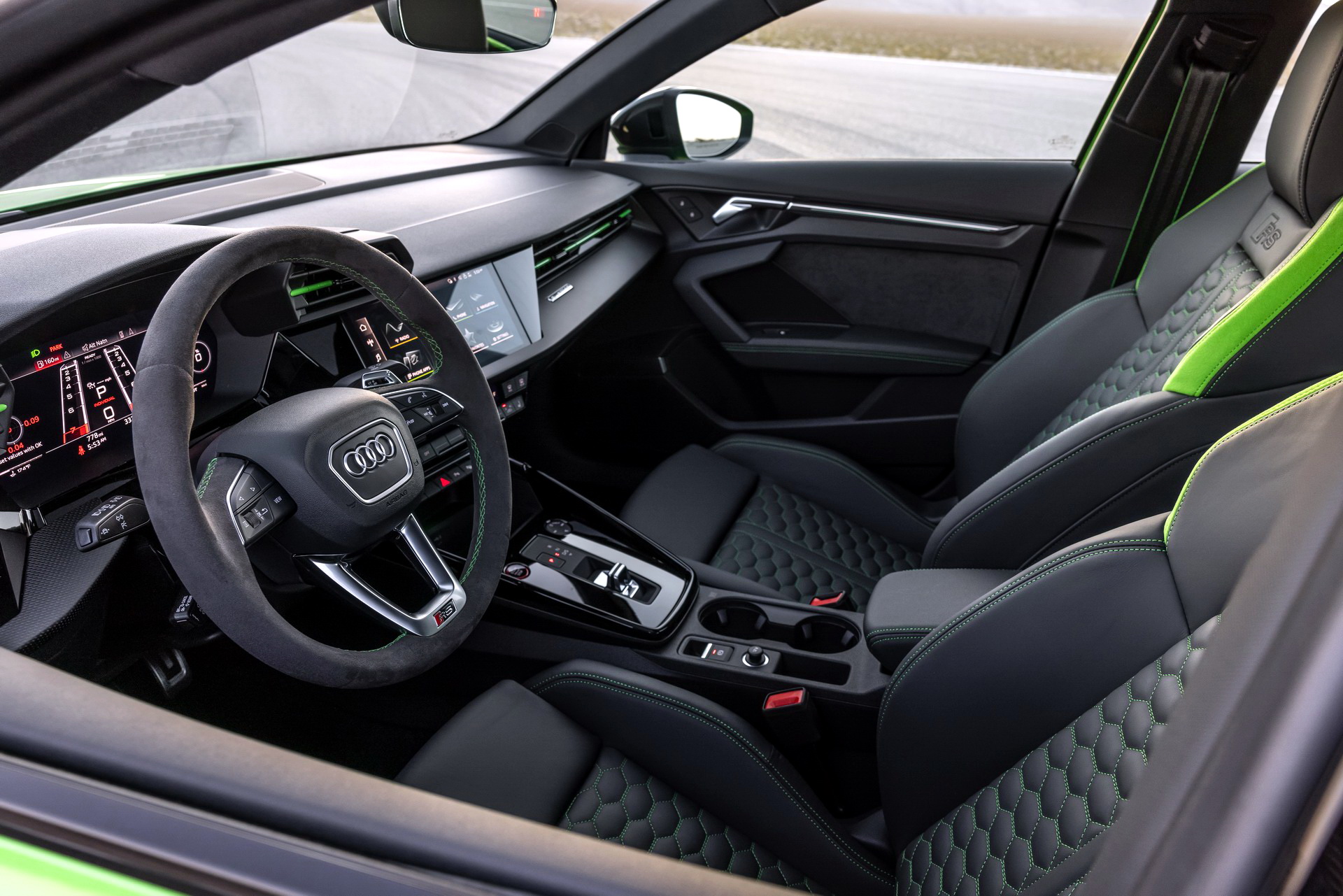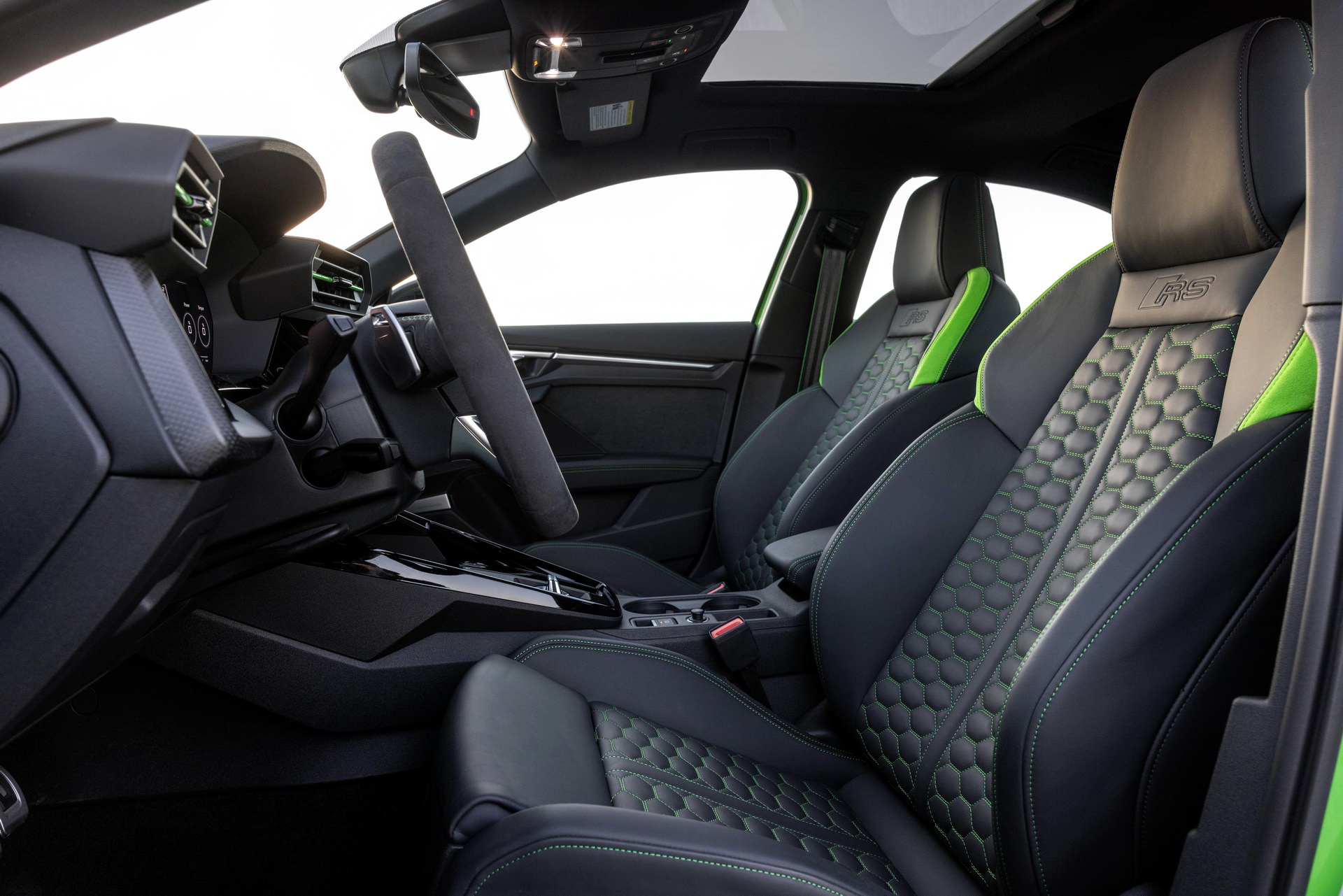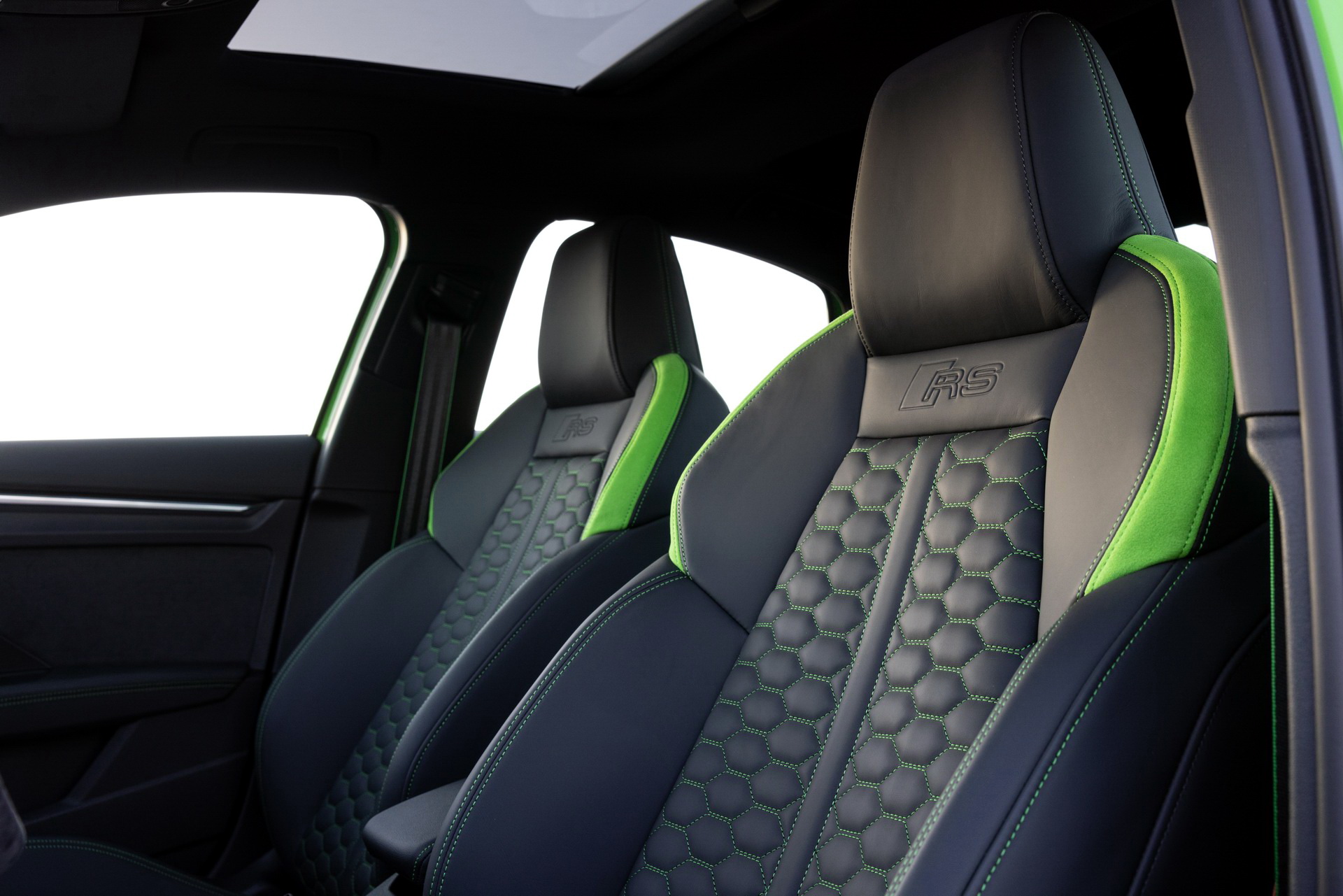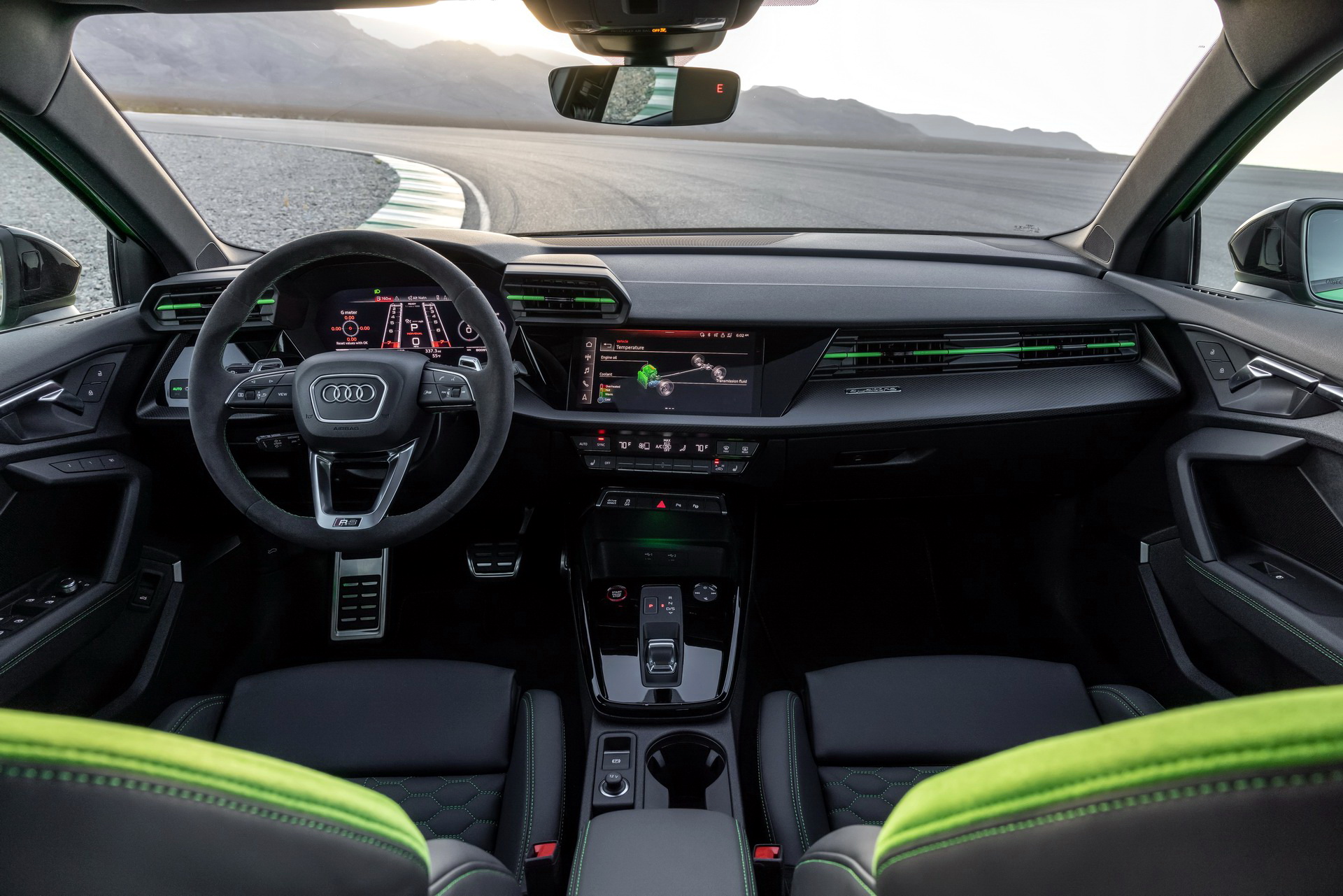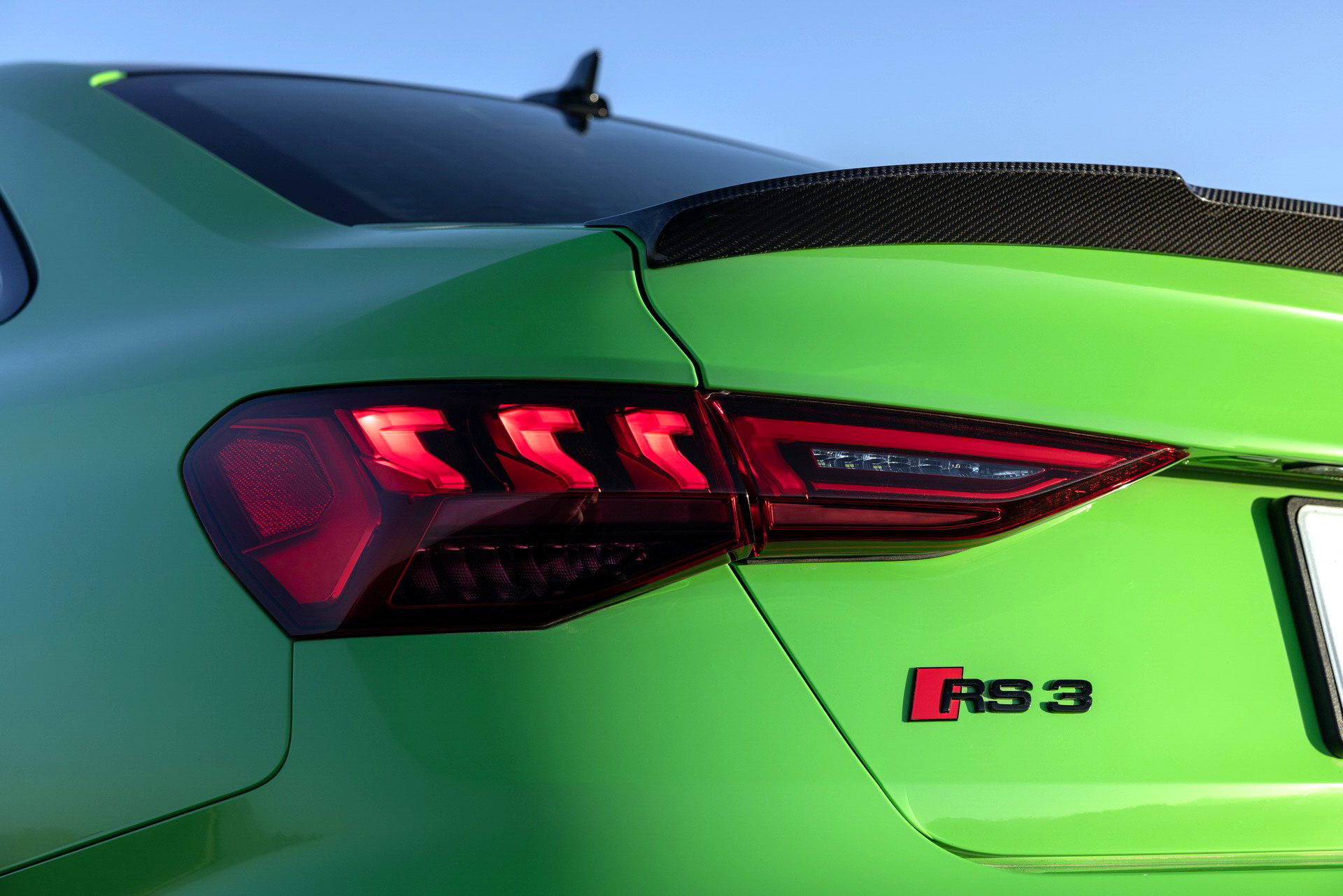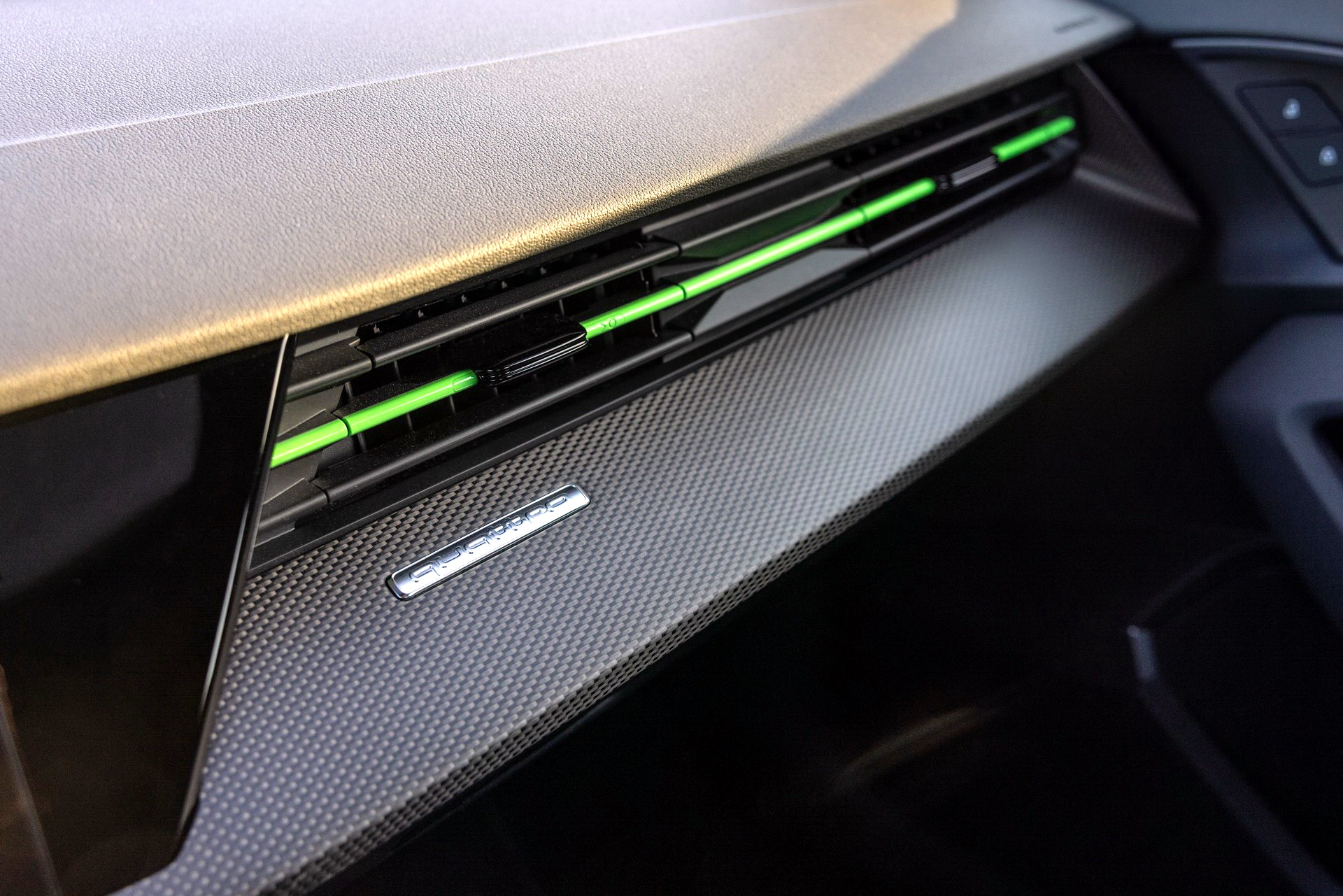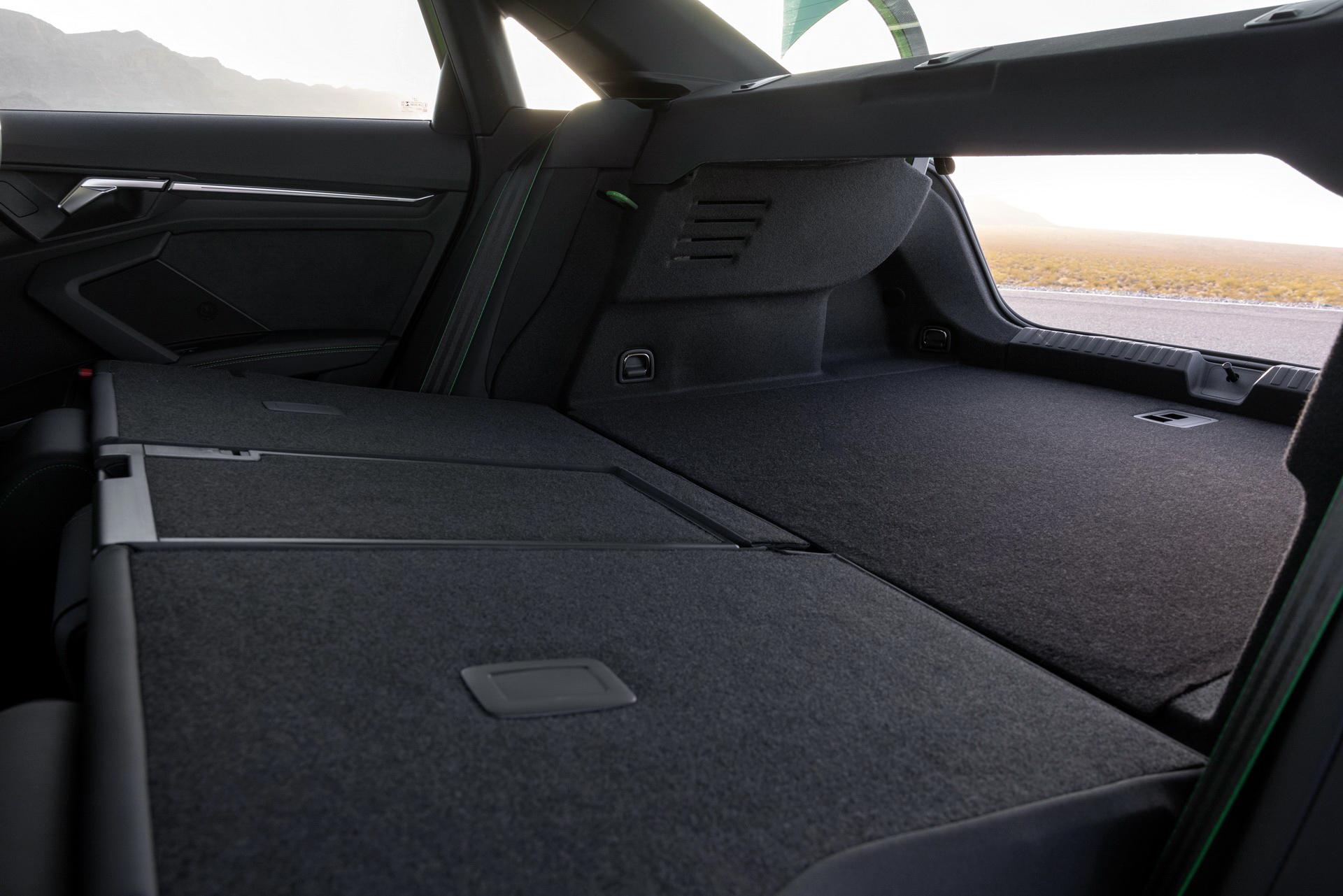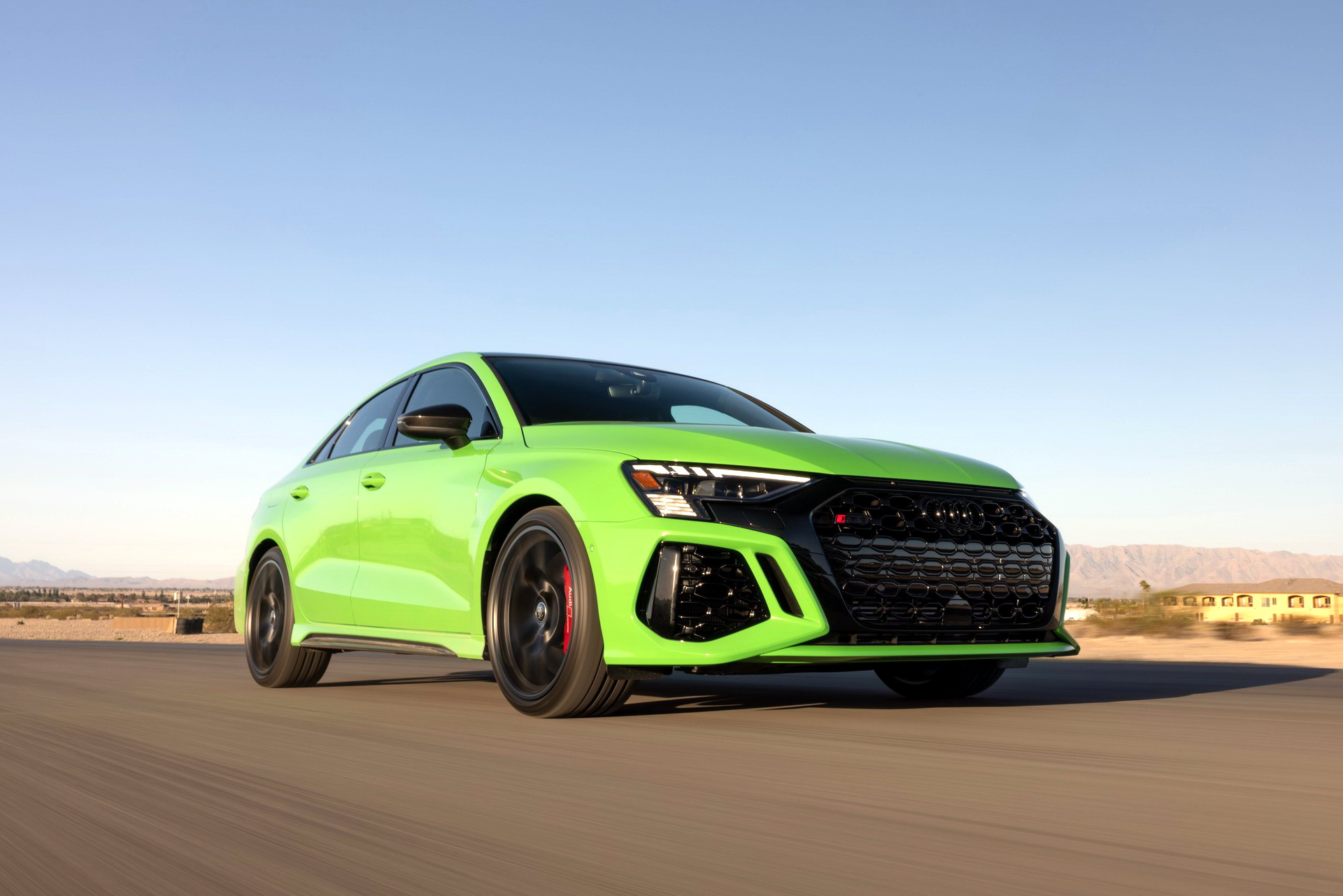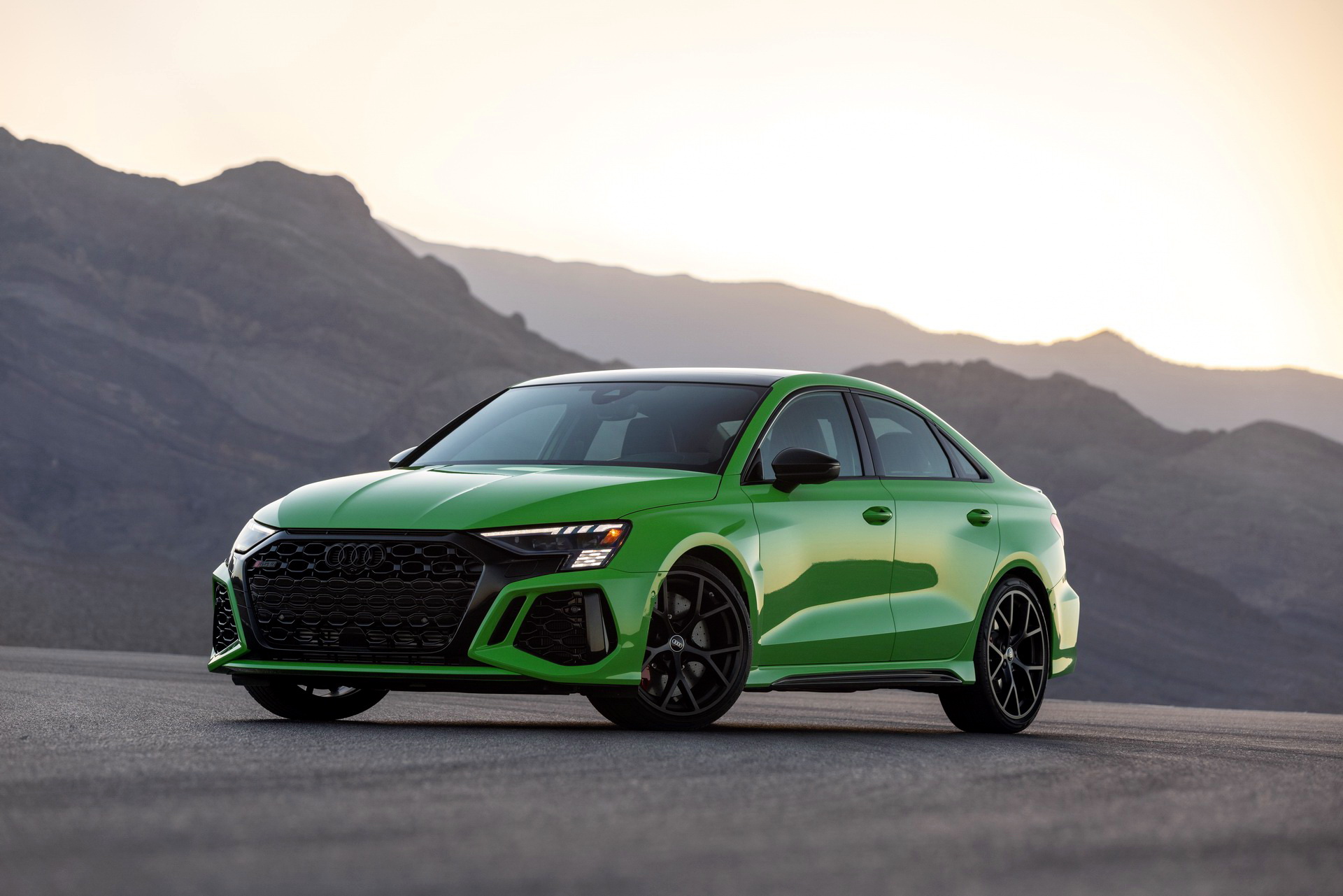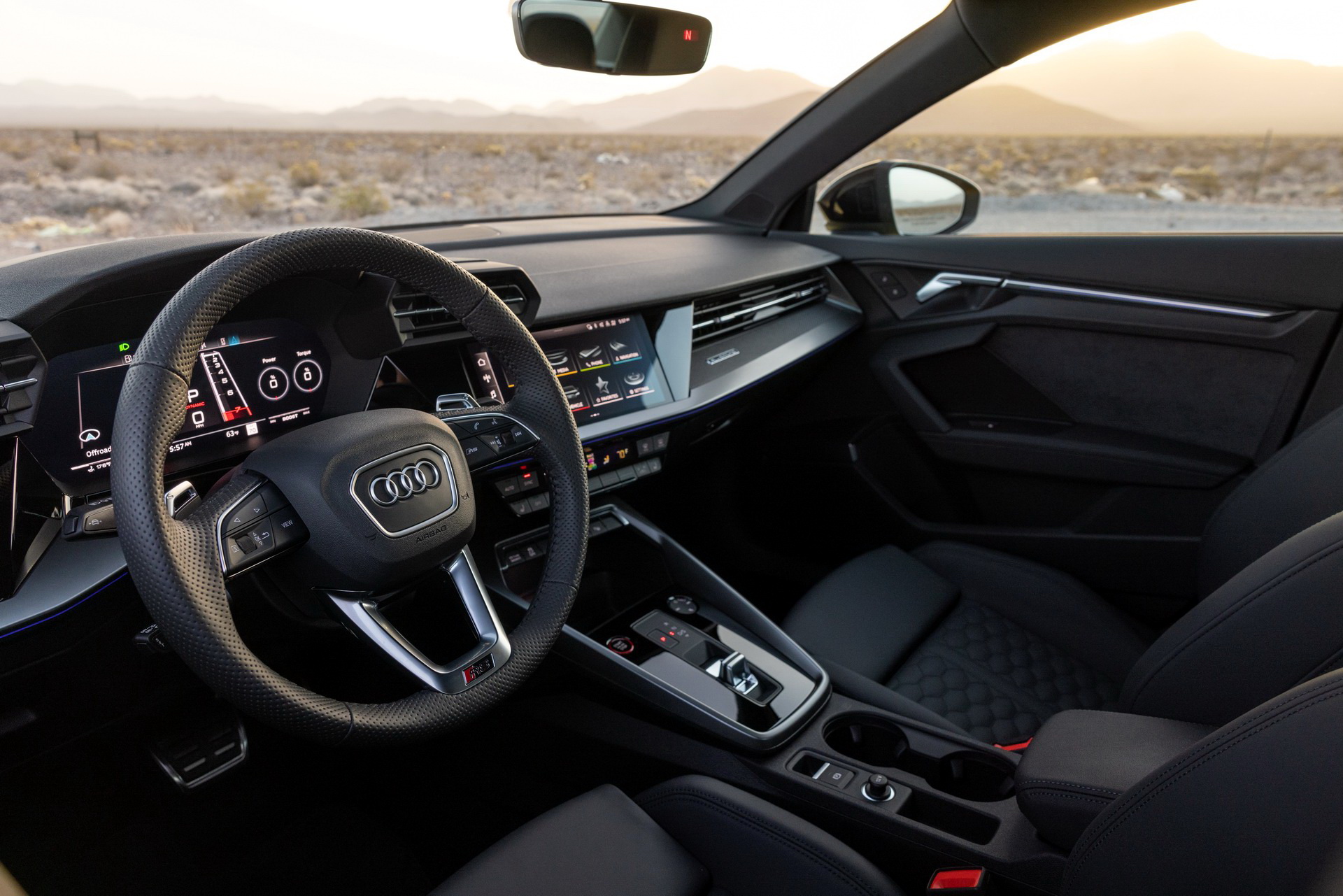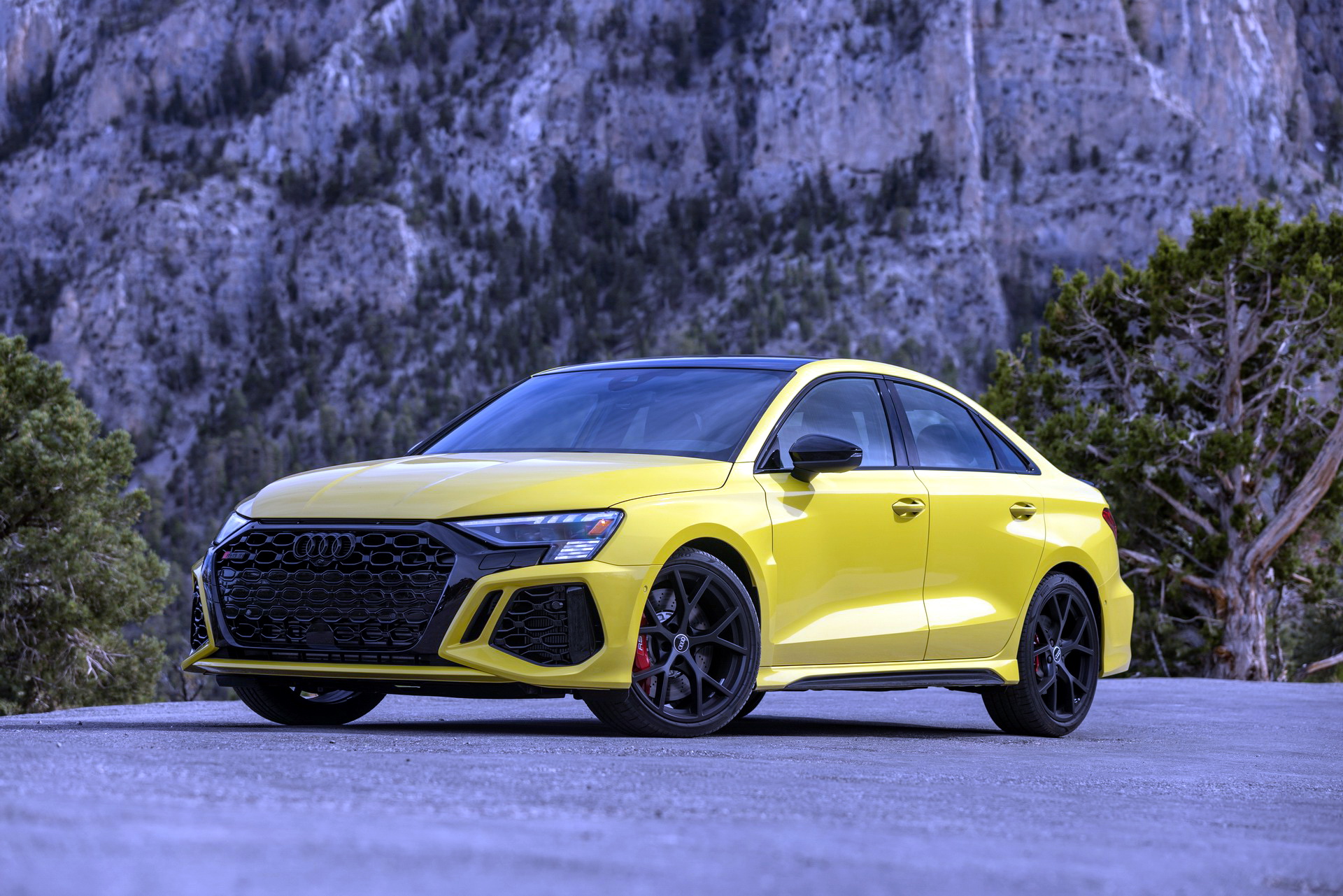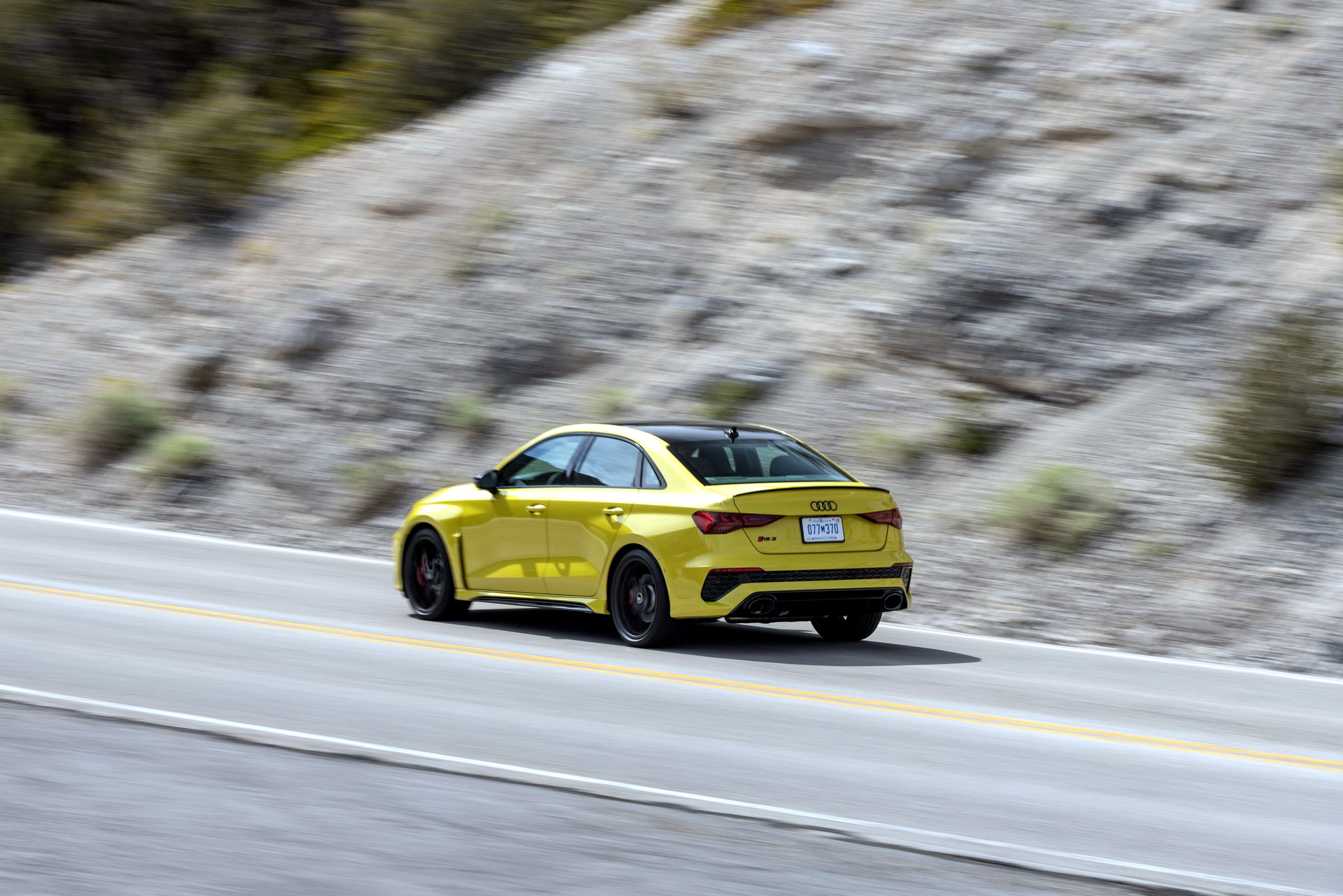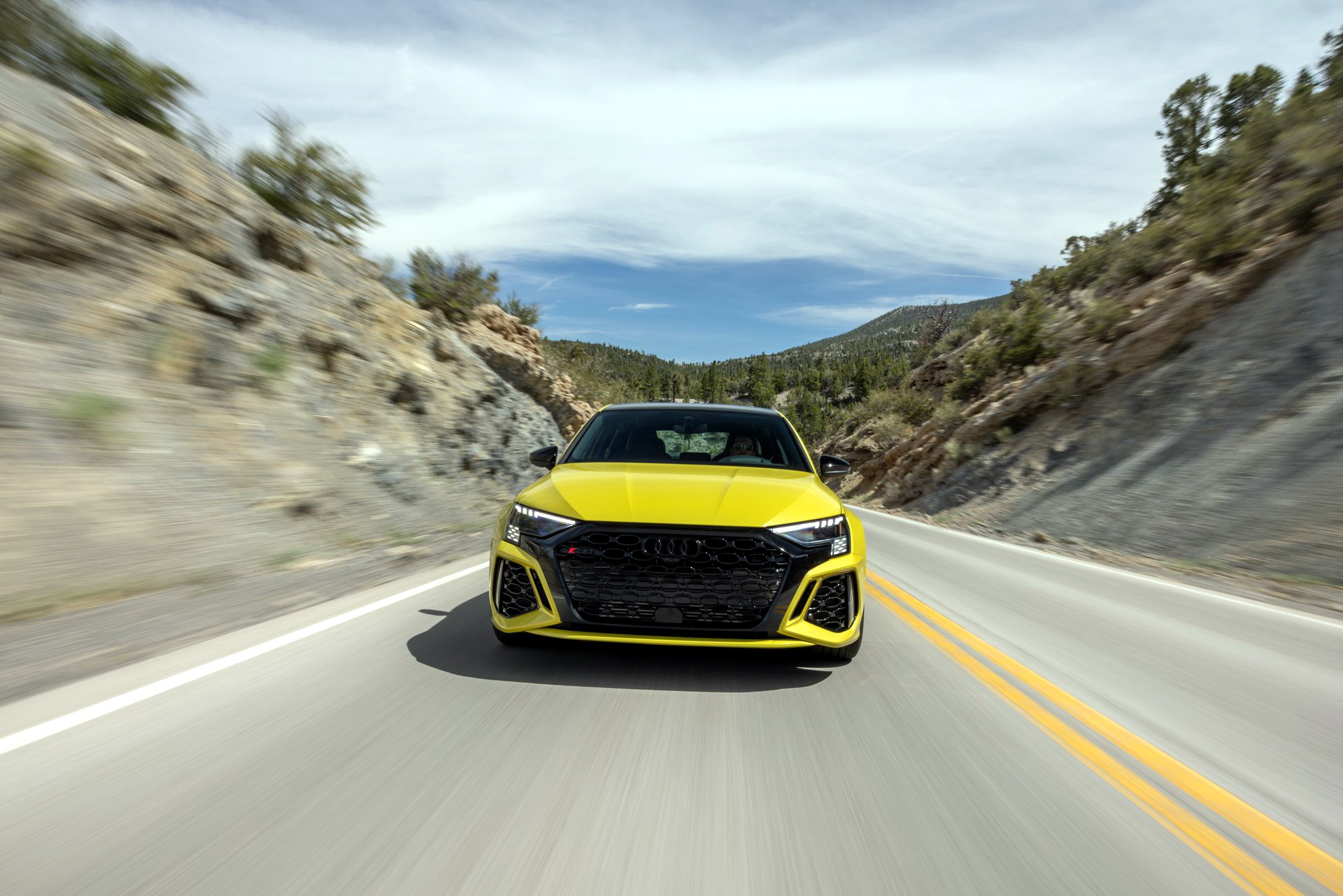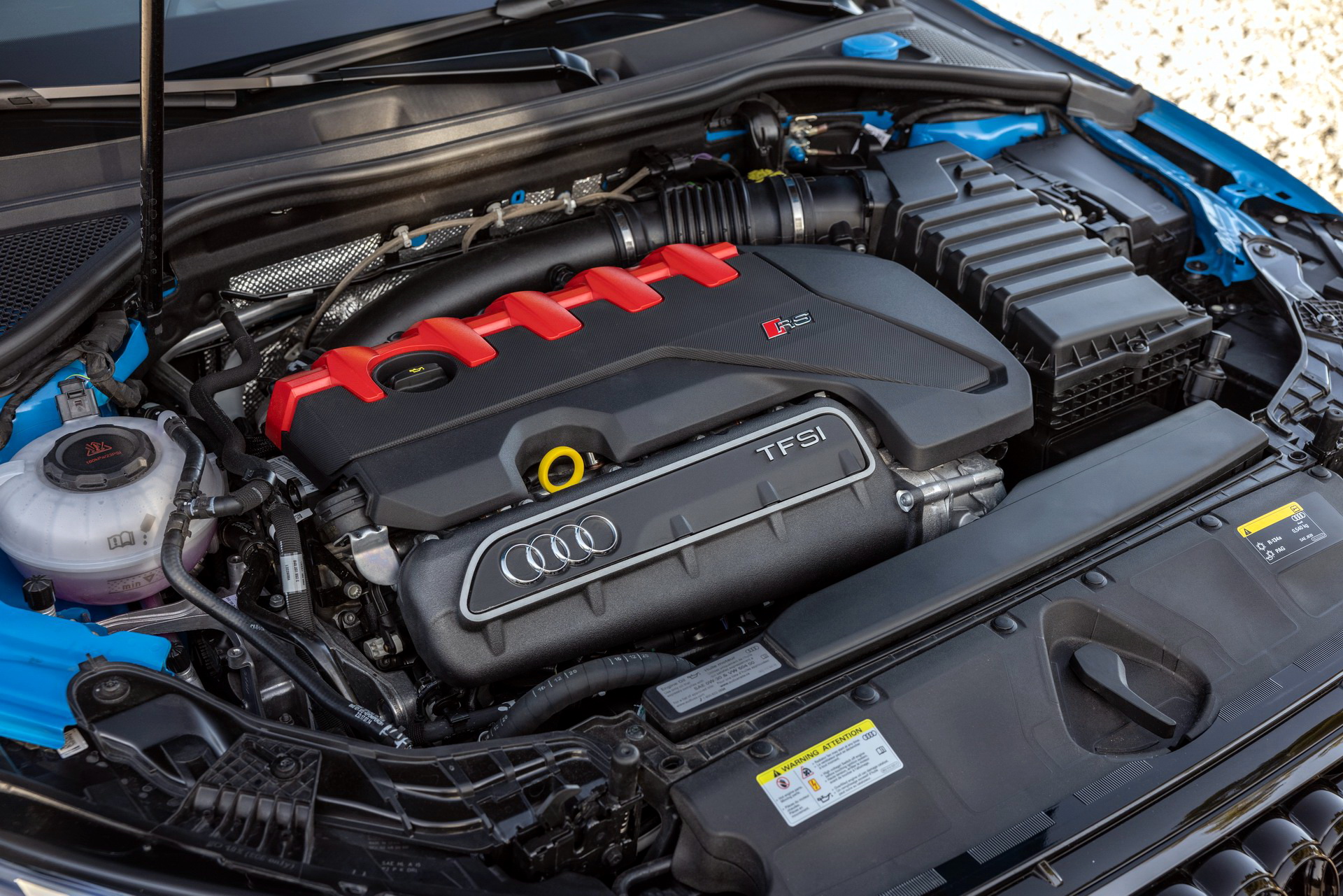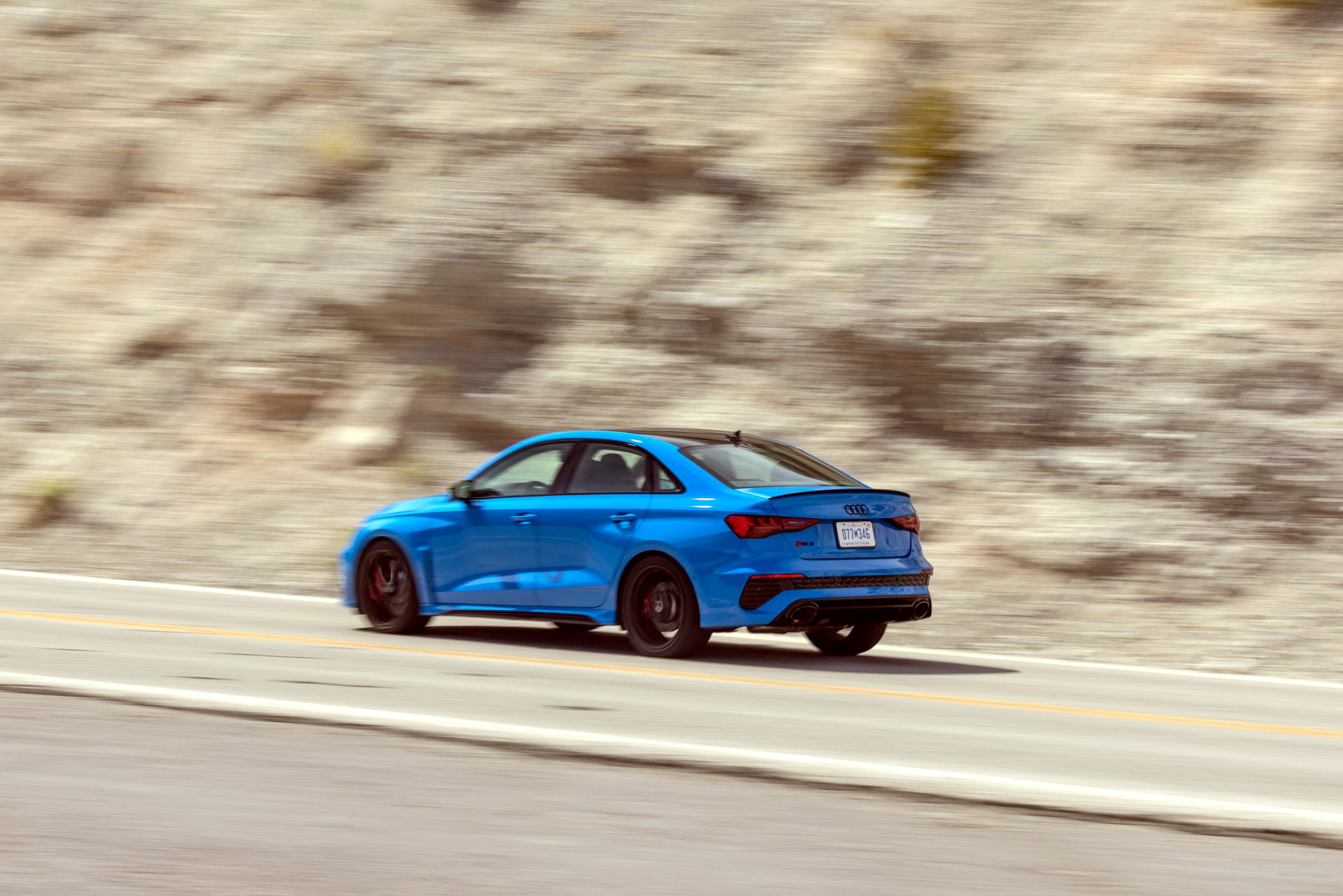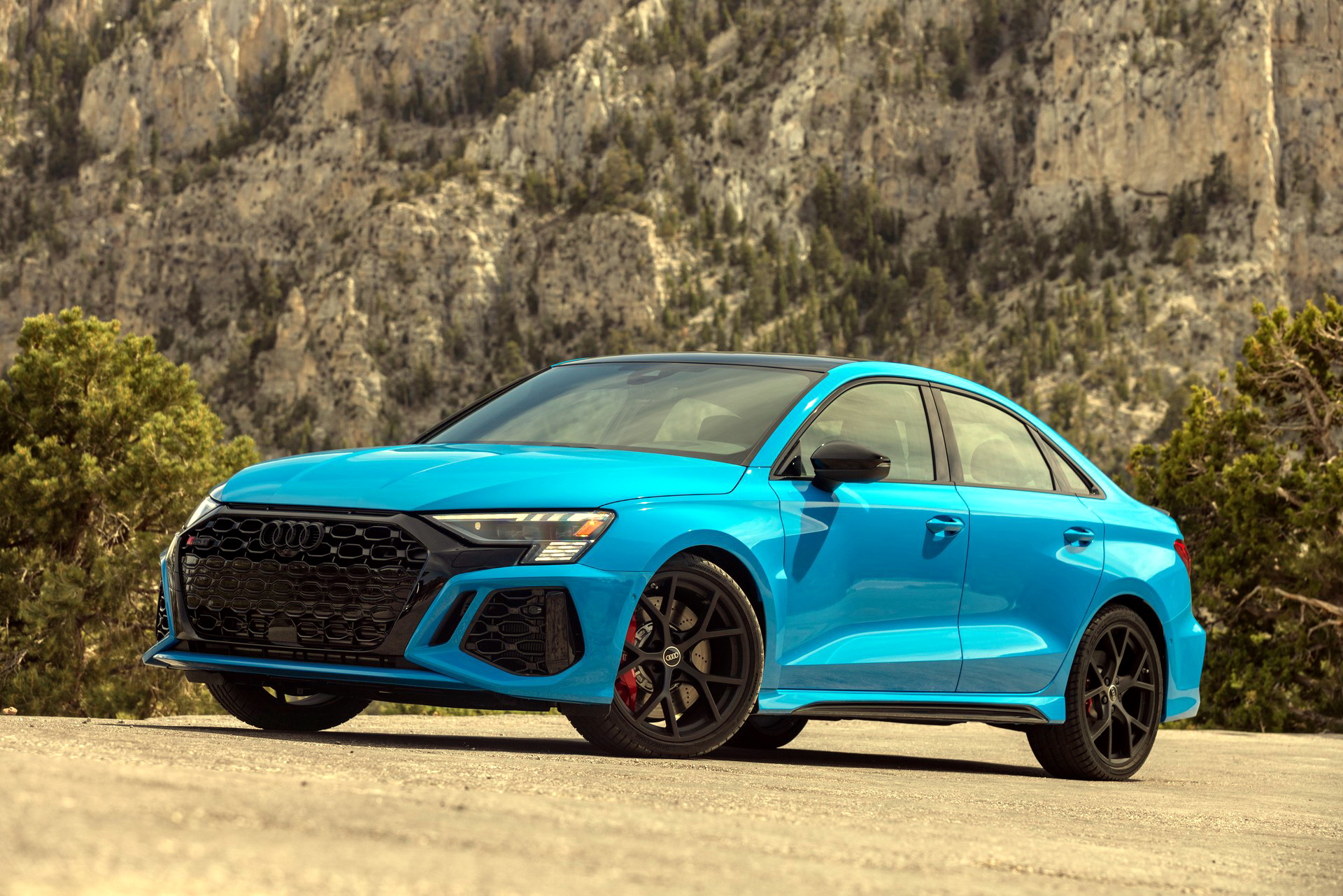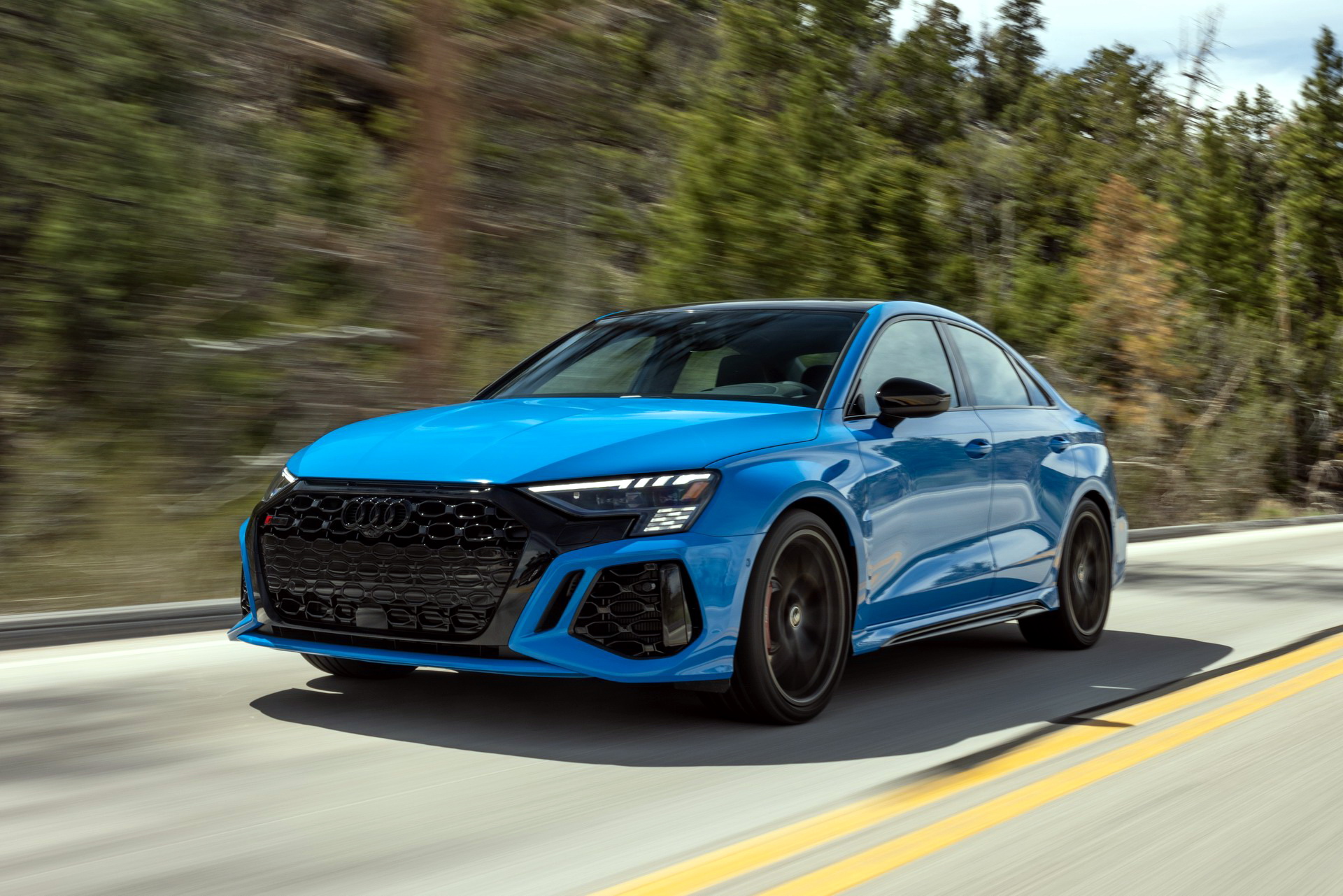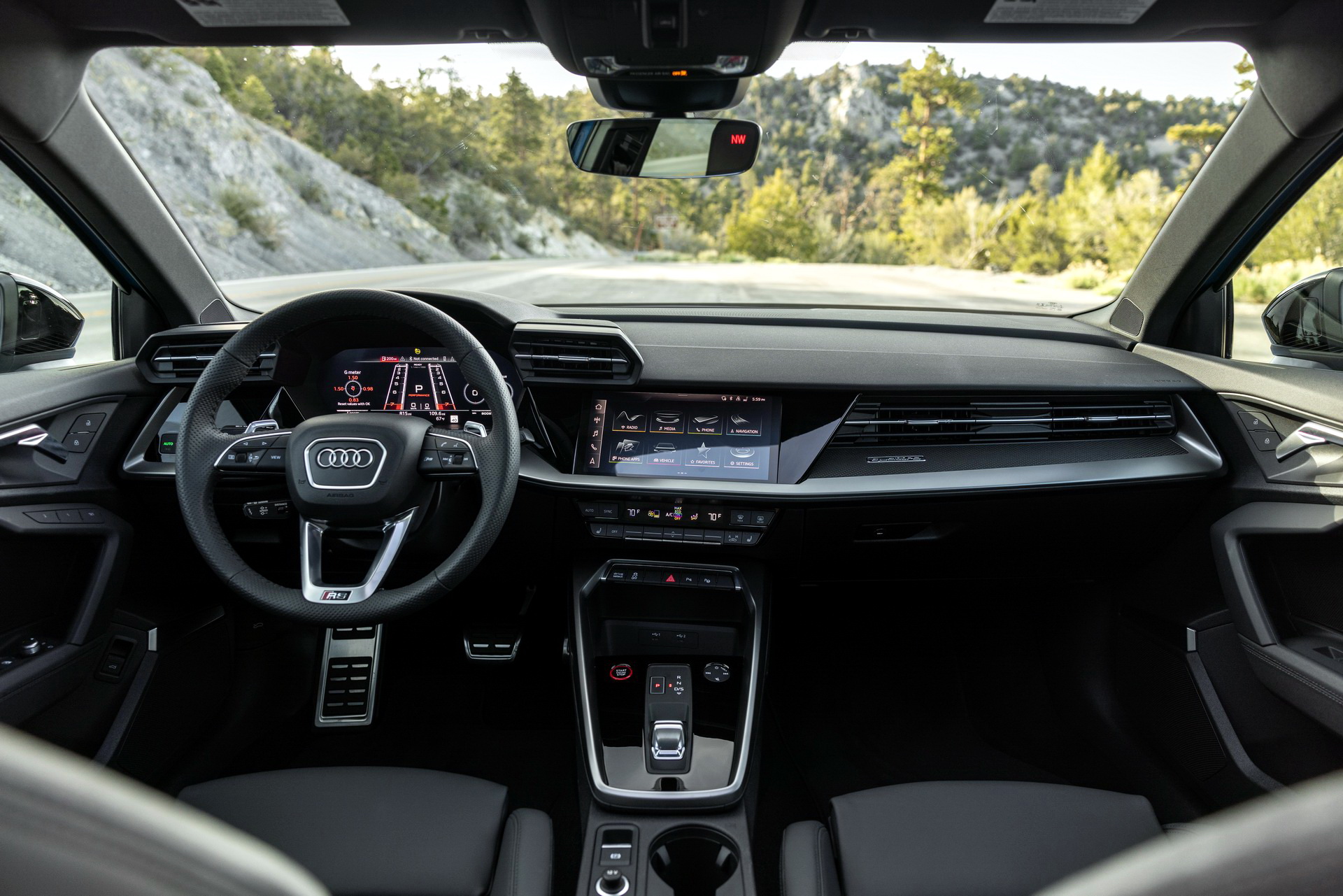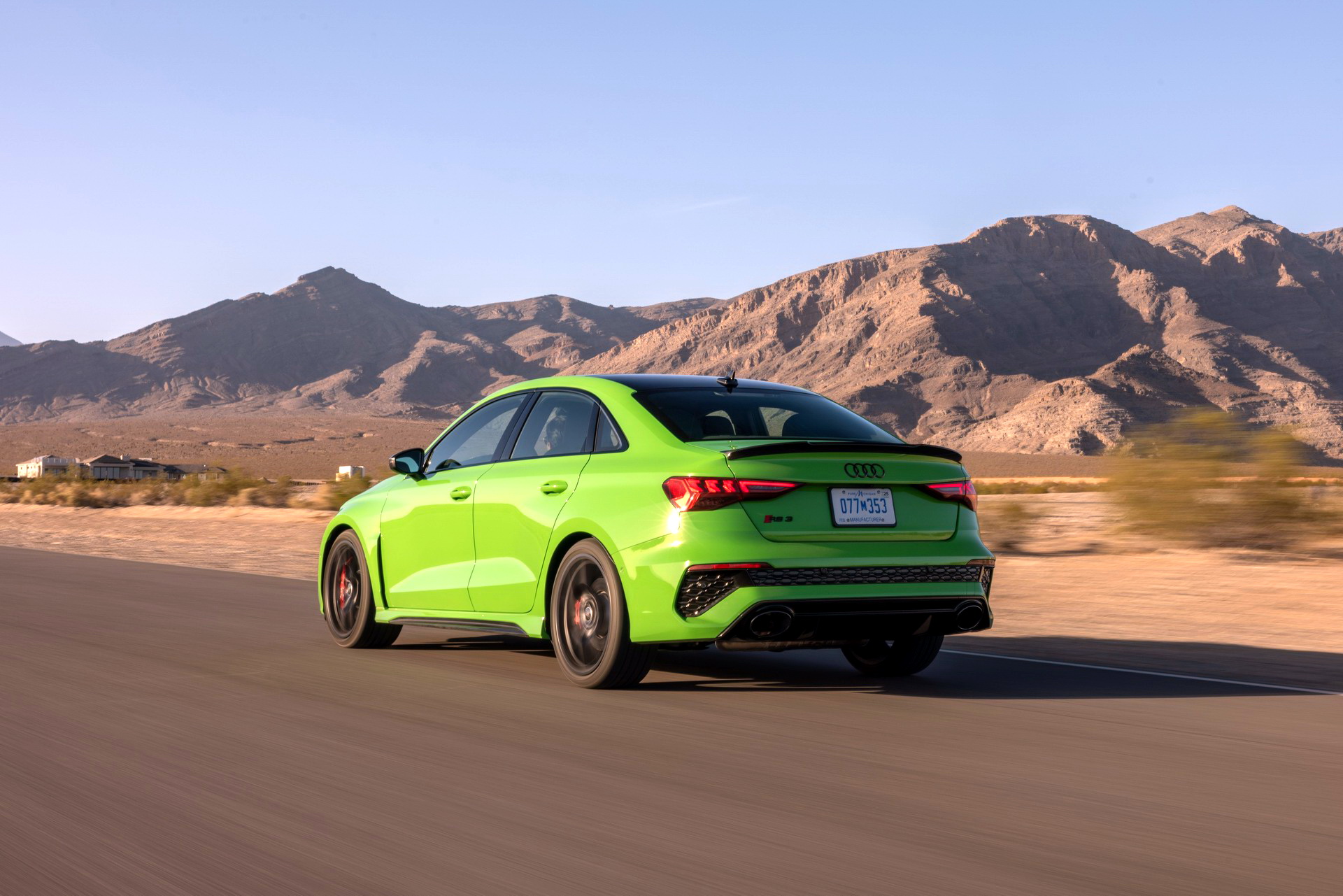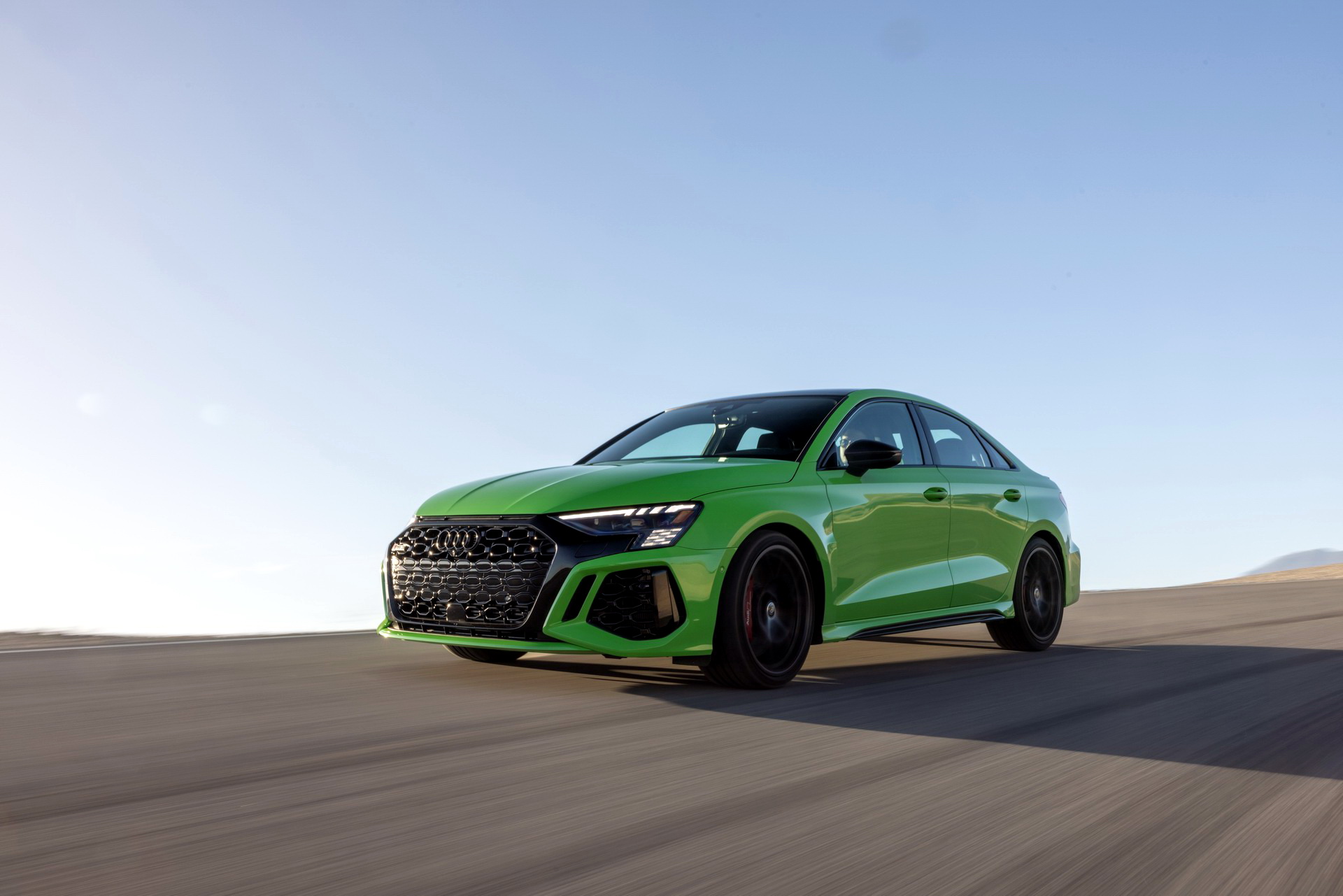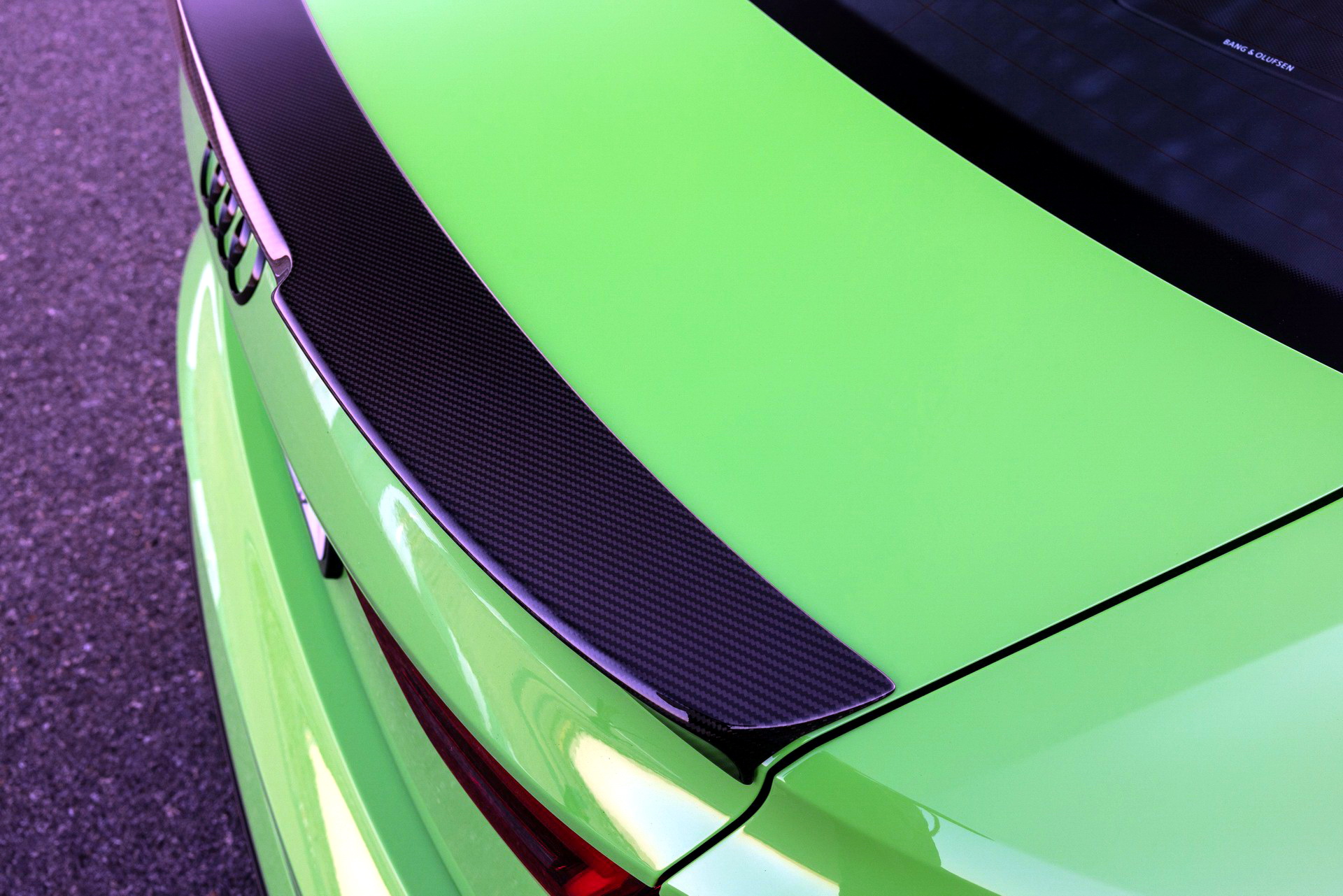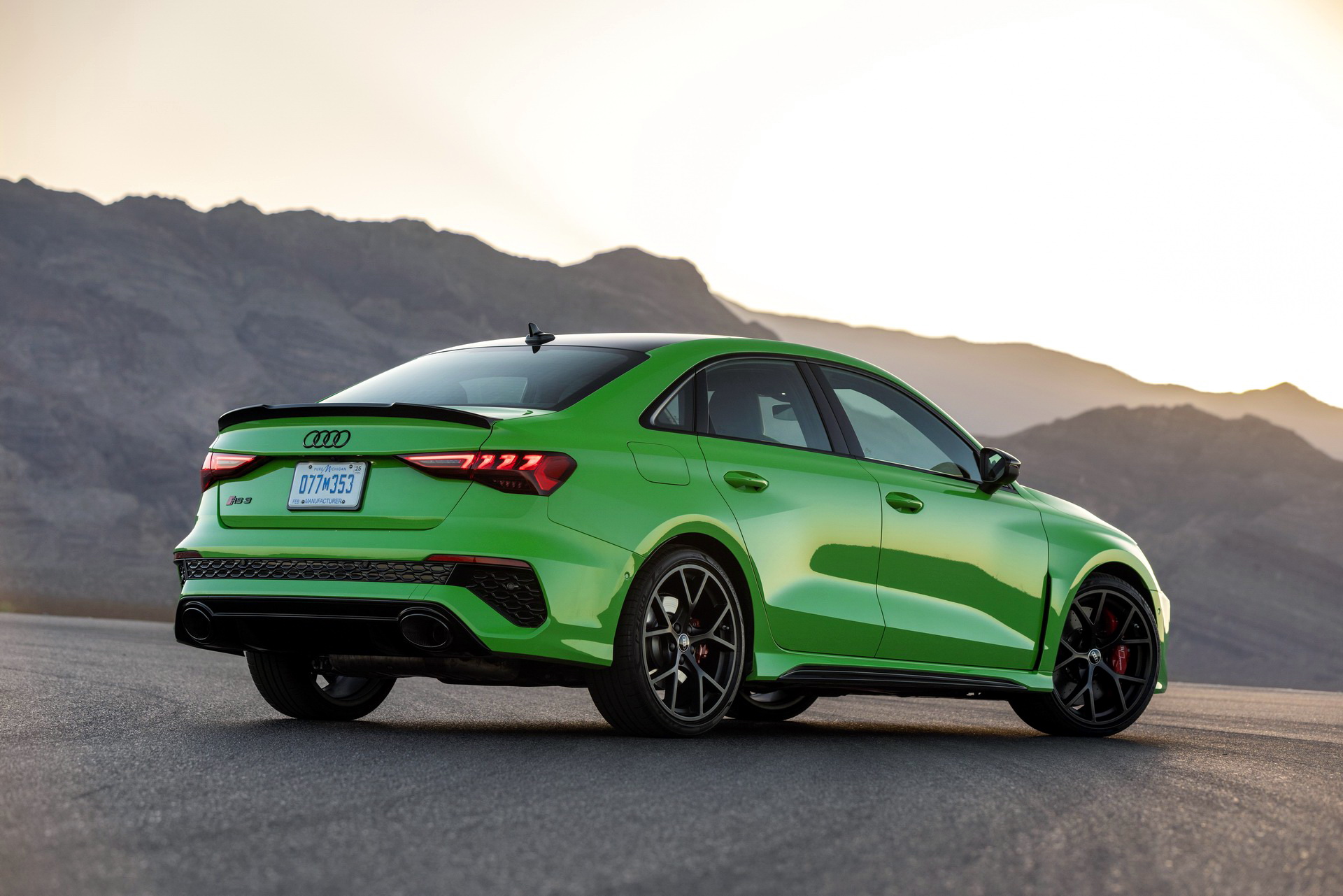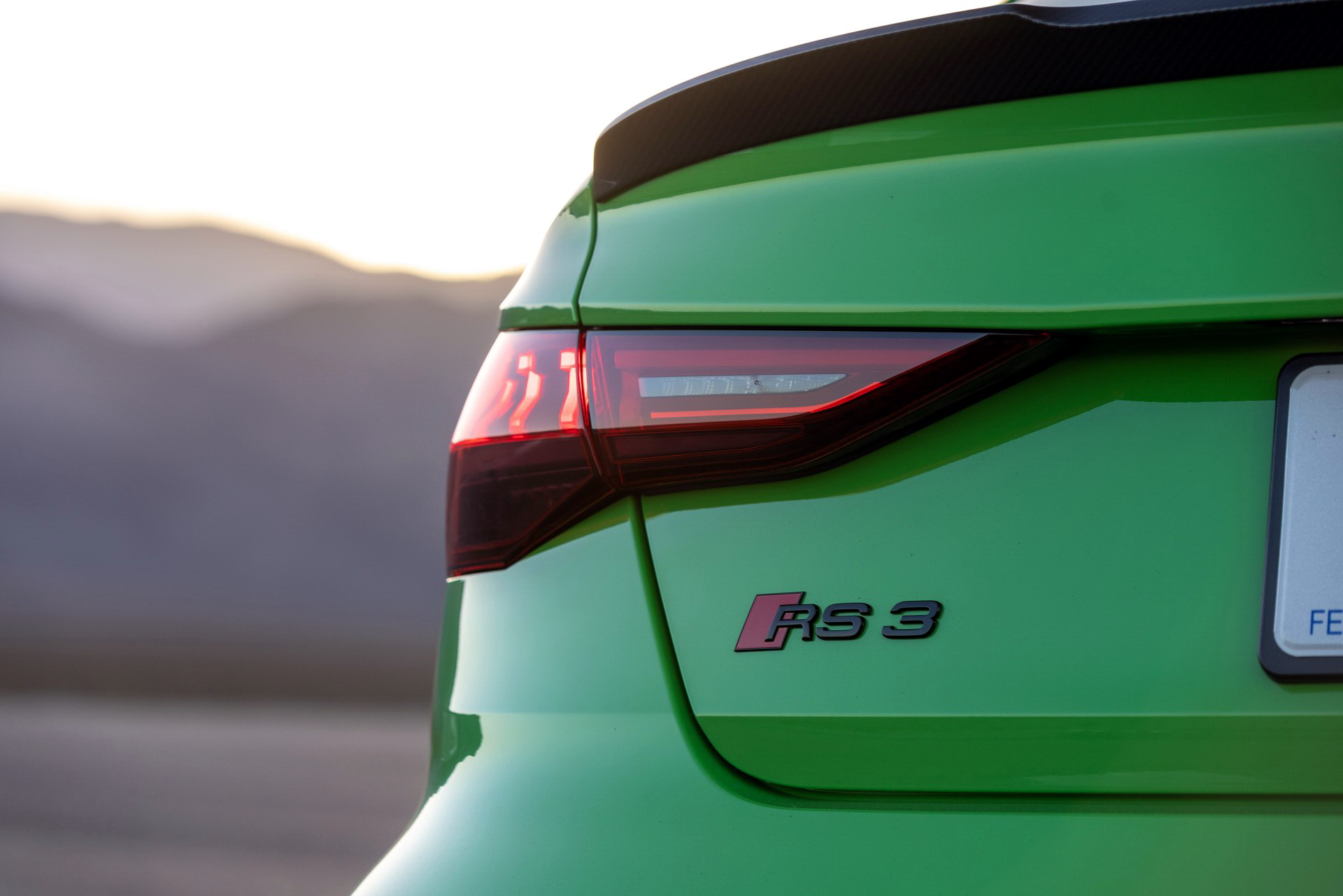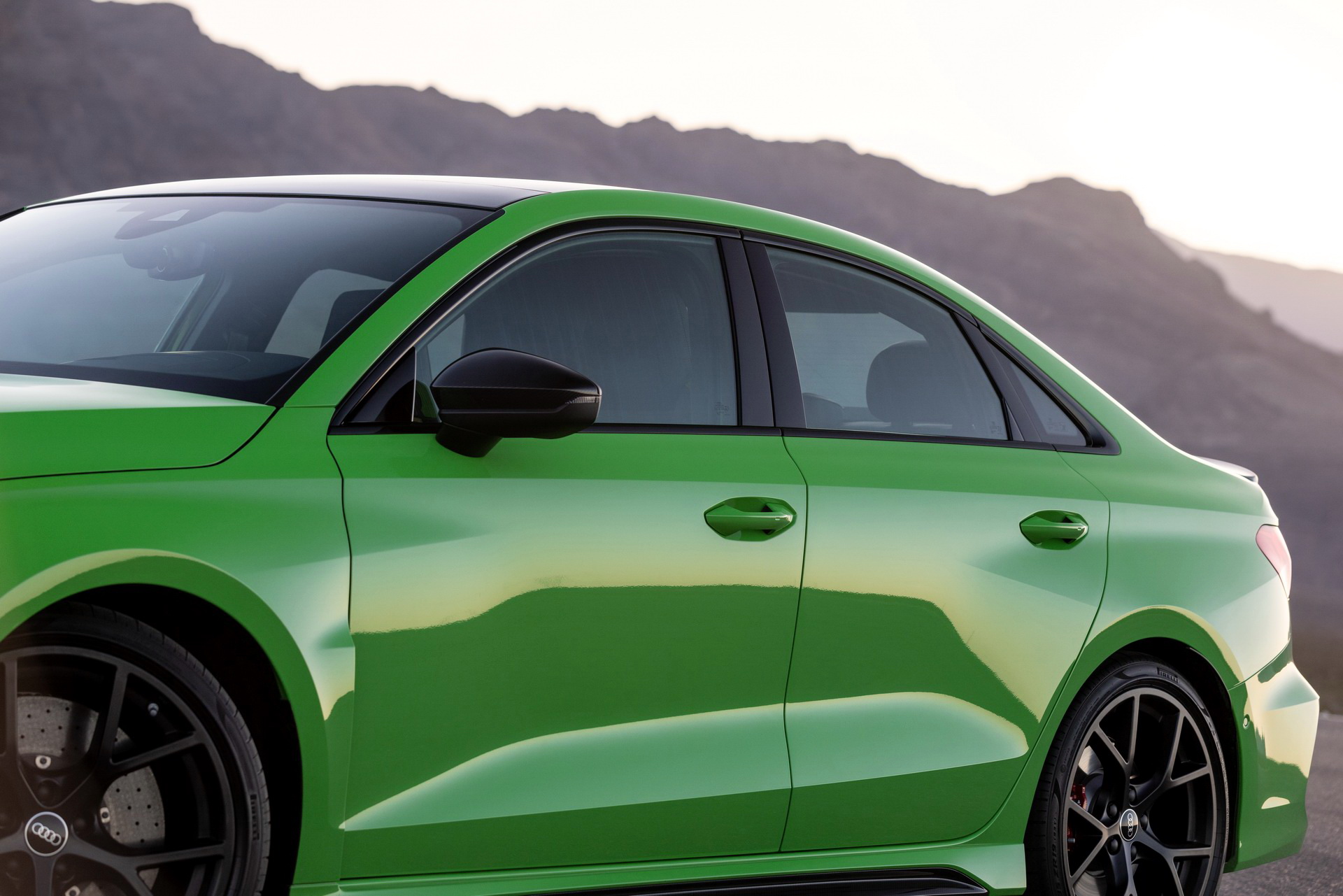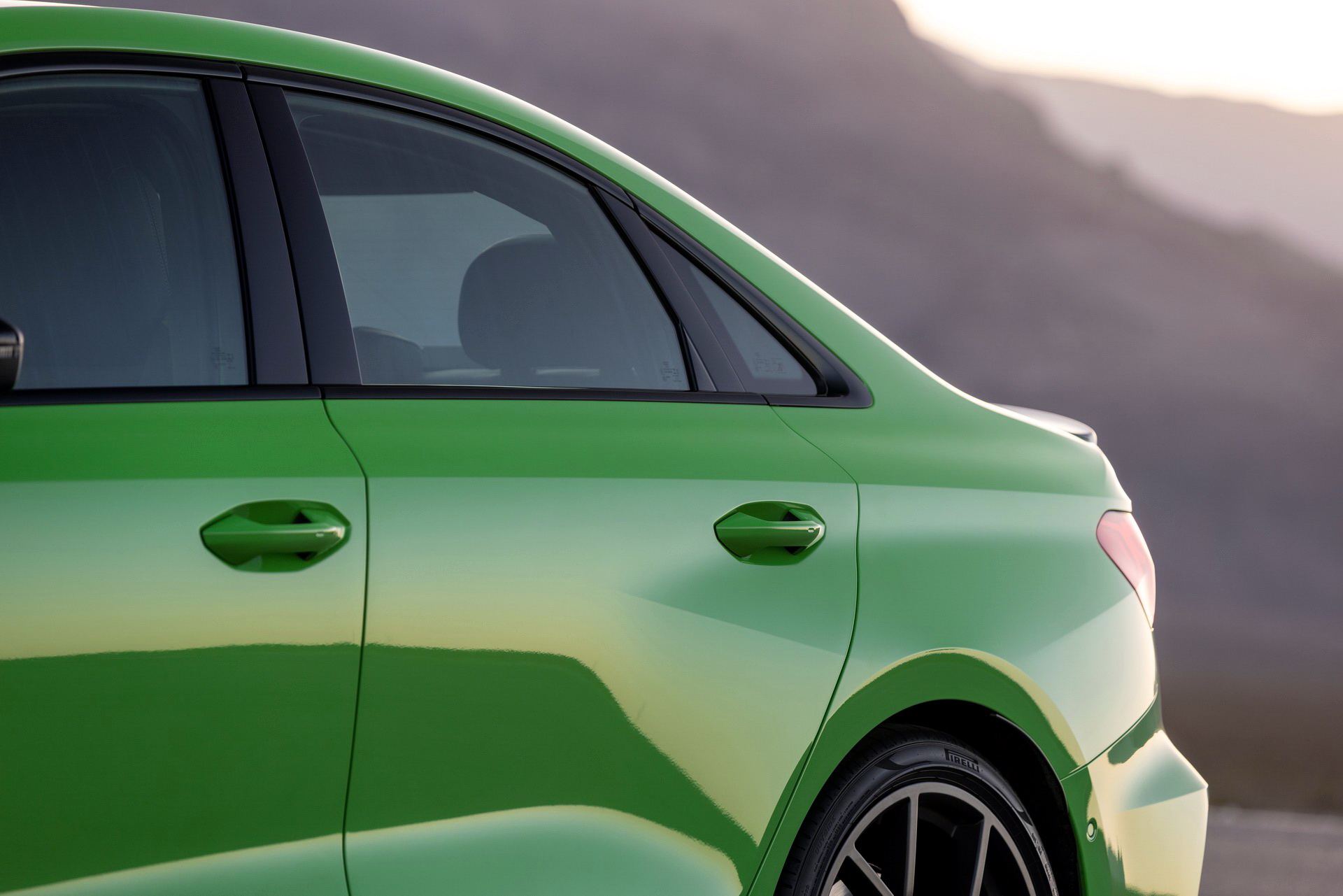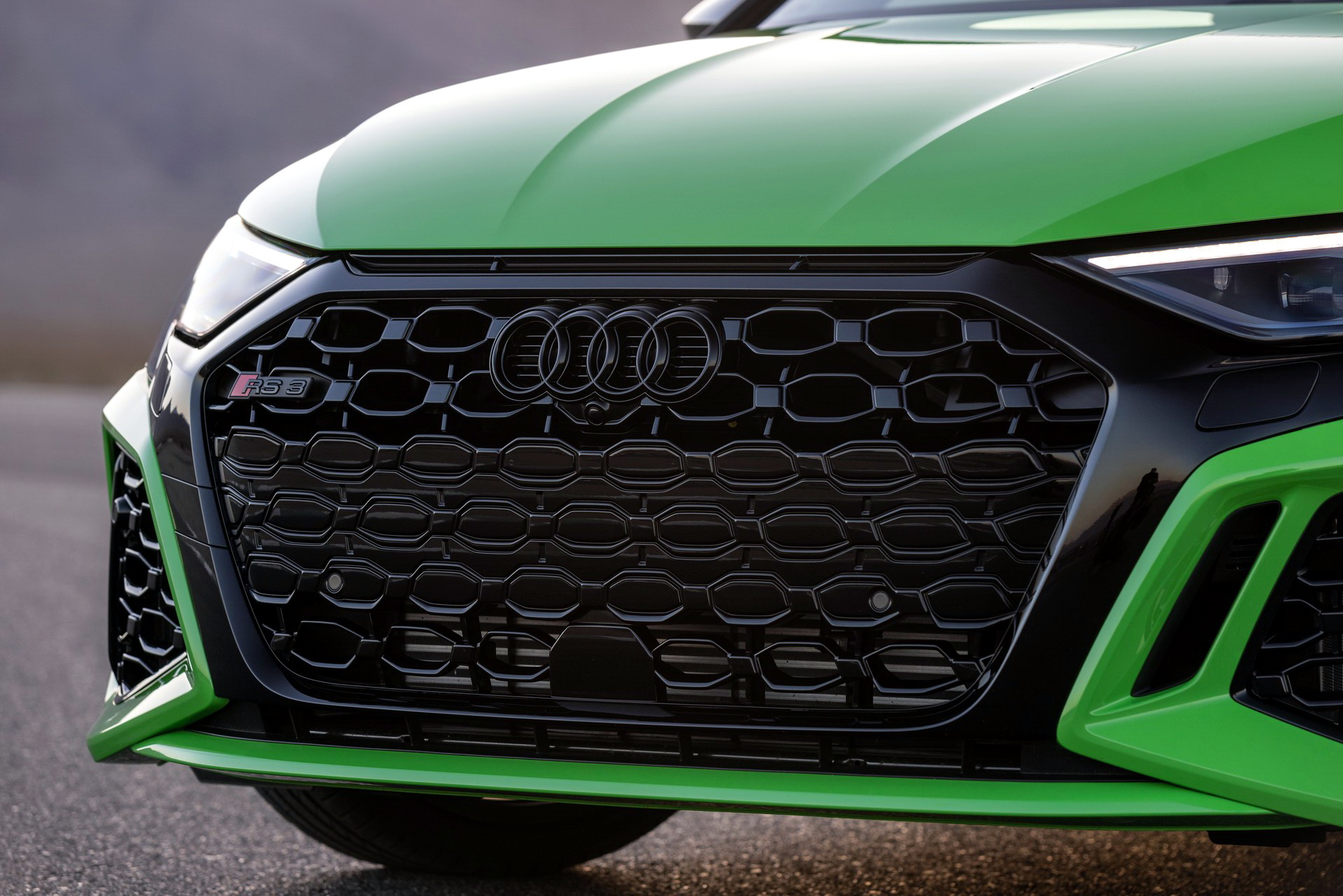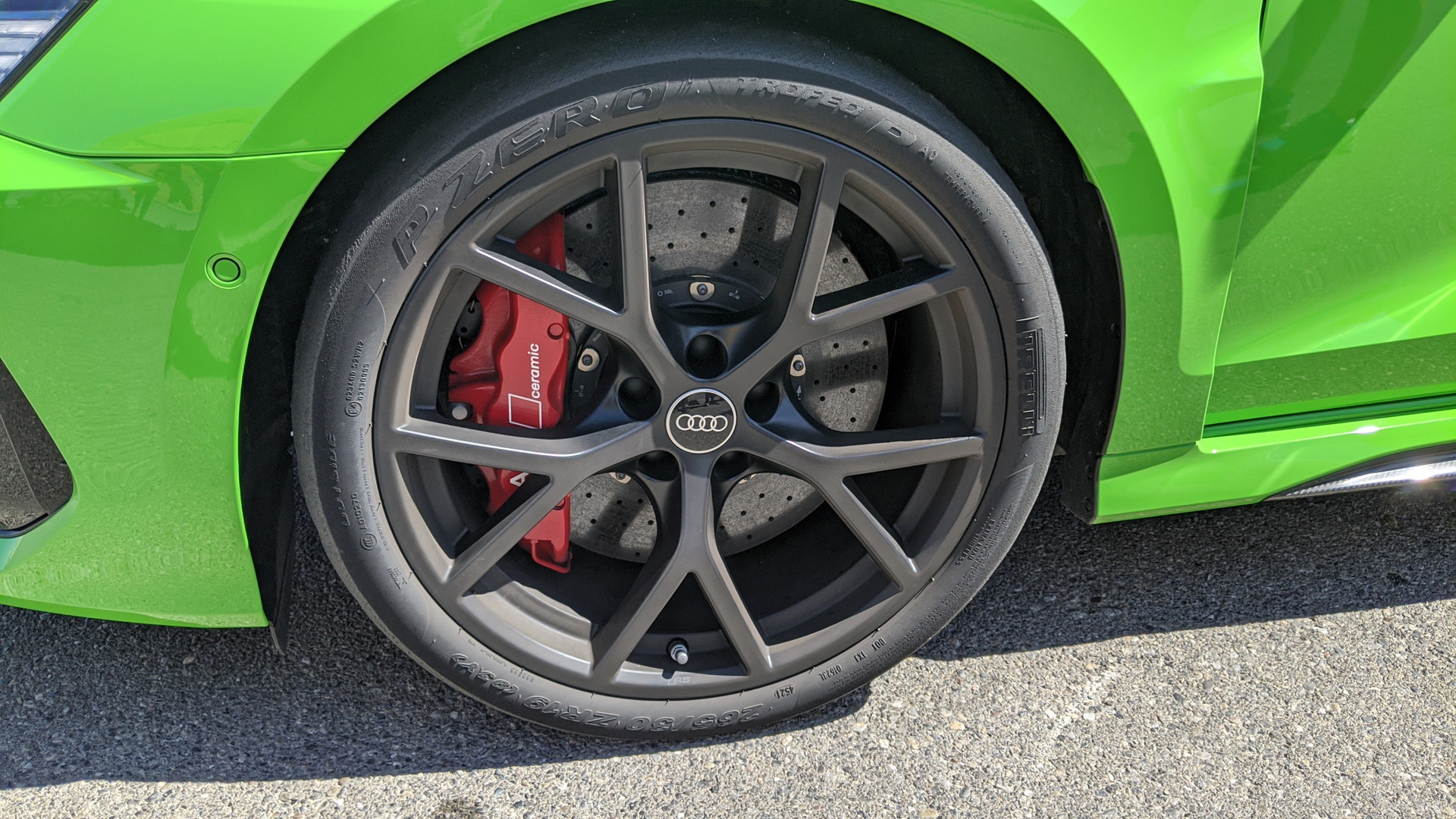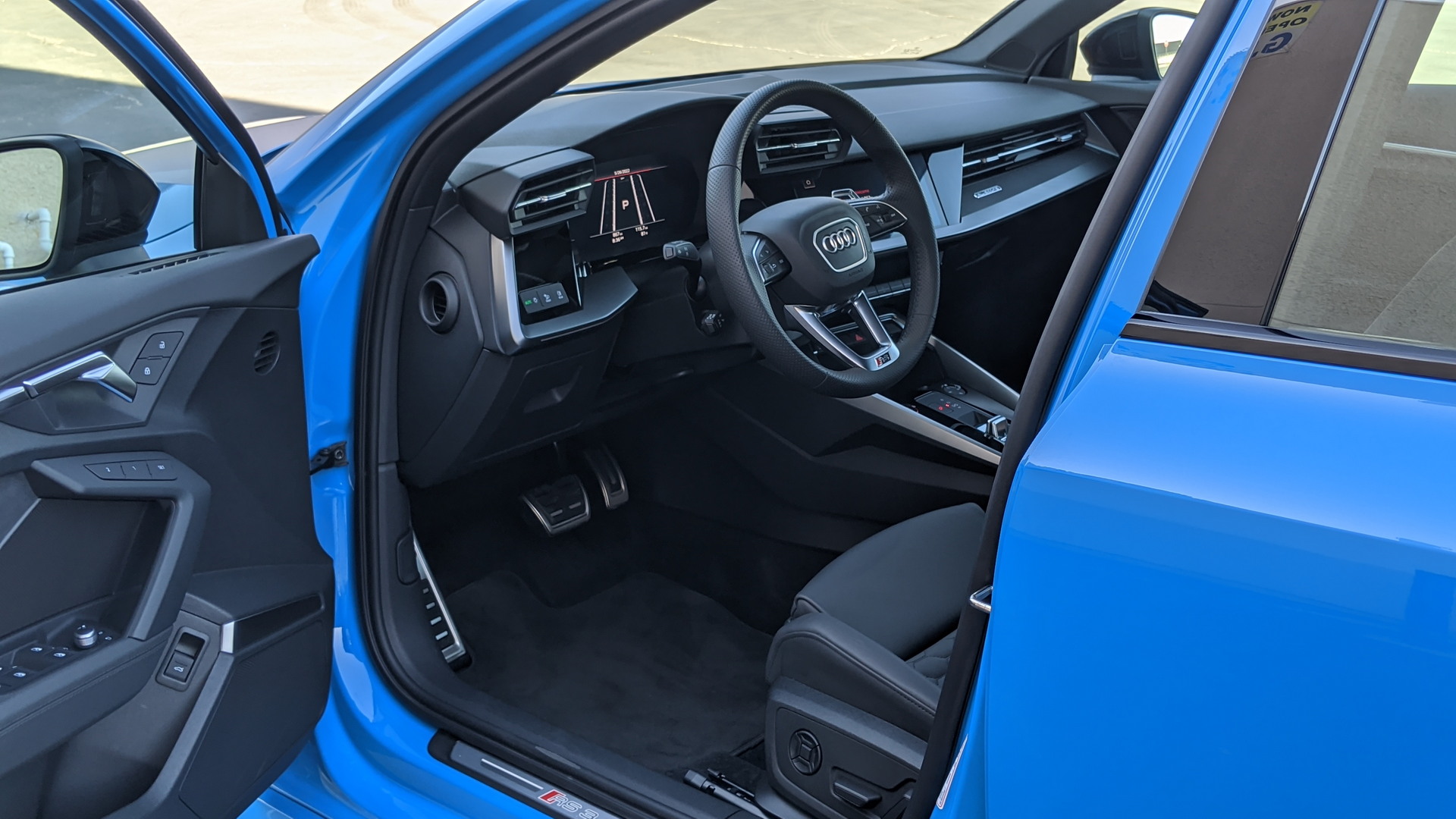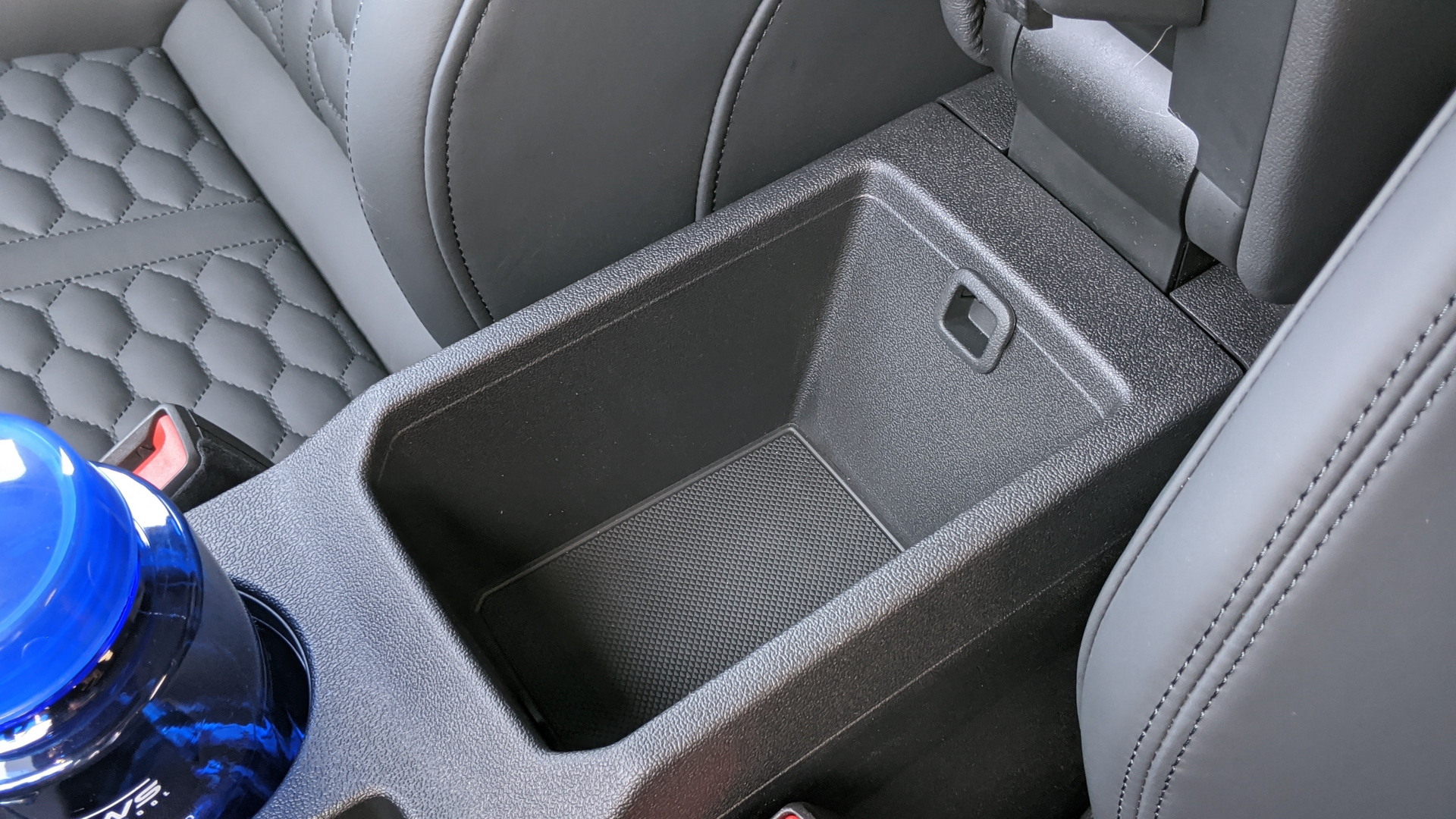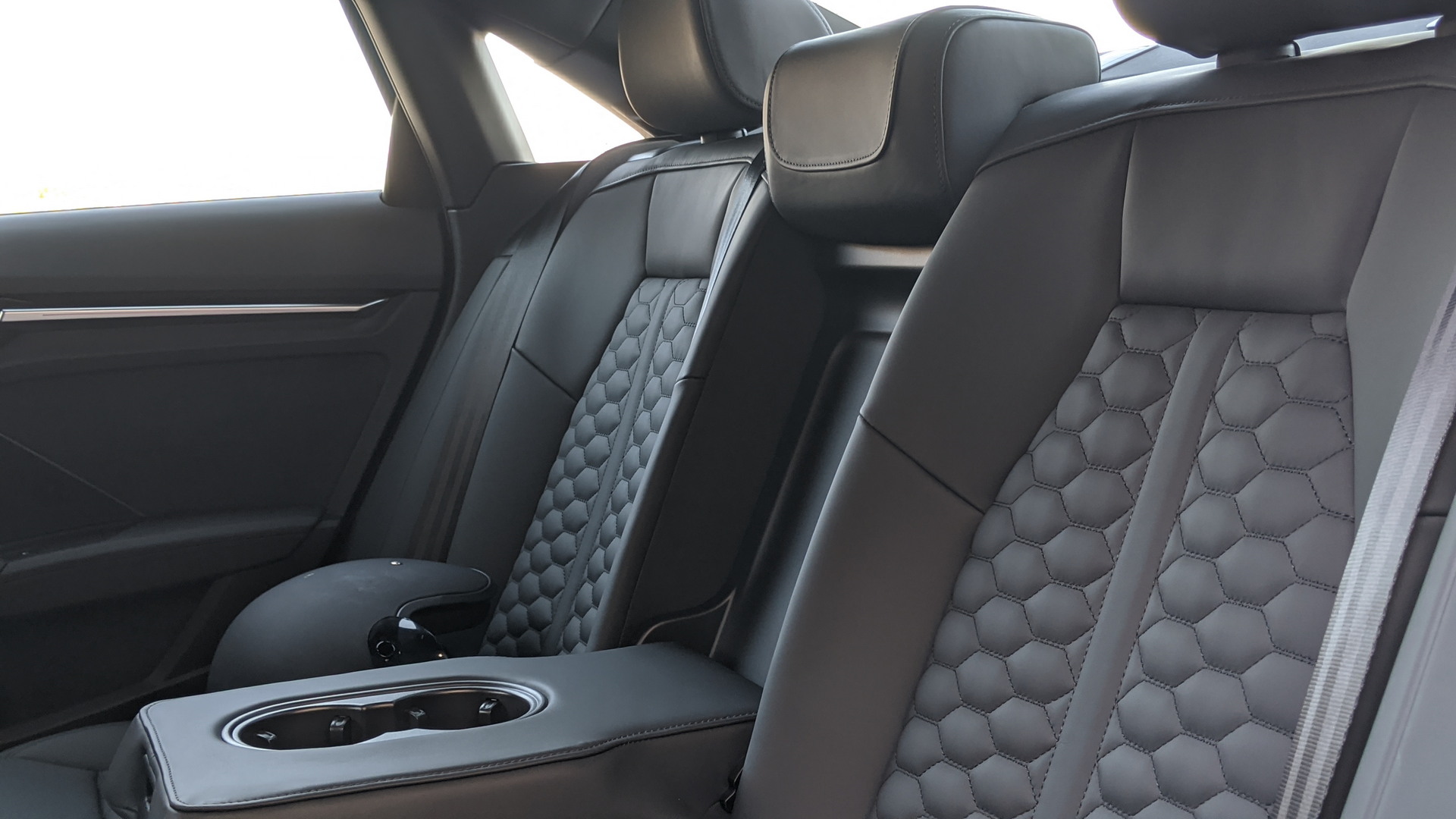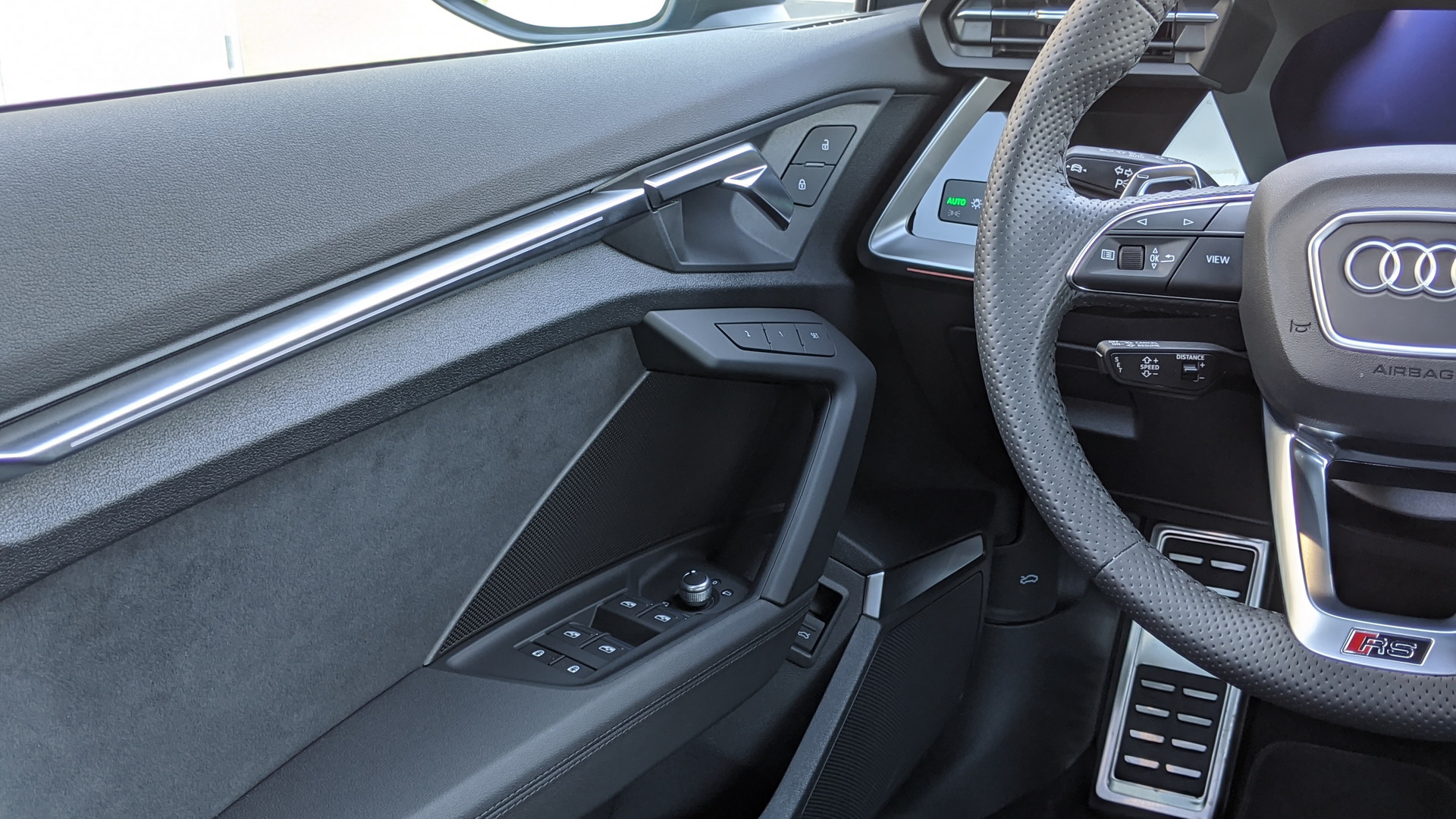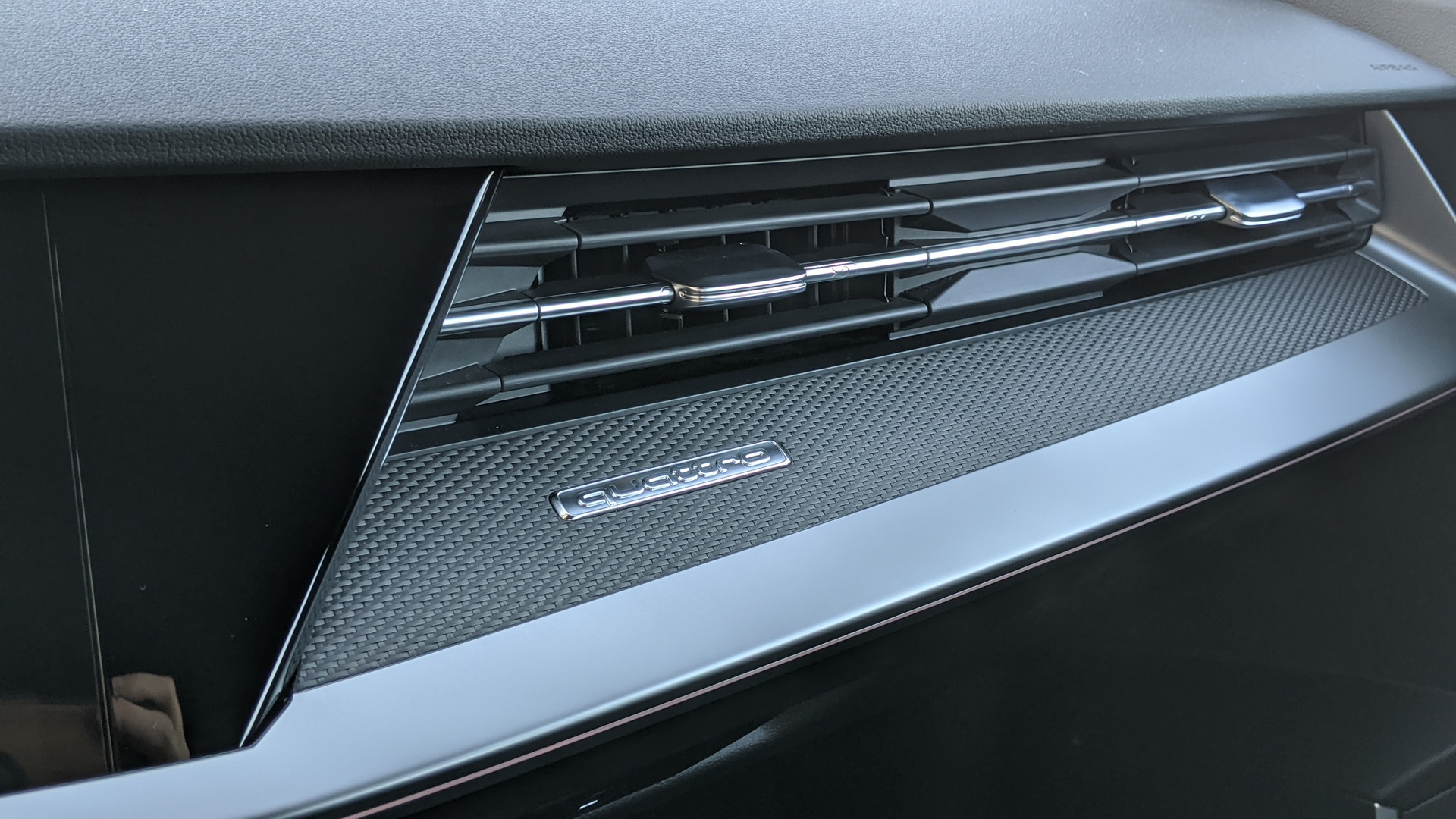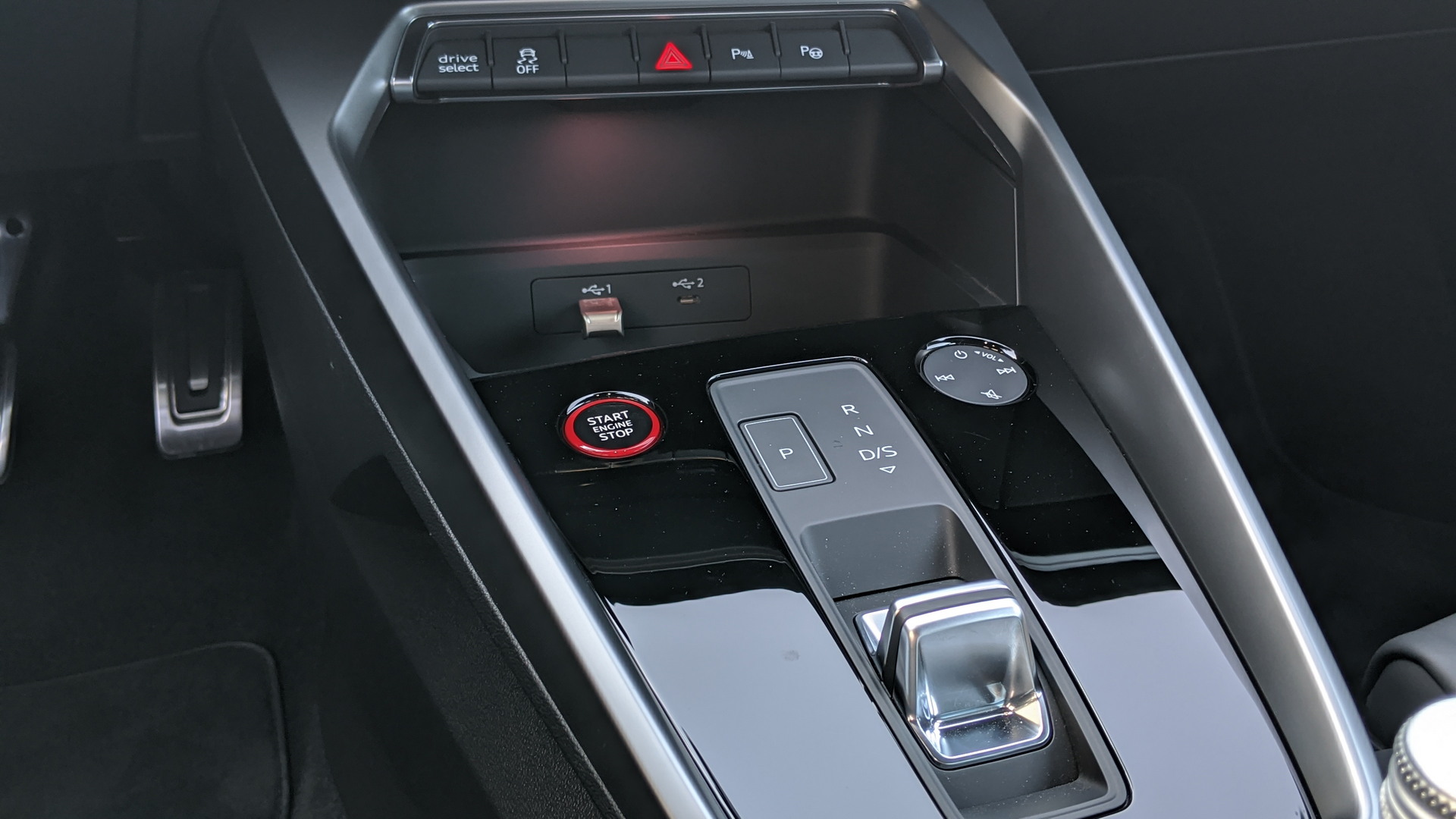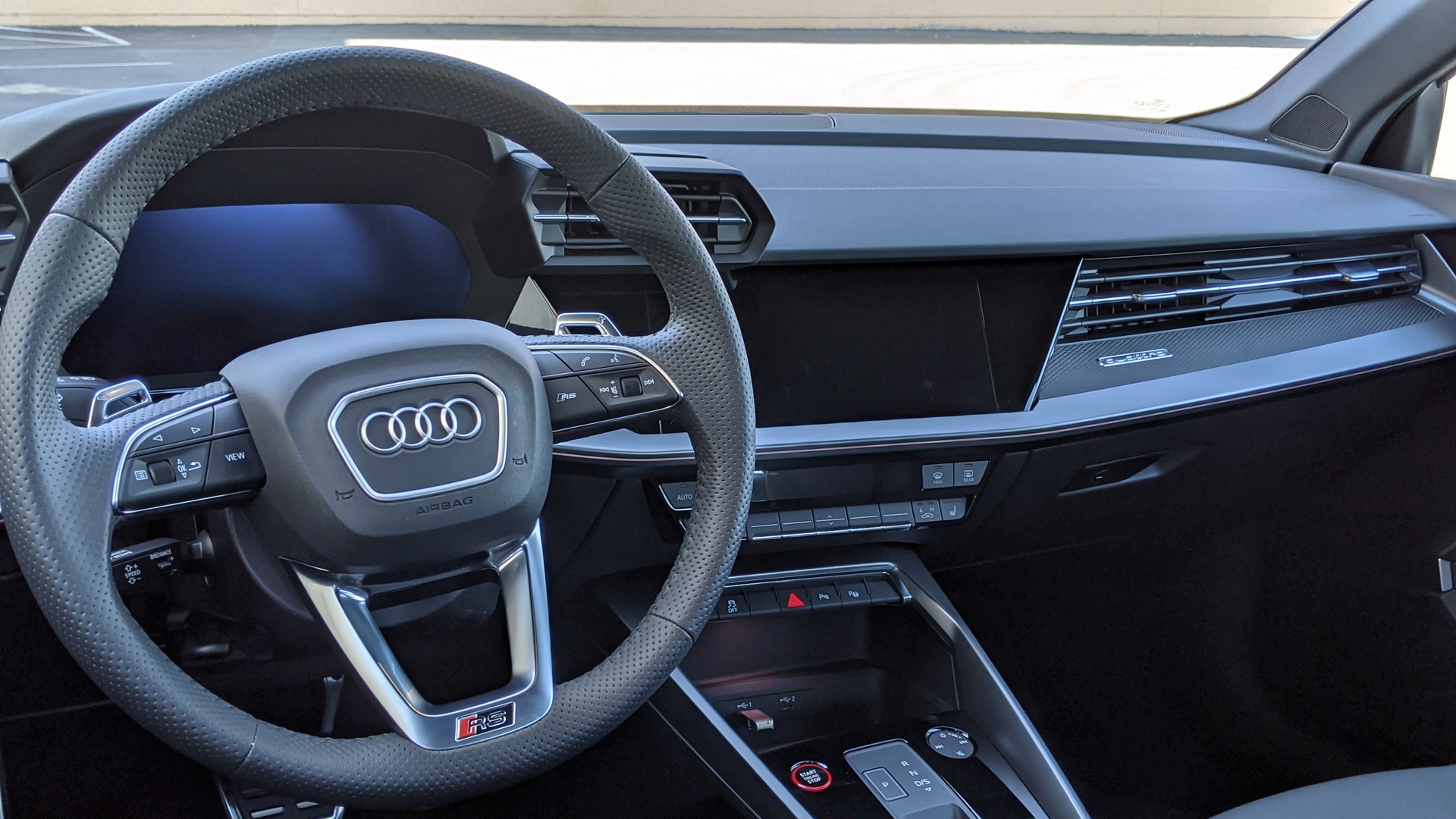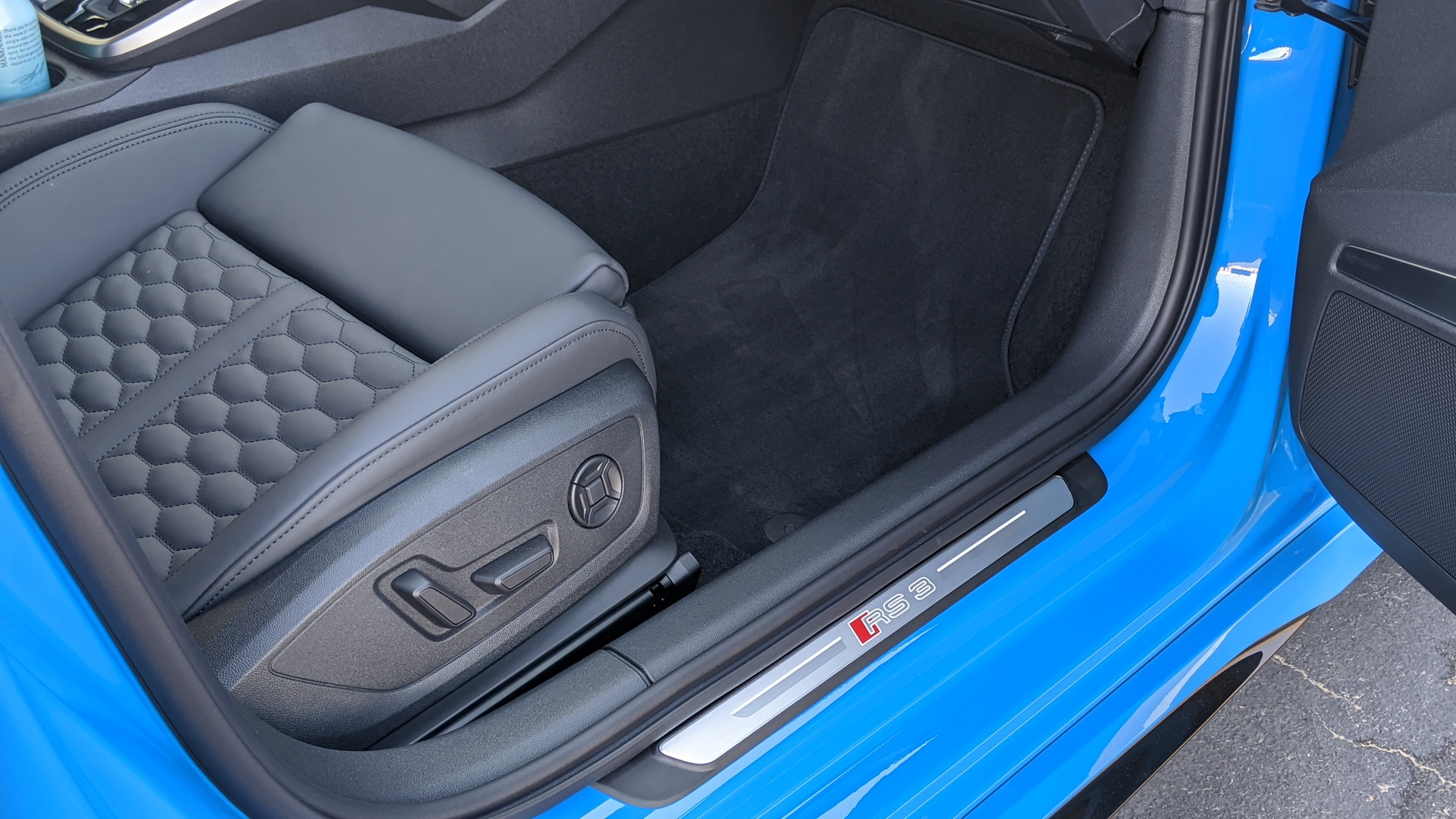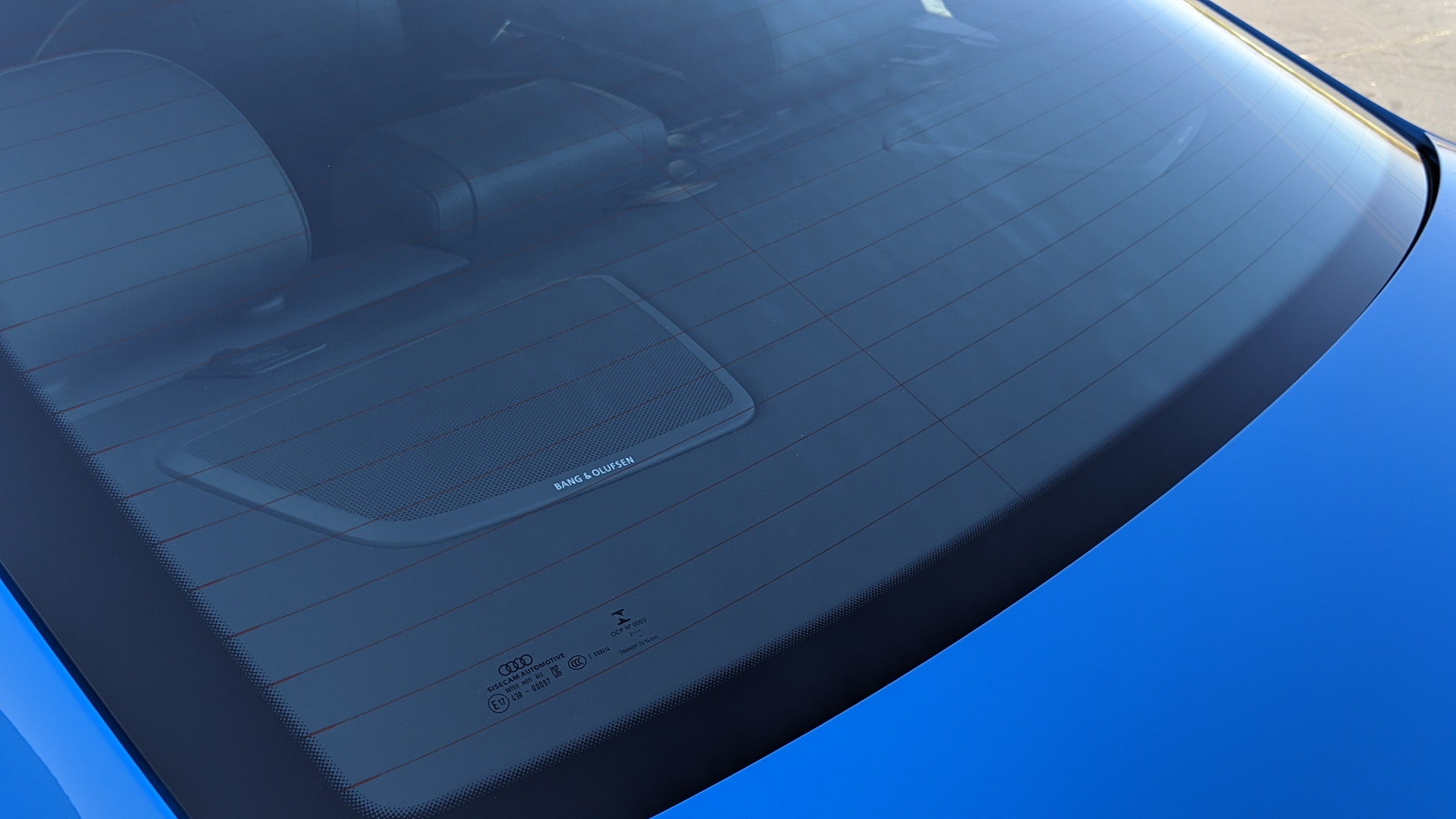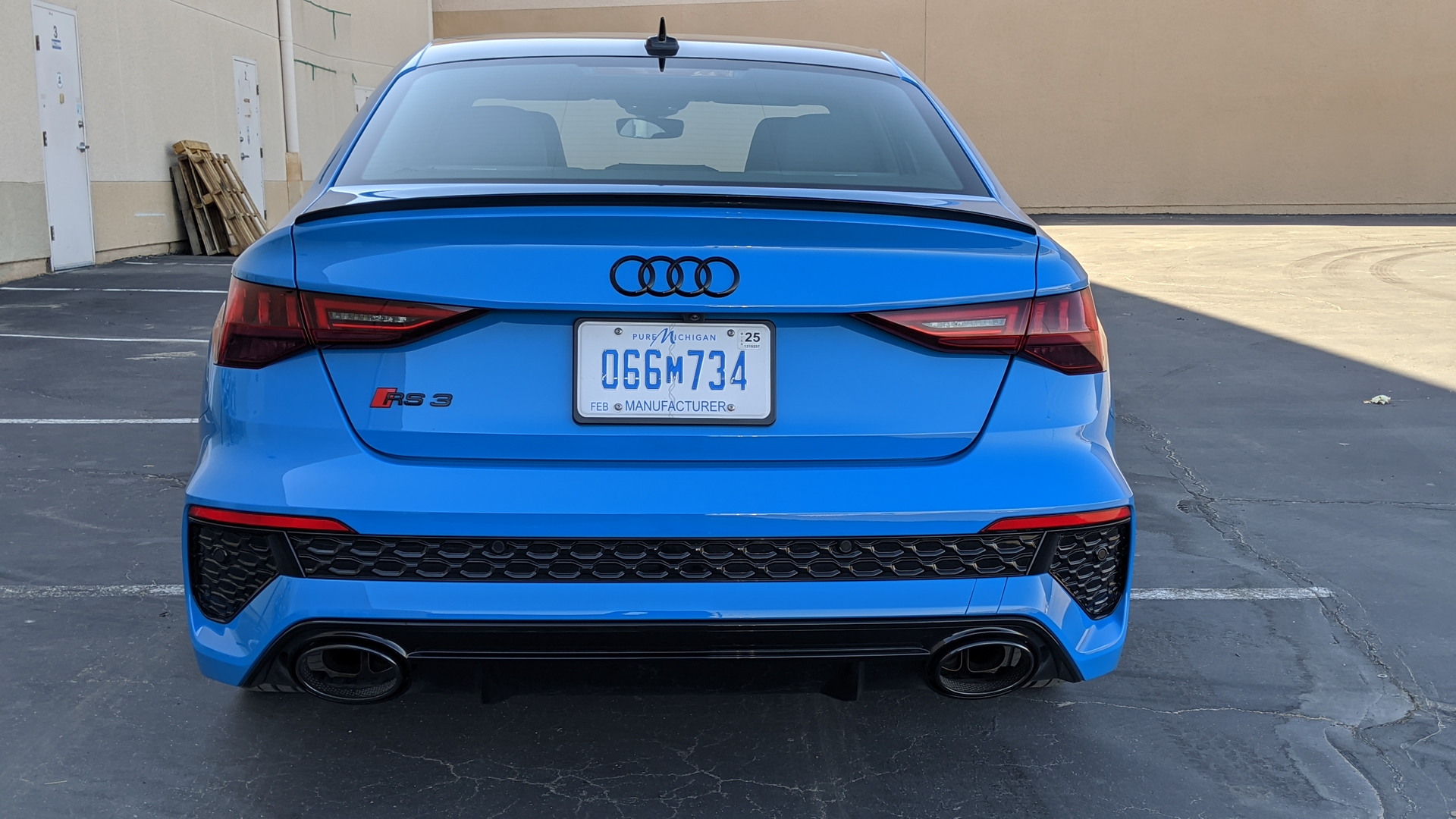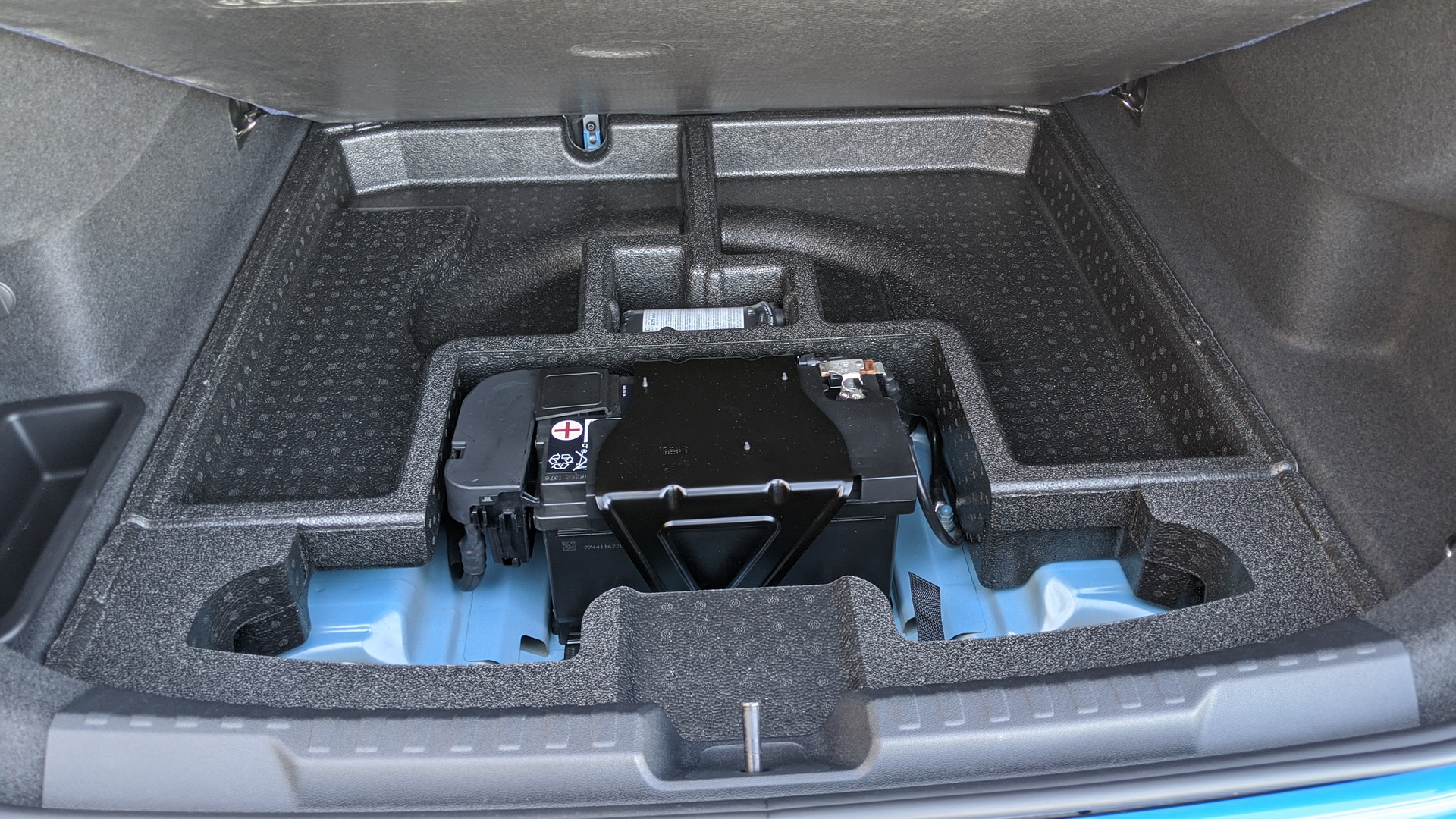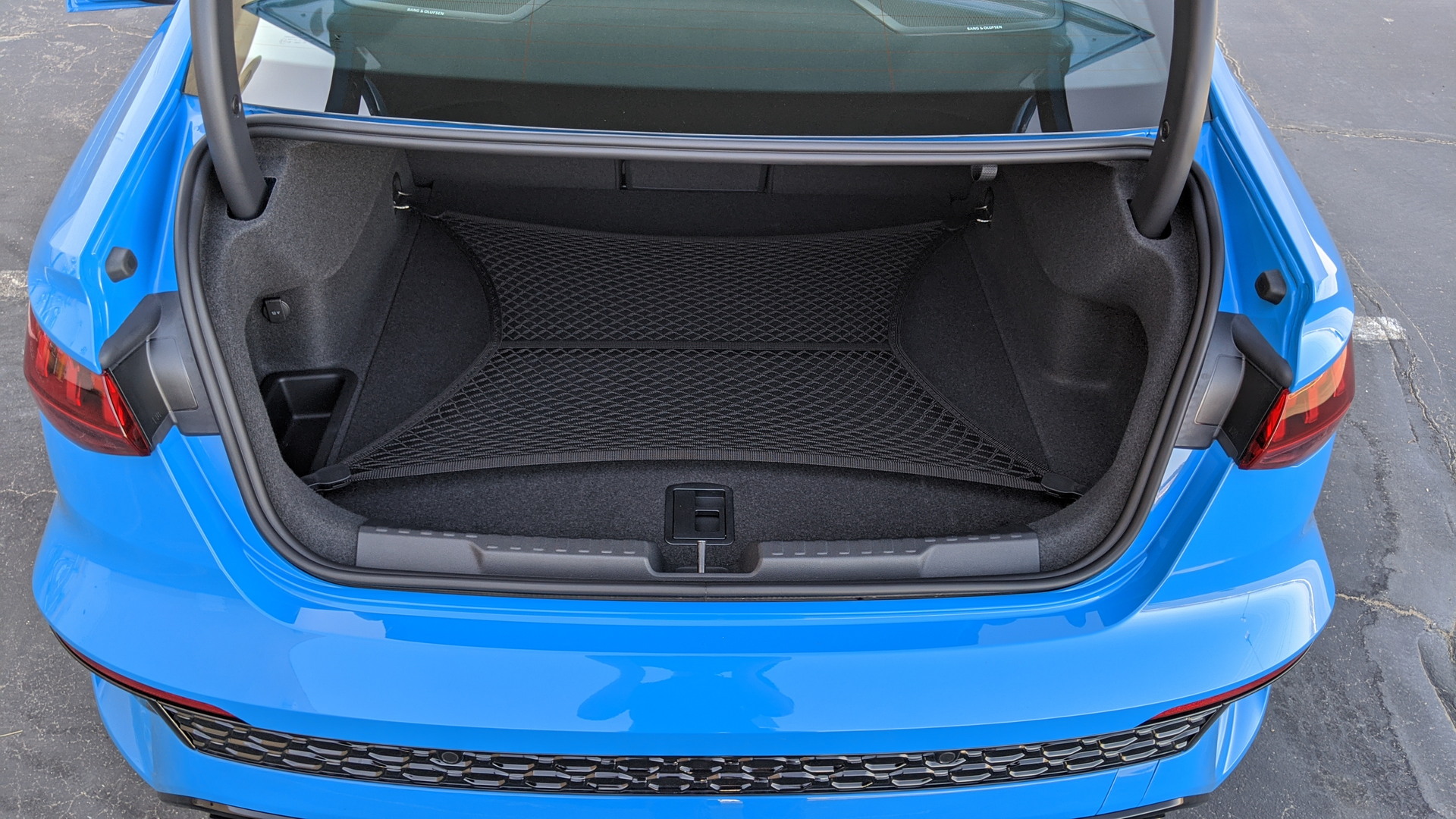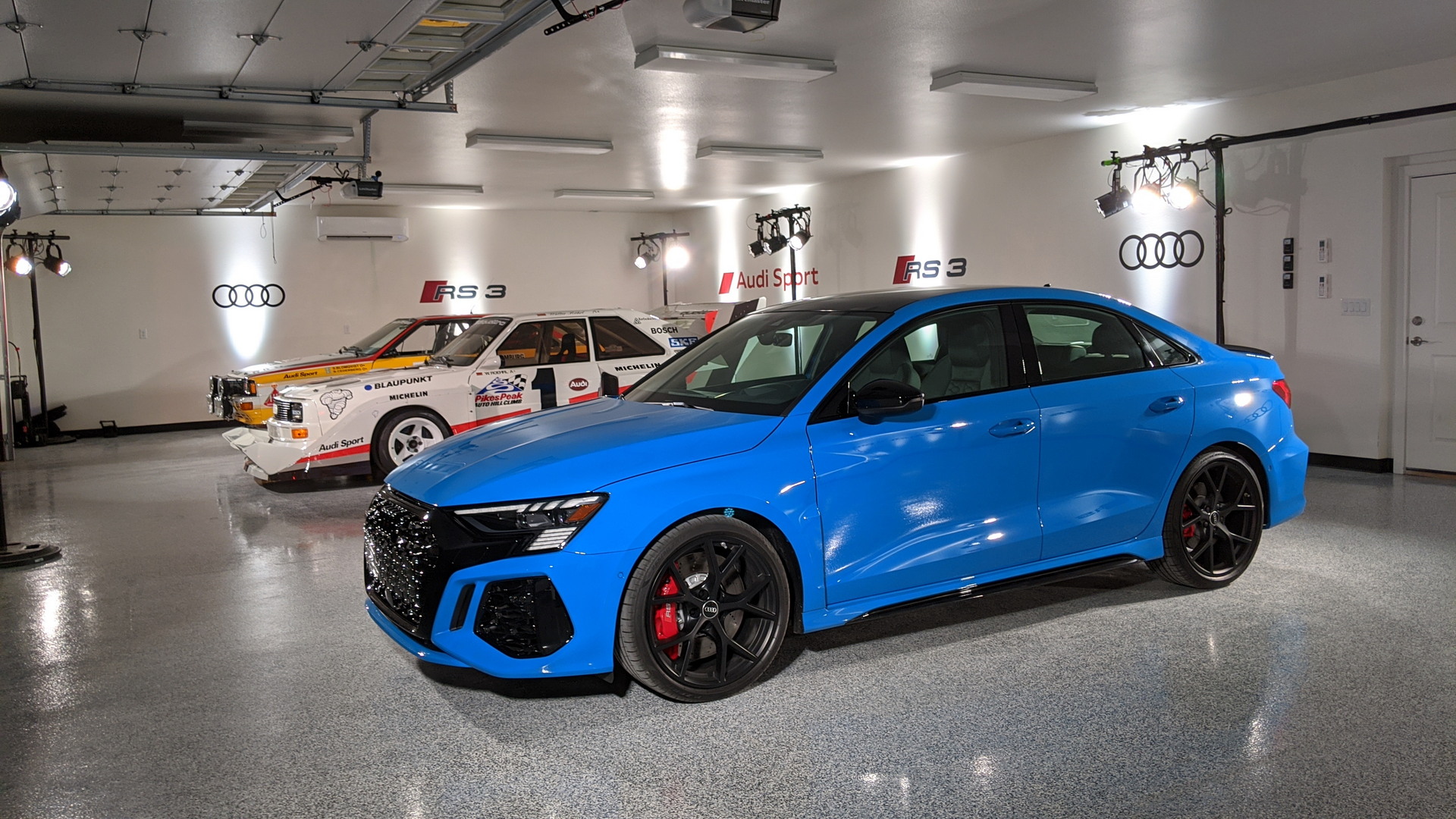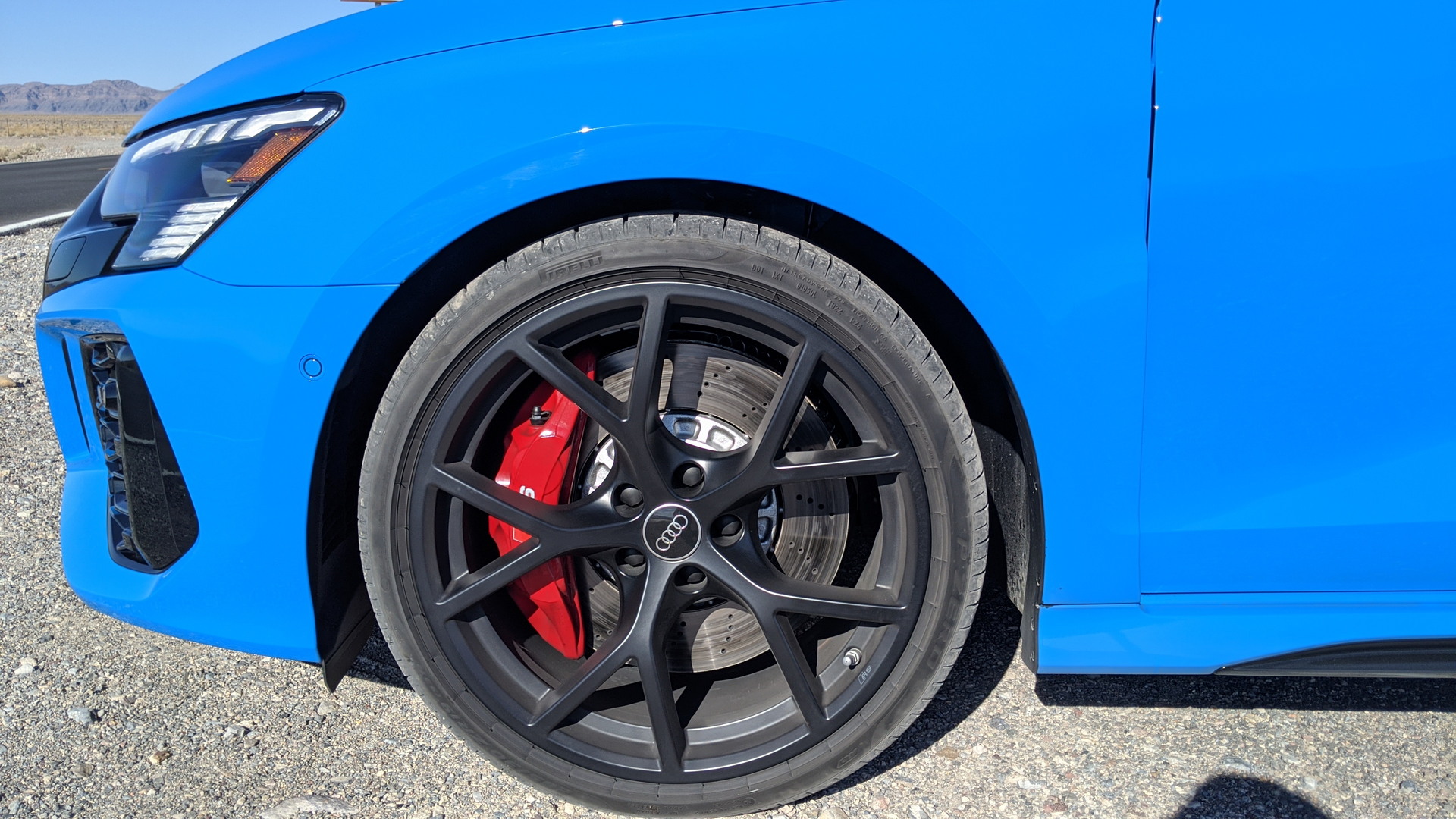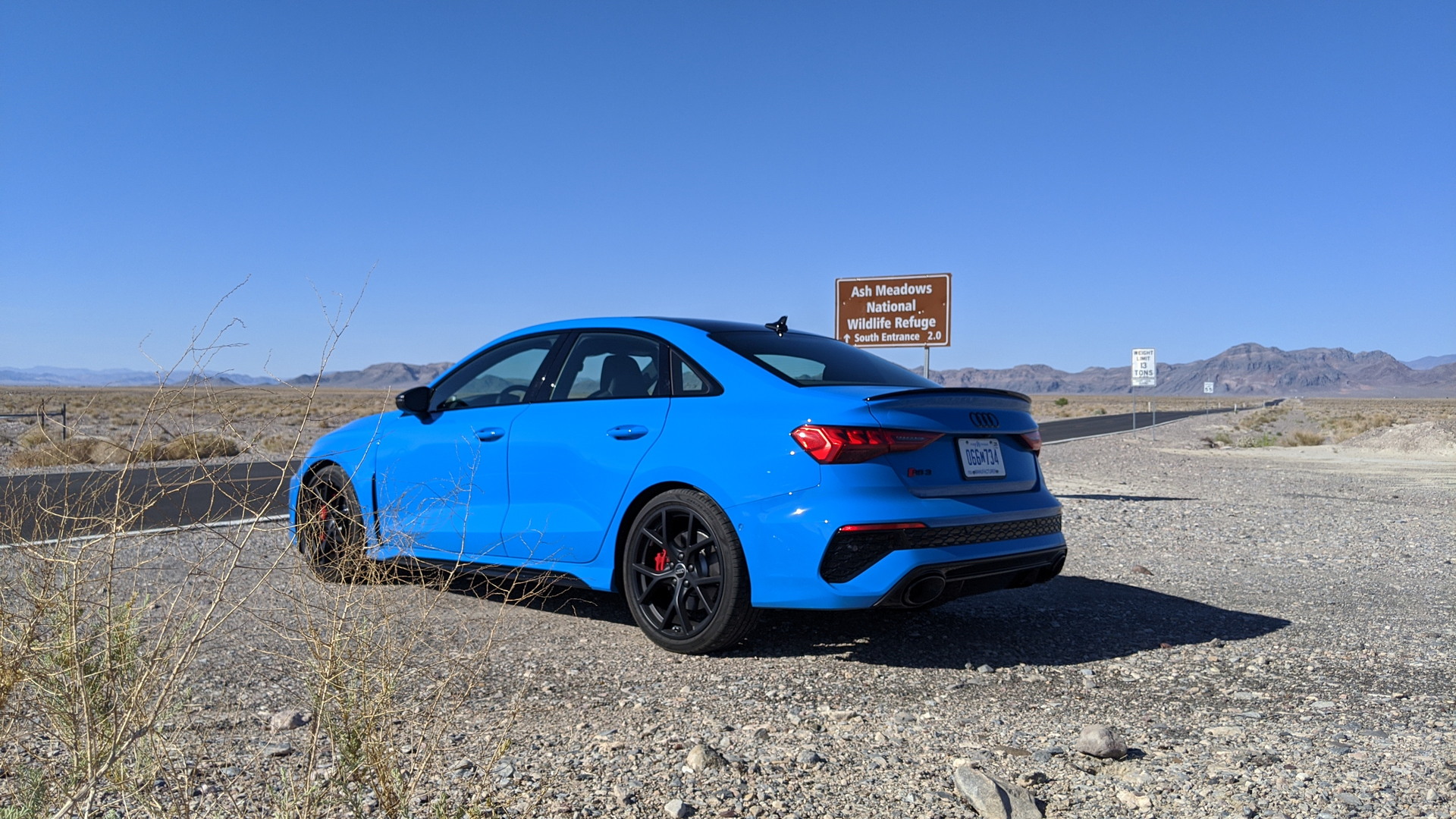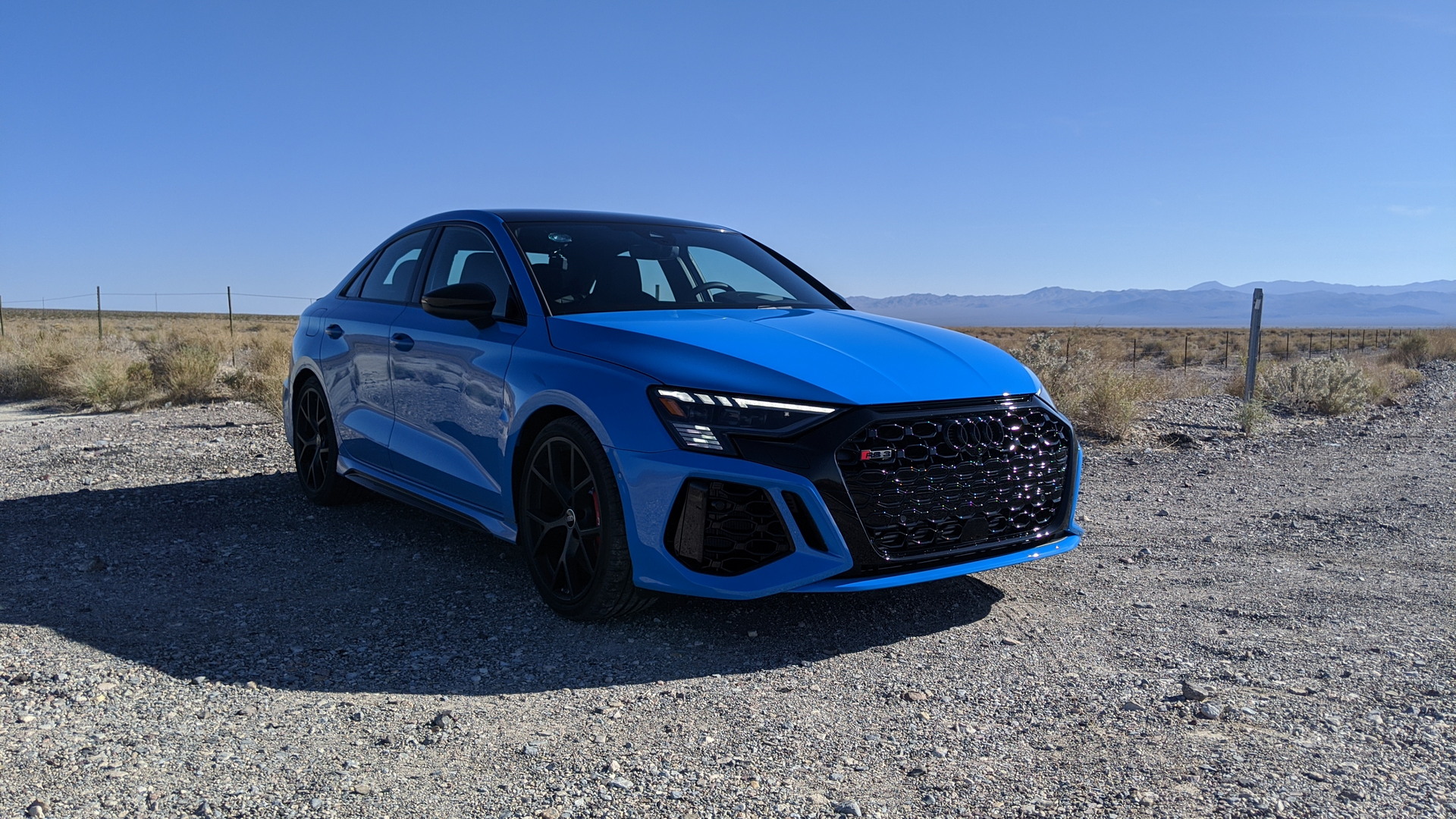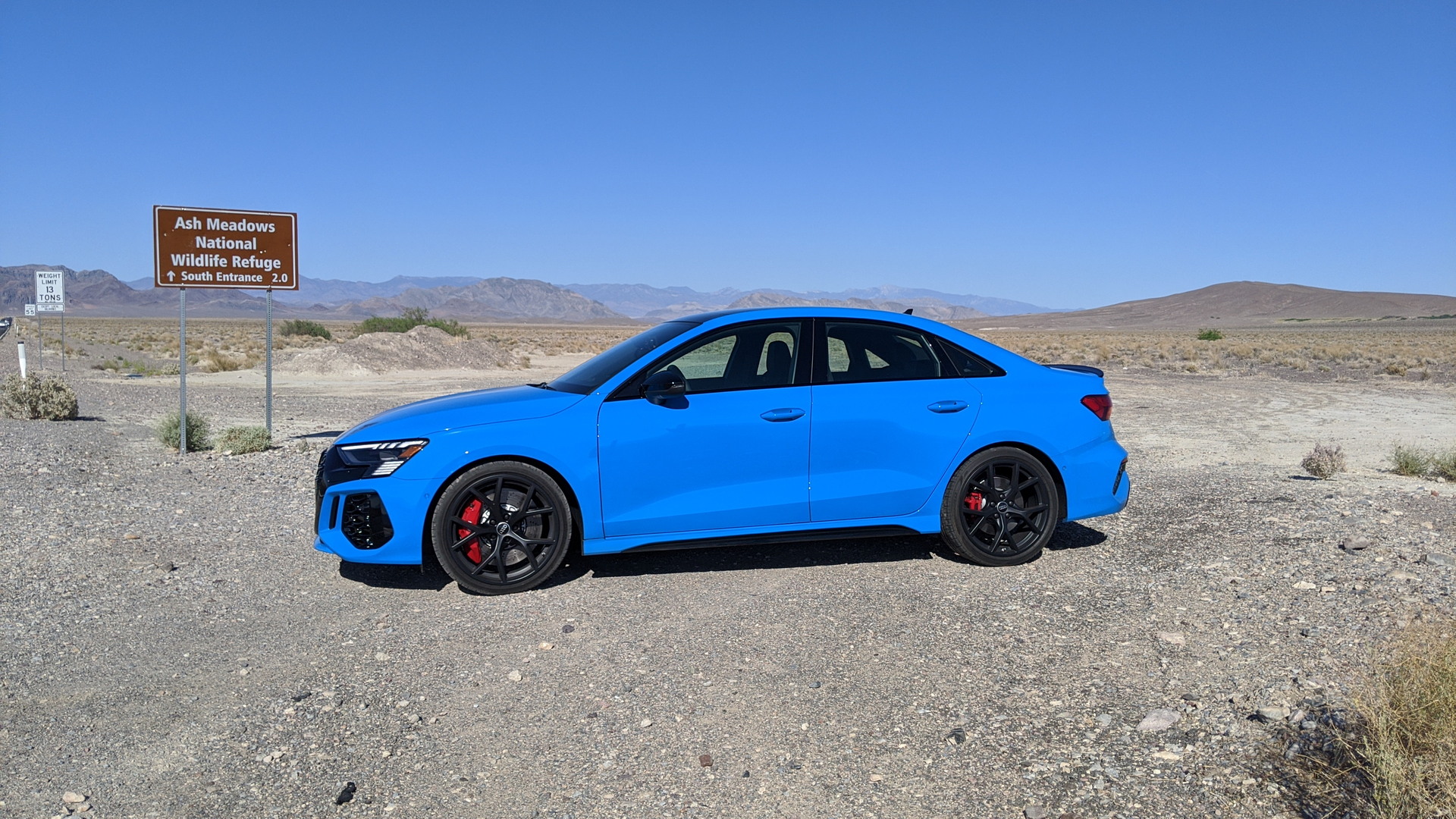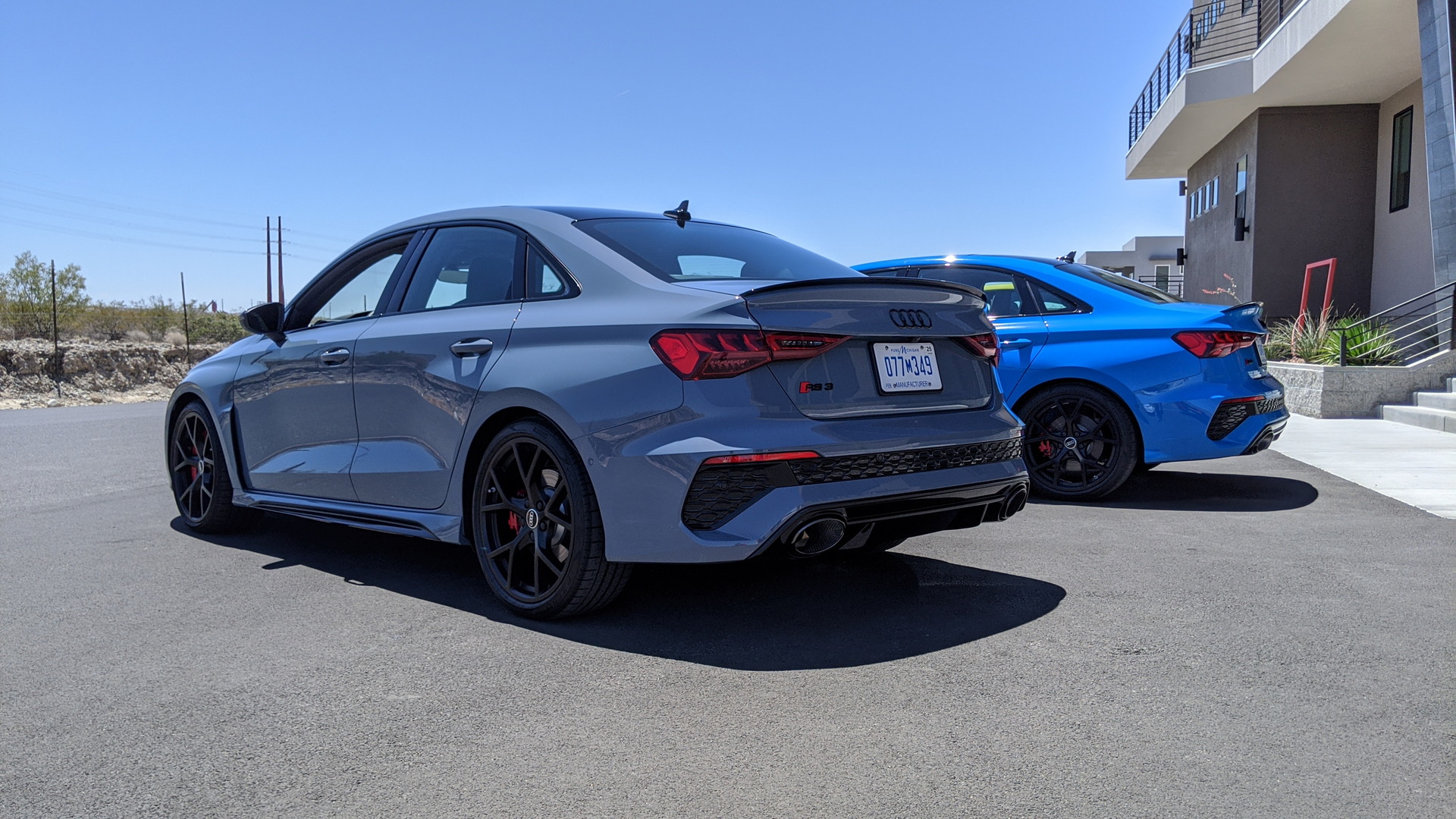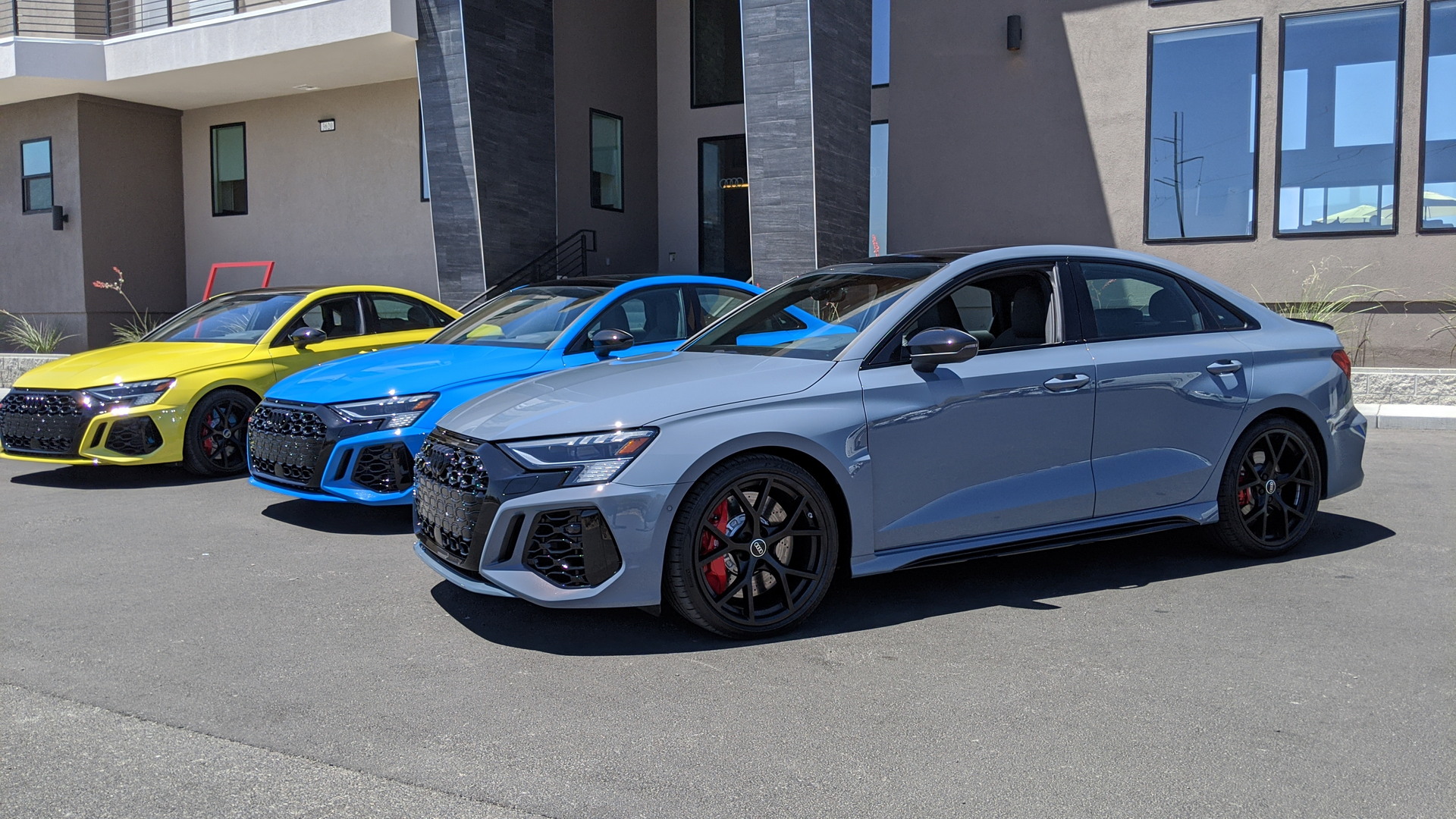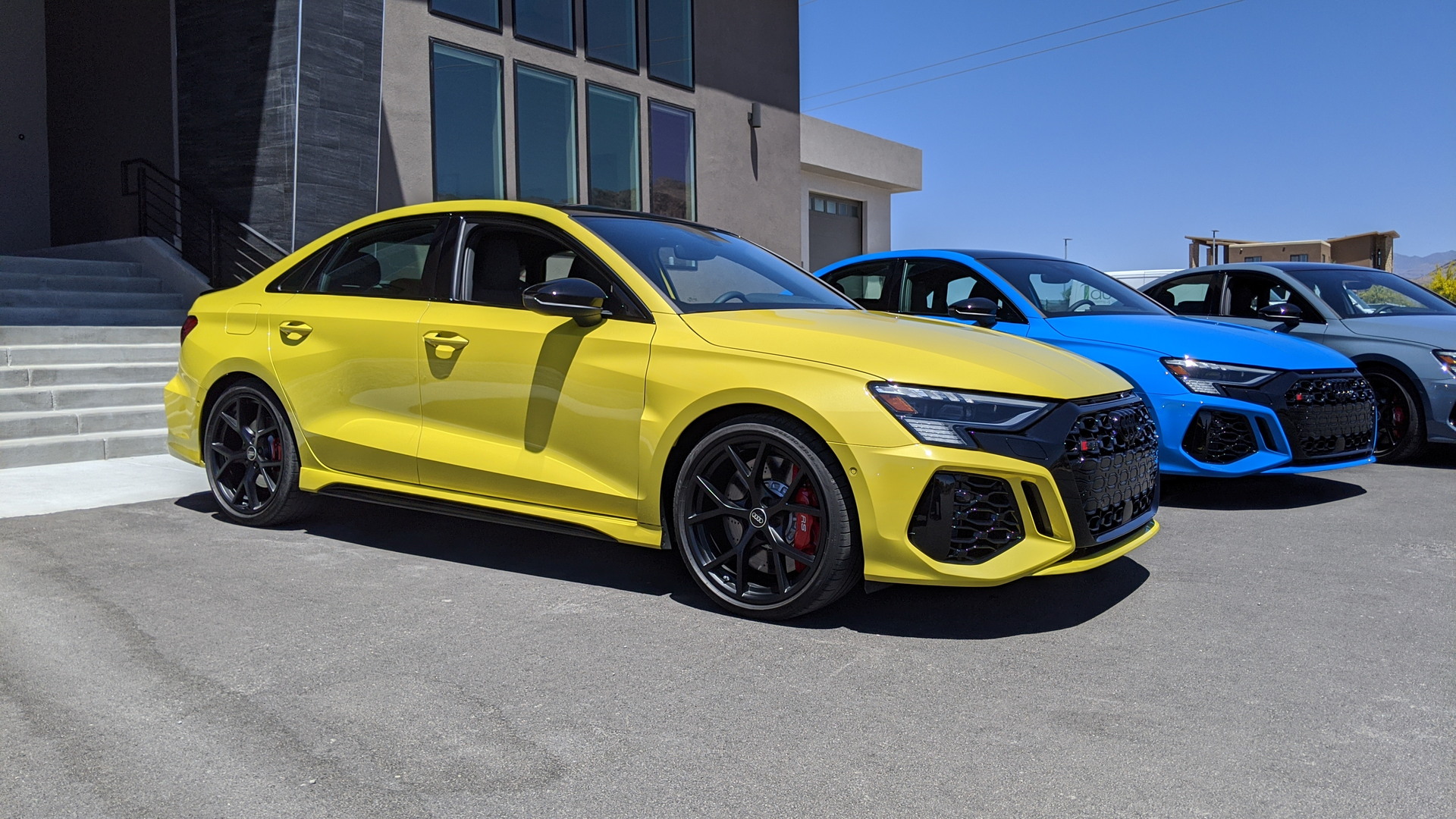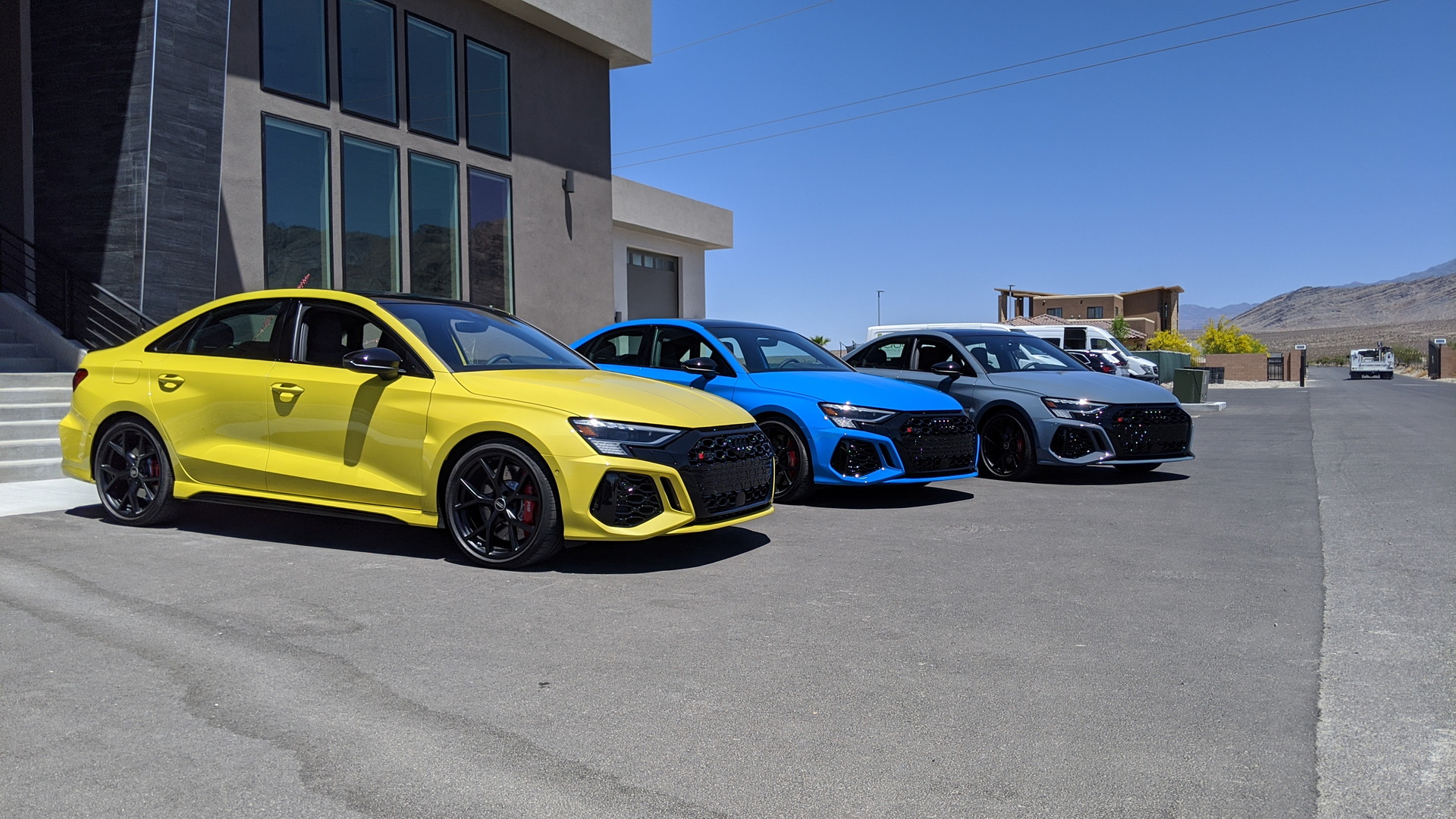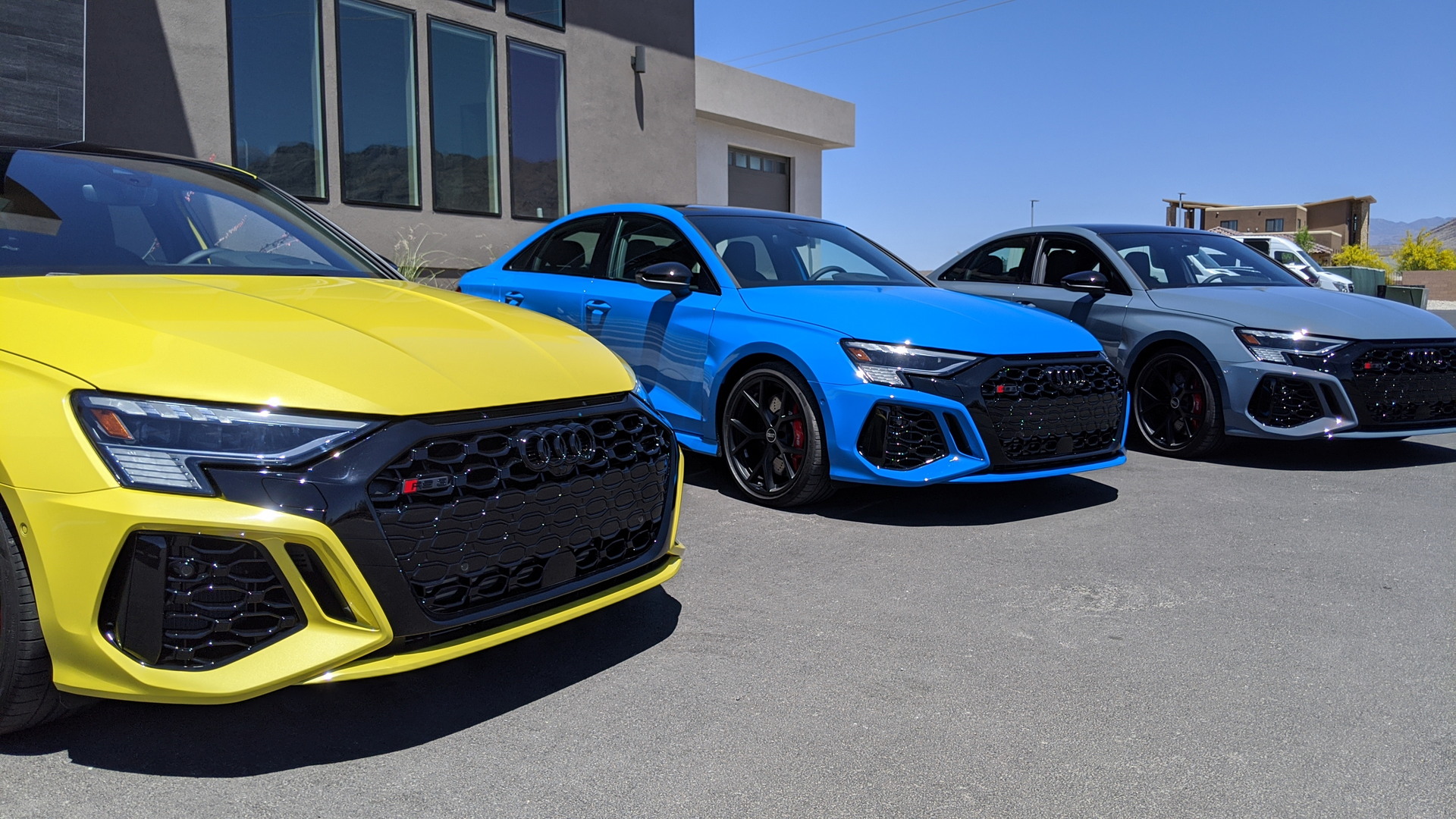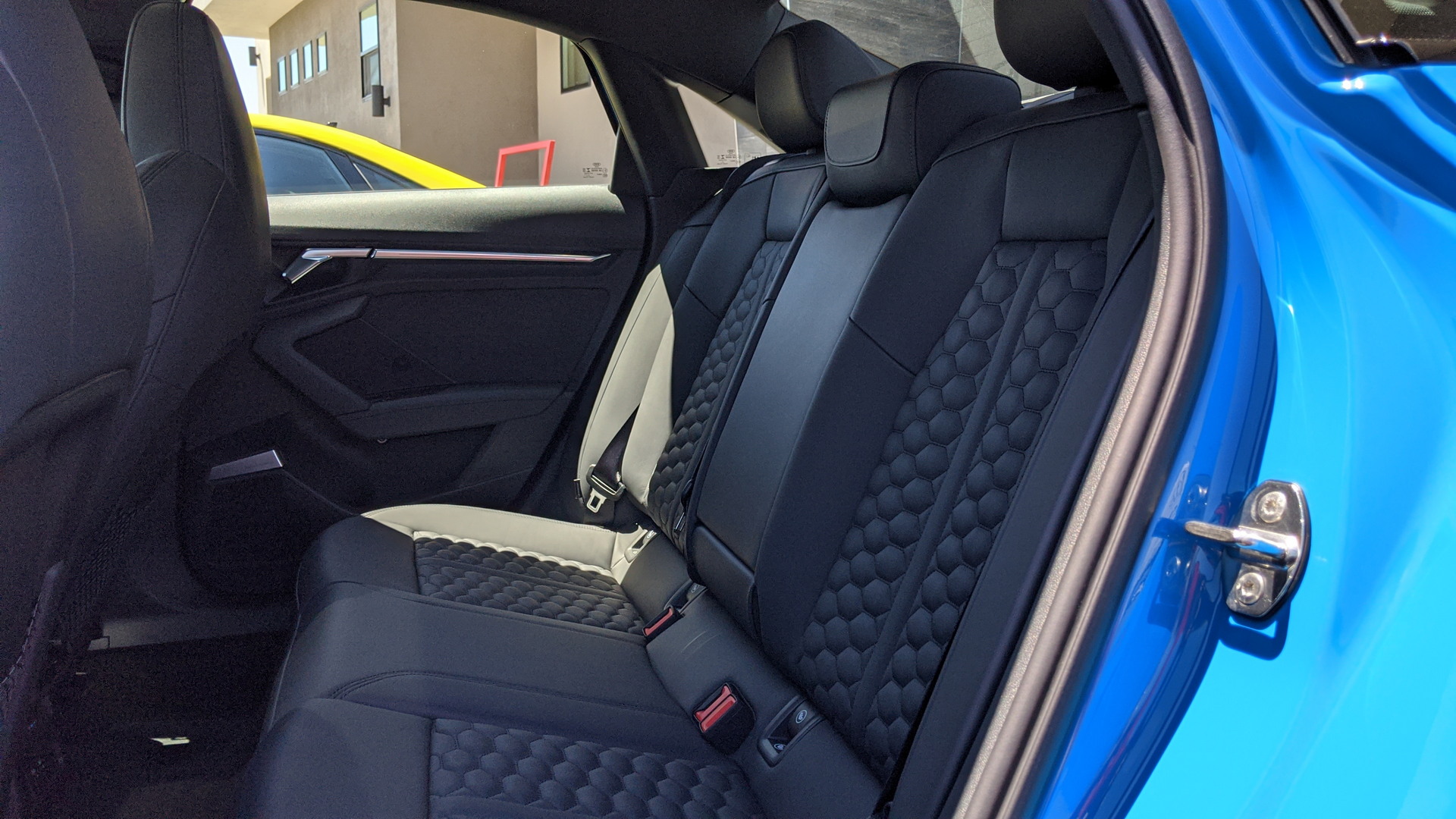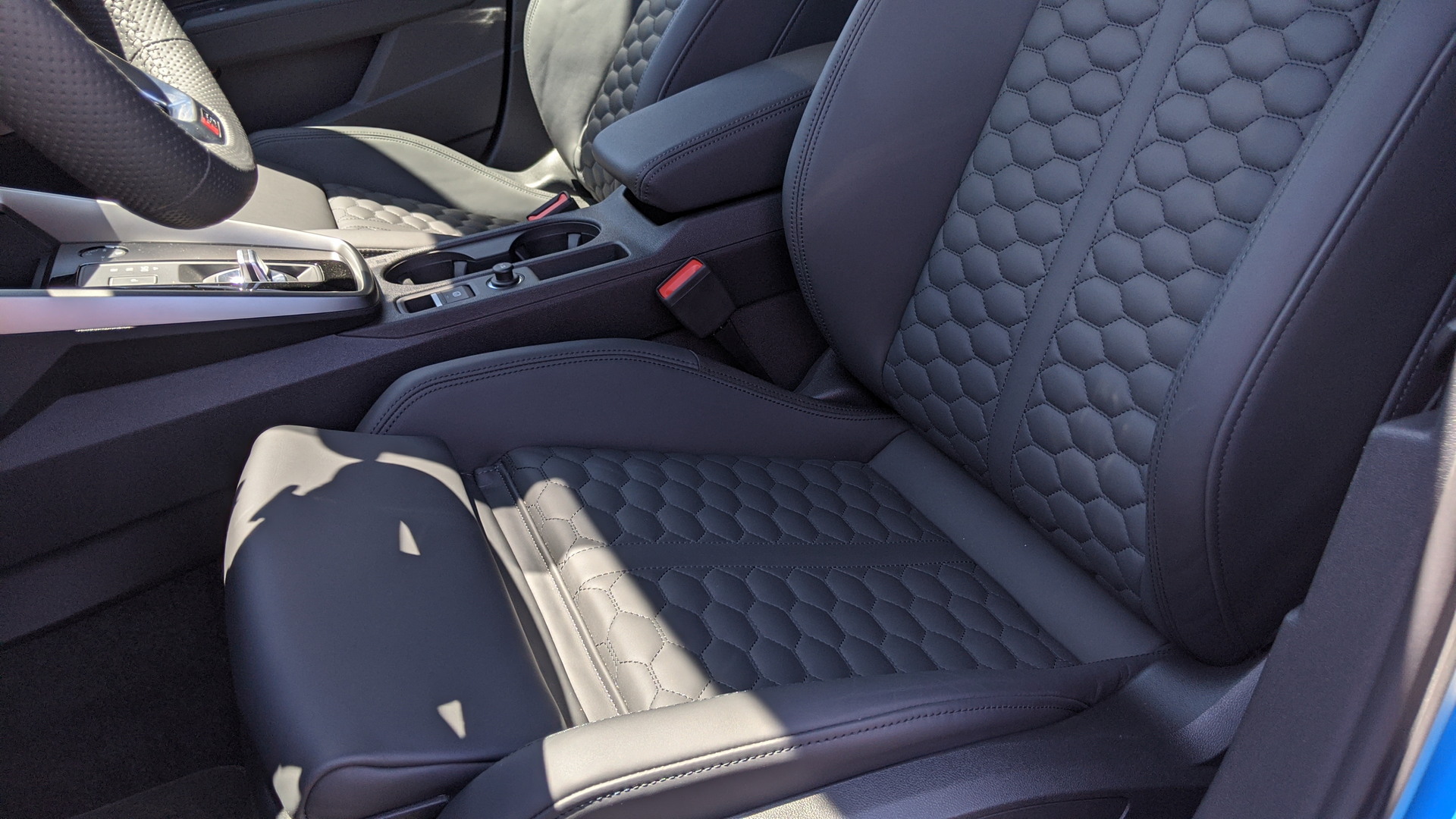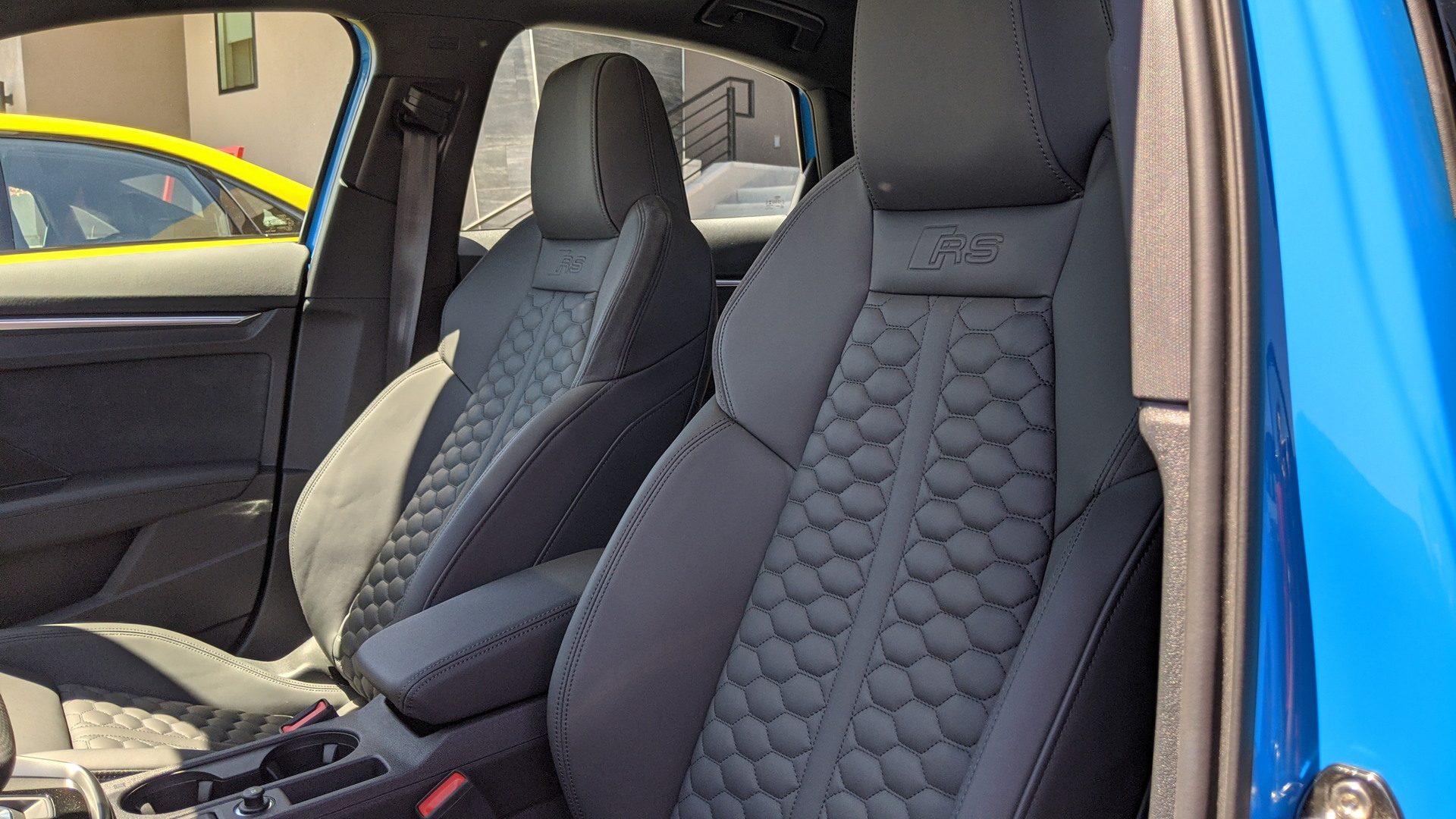Brilliant and brutal are two words that accurately define the new 2022 Audi RS3. After skipping the 2021 model year, Audi has returned the RS brandname to the top of the latest A3 lineup with more power, technology, and an angrier attitude. To find out just how good this new high-performance sedan is, we went out to Pahrump, Nevada to test the RS3 on the road, the track, and the skidpad. What we’ve found is that it can make you feel like a superhero in just about any situation you might encounter.
Audi certainly isn’t shy about this car’s connection to the past. The five-cylinder that resides under the hood of the RS 3 is incredibly rare in the automotive world today. In the past, it’s been the driving force behind historically successful Audi race cars including the 1984 Rallye Quattro A2, the 1987 S1 Pikes Peak hill climb winner, the 1988 Audi 200 used in TransAm racing, and the 1989 90 IMSA GTO race car.
Driven: The 2022 Audi S3 And A3 Are Your Fast And Sensible Baby Executive Sedans
Each of the aforementioned vehicles was in attendance while we had the chance to drive the RS3 and they really put a point on just how much real racing heritage the new model has running through its veins. Even the very first RS model ever sold in America, the RS2 Avant, featured a five-cylinder engine. While little more than the count of the pistons on board is shared between these cars, the same brilliant engineering has allowed each to be brutally fast.
The Foundation Of Every RS3
Quick Facts › › ›
› Model: 2022 Audi RS 3
› MSRP: $60,095
› 0-60 MPH: 3.6-Seconds
› Powertrain: 2.5L Five-Cylinder Turbo / 7sp Dual Clutch / Quattro AWD
› Output: 401 HP (299 kW) & 359 lb-ft (500 Nm)
› EPA: 20 MPG City / 29 MPG Highway
› On Sale: Summer
Every single 2022 RS3 will come with the same 2.5-liter five-cylinder 401 hp (299 kW) engine. It develops 369 lb-ft (500 Nm) of torque and sends it to all four wheels through an updated Quattro system. Those numbers are very marginal improvements over the 2020 year model which made 394 hp (293 kW) and 354 lb-ft (479 Nm) of torque. The EPA says that the 2022 RS3 will get 20 mpg in the city and 29 on the highway.
The base RS3 without any additional equipment or options has an MSRP of $60,095 and that’s including the destination charge. For that price, you’ll get 19-inch wheels, 8-way heated power front sport seats, Nappa leather upholstery, an RS-specific sports suspension, Dynamic Chassis Control, and a new rear differential called the RS Torque splitter. More on that differential later because it’s a game-changer.
Buyers can add a number of options but two, in particular, caught our attention. A Dynamic Plus package is the most expensive of the bunch at $5,500. It comes with ceramic brakes, larger rotors, and a 180 mph top speed. Another box that could be worth checking is the $450 set of Pirelli P Zero Trofeo R tires. For the unaware, that’s a set of nearly slick track-focused rubber that really shouldn’t be used when the surface and weather aren’t optimal for high-speed fun.
An Exterior That Breaks From Tradition
A decade ago, RS models were only barely divergent from their A and S counterparts in terms of exterior design. Only the most hardcore automotive fans could quickly and easily spot the flared wheel arches, the oval exhaust pipes, or the RS-only wheels on cars like the RS6. Even the 2020 RS3 had a fairly sedate exterior design but this new car ditches all of that to be considerably more brash and bold. A new Kyalami Green paint color is an RS-only option and signals the RS3’s Banner/Hulk persona perfectly.
A huge single-frame grille with Audi’s honeycomb styling blends almost seamlessly into updated Matrix-style headlights with LED DRLs. Super-wide fenders stretch out over its 19-inch tires but keen-eyed enthusiasts will notice something interesting here: the front track is wider than the rear. In fact, it’s 2.7-inches (68.5 mm) wider, measuring 62.7 inches (1,592 mm) versus 60 inches (1,524 mm). Moreover, Audi has put wider tires on the front, 265/30/19s compared to 245/35/19s in the back.
The little details have meaningful inspiration across the entire design of the 2022 RS3. For example, the larger grille intakes and the outlets just behind the front wheels are functional and serve to cool the brakes more effectively than in the 2020 car.
The rear spoiler is larger than the one on the S3 and provides better aerodynamics too. Speaking of details, those headlights have a special function that flashes the car’s name on the driver’s side every time you unlock it. That same attention is continued inside the RS3.
A More Focused Interior
While it’s clear that Audi has updated just about every aspect of the RS3 over its 2020 predecessor, the interior stands out as a big change. The honeycomb stitching on the new sport seats is a big improvement over the old car and the experience continues to improve once you’re seated and looking around. Instead of a fairly simplistic dash, the 2022 car has a cockpit that seems to surround the driver.
And that’s appropriate because the brand’s virtual cockpit is now a standard feature. A 10.1-inch MMI touch screen serves as the central infotainment system and is another big improvement. Both feature big bright graphics and nearly instantaneous responses from inputs.
We also love how the virtual cockpit can display two different main features at a time. Gone are the days of needing to leave navigation instructions to check something else. Now, you can keep both on the screen at the same time. Perhaps the only thing we miss from the old car is the physical controls which provided a secondary way to interact with the infotainment system itself. Now, physically tapping the screen is the only way to select a number of options and that steals one’s focus from the road itself.
What isn’t distracting is the ride comfort and quality. The front and rear seats are both nice places to be though we’d recommend only putting shorter folks on the rear bench. Both knee and headroom are lacking in the second row but the front buckets have no such issue. Despite my above-average height, I had no issue getting comfortable in the RS3 even when driving for more than two hours at a time. I do miss those massaging seats from the Sierra AT4X though.
Cargo space is excellent as well with a deep and wide trunk that has more than enough space for a family to go on a weekend road trip. However, we’d love to see a bit more storage in the cabin. Aside from a small cubby between the front seats, there’s not much. Still, there’s only so much that can be shoehorned into such a small platform and the tradeoffs are well worth it in this case.
Poised On The Pavement
The Bruce Banner side of the RS3 is the one that you show to the public. It’s sedate, smart, and stylish even. Unlike some other hardcore pseudo racer trims in the automotive world, “Comfort” mode is actually quite comfortable. In fact, not only is it so relaxed that I think most grandmothers could handle it without issue, but it was so sedate that I couldn’t really stand driving in it after about 15 minutes. Gear changes and throttle inputs are very slow and calm. Steering feedback isn’t numb but it also isn’t very sharp.
It’s just a touch too relaxed for my personal taste but it highlights just how broad the RS3’s abilities really are. Sometimes, the best superheroes are the ones that have a calm and affable public persona. For those moments, the cabin is a warm and comfortable welcoming space, not some blinged-out racecar that your family will never want to go anywhere in. The RS3 can even pull off morning trips to church and fit in with the Saints despite the fact that we all know that it’s a better sinner.
In fact, it’s that ability to support a double life that makes the driving experience in the RS3 so impressive. For the first time, Audi has put an RS button on the steering wheel which encourages a little bit of licentiousness. Once pressed, the car goes into a customizable configuration of exhaust tone, steering feedback, throttle, and gear adjustments among other things.
Two special modes are available as well. RS Performance puts the car in a track-focused setting where understeer and oversteer are minimized. The other, called RS Torque Rear, sends up to 100 percent of the power available to the rear outside wheel to allow the RS3 to do real drifting as though it were completely rear-wheel drive. Additionally, the suspension and the steering tighten up and the exhaust opens up to allow better flow and as a result, the five-cylinder engine is able to produce a raspy and raucous sound all its own.
Hold down the brake, apply copious amounts of throttle, wait for just a moment, and boom, the RS3 is in Launch Mode and just waiting for you to unleash the Hulk. Lift the brake and this small sedan with fairly large practicality will rocket from 0-60 in just 3.6 seconds. The noise it makes harkens back to all of those classic race cars as you accelerate so quickly that only the fastest metal on the road can keep up.
That goes for the sections of the roads with kinks and curves in it too. It might sound strange to have a sports sedan with a wider front track but it works flawlessly in the RS3. The engine is way out at the very front of this car and it’s transversely mounted so wider tires and a trick rear differential are required to make it corner so sharply. Thankfully, that engineering has paid off and it makes it easy to let the Hulk out whenever you feel like it, totally free from the fear of understeer.
The True Test On Track
The big green guy is best when completely untethered from public road limitations though and the RS3 is no different. We were provided with the opportunity to take this sports sedan out on the track at Spring Mountain Motor Resort and Country Club and it was downright impressive. It should be noted though that Audi specifically provided RS3s with the aforementioned Dynamic Plus Package and the Trofeo R tires for our track driving experience. Despite those advantages, it’s clear that the RS3 is a well-balanced brutally fast four-door car regardless of options.
In RS Performance mode the car is devoid of the same electric nannies that try to keep you safe on the street and as a result, the car feels beastly underneath you. As we chucked it into corner after corner it was clear that understeer had no hold on this car that the unknowing will compare to the Golf R. No matter how quickly we pushed into turns it responded by pointing the nose in the direction requested and then by slingshotting out of those turns just as quickly. The only time the tires let go it was the rear ones that gave up first.
While we didn’t get a chance to experience the ceramic brakes on public roads, they did a great job on the racetrack. Stomp on them like you’re holding down the brake button in Gran Turismo and it’ll feel like you’ve hit a brick wall. The seven-speed dual-clutch transmission responds almost as quickly and has a trick up its sleeve as well.
In normal RS Performance mode, the gearbox will shift itself but hold itself at a high rpm and in general do an outstanding job of selecting the correct cog for the situation. Over countless laps I never once found it to be in an incorrect gear or shift too slowly for the situation. What I loved though was that if you pull the left paddle back in RS Performance mode that the transmission will then act like a fully-automated manual transmission.
That means that if you don’t shift it will bang off of the rev-limiter until you do. In addition, it won’t downshift unless you come to a stop or slow down so much that it absolutely must be in a lower gear to continue down the road. It isn’t necessarily faster but it is quite engaging and satisfying to use in practice. Thankfully, we have proof that the RS3 doesn’t just feel fast. It currently holds the lap record at the Nurburgring for compact sedans with a 7:40:748 time.
Finally, Audi put us on a skid pad and showed us how to use the 2022 RS3’s Rear Torque mode which can allegedly put 100 percent of the engine’s power to the rear axle and even more specifically to the outside rear wheel itself. Here’s the specific language Audi uses to describe this trick differential.
“Two electronically controlled multi-plate clutches at the rear axle can convey 0-100% to their respective rear wheel making full variable torque distribution possible.” There’s been a lot of debate about Quattro and how different iterations have applied power but this one is objectively different. Tristen Herbert, one of Audi’s racing drivers and the instructor for our track time, told Carscoops “the debate is over with this car”. And after watching Herbert string together drift after drift forming the letters RS on a skidpad, we believe him.
We even had some time in the car to try and emulate that flourish and found the RS3 to be a highly willing participant. In fact, the only issue I had trying to follow Herbert’s line through the course was the fact that the car was all too willing to slide the back end around before I was prepared for it. Nevertheless, it’s very impressive that this four-door grocery getter can do all that it does whether that be on the track, on the road, or at your local Fast & Furious: Tokyo Drift cosplay event.
Competition For The RS3
The market might be full of segments and subsegments but the 2022 RS3 is sort of in a class of its own. Its closest competitor is the Mercedes-AMG CLA 45 Coupe which, despite its nomenclature, has four doors. It starts at $55,900 and has 382 hp (284 kW), an eight-speed dual-clutch transmission, and all-wheel drive. It does 0-60 in 4.0 seconds and is a bit bigger overall than the RS3. That size not only contributes to its slower acceleration but also to its lower EPA fuel economy estimates of 20 MPG city and 28 MPG highway.
Beyond the AMG, the next closest rival comes from BMW. The 2-Series seems to lose out no matter which kind you choose though. The M240i xDrive Coupe is similarly quick but only has two doors while the M235i xDrive Gran Coupe has RS3 utility while lacking the power and performance to come anywhere close to it. Of course, there’s also the M3 which is still slower than the RS3 and costs about $10,000 more. That might be a small price to pay for the allure of owning a historic badge like the M3, which in any case sits one class above, but we’d save the cash, skip the buck teeth look, and enjoy the extra speed that the RS3 offers.
It too should be said that there are lots of cars that cost less money that can do some of what the Audi does. What separates the RS3 is its unique combination of speed, agility, luxury, functionalism, and comfort in a single package that starts at around $60,000.
Afterfires
As far as performance halo brands go, the RS lineup is one of the most alluring. It includes the R8 supercar as well as the all-electric RS e-tron GT. It also features another Audi that has its own niche, the RS6 Avant. This power-packed RS family begins with the RS3, which is a powerhouse of performance and practicality all by itself. Typically, having a car this capable with the sort of rare powerplant that the RS3 does would mean spending quite a lot more. Just like any other halo car, it’s not perfect but its balanced blend of brute performance and brilliant on-road composure provides its driver with the ability to be unnoticed in traffic one moment before hulking out on the racetrack the next.








